
Apollo 11: The Inside Story
by
David Whitehouse
Published 7 Mar 2019
NASA Charlie Duke, Capcom for the landing. To his left are Jim Lovell and Fred Haise. NASA Flags and cigars in Mission Control as Apollo lands on the Moon. NASA Buzz Aldrin starting his descent to the lunar surface, as photographed by Neil Armstrong. NASA Buzz Aldrin on the lunar surface. Neil Armstrong can be seen in his visor. NASA Neil Armstrong back in the Lunar Module after the first moonwalk. NASA The ascent stage of the Lunar Module, ‘Eagle’, returns to the Command Module, ‘Columbia’, 21 July 1969. NASA The Apollo 11 crew in the mobile quarantine facility in which they spent two and a half days en route from their recovery ship USS Hornet to the Lunar Receiving Laboratory in Houston, Texas.
…
‘When you added up what we would gain, as opposed to what we would lose, the decision was pretty easy.’ On 24 March 1969 Neil Armstrong was told that his mission, Apollo 11, would be the first to attempt a lunar landing. He said: ‘During the flight of Apollo 8 I had three or four meetings with Deke Slayton about, first, would I take the third one down to the surface and then we had a lot of talks about who might be available and be right to be on that crew, that sort of thing.’ The crew of Apollo 11 – Neil Armstrong, Edwin ‘Buzz’ Aldrin and Michael Collins – were introduced to the press on 9 January 1969 and immediately the assembled reporters got down to the big question, ‘Which of you gentlemen will be the first man to step out onto the lunar surface?’
…
Aldrin talked to his colleagues but for some that was seen as lobbying behind the scenes to be first. Gene Cernan says: He came flapping into my office at the Manned Spacecraft Center one day like an angry stork, laden with charts and graphs and statistics, arguing what he considered to be obvious – that he, the lunar module pilot, and not Neil Armstrong, should be the first down the ladder on Apollo 11. Since I shared an office with Neil Armstrong, who was away training that day, I found Aldrin’s arguments both offensive and ridiculous. Ever since learning that Apollo 11 would attempt the first Moon landing, Buzz had pursued this peculiar effort to sneak his way into history, and was met at every turn by angry stares and muttered insults from his fellow astronauts.

"Live From Cape Canaveral": Covering the Space Race, From Sputnik to Today
by
Jay Barbree
Published 18 Aug 2008
In the lunar dust they placed mementos for the five astronauts and cosmonauts who had lost their lives, and Neil Armstrong read the words on a plaque mounted on Apollo 11’s descent stage: “Here men from the planet Earth first set foot upon the moon, July 1969, A.D. We came in peace for all mankind.” Neil Armstrong and Buzz Aldrin plant the American flag on the moon. (NASA). The two astronauts gathered fifty pounds of lunar soil samples and rocks, and once everything was loaded for the flight back to Earth, they shut down the first moonwalk. Twenty-one hours after Neil Armstrong and Buzz Aldrin landed on the lunar surface, they fired Eagle’s ascent engine and left the moon.
…
The way it was working out, Neil Armstrong would command Apollo 11 and Pete Conrad would be at the helm of Apollo 12. Deke had long ago made the decision to have either Neil or Pete land the first lunar module on the moon. Neil was learned, experienced, and had the moxie to get out of a harrowing situation. As NASA’s own test pilot, he had survived potential tragedies time and again. Apollo 11 would get the first shot, but the odds were very high something would go wrong and 11 would have to abort. Deke realized there was no other feasible plan, and he called Neil Armstrong and crew into a private room.
…
“Damn right,” Scott Carpenter said, slamming a fist on the table. “It’s gotta be Deke.” They stood solid. Stonewall Jackson would have been proud. NASA knew the Mercury Seven could not fly all the orbital flights in the upcoming Gemini program. New pilots had to be recruited for the astronaut corps. The agency went back and hired Neil Armstrong, Frank Borman, Charles “Pete” Conrad, James Lovell, James McDivitt, Elliott See, Tom Stafford, Ed White, and John Young. They had just missed the Mercury Seven cut, and with the exception of civilian Armstrong, they were all military. They were immediately dubbed the Gemini Nine. NASA had also come to realize it needed someone to manage the astronauts’ office, to select flight crews, make assignments, plan and schedule training time, and be a link between the pilots and management.
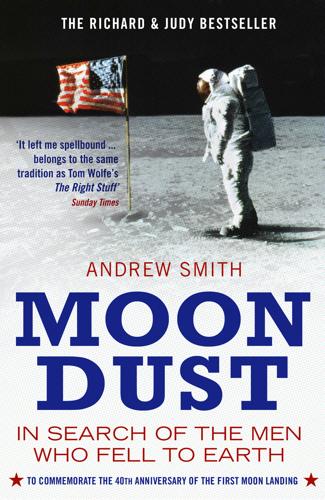
Moondust: In Search of the Men Who Fell to Earth
by
Andrew Smith
Published 3 Apr 2006
And what more evil trick could this all-seeing, all-powerful and yet somehow utterly clueless leviathan play than telling us that they – that we – did this magical thing, waltzed into the stars and set down on the Moon, when we never actually did? From this point on, I see a fresh continuity in the story of Apollo. Sibrel claims that “Neil Armstrong started shaking like a leaf when I asked him to swear on the Bible,” but I’m not sure whether to believe this. I absolutely do believe him, however, when he admits that yes, that right hook from Aldrin back in LA really did hurt. When all other argument is exhausted, conspiracy believers inevitably draw your attention to one thing: the sullen, peevish withdrawal of Neil Armstrong from public life. It seems doubly strange to me, then, that only days after finally chasing down Sibrel, I find myself en route to Portugal and a rare opportunity to see the first Moonwalker speak – even though that’s not why I’m going.
…
There was another, bigger, surprise waiting for me when I got back from Portugal. Before I went, I’d finally made myself write to Neil Armstrong, expecting no more than a polite brushoff. Now, trawling through my e-mails, I came across a message from an unfamiliar address which suggested another piece of spam. I opened it and giggled like a schoolboy. The name at the bottom hit me first, sitting solid and square, as if carved on a tablet of stone, avatar of an alien world. Neil Armstrong. He told me that he received lots of requests from people writing books and making films, but he could see that this was a different kind of story about Apollo.
…
There were a few official celebrations, but most of the accompanying newspaper articles and feelgood TV news items seemed unsure of how to present Apollo after thirty years of neglect. With a new millennium dawning, perhaps our first and only embrace of another world felt, if anything, more distant than it does now. Even the man who led that hazardous trip, Neil Armstrong, offered nothing that might clarify, angering townsfolk in his home town of Wapakoneta, Ohio, by failing to turn up at a party thrown in his honour. Legend has it that he went flying at the local airfield instead. Thus, by 2002, it appeared to me that the most remarkable thing about these men was the extent to which they and their farout story had been forgotten ” not least, up to that point, by myself.

Chasing the Moon: The People, the Politics, and the Promise That Launched America Into the Space Age
by
Robert Stone
and
Alan Andres
Published 3 Jun 2019
It was so sensitive that it picked up the motions of Neil Armstrong turning over in his sleep within the lunar module following the moonwalk. The iconic image of Aldrin on the lunar surface, with Neil Armstrong reflected in the mirrored visor. Because Aldrin was assigned to take photographs of the landscape and the condition of the lunar module, there are few good images of Armstrong standing on the Moon. For my mother, who awakened her ten-year-old son in the middle of an English midsummer night to watch Neil Armstrong and Buzz Aldrin make history as they walked on the Moon.
…
An hour and forty minutes after an Atlas missile launched an Agena docking vehicle into orbit, two rookie astronauts, commander Neil Armstrong and pilot David Scott, headed into space aboard Gemini 8. Unlike what had happened a few months earlier on Gemini 6, the Agena worked perfectly this time. When Gemini 8 was in its fourth orbit, Armstrong closed in and maneuvered near to the Agena. A member of Astronaut Group Two, Armstrong was already a famed X-15 rocket pilot, and his unusual status as one of the few civilian astronauts set him apart. Neil Armstrong’s view as he moved Gemini 8 toward the Agena target vehicle above the Pacific Ocean before accomplishing the first successful docking of two spacecraft.
…
Fellow astronaut Alan Bean regretfully told him the tragic news from the Cape and informed him that he had been assigned the solemn task of officially notifying Ed White’s wife, Pat, of her husband’s death. It was a duty that each astronaut knew he might have to perform someday. Anders changed his clothes and arrived at the Whites’ house ten minutes later. The Whites lived next door to Neil Armstrong, who was away in Washington for the signing of the Outer Space Treaty. When Anders arrived, Pat White was on the porch, talking with Armstrong’s wife, Jan. Had Neil Armstrong called her from Washington and asked her to be there as well? Anders wasn’t sure, but as he walked up to the house and looked into their faces, he received an impression that Jan Armstrong had a sense of the dreaded news he was about to relay.
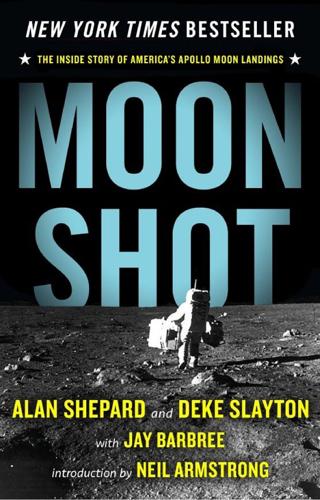
Moon Shot: The Inside Story of America's Apollo Moon Landings
by
Jay Barbree
,
Howard Benedict
,
Alan Shepard
,
Deke Slayton
and
Neil Armstrong
Published 1 Jan 1994
The Apollo 11 crew: Commander Neil Armstrong, Command Module Pilot Mike Collins, and Lunar Module Pilot Buzz Aldrin. On July 16, 1969, Astronauts Neil Armstrong, Mike Collins, and Buzz Aldrin rocketed away from earth and four days later Armstrong and Aldrin rode the Lunar Module Eagle to a touchdown on the moon’s Sea of Tranquility while Collins stood watch in lunar orbit aboard the Command Module Columbia. Aldrin (shown here) and Armstrong were on the moon more than 21 hours and spent two hours exploring outside their lander. President Richard M. Nixon greeted Apollo 11 astronauts Neil Armstrong, Mike Collins, and Buzz Aldrin aboard the aircraft carrier USS Hornet in the Pacific Ocean following the spacemen’s return from man’s first moon-landing mission.
…
MOON SHOT The Inside Story of America’s Apollo Moon Landings Alan Shepard AND Deke Slayton WITH Jay Barbree INTRODUCTION BY Neil Armstrong Moon Shot is for the quintessential space journalist Howard Benedict, the senior aerospace writer for the Associated Press and a perennial winner of spaceflight’s top awards. Howard employed his magnificent talents to herd the facts and details for the original Moon Shot. He was simply the best and we miss him. CONTENTS PREFACE INTRODUCTION by Neil Armstrong CHAPTER ONE: 2011 CHAPTER TWO: The Beginning CHAPTER THREE: The Pilots CHAPTER FOUR: The Astronauts CHAPTER FIVE: Training CHAPTER SIX: The Selection CHAPTER SEVEN: The Cape CHAPTER EIGHT: First in Space CHAPTER NINE: Freedom Seven CHAPTER TEN: NASA Is Made CHAPTER ELEVEN: Mercury CHAPTER TWELVE: Houston CHAPTER THIRTEEN: Space Walk CHAPTER FOURTEEN: Gemini: A Bridge to the Moon CHAPTER FIFTEEN: We’ve Got a Fire in the Cockpit CHAPTER SIXTEEN: Aftermath CHAPTER SEVENTEEN: Apollo 8: First Around the Moon CHAPTER EIGHTEEN: Getting There, Getting Back CHAPTER NINETEEN: The Landing CHAPTER TWENTY: Boots on the Moon CHAPTER TWENTY-ONE: Apollo 13: NASA’s Finest Hour CHAPTER TWENTY-TWO: Apollo 14: All or Nothing CHAPTER TWENTY-THREE: No Turning Back CHAPTER TWENTY-FOUR: Longest Walk on the Moon CHAPTER TWENTY-FIVE: An Astronaut’s Heart and The Last Stages of Apollo CHAPTER TWENTY-SIX: A Handshake in Space CHAPTER TWENTY-SEVEN: Yesterday, Today, Tomorrow, and the Day After Image Gallery About the Authors Index PREFACE “Houston, Tranquility Base here.
…
Early on, Deke had established a pattern: “I would assign the crew that backed up a prime mission crew to fly the third flight after that.” Thus, Deke and Alan called the backup crew that had supported the moon-orbiting flight of Apollo 8. Neil Armstrong, Buzz Aldrin, and Michael Collins and were told they were it. They would fly Apollo 11. They would get the first chance to land on the moon. But NASA had yet to fly that bug-eyed spidery creature it called the lunar module, which would take Neil Armstrong and Buzz Aldrin down to lunar soil. It must be flown, and successfully, on Apollo 9. That meant firing the entire Apollo assembly of command, service, and lunar modules into earth orbit and simulating as many lunar flight procedures as could be squeezed into the mission.

A Man on the Moon
by
Andrew Chaikin
Published 1 Jan 1994
When Borman turned down Deke Slayton’s tentative offer to fly the first lunar landing it had everything to do with the fact that he had been the commander on Apollo 8. If Lovell had any disappointment about his commander’s decision, it vanished when Slayton assigned him to lead Neil Armstrong’s backup crew. Within weeks after Armstrong’s team came back from the moon, Lovell and his crew were training for their own landing. By the spring of 1970, most of Lovell’s colleagues from the second astronaut group had moved on to other things. Neil Armstrong had disappeared into the world of postflight P.R. that greeted him on his return from Apollo 11; it seemed unlikely he would fly again. Jim McDivitt had traded the demands of flying Apollo missions for the equally demanding job of preparing for them, as manager of the Apollo Spacecraft Program Office in Houston.
…
On the night of July 20, 1969, our world changed forever: two Americans, Neil Armstrong and Buzz Aldrin, walked on the moon. After the horror of the Kennedy and King assassinations, amid the deepening quagmire of Vietnam, the moon landing brought the sixties to a triumphant end. But the upheavals of that decade have somehow eclipsed this “one giant leap” and the even bolder explorations that followed. Now Andrew Chaikin tells the story of the Apollo missions as never before: through the eyes of the astronauts who made those heroic voyages. A decade in the making, A Man on the Moon is based on hundreds of hours of in-depth interviews with each of the twenty-four moon voyagers, as well as those who contributed unprecedented brain power, training, and teamwork on earth.
…
But in our own time their impact was fleeting. Even as astronauts returned to the moon for bolder and more ambitious explorations, our attention was diverted. While the nation was absorbed in the war, the environment, and unrest at home, NASA was expanding the reach of human beings on another world. On Apollo 11, the first lunar landing, Neil Armstrong and Buzz Aldrin had spent little more than a day on a bland acre of moonscape. In their single moonwalk—which lasted a bit longer than a feature-length film—they never ventured more than a couple of hundred feet from their lander. By 1972, the final pair of moonwalkers, Gene Cernan and Jack Schmitt, were living for three full days on the moon, exploring a lunar valley ringed by spectacular mountains whose rocks would provide a key to the origin of the solar system.

Digital Apollo: Human and Machine in Spaceflight
by
David A. Mindell
Published 3 Apr 2008
Coordinating the conversion between NASA and Grumman was a committee that included Neil Armstrong and lunar landing designer Donald Cheatham. The LLTV was a pilot’s dream—a craft that was difficult to fly, that showed how much skill and experience would be required to land on the moon. ‘‘It gave me confidence that I knew what I was doing on the Moon,’’ David Scott recalled in a recent interview. ‘‘I didn’t have to think about things. I didn’t have to consciously program myself to do things. I was automatic. . . . Hell of a challenge. A tough thing to fly.’’49 Neil Armstrong noted at the time, ‘‘It is such a cotton picking unusual environment, so different from anything you’ve been in before, that you are continually amazed at how machines can fly like that.’’50 Nor did they always fly like that: Armstrong ejected from a failing vehicle in May 1968, narrowly escaping with his life.
…
Duke interview with Ward, 21. 6. Mailer, Of a Fire on the Moon, 377. 7. Eyles, ‘‘Tales from the Lunar Module Guidance Computer,’’ 7. 8. Armstrong interview with Ambrose and Brinkley, 21. For Armstrong’s account, also see Hansen, First Man, 465. 9. Neil Armstrong, ‘‘Apollo 11 Postflight Crew Press Conference,’’ August 12, 1969, Houston, Tex., 21. 10. Neil Armstrong, ‘‘Apollo: Past, Present, and Future,’’ Proceedings of the 13th SETP Symposium, Beverly Hills, Calif., September, 1969. 11. Inadvertent LPD in Bennett, ‘‘Apollo Experience Report.’’ 12. Bennett interview with Ross-Nazzal, 24; Bennett, ‘‘Apollo 11 LM Descent Postflight Analysis’’; figure 12 seems to show that Armstrong was well outside the abort boundary between 200 and 100 feet. 13.
…
The command and service module (CSM) (sometimes simply ‘‘command module’’) was now the mother ship, the capsule and its supplies that would carry the astronauts home. The CSM continued to orbit the moon, with astronaut Michael Collins alone in the capsule. ‘‘Listen, babe,’’ Collins reported to ground controllers at NASA in Houston, ‘‘everything’s going just swimmingly. Beautiful.’’ His two colleagues Neil Armstrong and Edwin ‘‘Buzz’’ Aldrin had just separated the other spacecraft, the fragile, spidery lunar module (LM, pronounced ‘‘lem’’), nicknamed Eagle, from the command module. This odd, aluminum balloon, packed with instruments and a few engines, would carry the two men down to the lunar surface. A rocket engine fired to slow the LM, causing it to fall out of orbit.

Shoot for the Moon: The Space Race and the Extraordinary Voyage of Apollo 11
by
James Donovan
Published 12 Mar 2019
Early on, Chris Kraft had given serious thought to the historic importance of that first step on the moon—the man who took it would be another Columbus, thought Christopher Columbus Kraft Jr. He believed that man should be Neil Armstrong, who, unlike Aldrin, had never petitioned for the privilege. Kraft voiced his concerns first to Slayton, then to George Low, who both agreed with him. Sometime in mid-March, they met with Gilruth in his office. Everyone was aware that Buzz had been lobbying for the honor, and no one was critical of him for that. After some discussion, they made a unanimous decision. Neil Armstrong was their choice. He was the right kind of man to be the first to walk on the moon. Next up was the dry run for the lunar landing, and it had just as many new dangers as the previous flight.
…
Hughes, Christopher Kraft, Gene Kranz, and others; author interviews with John Aaron, Buzz Aldrin, Neil Armstrong, Steve Bales, Bob Carlton, Mike Collins, and Jack Garman; Eric Jones’s superb Apollo 11 Lunar Surface Journal. Seventeen: Moondust “We were lucky”: Vine, “Walking on the Moon.” “Good…good…good”: Houston Chronicle, July 21, 1969. had known about beforehand: Michael Collins interview by Robert Sherrod, Collins autobiographical file, Robert Sherrod Collection, NASA History Office; Hansen, First Man, 488. Armstrong would later express: Hansen, First Man, 494. in front of a TV: Editors of Life, Neil Armstrong, 76. the Apollo 11 crew: Scott et al., Two Sides of the Moon, 245–47.
…
A former World War II bomber pilot and test pilot and an original Mercury Seven astronaut, he’d been made chief of NASA’s astronaut office when a minor heart problem grounded him before he had a chance to fly a mission into space. Slayton understood better than anyone that to a certain extent, the men’s fates were in his hands, since he selected the crew for each mission and could make or break their careers. He was scrupulously fair in his choices—for the most part. The men behind the three doors were astronauts Neil Armstrong, Edwin “Buzz” Aldrin, and Michael Collins. They constituted the crew of the Apollo 11 scheduled for launch that morning. In three hours, they would climb into a small chamber atop the 363-foot, three-stage Saturn V, the most powerful machine ever built, and blast off into space. A few days later, two of them would attempt to do something that had never been done before: pilot a small, fragile craft down to another world, 239,000 miles from Earth, and walk on its surface.

Moonshot: The Inside Story of Mankind's Greatest Adventure
by
Dan Parry
Published 22 Jun 2009
The factual drama Moonshot is one of a number of TV shows produced by Dangerous Films focusing on the history of NASA generally and Apollo 11 particularly. Some were completed before the Moonshot project was conceived, but during their production I was enormously privileged to discuss NASA's work with Buzz Aldrin, Neil Armstrong, Gene Cernan, Charlie Duke, Chris Kraft, Gene Kranz, Glynn Lunney, George Mueller and others. Humanity possesses the knowledge and experience to leave our planet at will thanks to the pioneering actions of men such as these, and I remain in awe of their achievements. To those who so patiently helped me with some of the more technical aspects of these achievements, I am grateful.
…
Above all, I'd like to give heartfelt thanks to my gracious and loving wife Saira, who I'm sure on occasion felt she'd been whisked off to the Moon and stranded in lunar orbit. And to Yasmin, I'd like to say that 'Ubba's boop' is finally finished. PROLOGUE What would the Moon be like? While this question fascinated those back on Earth, for Neil Armstrong the Moon was playing no more than a supporting role. Here was a chance for man to achieve something beyond comparison. If it were successful, the Apollo 11 mission would demonstrate that humans, as a species, were capable of escaping from their planet and visiting somewhere a world away from home.
…
In climbing to 50 miles and above, the X-15 was in effect the first manned sub-orbital spacecraft; three of its pilots reached altitudes that entitled them to receive NASA astronaut wings. At such heights the atmosphere was too thin to have any impact on conventional control surfaces, forcing the pilot to rely on the small rocket boosters and the prototype hand controller that were tested by, among others, Neil Armstrong, one of only 12 men ever to fly the X-15.2 For Neil, it was not so much a love of flying that took hold of him at an early age, more a fascination with the design and construction of aircraft. Armstrong rarely discusses his personal life, but he revealed in his authorised biography3 private details about his childhood, describing how he came to build model aircraft out of straw, paper and wood.
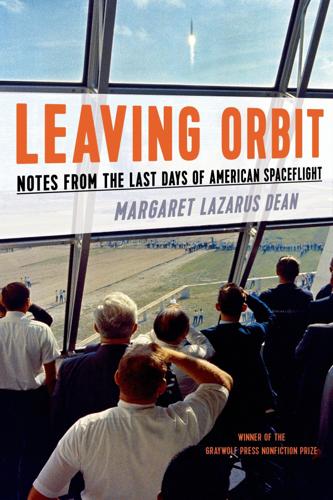
Leaving Orbit: Notes From the Last Days of American Spaceflight
by
Margaret Lazarus Dean
Published 18 May 2015
“It took them eight days to get there and back.” “Mmm,” I said noncommittally. This made no sense, this claim that three full-grown men had crammed themselves into this container the size of a Volkswagen Beetle’s backseat, even for an hour. This story seemed like a misunderstanding best politely ignored. “Neil Armstrong sat there,” my father said, pointing at the couch at the far left. “Michael Collins sat here. And Buzz Aldrin sat here.” For the rest of my life, the syllables of those three names would call up for me this moment, those couches, that tiny cramped space, the way the capsule, then only ten years old, felt both futuristic and outdated at the same time.
…
In the future, fourteen more will die, and the shuttle project will never entirely recover from their deaths. But the plaque knows nothing of all that, and I love it for that reason, for the vigorous simplicity of its language. I love the language of spaceflight: the go and the no-go, the translunar injection burn, the nod and the twang. The names Neil Armstrong and Buzz Aldrin. The sonorousness of the very acronym NASA. These are the sounds of dreams. Can we who were not there be blamed for wondering whether it was all a dream? The trees rose solid as a rampart, the last boundary of the Earth, and beyond stretched the spaceport for the space flight to the Moon: a silence of sand and water, a handful of islands thrown down by God on the seventh day when He couldn’t think what else to do with them….
…
My research was turning into something more like an obsession, and even once my Challenger novel was published, I kept reading, wanting to be able to grasp a historical era that in many ways seemed better than my own. The books that mean the most to me are the firsthand accounts, the people who grapple with what they have seen and experienced, and by doing so take on the emotional meanings of spaceflight. Michael Collins, who went to the moon with Neil Armstrong and Buzz Aldrin, is also a first-rate prose stylist with a natural feel for detail and a light touch with humor; his book sounds a lot like what you would expect if E. B. White had qualified as an astronaut and flown to the moon. Tom Wolfe undertook to grasp the courage of the astronauts and uncovered a brotherhood that is both unprecedented and ageless.
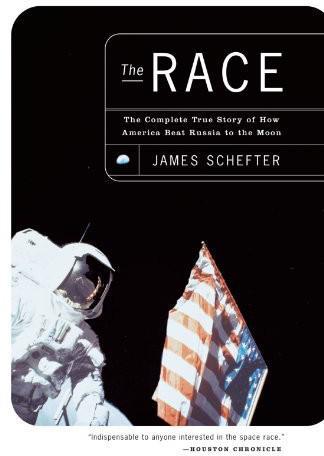
The Race: The Complete True Story of How America Beat Russia to the Moon
by
James Schefter
Published 2 Jan 2000
But it festered until two years later when I was working for both Time and Life magazines and Neil Armstrong banned me from an interview. No way, Armstrong said, was he going to talk to that reporter who got his kicks by telling widows that their husbands were dead. Haney and I went to Slayton, who’d forgotten the unfortunate circumstances. “You’re right,” Slayton said. “It was my fault. I’d never delivered that kind of message and I took my time getting up the courage to go to the house. I’ll talk to Neil.” He did. Neil Armstrong and I made peace. Nothing similar ever recurred. In the wake of Ted Freeman’s death, Slayton set up quick and rigorous procedures to send astronauts to inform and counsel families in the moments after a tragedy.
…
Still not a vacuum in here. He waited a few seconds, tried again, and it slowly gave way. “Hatch coming open,” Neil Armstrong said. On Earth, a world of people waited. With a nod to Aldrin and an unseen smile, he turned around, crouched, and began to back out. The porch sloped down just a bit. He reached over to a D-ring, pulled it gently—in the one-sixth gravity of the moon, he had the strength of Samson—and a desklike panel in Eagle’s side came open. There pointing at Neil Armstrong was a black-and-white TV camera. A fuzzy but awesome image appeared on television sets in every part of planet Earth.
…
There was this bulky human form in a ballooned white suit, backing down a ladder so very far away. The steps were easy, but the last one was higher than Neil Armstrong expected. He jumped into the big circular dish at the bottom and still hadn’t touched ground. An entire world watched. They listened to him briefly describe what he saw out there on another world. They wished he’d get on with it. “Okay.” His voice was scratchy with distance and static. “I’m going to step off the LM now.” Neil Armstrong put his left foot down into the dust. He felt that the ground was solid underneath. The other foot came down. He took a deep breath and the words he’d written in his mind only minutes before flowed slowly from his mouth and then on to immortal history.
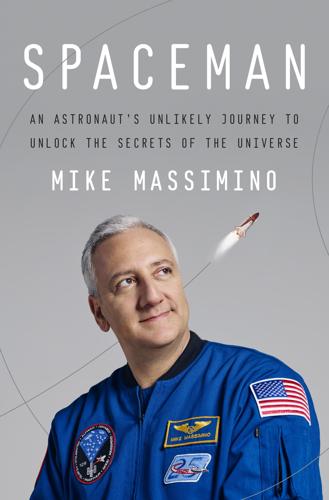
Spaceman: An Astronaut's Unlikely Journey to Unlock the Secrets of the Universe
by
Mike Massimino
Published 3 Oct 2016
All the living legends from the Mercury and Gemini and Apollo programs would be there, including Neil Armstrong, the first man to walk on the moon. My hero. Everyone’s hero. Our training manager, Paige Maultsby, was the mother hen taking us new kids through the orientation, and she put in a request asking if Neil Armstrong would come and speak to our class. He said that he would, but that he would only speak to us, the new astronauts; he didn’t want some big public event with tons of people showing up. I’d seen Neil Armstrong once before. In 1989, during graduate school, I’d worked as an intern at the Marshall Space Flight Center in Huntsville, Alabama, and that summer there was a big twentieth-anniversary celebration of the moon landing.
…
John Young may have been the only Apollo legend still on the active roster, but all those guys—Neil Armstrong, Buzz Aldrin, Jim Lovell—they were still a part of NASA. Many of them still live in Houston and come by often for business or personal reasons. These guys are our heroes, but there’s this connection that’s passed down with our group. A good story one of my friends tells is that when he got back from space, Armstrong was visiting. Neil stopped to talk to him and said, “You know, I haven’t been up there for a while. Tell me what it’s like these days.” My buddy was like Are you kidding me? This is Neil Armstrong, and he’s asking me about my trip to space.
…
He talked to us for about fifteen minutes, and the whole time he didn’t say anything about walking on the moon, not one word about being an astronaut—nothing. Instead he talked about his days as a test pilot at Edwards Air Force Base in California, flying the X-15, the hypersonic rocket plane that set speed and altitude records in the 1960s by flying 50 miles above the Earth, the outer limit of the atmosphere, the edge of space. That was how Neil Armstrong thought of himself: as a pilot. Not as the first man to walk on the moon, but as a guy who loved to fly cool planes and was grateful for the opportunity to have done it. By focusing on his test pilot days and not on the moon landing, I think he was trying to tell us that life is not about achieving one great thing, because once that thing is over, life keeps going.
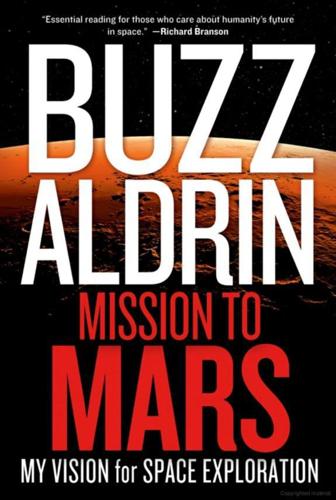
Mission to Mars: My Vision for Space Exploration
by
Buzz Aldrin
and
Leonard David
Published 1 Apr 2013
It was a unified enterprise, a synergy of innovation, effort, and teamwork that was unstoppable to transform a long-held dream into a reality. Buzz Aldrin on Gemini 12 space walk, November 1966 (Illustration Credit 1.7) Eight years after President Kennedy committed us to strive for the impossible, Neil Armstrong and I walked across the sundrenched terrain of the moon. Nearly a billion people all over the world watched and listened as we ventured across that magnificent desolation. With Mike Collins circling above us, and even though we were farther away from our planet than any three humans had ever been, we felt connected to home.
…
These bold journeys of exploration will require determination, support, and political will—as did our mission to the moon over four decades ago. If we have the vision, we can reach these destinations on the pathway to Mars within the next two decades. And if we persevere on this path, we can reach out some 200 million miles to Mars before 2035—66 years after Neil Armstrong and I flew the quarter-million miles through the blackness of space to touch down onto Tranquillity Base. There’s a historical milestone in the fact that our Apollo 11 landing on the moon took place a mere 66 years after the Wright brothers’ first flight. But to realize the dream of humans on Mars, we need a unified vision.
…
One thing to keep in mind: President Kennedy said send a man to the moon and bring him back safely—a man. We could have satisfied that goal by having a person land on the lunar surface, look out the window, maybe deploy a robot, but not open the hatch to the environment. Instead, we chose to have two astronauts moonwalk because of the buddy system. Thanks to that decision, Neil Armstrong and I stood on the shores of an inhospitable, desolate yet magnificent landscape. Looking at Earth from that perspective, everything I knew and loved lay suspended overhead, residing on a small, fragile, bright blue sphere engulfed by the blackness of space. What I didn’t anticipate until my return to Earth is that America’s success in achieving the first landing of humans on the moon was viewed as a success for all humankind.
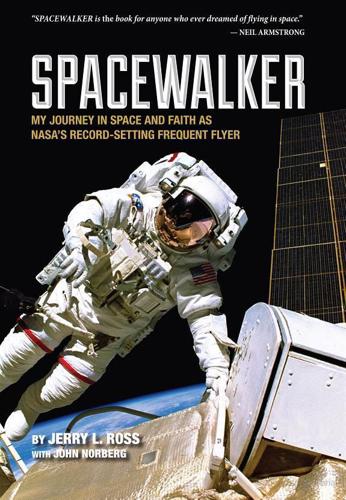
Spacewalker: My Journey in Space and Faith as NASA's Record-Setting Frequent Flyer
by
Jerry Lynn Ross
and
John Norberg
Published 31 Jan 2013
It was unusually quiet; there was nobody else there. From around a corner, dressed in tuxedos, appeared Neil Armstrong and Gene Cernan. Simultaneously they saw us, raised their arms, waved, and called out, “Hey, Jerry, how are you doing?” For Karen and me to be back on campus at our alma mater and have two of my heroes—fellow Purdue alumni and the first and the last men to walk on the Moon—instantly recognize me and greet us in such a fashion was a special moment we will never forget! Neil Armstrong is a class act. He is an unassuming, soft-spoken, thinking man, who almost seems shy until one spends some time with him.
…
I see no benefit in sending people to an asteroid. It’s not a good idea. In my opinion, it would be a waste of money and time. Apollo astronauts Neil Armstrong, Jim Lovell, and Gene Cernan testified to Congress against the Obama administration proposal to cancel the Constellation program. All of us in the Astronaut Office were cheering for them when they spoke. They spoke for us. In response to a question of what he believed the US spaceflight priorities ought to be, Neil Armstrong responded: 1. Maintain US leadership in space 2. Guarantee US access to space 3. Continue to explore the solar system I couldn’t agree more!
…
advance reading copy ADVANCE PRAISE FOR SPACEWALKER “Spacewalker is the book for anyone who ever dreamed of flying in space.” –Neil ArmStroNg, Commander of Apollo 11 “this is the story of one man’s lifelong quest to explore the unknown, overcome setbacks and obstacles, and keep the beacon of space shining in the hearts of all people, young and old. this book is about an American Dream.” –eugeNe CerNAN, NASA gemini and Apollo astronaut “this book is the story of a common man from the midwest who became an American hero . . . a model for the youth of our nation and for those who will accept the challenge to follow in his footsteps.”
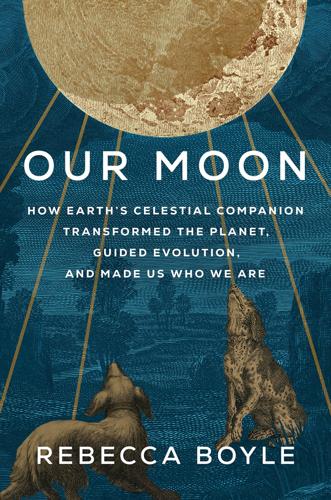
Our Moon: How Earth's Celestial Companion Transformed the Planet, Guided Evolution, and Made Us Who We Are
by
Rebecca Boyle
Published 16 Jan 2024
The factual basis for George Darwin’s story comes from the Apollo missions. It comes from a few pebbles Neil Armstrong grabbed in his first moments on the Moon. It comes from later, more famous Apollo rocks. And it is still being unraveled through especially beautiful, oddly alien rocks, like the pearlescent, green-freckled specimen designated troctolite 76535. Many Moon rocks are white and gray chunks of something called anorthosite, a strange and low-density type of material that forms when minerals crystallize within molten rock. They are among the first samples Neil Armstrong gathered, and because they were so unusual, Apollo missions kept going back for more.
…
Every time you went outside—in a spacesuit, of course—and every time you went back indoors and took off your gear, the Moon would bowl you over. You would feel lonely, hot, freezing, terrified, ecstatic, superhuman, and tiny, in a matter of moments or maybe all at once. Its topography, its innards, its atmosphere—everything about the Moon is different. APOLLO 11 MOONWALKERS Neil Armstrong and Buzz Aldrin were the first human beings to experience selenic discomfort. Moon dust covered their spacesuits and boots, and it soon covered much of the inside of their Eagle lander, too. The pair were so annoyed by it that they slept in their helmets to avoid breathing in Moon all night. On later missions, astronauts noticed the dust scratched their sun visors and damaged the seals on the rock boxes they toted home.
…
“Typical lunar craters are best explained as impact craters,” he wrote in a 1921 report.10 Wegener was correct about lunar craters,*8 and was mostly correct about the forces of plate tectonics. Rejecting all of his predecessors’ ideas about Earth’s movable face, he began circulating a hypothesis that Earth’s continents drift around on their own accord. He argued that Earth’s crust floats on top of its interior—just like Neil Armstrong’s anorthosite rocks floated above a hot Moon, though Wegener didn’t know about that. Wegener suggested that this happened through tidal forces resulting from the gravitational pull of the Moon. He also proposed that Earth’s equatorial bulge forced the continents to drift away from the poles. His nemesis, British geophysicist Harold Jeffreys, demonstrated that these forces were inadequate, and Wegener’s ideas languished until sonar developed for submarines during World War II helped scientists discover the phenomenon of seafloor spreading.

The Last Man on the Moon: Astronaut Eugene Cernan and America's Race in Space
by
Eugene Cernan
and
Donald A. Davis
Published 1 Jan 1998
One of Smitty’s best friends from New Trier was Jan Sharon, who happened to be the girlfriend of one such former serviceman. This fellow was a year ahead of our class, and so modest that you would never know he had flown seventy-eight missions in Panther jets off the aircraft carrier Essex and won three air medals. His name was Neil Armstrong. Years later, when Neil was a top test pilot for the experimental X-15 rocket plane at Edwards Air Force Base, Smitty dropped by for a visit and soon found himself beneath the house with the quiet aviator, wrapping pipes with insulation tape. Smitty, by then an aeronautical engineer, was naturally curious about the plane, which was the hottest thing in American skies, and asked, “So, Neil, you’re flying the X-15 now?”
…
“Hell, yes, I would,” I replied, then reality set in. I was still too young, and not yet close to having the necessary experience. We thought little more about it. My feelings of not yet being qualified for such an assignment were confirmed in September 1962, when the second bunch of astronauts was chosen—civilians Neil Armstrong and Elliot See, Air Force pilots Frank Borman, Jim McDivitt, Tom Stafford and Ed White, and Naval aviators Pete Conrad, Jim Lovell and John Young. I noticed the selection criteria had changed slightly, and that NASA now wanted fliers who were under thirty-five years of age, held at least a bachelor’s degree in a physical or biological science or engineering, had test pilot experience, graduated from a military test pilot school or had equivalent credentials.
…
So the Seven really were only four, which loosened things up slightly for future seat assignments, but not much. No seats would be coming to any members of my group for a long time. The entire Next Nine stood between the Original Seven and us. MANY PEOPLE BELIEVE SOME master personnel plan was behind the selection of Neil Armstrong to be the first astronaut to walk on the Moon. It isn’t true, and the saga of Al Shepard explains why. Shepard, just as he had been in the Mercury program, was first in line for a Gemini flight, where he was to be paired with Tom Stafford, from the Next Nine. In the middle of 1963, before the assignment became official, Shepard experienced some dizziness and doctors reached a tentative diagnosis of an inner ear problem known as Meniere’s disease, and temporarily grounded him.

Fallen Astronauts: Heroes Who Died Reaching for the Moon
by
Colin Burgess
and
Kate Doolan
Published 14 Apr 2003
The flight of Apollo 11 stands as one of the greatest achievements in human history and fulfilled the pledge made by President Kennedy back in 1961 to land a man on the moon and return him safely to the Earth. Launched on 16 July 1969, astronauts Neil Armstrong, Buzz Aldrin, and Mike Collins flew to the moon aboard Command Module Columbia. Armstrong and Aldrin then transferred to Lunar Module Eagle for the final descent to the moon, and on 20 July Neil Armstrong became the first person to ever set foot on another world. Watched by hundreds of millions of people back on Earth, Armstrong planted his booted left foot in the lunar soil and proudly stated, "That's one small step for a man—one giant leap for mankind."
…
This is a book about some extraordinary men I worked with in accomplishing that lunar triumph. Most were my good friends as well as colleagues but tragically they fell short of their dreams. In eight years we went from blasting a man into space on a quick ballistic flight to that incredible day in July 1969 when Neil Armstrong first set foot on another world. For each of those eight years we lost an astronaut, but the tremendous pain of this loss could not be sustained for long in our nation's race to the moon. Mission followed hard on the heels of mission, and our training took place at breakneck speed as engineers and planners worked with diligence and inspiration to achieve our goal of a manned lunar landing.
…
Heartfelt thanks to my friends Geoff Allshorn, Judy Brewer-Fischer, Nigel Denning, Mark Hillyer, Helen Hodgman, Therese Power Rsm, Ian Whalley, and the remarkable Sister Gerardine Cooney for their ongoing assistance, friendship, and encouragement. Further sincere thanks go to Apollo-era astronauts Neil Armstrong, David Scott, Tom Stafford, Michael Collins, Wally Schirra, Scott Carpenter, Gordon Cooper, Edgar Mitchell, Vance Brand, Jerry Carr, Don Lind, and Gene Cernan, and to an astronaut friend from today's shuttle program, Timothy ("T.") Creamer, for his special insights into flight procedures. We must also thank noted spaceflight author Michael Cassutt, Simon Vaughan, Francis French, and fellow Australian space enthusiasts Justin Wigg and David Sander for their perusal of the draft manuscript and their incisive, helpful comments and corrections.

The Space Barons: Elon Musk, Jeff Bezos, and the Quest to Colonize the Cosmos
by
Christian Davenport
Published 20 Mar 2018
SOME FIFTY YEARS after the advent of the Space Age, no one ever had flown a rocket past the edge of space and landed it vertically. Now, it had been performed twice in less than a month. For generations, spaceflight had been celebrated largely for the takeoffs. But the landings were reminiscent of Neil Armstrong and Buzz Aldrin’s touching down on the surface of the moon in the lunar module. Or the “seven-minutes of terror” landing of the Curiosity rover on the surface of Mars. The sight of the boosters standing on terra firma, scorched but triumphant, portended a sense of arrival, and offered hope for another Apollo 11 moment, the next giant leap many had felt they were promised but had never come.
…
“NASA is a national treasure, and it’s total bull that anyone should be frustrated by NASA,” he wrote. “The only reason I’m interested in space is because they inspired me when I was five years old. How many government agencies can you think of that inspire five year olds?” Bezos was five when Neil Armstrong and Buzz Aldrin landed on the moon in 1969. FOR A WHILE, the company’s only employee was Bezos’s friend Neal Stephenson, the science fiction author. They had met in the mid-1990s at a dinner party, where they had started talking about rockets. While the pair may have “bored everyone else at the table,” Stephenson said, they hit it off.
…
Mike Bezos adopted him and raised him as his own. Gise made Jorgensen promise to stay away. “I’ve never been curious about him,” Bezos told Time about his biological father. “My real father is the guy who raised me.” Bezos’s passion for space started when he was five years old on July 20, 1969, when Neil Armstrong and Buzz Aldrin landed on the moon. As young as he was, he could tell he was watching something historic. “It really was a seminal moment for me,” he said. “I remember watching it on our living room TV, and the excitement of my parents and my grandparents. Little kids can pick up that kind of excitement.
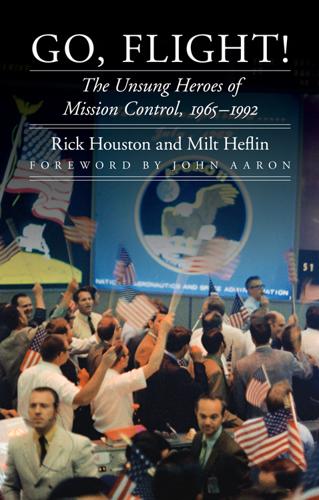
Go, Flight!: The Unsung Heroes of Mission Control, 1965-1992
by
Rick Houston
and
J. Milt Heflin
Published 27 Sep 2015
Neil Hutchinson, Gene Kranz, and Gerry Griffin 23. Apollo 17 Lunar Module Challenger lifts off of the lunar surface 24. Jay Greene following the breakup of the Space Shuttle Challenger 25. Marianne Dyson 26. 2005 NASA flight director class Foreword 20 July 1969—The Eagle had landed, and Apollo 11 commander Neil Armstrong and Lunar Module pilot Buzz Aldrin were now preparing for man’s first walk on the moon. In contrast to the intense drama that played out earlier in the day, activities in mission control had settled down, and my fellow mission controllers were starting to relax, at least a little. What a day!
…
Although John Aaron very nearly left the agency early in his career, he went on to become one of the most capable flight controllers ever to sit a MOCR console. Courtesy NASA. However, today was to be no simulation. This was the real deal. Two months earlier, Tom Stafford and Gene Cernan performed a powered descent to within nine miles of the lunar surface. Neil Armstrong and Buzz Aldrin were going to try to go the rest of the way and settle the Eagle spacecraft down on the dusty plains of the Sea of Tranquility. And sure enough, following a nail-biting, drama-saturated, should-we-keep-going powered descent to the surface, it actually happened at just past 3:17 p.m.
…
My friend Milt Heflin was a step or two ahead of me and entered before I did, and I was glad of that. I was embarrassed to be standing there like that, but I could not help it. There was the Trench, and just above it a row of systems consoles. Just across the aisle from the EECOM console on the second row was the capcom station, where Charlie Duke sat as he helped talk Neil Armstrong and Buzz Aldrin down to the lunar surface. Up a row was the throne itself, the flight director’s console. Chris Kraft, Gene Kranz, Glynn Lunney, Gerry Griffin, and Milt had all held court there once upon a time. Amazing. It was in those few moments when the concept for this book was born. Countless stories about human spaceflight have been told from the air-to-ground perspective, that is, mostly from the viewpoint of the astronauts whose flights this room controlled.

Rocket Dreams: Musk, Bezos and the Trillion-Dollar Space Race
by
Christian Davenport
Published 6 Sep 2025
emrc=52e770. 273 “Anyone who has lived”: Michael Collins, “Riding the Beast,” The Washington Post, January 29, 1986, https://www.washingtonpost.com/archive/politics/1986/01/30/riding-the-beast/0d7963e9-fe01-452d-a2d1-3bbfc03a8721/. 274 “We didn’t take any shortcuts”: Christian Davenport, “Quiet and Secretive Blue Origin Hopes to Start New Chapter with Jeff Bezos’ Space Flight,” The Washington Post, July 18, 2021, https://www.washingtonpost.com/technology/2021/07/18/jeff-bezos-blue-origin-space-future/. 274 “gradually stepping up”: Davenport, “Quiet and Secretive Blue Origin Hopes to Start New Chapter with Jeff Bezos’ Space Flight.” 275 a last-minute alteration: Brad Stone, Amazon Unbound: Jeff Bezos and the Invention of a Global Empire (Simon & Schuster, 2021), Epilogue, Kindle. 276 “Orbiting Earth”: Kiona N. Smith, “What Yuri Gagarin Saw from Orbit Changed Him Forever,” Forbes, April 12, 2021, https://www.forbes.com/sites/kionasmith/2021/04/12/what-yuri-gagarin-saw-from-orbit-changed-him-forever/. 276 “It suddenly struck me”: “Astronaut Friday: Neil Armstrong,” Space Center Houston, August 16, 2019, https://spacecenter.org/astronaut-friday-neil-armstrong/. 276 “It just seemed so beautiful”: Christian Davenport and Julie Vitovskaya, “50 Astronauts, in Their Own Words,” The Washington Post, June 19, 2019, https://www.washingtonpost.com/graphics/2019/national/50-astronauts-life-in-space/. 276 “OH.
…
Fully fueled, it holds more than ten million gallons of liquid methane and liquid oxygen. Its booster is powered by a staggering thirty-three engines known as Raptors, and the spacecraft has six of its own. A single Raptor produces twice as much thrust as a Boeing 747. All told, Starship has more than double the thrust of the Saturn V rocket that propelled Neil Armstrong, Buzz Aldrin, and Michael Collins to the moon during NASA’s Apollo program. In every respect—power, capability, cost, design, technology—Starship surpasses every other rocket before it, representing a light-years’ leap forward—the difference between horse-drawn covered wagons and locomotives.
…
At the time, the thinking was that NASA would never entrust flying its astronauts to the private sector. But in a radical shift, it awarded contracts to SpaceX and Boeing to do just that in 2014 under President Obama. True, NASA had always relied on contractors. Companies like Grumman built the lunar module that landed Neil Armstrong and Buzz Aldrin on the moon. Rocketdyne and Morton Thiokol built the engines and solid rocket motors for the Space Shuttle. Boeing and Rockwell Collins helped build the orbiters. The difference now was that NASA didn’t own or operate the rockets or spacecraft; the companies did. NASA supervised the development of their rockets and spacecraft and had influence upon the design.
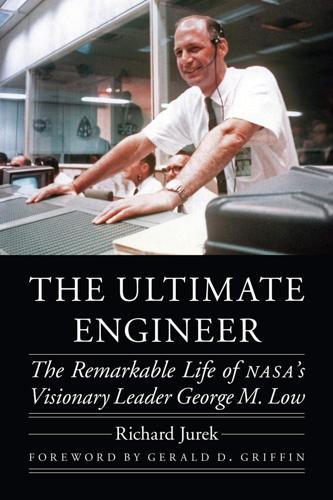
The Ultimate Engineer: The Remarkable Life of NASA's Visionary Leader George M. Low
by
Richard Jurek
Published 2 Dec 2019
I think we got a real good crew.”169 In addition to getting a really good crew, they got a great commander in Neil Armstrong. Low’s experience with Armstrong extended from first meeting him at NACA Lewis to going with him and Dick Gordon on their South American tour during the Gemini program. He was impressed with Armstrong’s cool handling of his near-fatal Gemini flight. He also watched and studied Armstrong throughout his training and preparation for flight. To say he was impressed with Armstrong’s capabilities would be an understatement. He could think of no one better not only to command the mission but also to be the first man to walk on the moon. “Neil Armstrong had the same qualities as George Low,” Gerry Griffin recalled, comparing both men and noting the admiration each had for the other.
…
George and I would become even closer later in our careers, but I could tell from those early interactions at JSC that he was a special talent and a special person. He was one of my all-time favorites—an inspirational leader, a terrific boss, and an overall great guy. In many ways, George’s style reminded me of another NASA legend—Neil Armstrong. Both were not big talkers, but whenever they spoke, everyone in the room got quiet and listened. George had a unique ability to get everyone’s input, instantly synthesize and summarize all he heard, and then quickly make a decision. We trusted his decisions. George was a stabilizing force in almost everything we did, especially during the chaotic time right after the Apollo 1 fire.
…
Recognized by Silverstein and other leaders at Lewis for his natural ability to manage and motivate people, as well as his creative intellect and meticulous attention to detail, Low advanced rapidly. In short order, Low became head of the Fluid Mechanics Division from 1954 to 1956 and then chief of the Special Projects Branch from 1956 to 1958. Given the focus on X-15 rocket plane research, Neil Armstrong spent five months as a test pilot at the NACA Lewis in 1955, during the middle period of Low’s tenure at the facility.61 Like Low, Armstrong was studying high-Mach heat-transfer issues. While they didn’t get to know each other very well at the time, their paths did occasionally cross.62 “The only product of the NACA was research reports and papers,” Armstrong said, describing the environment in which they both worked at Lewis.63 “When you prepared something for publication, you had to face the technical and grammatical ‘Inquisition.’

Speed
by
Bob Gilliland
and
Keith Dunnavant
Son Robert Jr. and daughter Anne were shaped by their father’s high expectations. Courtesy of Gilliland family. 17. & 18. On the Legends of Aerospace Tour in 2010, Bob joined fellow aviators Steve Ritchie, Jim Lovell, Neil Armstrong, and Gene Cernan. Courtesy of Thomas M. Lee. 19. During a memorable dinner in London, Gilliland (second from left) chatted with speed-record holder Andrew Green, legendary test pilot Eric Brown, and Neil Armstrong. Courtesy of Thomas M. Lee.
…
The Blackbird 13. Vice President Hubert Humphrey with the Blackbird 14. Bob with the Blackbird 15. Bob speaking at the National Aviation Hall of Fame 16. Bob with his son, Robert Jr., and daughter, Anne 17. & 18. Bob on the Legends of Aerospace Tour in 2010 19. Bob with Andrew Green, Eric Brown, and Neil Armstrong Foreword Chesley “Sully” Sullenberger Over the last century, thanks to the work of some very dedicated and gifted professionals who learned to harness the wonders of science, air travel has evolved from risky to routine. Most of the passengers who regularly cruise from city to city at 600 miles per hour, six miles above the earth, do so with a confidence approaching certitude.
…
Soon after his death, the Society of Experimental Test Pilots (SETP) began presenting the Iven C. Kincheloe Award for “the most proficient test work” conducted during the previous year. It became one of the most coveted honors in the aviation industry. The winners of the prestigious trophy have included John Glenn, Neil Armstrong, Scott Crossfield, and Dick Rutan. On a memorable night in 1964, during a black-tie dinner at the Beverly Hilton Hotel attended by the aerospace elite, Joe Tymczyszyn, president of the Society of Experimental Test Pilots, stepped to the podium, alongside Dorothy Kincheloe, the pilot’s widow.
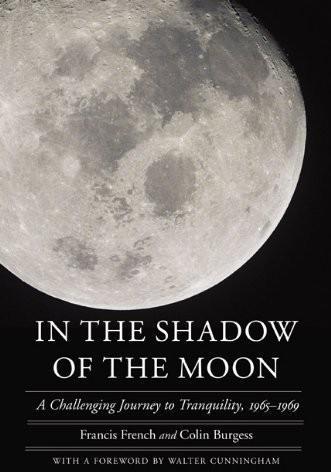
In the Shadow of the Moon: A Challenging Journey to Tranquility, 1965-1969
by
Francis French
,
Colin Burgess
and
Walter Cunningham
Published 1 Jun 2010
Edgar Allen Poe, Eldorado Illustrations Foreword Thirty years ago, when I was identified as an astronaut, as often as not the first question I was asked was, “Which one are you?” I was asked that question hundreds of times but was only quick enough to come up with the best answer one time: “I’m this one!” Today, the same situation elicits “Did you fly in space?” and “What was your mission?” This happens because, except for John Glenn, Neil Armstrong, and one or two others, the public sees us as generic heroes—a Mark IV, Mod 3 Astronaut. The media made us heroes at a time when we did not take ourselves all that seriously. When I was selected to be a NASA astronaut in late 1963, it was still the early days of spaceflight. Like it or not, we were instant celebrities or, more accurately, a celebrity’s celebrity.
…
Scott had concentrated on spacecraft guidance and navigation during his training, which fit the Gemini 8 mission objectives perfectly. Indeed, Mike Collins later wrote that seeing Scott picked first reassured him that nasa knew what it was doing. Commanding the mission would be another space rookie—Group 2 astronaut Neil Armstrong. Armstrong was the last of his selection group to be given a prime crew flight assignment. He had in fact been waiting so long that he was now commanding a member of the next group. Although Scott found Armstrong “a taskmaster” at times, the two had a great mutual respect and worked well together.
…
This meant that he would neither fly Gemini again nor be immediately available for an early Apollo crew. If it had not been for a lengthy delay in the Apollo program due to the death of some of his colleagues, it is possible that he would have been waiting for a second flight for quite some time. As it was, Neil Armstrong would ultimately do very well with his next, and last, prime crew flight assignment. 3. The Ballet of Weightlessness No man’s knowledge here can go beyond his experience. John Locke It had taken eight Gemini missions to achieve, but it seemed that rendezvous and docking was now, if not perfected, at least understood.

Space Chronicles: Facing the Ultimate Frontier
by
Neil Degrasse Tyson
and
Avis Lang
Published 27 Feb 2012
Scores of protesters lined the Kennedy Space Center’s surrounding causeways that day, wielding placards that pleaded with the president not to destroy NASA. In the weeks to follow, many people—including marquee astronauts—felt compelled to choose sides. Two moonwalkers sharply critical of Obama’s plan to cancel the return to the Moon testified before Congress: Neil Armstrong of Apollo 11 and Eugene Cernan of Apollo 17, poignantly presented as the first and the last to step foot on the Moon. On the other hand, Neil Armstrong’s command-module partner Buzz Aldrin was strongly supportive of Obama’s plan and had accompanied the president to Florida aboard Air Force One. Either Obama had given two different speeches at the Kennedy Space Center that morning and I heard only one of them, or else everyone in the room (myself included, perhaps) was suffering from a bad case of selective hearing.
…
He didn’t hesitate to announce how much money he wanted for the space budget— “fifty cents a week for every man, woman and child in the United States, for we have given this program a high national priority”—but then justified that generous funding by presenting a vivid picture of the outcome he envisioned: But if I were to say, my fellow citizens, that we shall send to the Moon, 240,000 miles away from the control station in Houston, a giant rocket more than three hundred feet tall, the length of this football field, made of new metal alloys, some of which have not yet been invented, capable of standing heat and stresses several times more than have ever been experienced, fitted together with a precision better than the finest watch, carrying all the equipment needed for propulsion, guidance, control, communications, food and survival, on an untried mission, to an unknown celestial body, and then return it safely to Earth, re-entering the atmosphere at speeds of over 25,000 miles per hour, causing heat about half that of the temperature of the Sun . . . and do all this, and do it right, and do it first before this decade is out—then we must be bold. Who could remain uninspired by such words! Neil Armstrong, commander of Apollo 11, was part of NASA long before NASA formally existed. He was a naval aviator, the youngest pilot in his squadron. He flew seventy-eight combat missions during the Korean War. Neil Armstrong is someone with firsthand experience of the Moon, someone who’s had both a bird’s-eye view and a moonwalker’s view of the Sea of Tranquillity. Some people seem to believe that we just strap the astronauts to a rocket and fire them to the Moon.
…
Republican president Richard M. Nixon’s signature is on the plaque left on the Moon in 1969 by the Apollo 11 astronauts. And maybe it’s just coincidence, but twenty-four astronauts hail from the swing state of Ohio—more than from any other state—including John Glenn (America’s first to orbit Earth) and Neil Armstrong (the world’s first to walk on the Moon). If partisan politics ever leaked into NASA’s activities, it tended to appear on the fringes of operations. For example, President Nixon could, in principle, have dispatched the newly commissioned USS John F. Kennedy aircraft carrier to pluck the Apollo 11 command module from the Pacific Ocean.
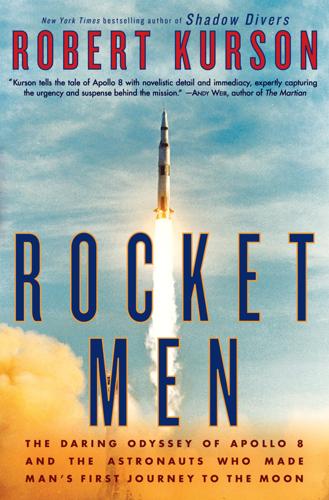
Rocket Men: The Daring Odyssey of Apollo 8 and the Astronauts Who Made Man's First Journey to the Moon
by
Robert Kurson
Published 2 Apr 2018
Finally, in the fall of 1962—eighteen months after he first put his name in the hat—Borman became one of the agency’s nine new astronauts, selected from America’s best to go where mankind had only dreamed of going. * * * — NASA introduced its second group of astronauts to the public at the University of Houston on September 17, 1962. Soon to be dubbed the New Nine by the press, they included James Lovell and Neil Armstrong. All nine had been test pilots and had studied aeronautical engineering. All were married and had children. From the moment he stood beside these men, Borman could tell he was among a rare group, talented and competitive beyond any he’d met. The new astronauts became instant celebrities. As with the Original Seven, each received a contract with Life magazine and Field Enterprises that paid him $16,000 a year for exclusive access to his and his family’s personal stories.
…
Even the violent pogo problem seemed to have been tamed. Pending a few final checkouts, the rocket looked ready to launch three astronauts to the Moon. The crew of Apollo 8 spent much of the next day, September 18, in the command module simulator in Florida. They were joined, as they often would be during training, by their backup crew, Neil Armstrong, Edwin “Buzz” Aldrin, and Fred Haise. By Slayton’s assignment scheme, backup crews became primary crews three flights later. That meant Armstrong, Aldrin, and Haise would be prime crew for Apollo 11. Late that night, while the astronauts slept, the famed British astronomer Sir Bernard Lovell (no relation to Jim Lovell) reported that a massive radio telescope in England had tracked a Soviet spacecraft (Zond 5) as it passed within a thousand miles of the Moon.
…
“We have serious problems here. We’re—we’re tumbling end over end up here.” The spacecraft was rolling violently out of control while in orbit around Earth. Suddenly NASA was face-to-face with disaster. While Anders calmly relayed information from Mission Control and reassured the astronauts, commander Neil Armstrong battled to regain control of the ship by using the craft’s reentry thrusters. Several agonizing minutes later, Gemini 8 had been steadied. The mission was terminated early and the crew survived. Anders didn’t think he’d done anything special; he’d just stayed cool under pressure, and it was Scott and Armstrong who deserved credit for a terrific save.

Moon Rush: The New Space Race
by
Leonard David
Published 6 May 2019
Schmitt APPENDIX Lunar Exploration Time Line Acknowledgments Further Reading Photo Credits About the Author FOREWORD LET’S GET OUR GLOBAL SPACE ACT TOGETHER BY BUZZ ALDRIN LUNAR MODULE PILOT, APOLLO 11 FIFTY YEARS AGO, ON JULY 20, 1969, I know exactly where I was standing. I was well suited for where I was, but without a tie. On the Moon, my get-down-to-business attire weighed 180 pounds. After stepping down from the Eagle lander, I stood there with my fellow space traveler, Neil Armstrong. High above the barren lunar scenery that I viewed as “magnificent desolation” was our Apollo 11 partner, Mike Collins, orbiting the Moon. America’s Apollo program was an impressive team effort. It drew upon the talents of thousands and thousands of individuals who came together to make real a vision.
…
In the meantime, private aerospace groups are hyping tourist flights around the Moon, quick package delivery to the Moon’s surface, and lunar modules, including inflatable pop-up living quarters, to form a Moon base. Consider this futuristic outlook. If preservation advocates are successful, the Apollo 11 Tranquility Base touchdown zone where Neil Armstrong and Buzz Aldrin landed 50 years ago could become the number one tourist hot spot, a mecca for rubbernecking, camera-toting visitors. Encompassed within a large transparent protective dome, onlookers would take in the celebrated landing site, gaze upon still visible footprints stamped in the lunar dust, and witness hardware left behind from that first human sortie to the Moon in July 1969.
…
The voyage from Earth was the culmination of a bold, risky gambit—shouldered by some 400,000 people who banded together to make real a vision. It was a unified enterprise, a mix of government, industry, and academic wherewithal that transformed a long-held dream into reality. On July 20th, 1969, Neil Armstrong and Buzz Aldrin became the first humans to walk on the Moon. Apollo 11 colleague, Mike Collins, remained in lunar orbit to receive the Moon visitors returning after their brief but history-making stopover on the uninviting lunar land. He watched from the command module as the Eagle began its traverse to the Moon’s terrain and would later recall that the lunar lander was the weirdest looking contraption he had ever seen in the sky.
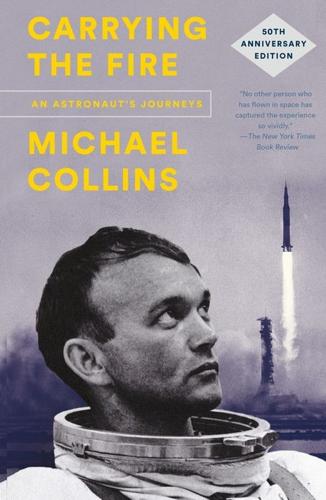
Carrying the Fire: An Astronaut's Journeys: 50th Anniversary Edition
by
Michael Collins
and
Charles A. Lindbergh
Published 15 Apr 2019
The directions we will follow remain unknown, but books such as this by Michael Collins stimulate the mind, enhance awareness, and assist us on our way. PREFACE TO THE 2019 EDITION I guess another decade must find me ten years older but I don’t feel that way, although some sad things have happened. Old friends, John Young and Neil Armstrong, have died, and my life has changed with the death of my wife, Patricia Mary Finnegan Collins, after fifty-seven years of marriage. I miss her dearly and daily. My beautiful and competent daughters, Kate and Ann, help me fill the void. I still live and fish near Florida’s Everglades. I have hated the word octogenarian, but as I look at age ninety in 2020, it doesn’t sound too bad.
…
I fear this complication would run into its own snags and delays, costs would escalate, and the schedule would dissolve into “Yes, of course we are going to Mars, but first we have to fix the lunar_____.” Not direct, not simple. Sometimes, in space planning, it costs less in the long run to go all-out in the first place. On the other hand, Neil Armstrong thought it was wiser to first fill in some of the gaps in our knowledge, and a lunar base could do that. Neil was a much better engineer than I, and I concede he was probably right in this case. Perhaps the fact that I would gladly bypass the moon makes me confess that I don’t think it too homey a place.
…
(No one, not even a celebrity, talks about the national debt.) But please, don’t invite me to your celebrity golf tournament. Okay, okay, let’s press on (a favorite astronaut saying). The last forty years have worked out well for me. On my tombstone should be inscribed LUCKY because that is the overriding feeling I have today. Neil Armstrong was born in 1930, Buzz Aldrin in 1930, Mike Collins in 1930. We came along at exactly the right time. I used to imagine a gigantic grandfather clock in the sky, its pendulum stuck over to the left in the “too young” position—you couldn’t drink, drive, make money, or do anything really interesting.
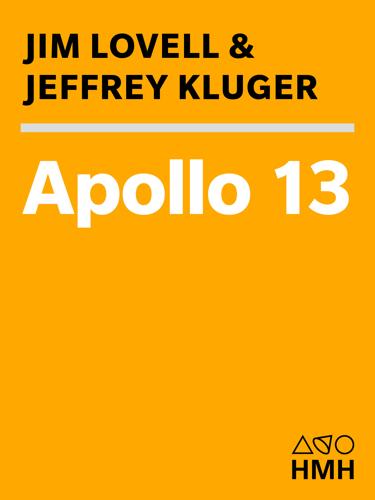
Apollo 13
by
Jim Lovell
and
Jeffrey Kluger
Published 14 Jun 2000
By 1970, the United States had been flying in space for nine years, and while Americans had developed a fondness for their spacecraft and their astronauts, they had come to expect the missions to turn out one way: successfully. Oh sure, there had been that nasty bit of business back in 1961 when Gus Grissom’s Mercury 7 capsule sank in the Atlantic the moment after it splashed down. There had been that hair-raising time five years later when Neil Armstrong and Dave Scott’s Gemini 8 suddenly began pinwheeling in Earth orbit, requiring the crew to slam on the brakes and return home just ten hours into a flight that was supposed to have lasted five days. But while Gus and Neil and Dave might have known the kind of deadly mess they were in, the public—to NASA’s relief—never fully grasped it, figuring that as long as the boys got into space and came down all right, any minor scrapes they had before their feet hit the carrier deck didn’t amount to much.
…
Like no other newsman before him, Bergman had made it his business to learn the ways of space flight, getting himself spun in centrifuges, lofted in zero-g aircraft, and set adrift in splashdown rafts, all in the service of better understanding the tightrope the pilots walked so he could better explain it to the public that paid the bills. The problem was, these days the public didn’t seem to want the explanations. This wasn’t Shepard’s Freedom 7 or Glenn’s Friendship 7 anymore, and it certainly wasn’t Neil Armstrong, Michael Collins, and Buzz Aldrin’s Apollo 11—the magnificent mission that just nine months earlier had made the first landing on the surface of the moon. This was Apollo 13, the third such landing, and by the spring of 1970, both the network and the country it reported to were bored. What ABC was showing instead of the late-breaking moon news was The Dick Cavett Show.
…
This provision guaranteed that any astronauts or cosmonauts who veered off course and splashed down in a hostile ocean or thumped down in a hostile wheat field would not be scooped up and carted off by security forces of the violated country. Rather, they would be treated as “envoys of mankind,” to be “safely and promptly returned to the state of registry of their space vehicle.” In picking the astronaut delegation tonight, NASA had chosen carefully. In addition to Lovell, who had flown twice in the Gemini program, was Neil Armstrong, a veteran NASA test pilot, whose sole Gemini flight, Gemini 8, had ended in near disaster ten months earlier when one of his thrusters suddenly went south on him, causing his ship to begin spinning at a stomach-knotting 500 r.p.m. and forcing flight controllers to abort the mission and bring him down in the first ocean or sea or duck pond they could find.

Test Gods: Virgin Galactic and the Making of a Modern Astronaut
by
Nicholas Schmidle
Published 3 May 2021
She had never seen the video. He hit pause. “Is this emotional for you?” he asked, sounding sharper than he intended. “It’s okay,” she replied. They didn’t discuss the dangers of his job much. Death was one of those things test pilots didn’t like to ponder. It was “an unpleasant thing to think about,” Neil Armstrong said before he went to the moon. But Stucky didn’t sugarcoat it: he was a test pilot for an experimental rocket ship program, a tremendously risky endeavor. Four men had already died for the cause, including Stucky’s best friend. “A Marine Corps colonel once told me, ‘If you want to be safe, go be a shoe salesman at Sears,’” said Stucky.
…
Stucky insisted that it was always slow, but the medics wanted to wait before clearing him for flight school. Stucky took advantage of the downtime. He flew his hang glider and read a lot of books, including one by Michael Collins, the third and often forgotten member of the Apollo 11 crew. Stucky appreciated Collins’s sense of humor; when asked how he felt on the dark side of the moon while Neil Armstrong and Buzz Aldrin were making cosmic history, Collins joked, “I just kept reminding myself that every single component in this spacecraft was provided by the guy who submitted the cheapest tender.” The book convinced Stucky that it was possible to be an astronaut without becoming insufferable. Eventually the doctors agreed that Stucky’s heart just beat slow.
…
A football coach had fragile egos to protect, while Moses had to worry about corporate secrets and all the risks that came with allowing an outsider access to inside information. Frankly, letting a reporter embed with a high-performance flight-test program was unheard-of. “Keep that man away,” Neil Armstrong once said about a journalist. “He’s a ghoul.” But Moses had been around long enough to trust his own instincts. “My calling card was built long before I got here,” he would say. Until now, most of Virgin’s PR pushed glitz and celebrity. But Moses had techs and engineers and pilots with greasy hands and heavy hearts working overtime in the middle of nowhere, trying to do something no one had ever done before, and that was worthy of documentation, he thought.

Never Panic Early: An Apollo 13 Astronaut's Journey
by
Fred Haise
and
Bill Moore
Published 4 Apr 2022
NASA Lewis had been the starting point for several other pilots who I joined up with later in my career. Joe Vensel, Joe Walker, Neil Armstrong, and Warren North all had transferred to other NASA centers from Lewis. When I later transferred to the NASA Flight Research Center, Joe Vensel was head of Flight Operations and Joe Walker was my boss in the Pilot’s Office. When I joined the Astronaut Office at the Manned Spacecraft Center (MSC), which is now known as the Johnson Space Center (JSC), Warren North headed the Crew Training and Procedures Division, and Joe Algranti headed the Aircraft Operations Division. I served on the backup crew with Neil Armstrong for the Apollo 8 Mission and as the backup lunar module (LM) pilot for his Apollo 11 Mission.
…
There were a series of lake beds we used for emergency landings, including Cuddeback, Three Sisters, Hidden Hills, Mud, Delamar, Smith, and Rogers (the launch and recovery lake bed). For the lake bed checks, the aircraft of choice was the C-47, because of its large tire footprint. The dry lakes could be deceiving because though appearing to be dry, they were sometimes wet. That was the case when Neil Armstrong and Chuck Yeager were checking out Mud Lake, Nevada, in a T-33A. Against Chuck’s advice, Neil attempted a touch-and-go landing, but the aircraft’s tires got stuck in the mud, which is where they were mired until a pickup came to the rescue. If the lake beds could talk, they would tell of a number of unplanned X-15 landings by Scott Crossfield at Rosamond, Jack McKay at Mud Lake, and Milt Thompson at Cuddeback.
…
Milt Thompson and Bruce Peterson flew evaluation and training flights for their upcoming M2F2 flights, launching from the B-52 aircraft. * * * — Astronaut selection had progressed at NASA. In 1959, Group One, as the original seven Mercury astronauts were known, was chosen. In 1962, the New Nine were added to help get us to the Moon. Fourteen more were chosen in 1963 and, in 1965, six scientists were added. One day, Neil Armstrong visited the Flight Research Center after leaving that assignment for the Astronaut Office. My friend Don Mallick asked him what it was like being an astronaut. Neil’s answer was, “It’s a lot of meetings, with a lot of time sitting in simulators, and not much good flying.” I evaluated my situation.
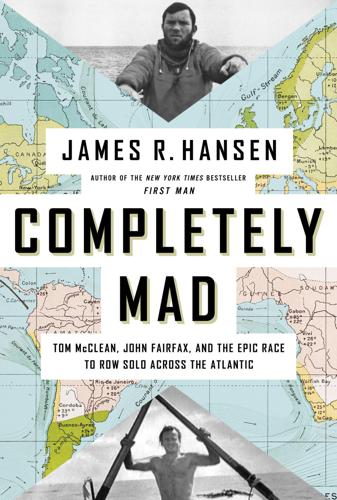
Completely Mad: Tom McClean, John Fairfax, and the Epic of the Race to Row Solo Across the Atlantic
by
James R. Hansen
Published 4 Jul 2023
Not just any song, but a powerful elegiac hymn to which I was introduced during the preproduction of the 2018 motion picture First Man, the story of Neil Armstrong, based on my 2005 biography of the same title. The song “Ocean Cloud” by the British neo-progressive rock group Marillion had nothing to do with the film, but its filming by Universal Pictures and director Damien Chazelle was indirectly responsible for the song coming to my attention. For with me consulting on the making of First Man was Neil Armstrong’s eldest son, Rick Armstrong, whom I had met and interviewed for my book about his father some 15 years earlier, but I had not chatted with him about our love of music.
…
Naturally, besides the ORSI website, I found numerous articles on the World Wide Web about both of my men, including news articles, feature stories, a few interviews and video clips, and obituaries (in the case of Fairfax, as he had died in February 2012, five months before Neil Armstrong passed away). My research materials were quickly building up. But I needed to go to the source. As I knew from writing the Neil Armstrong biography and many of my other book projects over the years, it was essential to include firsthand personal testimony; in other words, oral history through one-on-one interviews directly with the historical actors was vital to accuracy, filling in unrecorded details, and adding color, tone, and vibrancy.
…
And that you arrived at your destination quite near the time that we reached ours. Yours, however, was the accomplishment of one resourceful individual, while ours depended upon the help of thousands of dedicated workers in the United States and all over the world. As fellow explorers, we salute you on this great occasion. The Apollo 11 Astronauts Neil Armstrong Michael Collins Edwin A Aldrin Jr. —Telegram from the Apollo 11 astronauts in quarantine inside the Lunar Receiving Laboratory at the Manned Spacecraft Center in Houston, Texas, to ocean rower John Fairfax, July 30, 1969 “More than twice as many people have walked on the Moon as have soloed the Atlantic Ocean in a rowboat.”

After Apollo?: Richard Nixon and the American Space Program
by
John M. Logsdon
Published 5 Mar 2015
Letter from President Richard Nixon to Archibald MacLeish, July 1, 1969, Outer Space-3 File, RNPL; Safire, Before the Fall, 147–148. 14. Memorandum from Dwight Chapin to H. R. Haldeman, “Apollo 11,” June 16, 1969, Outer Space-3 File, R NPL; letter from Richard Nixon to Neil Armstrong, June 25, 1969, Box 1, Federal Government 164 Files, R NPL. Although Armstrong was a civilian who had resigned from the Navy in 1952, the letter was addressed to Commander Neil Armstrong, USN. 15. Memorandum from Dwight Chapin to H. R. Haldeman, “Status Report on Apollo 11 Project,” July 1, 1969, Outer Space-3 File, RNPL; William Safire, “Of Nixon, Kennedy and Shooting the Moon,” The New York Times, July 17, 1989, A17; memorandum from Jim Keogh (one of Nixon’s speechwriters) to the President, June 16, 1969, Outer Space-3 File, RNPL; Safire, Before the Fall, 144–145. 16.
…
Hansen, First Man: The Life of Neil A. Armstrong (New York: Simon & Schuster, 2005), 2–3; Michael Collins, Carrying the Fire: An Astronaut’s Journeys (New York: Farrar, Straus and Giroux, 2009), 349; telegram from Neil Armstrong, Mike Collins, and Buzz Aldrin to the President, July 9, 1969, Papers of Spiro T. Agnew, University of Maryland Library, College Park, MD; telegram from the President to Commander Neil Armstrong and the Apollo XI Astronauts, July 15, 1969, Outer Space-3 File, RNPL. 18. I am grateful to former George Washington University graduate student Steve Wolfe for first bringing this episode to my attention.
…
I am sure that many people will not agree with my assessment of the Nixon space heritage, especially with respect to the space shuttle, and my characterization of the recent and current state of the U.S. space program. After a career devoted to that program, I regret that my conclusions are so downbeat. I can only remain hopeful that better days are ahead. John M. L ogsdon January 2015 Overture On July 20, 1969, U.S. astronaut Neil Armstrong took “one small step for a man, one giant leap for mankind,” as he became the first human to set foot on the Moon. The success of the Apollo 11 mission satisfied the goal that had been set by President John F. Kennedy just over eight years earlier—“before this decade is out, landing a man on the moon and returning him safely to earth.”1 Inevitably, it also raised the question “What do you do next, after landing on the Moon?”

Space 2.0
by
Rod Pyle
Published 2 Jan 2019
After this, he entered private practice, but, as he put it, “I had a couple of acquaintances at the Johnson Space Center who pestered me to come and visit them. And after five years of private practice, doing occupational medicine—which is a little more mundane—I went and visited JSC and I saw a picture from the moon showing the Earthrise that was signed by Neil Armstrong, Buzz Aldrin, and Mike Collins. I said, ‘You mean I could meet Neil Armstrong?’ and they said yes. Well, that just lit my fire, and here I am.”35 As a part of this elite cadre of about twenty NASA space doctors, and as the former president of the Space Medicine Association, he is in a unique position to observe and evaluate the effects of extended weightlessness on the human body, as well as the effects of recirculated air, a restricted diet, and levels of radiation that, while lower than those experienced in deep space, are still much higher than we receive on Earth.
…
LIST OF INTERVIEWEES Michael Alegria-Lopez Chad Anderson Alfred Anzaldua Howard Bloom Tory Bruno Franklin Chang-Díaz Tim Cichan Leonard David Jason Dunn Pascale Ehrenfreund Charles Elachi Bill Gerstenmaier Jeff Greason Lori Garver Mark Hopkins Hiro Iwamoto Steve Jurvetson Jim Keravala Pascal Lee David Livingston Robert Meyerson Scott Pace Bruce Pittman Stan Rosen Gwynne Shotwell Dale Skran Bill Tarver Rick Tumlinson Jakob van Zyl George Whitesides Robert Zubrin NOTES CHAPTER 1: SPACE 1.0, THE FINAL ACT 1Open letter from Neil Armstrong, James Lovell, and Eugene Cernan to President Obama, published April 15, 2010. Retrieved from Guardian online on August 7, 2017. www.theguardian.com/commentisfree/cifamerica/2010/apr/15/obama-nasa-space-neil-armstrong. 2O’Kane, Sean. “NASA buys two more seats to the International Space Station on Russia’s Soyuz rocket.” The Verge, February 28, 2017. www.theverge.com/2017/2/28/14761058/nasa-russia-spacex-soyuz-seats-contract-space-station-iss.
…
Chapter 9 A New Space Race Chapter 10 Investing in Space Chapter 11 The Space Between Nations Chapter 12 The Russian Juggernaut Chapter 13 The China Wildcard Chapter 14 Truck Stops in Space Chapter 15 Defending Earth Chapter 16 Settling the Final Frontier Chapter 17 A New Age Dawns Chapter 18 Your Place in Space 2.0 Acknowledgments Special Thanks To Notes Glossary Index About the Author Join the National Space Society Image credit: James Vaughan FOREWORD About a half century ago, in July of 1969, I participated in a great adventure that was the culmination of the first space age—the first humans to land on the moon. As Neil Armstrong and I climbed down to the desolate expanse of the Sea of Tranquility, with our crewmate Mike Collins orbiting overhead, we were cognizant of the vast, organized effort by an entire nation that delivered us safely to that distant body. Five more landings followed, and just three short years later, the Apollo lunar landing program came to an end.

Truth, Lies, and O-Rings: Inside the Space Shuttle Challenger Disaster
by
Allan J McDonald
and
James R. Hansen
Published 25 Apr 2009
“In other words, you accepted the recommendation of no-launch that was made by your company?” “That is correct.” Vice Chairman Neil Armstrong followed up. “Would you be surprised, Mr. McDonald, if your comments were interpreted by both your own company personnel and by Marshall personnel as being supportive of the Marshall position?” “Yes, I would be surprised at that. I wouldn't be surprised that that would be evaluated as the effect of that, but I would be surprised that it was interpreted as supporting a launch.” What I couldn't tell Neil Armstrong was that I wasn't at all surprised that the Commission had heard this interpretation from some of its witnesses, because it was becoming clearer and clearer to me that both Morton Thiokol and NASA management were trying to find any shred of evidence they could to support a launch decision and discredit my earlier testimony before the Commission.
…
As this final testimony was being given, I was in an airplane returning home from Washington. While in the air, I wrote a series of thank-you notes to various members of the Presidential Commission who had supported me. The next day I mailed them to Chairman William Rogers, Vice-Chairman Neil Armstrong, Dr. Sally Ride, and General Don Kutyna. A short time later I received two autographed photos from Sally Ride and Neil Armstrong. Sally thanked me for the help I had provided the Commission, and Neil sent me a picture he had taken of Buzz Aldrin standing next to the flag on the Moon. Previously, at the end of the Presidential Commission's hearings, I had asked Neil to autograph one of my business cards for each of my children, and he had graciously done so.
…
Armstrong (Simon & Schuster, 2005). The book, which had just been released and had already become a New York Times bestseller, was the authorized biography of professor, engineer, test pilot, and astronaut Neil Armstrong. Its author was Dr. James R. Hansen, a professor of history at Auburn University in Alabama and a former NASA historian. I read the book over the holidays and thoroughly enjoyed it. Neil Armstrong had been the Vice-Chairman of the Presidential Commission on the Challenger accident and later became a member of the board of directors of Thiokol. Since I had appeared before the Presidential Commission on five different occasions, I felt like I really knew him.
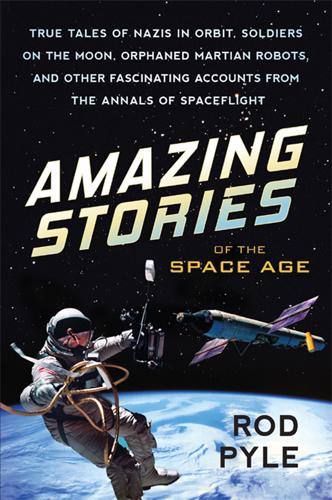
Amazing Stories of the Space Age
by
Rod Pyle
Published 21 Dec 2016
Other parts of the project, such as using the AMU or Gemini capsule to maneuver close in to a Soviet satellite or manned spacecraft, turned out to be unnecessary. In the end, the air force met most of its important goals in space with robotic spy satellites, and NASA flew ten manned Gemini flights and met its own goals on the march to a lunar landing. The right people did the right jobs after all. UNCLASSIFIED Neil Armstrong was in a cold sweat, using every bit of skill he had honed as a test pilot in some of the most dangerous planes ever designed. Dave Scott, sitting only inches away in Gemini 8's right-hand seat, was scanning the instrument panel furiously, looking for a clue…any clue. As Armstrong continued to struggle with the thruster handle in his left hand, firing this way, then that, he was simultaneously compiling a list of what he'd tried to arrest the motions of the wildly gyrating spacecraft.
…
The spacecraft would just keep spinning for months in the vacuum of space, with two dead astronauts slowly decaying inside their suits. It could mean the end of the program, and nobody wanted to prevent that from happening more than the man at the controls. But he had no idea what to try next. Fig. 9.1. The crew of Gemini 8: Commander Neil Armstrong, to left, and pilot David Scott, to right. Both would be tested to the limits of their experience as test pilots during the inflight emergency. Image from NASA. By the time Gemini 8 flew in March 1966, the program seemed to have hit its stride. Gemini 3, the first manned flight after the tests of Gemini 1 and 2, had been routine.
…
A postflight analysis indicated that a thruster had gotten stuck in the open position, firing continually and forcing them into an unrecoverable tumble, until Armstrong switched over to the reentry control system. The Agena had been fine. Dave Scott would go on to command Apollo 15, and be the first man to drive on the moon in the lunar rover. Neil Armstrong, of course, gained fame as the commander of Apollo 11 and the first human to set foot on the lunar surface. But their substantial mettle was first tested in the hair-raising flight of Gemini 8, the ultimate challenge for test pilots in space. CLASSIFIED: DECLASSIFIED IN 2015 It was to be the ultimate two-way stare down of steely-eyed Cold War missile men: while frustrated Soviet generals grumbled over radar images of a capitalist-spawned steel tube orbiting insolently above their country, Americans in that tube would be taking rapid-fire telescopic images looking back down at Soviet military installations and ICBM sites.

Apollo
by
Charles Murray
and
Catherine Bly Cox
Published 1 Jan 1989
“Well, let’s light this sumbitch and it better work” The events of the rest of that day were watched on television by a worldwide audience estimated to be in excess of a billion people. Neil Armstrong and Buzz Aldrin told flight director Milt Windler that they wanted to postpone their planned rest period and proceed directly to the E.V.A. Kraft, not surprised that the crew didn’t feel sleepy, agreed. Cliff Charlesworth’s Green Team, which had trained for the lunar surface activities, was hurriedly brought on shift (not difficult, since most of the team had been hanging around Building 30 all day anyway). At 9:56:15 P.M., Central Daylight Time, July 20,1969, Neil Armstrong hopped from the bottom rung of the LEM’s ladder onto the lunar surface, proclaiming, “That’s one small step for a man, one giant leap for mankind.”
…
Conrad took manual control, steering the LEM across the crater to a safe distance—on the far rim after all. A few years later, after the four LEMs following Intrepid had each descended to within a few yards of their targets, Neil Armstrong was giving an interview to a historian of the manned space program. The interviewer, thinking of astronauts and senior managers, asked Armstrong: After all the years he had spent at M.S.C., who did he think stood out in talent and ability? Neil Armstrong grinned. “Emil Schiesser!” he replied. “I’d vote for Emil every time.” Chapter 27. “You really need to understand that the C.S.M. is dying” When Apollo 13 lifted off on April 11, 1970, manned space flight was one day shy of the ninth anniversary of Gagarin’s flight.
…
Often things went wrong, sometimes disastrously wrong … and they did not falter, did not make excuses, but proceeded onward, taking new risks. They covered ground in giant strides. Contemplate for a moment the bare bones of their timeline: On November 5, 1958, the United States formed the Space Task Group, consisting of forty-five people. On July 20, 1969, Neil Armstrong and Buzz Aldrin landed on the moon—an elapsed time of ten years and nine months. Think back to what you were doing ten years and nine months ago, and realize how short a time that is. Now try to imagine a nation beginning a space program on that day with forty-five people, no launch vehicle, no spacecraft, no launch facilities, no experience with manned space flight—and landing on the moon this morning.
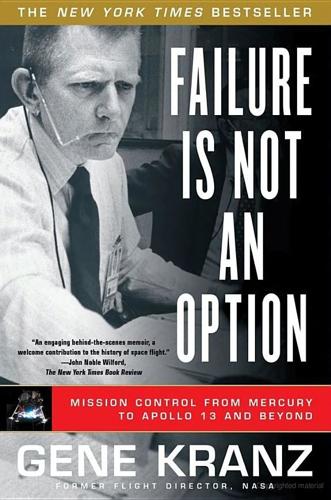
Failure Is Not an Option: Mission Control From Mercury to Apollo 13 and Beyond
by
Gene Kranz
Published 7 Jan 2000
They believed that only an astronaut should get the job as the remote site CapCom. I disagreed. My remote site teams had matured. In my view, astronauts assigned to remote sites were observers given the job of assisting the controllers if that became necessary. In any event, five days before the launch Slayton deployed astronauts Charles (Pete) Conrad and Neil Armstrong to Carnarvon and Hawaii, respectively, continuing the tradition of stationing astronauts at critical positions on the ground track. Hunter and Conrad were both men of strong conviction. But given orders, they would salute their leader and then execute with few questions asked. Three days before launch, the mission readiness review was concluded, and the time had arrived to begin the countdown.
…
With the planning, training, mission reviews, and the press conferences, by the time we were ready to fly we were flat-out exhausted. The two-shift arrangement, however, fitted in with the Agena team’s staffing. They had only two teams of controllers. The astronauts for this mission were Dave Scott and Neil Armstrong. Scott, a former Air Force pilot, later flew on Apollo 9 and Apollo 15 as well, racking up more than 546 cumulative hours in spaceflight and more than twenty hours doing EVAs. Armstrong had done it all. Neil was a decorated Navy combat pilot in Korea. Then as a civilian, he spent seven years as a test pilot at Edwards AFB and was one of the few who had flown the X-15 to the fringe of space.
…
I think we should knock it off for a while and consider EVA for tomorrow.” Due to the low maneuvering fuel levels we all knew that there was no way to re-rendezvous with the target the next day, and that waving off today was tantamount to saying NoGo to the shroud EVA. I could have kissed the crew. Neil Armstrong turned in his chair and looked for my input. Smiling for the first time in hours, I gave Neil a thumbs-up, followed by a resounding, “Flight concurs.” Before I received any further top-level input, I had the controllers give the Agena a few more jolts to see if we could kick the shroud loose.
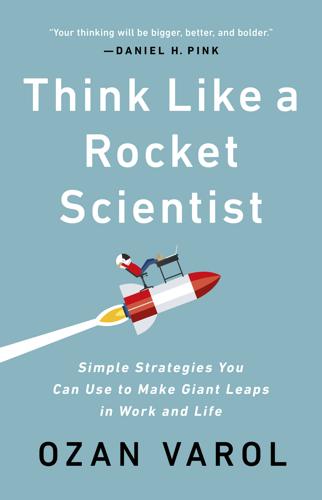
Think Like a Rocket Scientist: Simple Strategies You Can Use to Make Giant Leaps in Work and Life
by
Ozan Varol
Published 13 Apr 2020
Alexander, “Little Joe Series,” in This New Ocean: A History of Project Mercury (Washington, DC: NASA, 1989), https://history.nasa.gov/SP-4201/ch7-7.htm. 4. NASA, “MR-1: The Four-Inch Flight,” in This New Ocean: A History of Project Mercury (Washington, DC: NASA, 1989), https://history.nasa.gov/SP-4201/ch9-7.htm. 5. Jeffrey Kluger, “On TIME’s Podcast ‘Countdown:’ The Flight That Nearly Took Neil Armstrong’s Life,” Time, July 31, 2017, http://time.com/4880012/neil-armstrong-apollo-gemini-nasa. 6. FailCon, “About FailCon,” http://thefailcon.com/about.html; FuckUp Nights, https://fuckupnights.com. 7. Shane Snow, Smartcuts: The Breakthrough Power of Lateral Thinking (New York: HarperBusiness, 2014), Kindle. 8. Gene Kranz, Failure Is Not an Option: Mission Control From Mercury to Apollo 13 and Beyond (New York: Simon & Schuster, 2009), 12. 9.
…
Starbuck and Milliken, “Challenger: Changing the Odds.” Epilogue: The New World 1. Ross Anderson, “Exodus,” Aeon, September 30, 2014, https://aeon.co/essays/elon-musk-puts-his-case-for-a-multi-planet-civilisation. 2. Paul Harris, “Neil Armstrong’s Death Prompts Yearning for America’s Past Glories,” Guardian, August 27, 2012, www.theguardian.com/science/2012/aug/26/neil-armstrong-passing-us-yearning-glory. 3. Marina Koren, “What’s So Special About the Next SpaceX Launch,” Atlantic, March 1, 2019, www.theatlantic.com/science/archive/2019/03/nasa-prepares-pivotal-spacex-launch-iss/583906; Brad Tuttle, “Here’s How Much It Costs for Elon Musk to Launch a SpaceX Rocket,” Money.com, February 6, 2018, http://money.com/money/5135565/elon-musk-falcon-heavy-rocket-launch-cost. 4.
…
The giant rocket to take the astronauts to the Moon, he explained, would be “made of new metal alloys, some of which have not yet been invented, capable of standing heat and stresses several times more than have ever been experienced, fitted together with a precision better than the finest watch” and sent “on an untried mission, to an unknown celestial body.”7 Yes, even the metals needed to build the rocket hadn’t been invented. We jumped into the cosmic void and hoped we would grow wings on the way up. Miraculously, the wings sprouted. In 1969, less than seven years after Kennedy’s pledge, Neil Armstrong took his giant leap for mankind. A child who was six years old when the Wright brothers took their first powered flight—lasting all of twelve seconds and moving 120 feet—would have been seventy-two when flight became powerful enough to put a man on the Moon and return him safely to the Earth.

Infinity in the Palm of Your Hand: Fifty Wonders That Reveal an Extraordinary Universe
by
Marcus Chown
Published 22 Apr 2019
“A Draft Sequence of the Neandertal Genome” by Richard Green et al (Science, Vol. 328, p. 710, May 2010: http://science.sciencemag.org/content/328/5979/710.full). 10. Missed Opportunity 1. “Neil Armstrong’s Photo Legacy: Rare Views of First Man on the Moon” by Robert Pearlman (Space.com, 27 August 2012: https://www.space.com/17308-neil-armstrong-photo-legacy-rare-views.html). 2. “Man on the Moon—Neil Armstrong’s Iconic Photograph” (Amateur Photographer, 24 August 2017: http://www.amateurphotographer.co.uk/iconic-images/moon-iconic-photograph-neil-armstrong-18051). 3. “The Apollo Astronaut Who Was Allergic to the Moon” by Lucas Reilly (Mental Floss, 6 February 2017: http://mentalfloss.com/article/91628/apollo-astronaut-who-was-allergic-moon). 4.
…
—ALAN SHEPARD (APOLLO 14 ASTRONAUT) DURING THE APOLLO PROGRAM, NASA, by its own estimates, spent about $25 billion on sending humans to the moon, which must be well in excess of $100 billion dollars in today’s money. But, incredibly, the American space agency missed out on arguably the biggest photo opportunity of all time. It failed to obtain a photograph of the first man on the moon, Neil Armstrong. Buzz Aldrin, Armstrong’s copilot and the second man to set foot on the moon, simply did not take one. Actually, this is not quite true. There is one photo of Armstrong on the moon—only he has his back to the camera!1 Additionally, in Armstrong’s iconic photo of Aldrin on the lunar surface, it is possible to see his own small white figure reflected in Aldrin’s helmet visor.
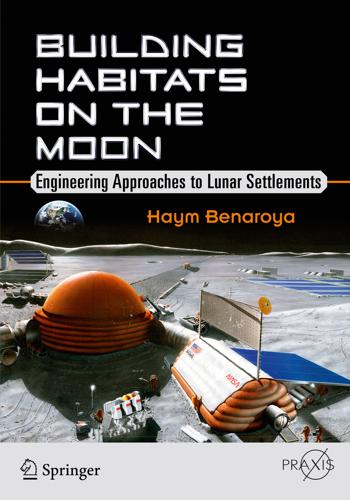
Building Habitats on the Moon: Engineering Approaches to Lunar Settlements
by
Haym Benaroya
Published 12 Jan 2018
We have a situation in the U.S. where the White House and Congress are at odds over what the future direction should be. They’re sort of playing a game and NASA is the shuttlecock that they’re hitting back and forth.” Neil Armstrong. “Yeah, I wasn’t chosen to be first. I was just chosen to command that flight. Circumstance put me in that particular role. That wasn’t planned by anyone.” Neil Armstrong. “I think the Space Shuttle is worth one billion dollars a launch. I think that it is worth two billion dollars for what it does. I think the Shuttle is worth it for the work it does.” Pete Conrad. “The Space Shuttle has been a fantastic vehicle.
…
“I think most astronauts are not risk takers. We take calculated risks for something that we think is worthwhile.” Michael J. Massimino. “I believe every human has a finite number of heartbeats. I don’t intend to waste any of mine.” Neil Armstrong. “Well, I think we tried very hard not to be overconfident, because when you get overconfident, that’s when something snaps up and bites you.” Neil Armstrong. References 1. Committee on FAA Airworthiness Certification Procedures, National Research Council, 1980, Improving Aircraft Safety, 118 pages; Committee on FAA Airworthiness Certification Procedures, National Research Council, 1998, Improving the Continued Airworthiness of Civil Aircraft: A Strategy for the FAA’s Aircraft Certification Service, 86 pages. 2.
…
“10, 9, ignition sequence start, 6, 5, 4, 3, 2, 1, zero. All engines running. Liftoff! We have a liftoff! Thirty-two minutes past the hour. Liftoff on Apollo 11!” Jack King, NASA Chief of Public Information, on the launch of the Apollo 11 over a live television broadcast on July 16, 1969. “Houston, Tranquility Base here. The Eagle has landed.” Neil Armstrong tells NASA’s Mission Control base in Texas that the Eagle landing module has reached the Moon’s surface on July 20, 1969. “This is the LM pilot. I’d like to take this opportunity to ask every person listening in, whoever and wherever they may be, to pause for a moment and contemplate the events of the past few hours and to give thanks in his or her own way.”

Of a Fire on the Moon
by
Norman Mailer
Published 2 Jun 2014
But the voice of the Public Affairs Officer came out of the loudspeaker mounted on a speaker’s platform on the grass in front of the grandstand. This is Apollo-Saturn Launch Control. T minus 61 minutes and counting—T minus 61 minutes on the Apollo 11 countdown, and all elements are GO at this time. Astronaut Neil Armstrong has just completed a series of checks on that big Service Propulsion System engine that sits below him in the stack. We want to assure ourselves before lift-off that that engine can respond to commands from inside the spacecraft. As Neil Armstrong moved his rotational hand controller we assured ourselves that the engine did respond by swiveling or gimbaling. Aquarius felt chopped into fragments. The combination of waiting in line at the mechanical vendor, of undergoing Lyndon B.
…
You can expect nothing less on a night so filled with heat, human meat, bubbles of fear, prayer soft as love, and tropical sex in every sauce. And that mill worker with red hair and gray-green eyes, red sunburn, red peeling skin on his knotty forearms—he could be an astronaut in another life. He looks like an older version of Neil Armstrong, maybe, he looks like some of them, like Gordon Cooper for sure, or Deke Slayton, or Walt Cunningham of Apollo 7, yeah, the mill worker is tonight an American all drenched in pride and fear and sorrow—his wild rebel yell guaranteed to diminish each year, is riding the range with awe tonight. He has worked with machines all his life, he has tooled cars to the point where he has felt them respond to his care, he has known them and slept beside them as trustingly as if they were hunting dogs, he knows a thousand things about the collaboration between a man and a machine, and he knows what can go wrong.
…
What we are seeking in tomorrow’s trip is indeed that key to our future on earth. We are expanding the mind of man. We are extending this God-given brain and these God-given hands to their outermost limits and in so doing all mankind will benefit. All mankind will reap the harvest.… What we will have attained when Neil Armstrong steps down upon the moon is a completely new step in the evolution of man.” (Which would lead Aquarius days later to wonder at the origin of Armstrong’s first speech on the moon.) “It will cause a new element to sweep across the face of this good earth and to invade the thoughts of all men.” He was almost done with his formal remarks.
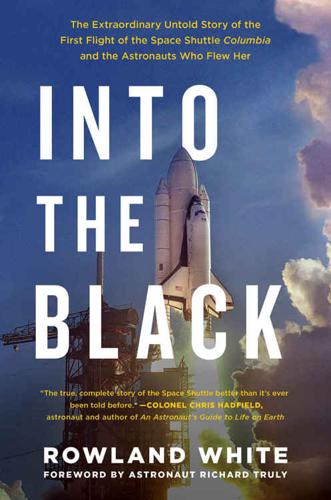
Into the Black: The Extraordinary Untold Story of the First Flight of the Space Shuttle Columbia and the Astronauts Who Flew Her
by
Rowland White
and
Richard Truly
Published 18 Apr 2016
Stafford began, offering a glimmer of hope as he talked through plans for the Apollo missions 13 to 19 and Skylab beyond that. Stafford’s words were powerfully reinforced by action. As the MOL group pressed their case in interviews with Deke Slayton, the director of Flight Crew Operations, in July 1969, Neil Armstrong, Mike Collins and Buzz Aldrin were already on their way to the moon aboard Apollo 11. TWELVE Houston, 1969 With Neil Armstrong’s descent to the lunar surface on July 20, 1969, NASA, after an extraordinary eight-year campaign, had succeeded in “putting a man on the moon.” Inside Mission Control, John Young wasn’t sure anyone was following the journey with deeper interest than he and his Apollo 10 comrades were.
…
That, though, seemed positively conventional next to Dottie’s keen interest in astrophysics. Growing up in New Orleans in the 1930s, Dottie had known that there would one day be men on the moon. Now, thirty years later, she was working as an engineer at Houston’s Manned Spacecraft Center and the prospect of Neil Armstrong and Buzz Aldrin realizing that goal was just months away. After graduating with a degree in mathematics in 1948, Lee had trained on the job under Houston’s chief engineer, Max Faget. Part of the team working on the heat shield that would protect the Apollo 11 crew as they returned to Earth, she was already anticipating the celebrations that would mark their safe return.
…
And that meant gathering together experts in every field. • • • Engineer Dottie Lee got the call on a Friday afternoon. She was with contractors from Avco in Building 13, working on analysis of the Apollo command module heat shield. In May, Apollo 10 would all but land on the moon before returning home; then in July, Neil Armstrong, Buzz Aldrin and Michael Collins were due to fly the big one: Apollo 11. Lee’s boss called her up to his office. “Monday morning,” he told her, “you’re to report to Building 36. You don’t tell anybody where you’re going or what you’re going to do. Read this document.” He handed her a sheaf of paper that elaborated on Gilruth and Faget’s ideas and concepts for a vehicle that could reach orbit then glide back down to Earth and land horizontally.
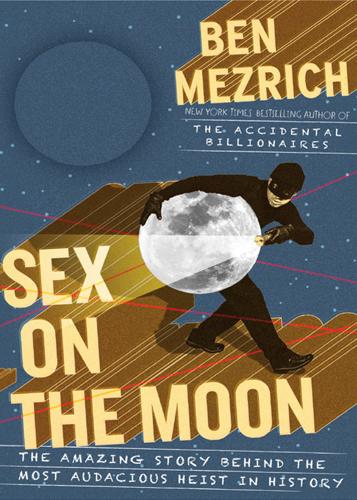
Sex on the Moon: The Amazing Story Behind the Most Audacious Heist in Histroy
by
Ben Mezrich
Published 11 Jul 2011
He realized, as he read it to himself, that it was from the very first Apollo mission. It had been collected by Neil Armstrong—the first man on the moon. Thad lifted the little container out, but he couldn’t get the words to come out of his mouth. Rebecca and Sandra were both looking at him. Finally, he cleared his throat. “This one I’m keeping.” “Thad—” “We have more than enough to sell.” And then he had an even better idea. He was going to keep a little bit from each sample—just some dust, a pebble or two. Even after selling what they sold, he’d have the best rock collection in the world. He placed the container with Neil Armstrong’s sample aside and went back to the safe.
…
But it was still amazing to see this gray-haired, slightly balding, bespectacled scientist—a genius who had taken part in the greatest adventure in modern human history—so enthusiastically involved in something new, something that would take at least a quarter of a century to become real. At the beginning of the speech, Gibson talked about the first samples he’d ever seen when he started at NASA—the Apollo 11 samples, which were collected by Neil Armstrong, the first man on the moon. Gibson went on to describe how different the samples were from each successive moon mission, how each of the six landing spots had been chosen to study different areas of the moon’s topography. The results were startlingly different types of rock, from the very fine-grained materials brought back from the valley of Taurus Littrow, a deep mountain valley in the northeastern part of the moon—a material that was made up of little tiny beads commonly known as “orange glass,” to the gray, almost black Apollo 17 samples—the very last samples ever collected by human beings, from the dark portion of the moon.
…
Couple of guys, walking around hitting golf balls, planting some freakin’ flag—you think any of that was real?” Thad rubbed his eyes, trying to figure out if the stoner was playing with him, or actually meant what he was saying. He realized that he had never explicitly told Gordon that he worked at NASA. Gordon had no idea that Thad hung around men who had actually been there when Neil Armstrong had walked on the moon. “So you think—” Thad started, and then stopped himself. He wasn’t going to get into an argument about conspiracy theories. “Look, here’s the thing. I might know somebody who can get his hands on a couple of rocks. They’re worth a lot of money, if we can find someone who’s interested.
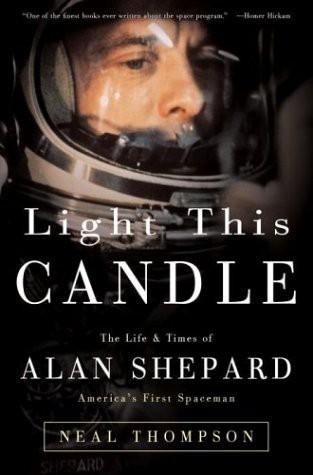
Light This Candle: The Life & Times of Alan Shepard--America's First Spaceman
by
Neal Thompson
Published 2 Jan 2004
But in the interview room he’d act like a cold, hard stranger. And when he later called to tell a candidate he’d been selected, he wanted a black-and-white response. One of those selected told Shepard he was “99 percent sure” he’d say yes, which Shepard said was an unacceptable answer. Once they were chosen—men like Neil Armstrong, Pete Conrad, Jim Lovell, and Frank Borman—the next astronauts would come to understand Shepard’s attitude. NASA could only build so many rockets and schedule so many flights. Any new-comer was seen as a threat, a competitor. As the number of astronauts grew in subsequent years, so did the intrigue: rooting for your friends to fail, scheming to get ahead, always on guard against some form of political sabotage.
…
They spun him in the centrifuge and dunked him underwater and whipped him about in the MASTIF. These were all efforts to shake loose Dr. House’s tube, but they all failed—the flesh around the tube in his ear had healed and now held the tube tightly in place. On July 16 Alan and Louise joined the crowds at the Cape to watch Neil Armstrong, Mike Collins, and Buzz Aldrin make history in Apollo 11. In a roped-off VIP section of the viewing stands, Shepard stood off by himself, looking out at the enormous skyscraper of a rocket, the same Saturn 5 booster that would soon deliver him above. He stood looking dreamily out at the rocket standing three miles away, “aloft in my own thoughts,” when an old man wearing rumpled clothes and an upside-down sailor cap approached and introduced himself.
…
The same was true for all of us,” Kraft said years later. “If we’d been older and wiser, we would have known that we couldn’t get it all done. But we weren’t. So we did it.” Not, however, without various terrifying imperfections. Three days after leaving the Cape, Apollo 11 reached the moon and began to circle it. Neil Armstrong and Buzz Aldrin climbed through a hatch into their lunar module, called Eagle, and separated from the nose of the command module, called Columbia,piloted by Mike Collins. Standing side by side inside the backward-flying LM, Armstrong and Aldrin fired the thruster engines that slowed Eagle’s orbit and allowed it to be pulled by the moon’s mild gravity down toward the lunar surface.
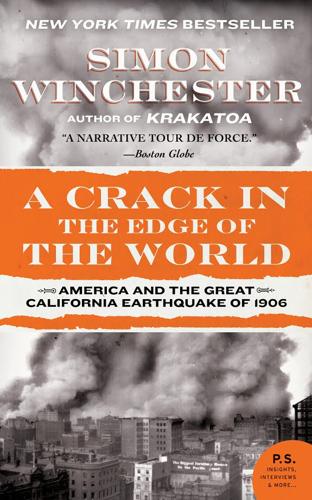
A Crack in the Edge of the World
by
Simon Winchester
Published 9 Oct 2006
There is, for a start, an interesting synchronicity at work: at the moment when Thomas and Lovelock were putting forward their ideas (in the late 1960s, at the same time as the beginning of space travel and, in part, because of it, of course), the geological sciences were also changing very profoundly, as we shall see. Neil Armstrong was able to gaze across the quarter of a million miles that separate these two small planetary bodies and look directly towards that area of America from which he had come, at the hills and valleys of the selfsame rocks where he had grown up – rocks that established geology and the fossil record tell us belong to the Silurian Age. And I have no doubt that it was in large measure because of this most extraordinary vision – extraordinary both for Neil Armstrong and, in time, for the rest of us too – that the birth was signalled of what is now coming to be regarded as an entirely new science.
…
It is a town with a past built on the solid bedrock of America’s previous success, a present that clings by its fingernails to its own notion of stability, and yet a future in which the old Ohio bedrock seems not quite as firm as had initially been supposed, one that most people in consequence care not to ponder too closely. However, those who expect Wapakoneta to be only blandly Middle American, and perhaps a little unadventurous and dull, might be surprised to find another side to its history. The astronaut Neil Armstrong, born in the town in 1930, went to the local high school and, quite rightly, no one will let you forget it. (Only two other luminaries of the town are thought worthy of mention, and both are by contrast memorably forgettable: one a heavily moustachioed hero of the Civil War who fought at Vicksburg; the other the screenwriter of The Bells of St Mary’s, who also happened to have invented a device allowing naval vessels to lift mines harmlessly from the seabed.)
…
It is fitting that this small town should celebrate so eagerly the exploration of space: the worldwide excitement over the samples of lunar rock brought back to earth is just one small indication of the value, in real scientific terms, of America’s having sent up a man to get it. But there was an unanticipated and less obvious consequence of the expedition, the effect of which has been, in many ways, rather more enduring. For it appears now that one field of scientific discovery was changed for ever by the journeyings of Neil Armstrong and all those others who have gone to the moon in the years since. This sea change has come about specifically in the science of geology, and it is a change that has its origins in a very simple fact: when Wapakoneta’s first citizen was teetering gingerly about up there on the moon, he was able to do something that had never been done before, and that provided science with a profound, paradigm-shifting moment of unforgettable symbolism: he was able to stand on the lunar surface and look back at the earth.
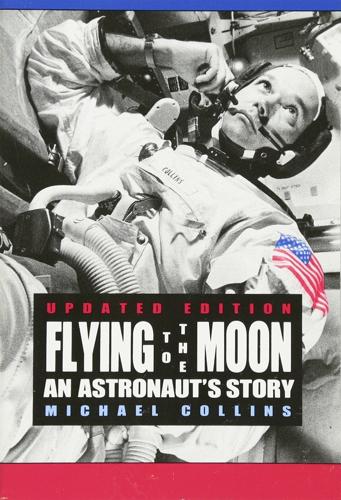
Flying to the Moon: An Astronaut's Story
by
Michael Collins
Published 1 Jan 1976
I am too old to fly to Mars, and I regret that. But I still think I have been very, very lucky. I was born in the days of biplanes and Buck Rogers, learned to fly in the early jets, and hit my peak when moon rockets came along. That’s hard to beat. 1 Early on the morning of July 20, 1969, I was circling the moon with Neil Armstrong and Buzz Aldrin in our spacecraft Columbia. We had just awakened from a short sleep and were sucking lukewarm coffee out of plastic tubes and munching on bacon which had been squeezed into little cubes, like lumps of sugar. While we were eating our breakfast, we were talking on the radio with our friends in Mission Control in Houston, Texas.
…
They probably just wanted to make us laugh a little bit so we wouldn’t be too nervous about landing on the moon for the first time ever. We were a little nervous that morning. We were concerned about how well our spacecraft and computers would work. We also worried about the rocket blast from Eagle, our lunar module, which might kick up a lot of dust and prevent Neil Armstrong from being able to see well enough to land. Or suppose Neil couldn’t find a spot smooth and level enough to put Eagle down? As it turned out, we need not have worried about the moon, because the Eagle landed beautifully in the Sea of Tranquility, and Neil and Buzz were able to walk around and collect some rocks.
…
I was happy that everything had gone so well, and sad that I had not been able to go with Borman and Anders instead of Lovell. In place of a trip to the moon, I had only a scar on my throat and a great desire to make up for lost time. The news was not long in coming, and it was all good. I was assigned to the Apollo 11 crew, with Neil Armstrong and Buzz Aldrin! We were to be the first crew to attempt a lunar landing, provided everything went well. By that I mean that Apollos 9 and 10 must make near-perfect flights before us. Apollo 9 was the first test flight of the lunar module, in earth orbit, and Apollo 10 was to be a dress rehearsal in lunar orbit, involving a rendezvous but not a landing.
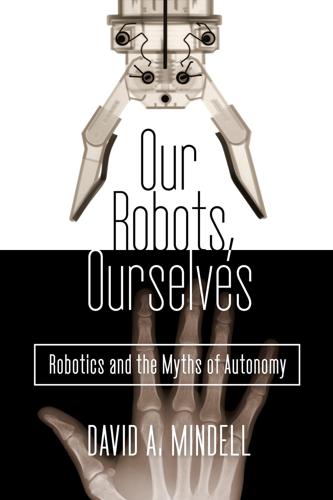
Our Robots, Ourselves: Robotics and the Myths of Autonomy
by
David A. Mindell
Published 12 Oct 2015
“The twentieth century was born yearning for a new type of hero,” writes aviation historian Robert Wohl, “someone able to master the cold, inhuman machines that the nineteenth century bequeathed and at the same type transforming them into resplendent art and myth.” From Charles Lindbergh to Neil Armstrong to “Sully” Sullenberger, the cultural icon of the pilot embodied the human on the cutting edge of technology and social change. Analogies flowed freely—the adventurer of the sky, the aerial artist, the athlete of the third dimension. World War I offered new identities, particularly the “knight of the air” flying fighter ace, reviving ancient mythologies to rescue heroism from an anonymous war of trenches and random death. Ironically, most pilots, including Wilbur Wright, Charles Lindbergh, and Neil Armstrong conformed to none of these archetypes so much as to that of the mechanic or engineer imbued with the middle-class virtues of temperance, deliberation, and focus.
…
From its beginning in the twentieth century, spaceflight has raised the question of what kind of presence, and what kinds of machines, best convey human experience. Nearly fifty years ago, when Neil Armstrong landed the lunar module on the moon, he had both a HUD and an autoland. The HUD was an early, passive design—a series of angle markings etched into Armstrong’s window. The onboard computer read out a number on an LED-like display, and if Armstrong positioned his head correctly he could look through that angle marked on the window. Directly behind the indicated number, then, he saw the actual spot on the moon that the computer was flying him toward. Computer graphic depiction of Neil Armstrong’s view out the window from a few hundred feet above the moon during the Apollo 11 landing.
…
When lives and resources are at stake, time and time again, over decades, from the deep ocean to the outer planets, we have reined in the autonomy. It is not a story about progress—that one day we’ll get it right—but a story about the move from laboratory to field. That transition tempers autonomy, whether the task is to respond to instructions and return useful data or to protect or defend human life. In retrospect, Neil Armstrong’s last-minute manual intervention—turning off the automation of his moon landing—signaled the limits of the twentieth-century vision of full autonomy, and foretold the slow advent of potent human collaboration and presence. The lone, autonomous drone is as much an anachronism as is the lone, unconnected computer.
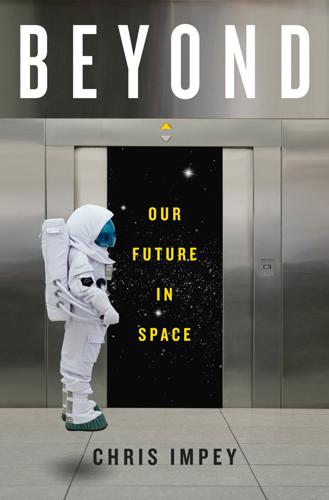
Beyond: Our Future in Space
by
Chris Impey
Published 12 Apr 2015
People who witnessed a Saturn V launch recounted that even at a distance of two miles, its engines produced coruscating heat and waves of pressure that passed through the ribcage. The five massive engines gulped 15 tons of fuel each second and produced eight million pounds of thrust. The giant rocket was 60 feet taller than the Statue of Liberty (Figure 10). In July 1969, there were plenty of white knuckles at Mission Control in Houston when Neil Armstrong assumed manual control of the Apollo 11 landing module, after a series of technical glitches, and guided it over a field of rugged boulders to a soft landing on the Moon with less than a minute of fuel left. Back in Houston, Charles Duke radioed him: “You got a bunch of guys about to turn blue.
…
This incident and the death of seven aboard the Space Shuttle Columbia in 2003 are sobering reminders of the hazards of space travel. However, the Space Shuttle did provide case studies in the importance of having astronauts rather than robots work in space. Robots are not versatile or reliable enough to match a well-trained astronaut. We can all admire the “seat-of-the-pants” problem-solving skills demonstrated by Neil Armstrong as he guided Apollo 11 over a boulder field with hardly any fuel left, and by the Apollo 13 crew as they nursed their crippled spacecraft around the Moon and home to safety. In particular, the five servicing missions of the Hubble Space Telescope defined the state of the art for astronauts, with multiple long space walks, challenging technical jobs, and difficult decisions made under time pressure.
…
Like Chuck Yeager, he had his share of close calls; on one flight, he lost power to all onboard systems and had to bring the X-15 down from an altitude of 173,000 feet for an emergency landing.12 The Air Force and NASA collaborated on developing the X-15, but they diverged when the young space agency chose the Atlas and Redstone rockets for the Mercury program that put the first Americans in space. Eight Air Force pilots flew the X-15 high enough to earn their astronaut wings, including Neil Armstrong, who would later become the first man to set foot on the Moon.13 Only three X-15s were built. They flew 199 missions. One pilot was lost when his plane went into a hypersonic spin and broke apart at 60,000 feet, scattering wreckage over 50 square miles. The only other spaceplanes so far have been NASA’s Space Shuttle, its Russian counterpart Buran (which flew once, in 1988), Burt Rutan’s SpaceShipOne (which flew seventeen times between 2003 and 2004 and is discussed in chapter 5), and the X-37.
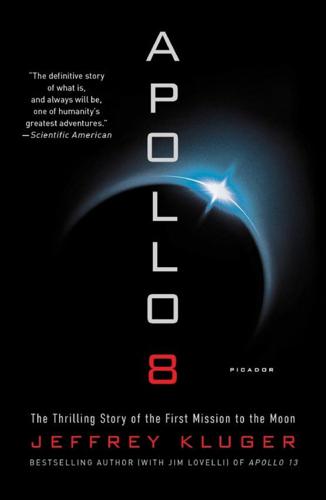
Apollo 8: The Thrilling Story of the First Mission to the Moon
by
Jeffrey Kluger
Published 15 May 2017
Inside and outside NASA, the nine astronauts who followed the Original Seven were often known simply and glamorously as the Next Nine. Four of the new group—Frank Borman, Jim McDivitt, Tom Stafford, and Ed White—were Air Force, meaning that Borman’s beloved service still hadn’t achieved a majority. They were joined by four Navy men: John Young, Elliot See, Jim Lovell, and Pete Conrad. And finally there was an oddball, Neil Armstrong, a Navy man originally, and one who had flown seventy-eight combat missions over Korea. In 1960, however, he had retired and become a civilian test pilot. To some, it was more than a little awkward that NASA would recruit an astronaut who could dress only in civvies. The Original Seven sniffed at their new colleagues, and the Next Nine acutely felt the disdain.
…
But the odds of that happening were slim: Collins kept exceedingly fit and did not do a lot of the hard drinking and fast driving some of the other astronauts did. If he was assigned to fly a mission, there was very little chance he wouldn’t go. That meant that Lovell would get a starting spot on a later, distinctly better, flight: the center seat on Apollo 11, between Neil Armstrong on the left and Buzz Aldrin on the right. Apollo 11 might or might not be a lunar landing, and even if it was, Lovell would have to wait overhead in lunar orbit while Armstrong and Aldrin flew down in the LEM and got their boots covered with moon dirt. Still, 11 could easily be a bona fide moon shot, an adventure that looked a lot better than the Earth-orbit dog-paddling Borman had been assigned.
…
He then went from bedroom to bedroom, knocking on each door, opening it up so that the light could flood in, pointing at his watch and reminding the crew of what time it was and that medical call was in fifteen minutes. The menu of steak, eggs, toast, fruit, juice, and coffee was the same as it had been since the Mercury days, and the practice of having the backup crew tuck in with the prime crew remained unchanged, too. This morning, that meant breakfasting with Neil Armstrong, Buzz Aldrin, and rookie Fred Haise. Lovell looked their way, reflecting that but for Michael Collins’s bad back, he would have been a member of that trio of stay-at-home astronauts today. Lovell had only recently come to know Haise—the man who’d replaced him on the backup crew when he’d replaced Collins on the prime crew—but he liked what he saw.
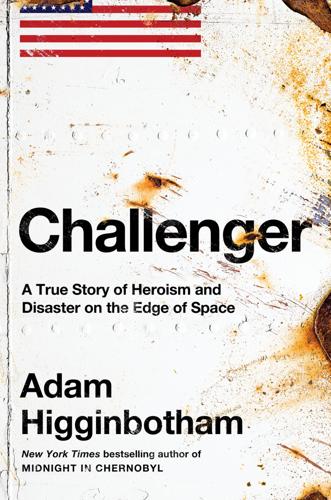
Challenger: A True Story of Heroism and Disaster on the Edge of Space
by
Adam Higginbotham
Published 14 May 2024
Richard “Dick” Covey Bob Crippen Anna Fisher Robert “Hoot” Gibson Frederick Gregory Henry “Hank” Hartsfield Frederick “Rick” Hauck Bruce McCandless II Ron McNair Story Musgrave George “Pinky” Nelson Ellison Onizuka Judy Resnik Sally Ride Francis “Dick” Scobee Rhea Seddon Mike Smith James “Ox” van Hoften The Space Participants Jake Garn Greg Jarvis Christa McAuliffe Barbara Morgan Bill Nelson The Rogers Commission William Rogers Chairman Neil Armstrong Vice Chairman Dr. Richard Feynman Nobel Prize–winning physicist General Donald Kutyna, U.S. Air Force Former head of Pentagon shuttle operations Titles in January 1986 unless otherwise noted. PROLOGUE Flight Control Room Two Johnson Space Center, Houston January 28, 1986, 8:30 a.m.
…
Inside the cabin, Cernan and mission geologist Harrison “Jack” Schmitt completed the final checks to rendezvous Challenger with the command module orbiting above them. Cernan’s finger moved to the switch that would fire the ascent engine. “OK, Jack,” he said. “Let’s get this mother out of here.” Just as they had when Neil Armstrong and Buzz Aldrin became the first human beings to set foot on the lunar surface some three years earlier, US TV networks carried live pictures of the Apollo 17 mission. This time, however, viewers called the CBS switchboard in frustration: the coverage had made them miss the latest developments in the hot hospital drama, Medical Center
…
On Christmas Eve, the astronauts beamed back images of a distant, fragile Earth hanging in the dark void of space, and recited from Genesis. The verses crackled across the downlink to Mission Control, where rocket engineers wept at their consoles, and around the world a billion people—the largest broadcast audience in history—listened in. And when Neil Armstrong stepped from the footpad of the lunar lander into the Sea of Tranquility on July 20, 1969, an estimated 600 million people were watching live on television, and all three US networks dedicated their airtime to the events for thirty-six continuous hours. Two months later, Vice President Spiro Agnew laid out his timetable to land an American on Mars in 1986.

The Mission: A True Story
by
David W. Brown
Published 26 Jan 2021
“Hubble Space Telescope Sees Evidence of Water Vapor Venting off Jupiter Moon,” NASA, last modified August 7, 2017, http://www.nasa.gov/content/goddard/hubble-europa-water-vapor. 475.Wright Brothers National Memorial North Carolina, “Announcing Details of the 50th Anniversary of the Apollo 11 Moon Landing Event,” press release, July 16, 2019, https://www.nps.gov/wrbr/planyourvisit/apollo-11-50th.htm. 476.A. Hamer, “Neil Armstrong Took a Piece of the North Carolina Outer Banks to the Moon,” Curiosity, last modified October 13, 2018, https://curiosity.com/topics/neil-armstrong-took-a-piece-of-the-north-carolina-outer-banks-to-the-moon-curiosity. 477.W. Guthrie, “This Land Is Your Land,” on Folksay: American Ballads and Dances (New York: Asch Record Company, 1944). 478.J. Salute, telephone interview by author, October 25, 2018. 479.T.
…
They’d pressurize the Eagle, and boom: Mare Tempestatis. NASA needed geologists to sharpen their pencils and solve the problem most ricky-tick—and to the great relief of Apollo astronauts, they did. The magnitude of the achievement of geologists to understand an orbiting ancient alabaster rock was reflected in the second thing Neil Armstrong said, after taking a giant leap for mankind: “And the—the surface is fine and powdery. I can—I can pick it up loosely with my toe. It does adhere in fine layers like powdered charcoal to the sole and sides of my boots. I only go in a small fraction of an inch, maybe an eighth of an inch, but I can see the footprints of my boots and the treads in the fine, sandy particles.”43 And planetary science was off to the races.
…
And there they were: the historian and the moon scientist, making lunar history. At night, the two of them would sometimes go outside and look up at the moon and just think . . . wow. Not only about the Apollo program, but where their lives had taken them. They’d look up, and they knew it would happen, the moon landings—had no doubt. What they didn’t know was that with Neil Armstrong’s first step on the moon and his second sentence on its powdery surface—an instant geologic analysis—this would not be the capstone of some brief, bracing phase of Ron’s career in geology but rather would mark the beginning of something new entirely. After his two-year army hitch ended, Ron was supposed to go back to Lafayette and look for bugs, but you put men on the moon, be among the first to apply scientific rigor to something so spectacular and unsullied, unpack the geology of a pristine world unspoiled by humankind, and you look around yourself at Ames, see not only what they’re doing—they—us—what we’re doing—and not temporarily: Armstrong was the starting point—and he knew Armstrong!

Snowden's Box: Trust in the Age of Surveillance
by
Jessica Bruder
and
Dale Maharidge
Published 29 Mar 2020
And if you’re a whistleblower, it’s worth remembering: snail mail remains among the best ways to leak material to a journalist. In the summer of 2019, the New York Times received a brown envelope containing almost a hundred pages of sealed court and other documents that revealed possible medical malpractice in the death of Neil Armstrong, the first human on the moon. Even if you don’t foresee a need for encrypted communications, it’s worth making sure online predators aren’t using email as a phishing rod into your life. Avoid following links and opening files from untrusted senders. If you must open a suspicious attachment, experts recommend that you do it in Google Docs, so any infections don’t end up on your computer.
…
p. 136 Moxie Marlinspike on Trump: Brian X. Chen, “Worried about the Privacy of Your Messages? Download Signal,” New York Times, December 7, 2016. p. 136 Facebook buys WhatsApp: Adrian Covert, “Facebook Buys WhatsApp for $19 Billion,” CNN Business, February 19, 2014. p. 138 snail mail: Scott Shane and Sarah Kliff, “A Scoop about Neil Armstrong Arrived in a Plain Brown Envelope,” New York Times, August 1, 2019. p. 139 NSA cracks VPNs: “NSA Broke into Secure Network of Al Jazeera and Others: Report,” Al Jazeera, August 16, 2018. p. 140 laptop cameras: Katie Rogers, “Mark Zuckerberg Covers His Laptop Camera. You Should Consider It, Too,” New York Times, June 22, 2016.
…
Manning” pseudonym Manning, Chelsea, 10, 28–9, 63, 130 Marcus, James, 138 Marlinspike, Moxie, 110, 136 Mayer, Jane, 43 McAleenan, Kevin, 136–7 McMullan, Patrick, 112–13 Medsger, Betty, 86 Microsoft, 48, 145 Miller, Shane, 54, 55, 56 Mills, Lindsay, 80, 133 Mondale, Walter, 89 Moscow, 42, 85, 133 Musk, Tosca, 129 My Country, My Country (Poitras), 14, 15 National Security Agency (NSA), 1, 20, 22, 57, 81; AT&T and, 66; “black budget,” 35; Church Committee and, 89–90; Clipper chip and, 6; congressional hearings (Clapper), 8–9; data harvesting and public disclosures, 48, 56, 57, 93; EFF lawsuit against, 66; FOIA letters, 124–5, 127; Hawaii, 58; metadata purges, 93; Patriot Act and, 92; Poitras and, 14, 76, 77; PRISM, 41–2; protests against, 83–5; Snowden position, 2; Trump, 10; Vietnam War protesters and, 90; view of Tails, 33; VPN cracking, 139; Wäscher on, 94 New Yorker, 43–4 New York Times, 18, 40, 45, 57, 86, 88; Cambridge Analytica scandal, 102; Manjoo column, 97–8; Neil Armstrong death and, 138; Pentagon Papers, 43 New York Times Magazine, 115 NSA. See National Security Agency (NSA) The Oath (Poitras), 64 Obama, Barack, 10, 47 Omidyar, Pierre, 126 OpenWhisper Systems, 136 Orwell, George, 31, 132–3 Palantir, 113 Passionflix, 129 Patel, Priti, 136–37 Patriot Act, 47, 84, 91–2 PEN, 107–8 Penning, Henk, 73–4 Pentagon Papers, 36–7, 43 PGP (Pretty Good Privacy), 69, 73, 138 Pidgin (software), 116 Poitras, Laura, 14–25, 31–46, 50, 54, 55, 61–5, 72–3, 80–1, 111, 115–33; Berlin, 18–19, 21, 22, 31, 59, 117–19, 123, 125–6, 132; Citizenfour, 119–20, 123–4; Customs and Border Patrol and airport detention, 15, 16, 37, 76; EFF role, 67; First Look Media, 127–9, 130; Guardian video, 48–9, 92; My Country, My Country, 14, 15; Micah Lee and, 70, 73, 74–8, 81; Oath, 64; Program, 18, 49–50, 72, 134; Risk, 16 Postal Service.
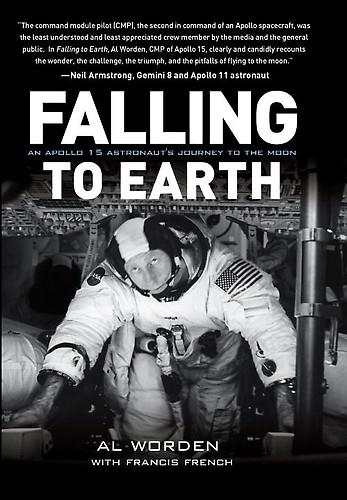
Falling to Earth
by
Al Worden
Published 26 Jul 2011
He was at the very least the equal of anyone in the astronaut office—and I suspected he was better than all of them. When he came to check out the spacecraft, he took meticulous notes, then gradually checked off each item to ensure that everything was resolved to his satisfaction. Absolutely no detail, however small, got past him. He’d flown in space once before, on the Gemini 8 mission in 1966 with Neil Armstrong, bedeviled by a stuck thruster which spun the spacecraft out of control. Dave and Neil nearly passed out, but kept their cool and saved the spacecraft and their lives by regaining control and returning from orbit. They impressed their NASA colleagues, especially their fellow pilots. They had taken care of the problem and made it home.
…
Rather than the fulfillment of an ambition, I hoped that Apollo 11 would be the beginning of sustained exploration of the moon. Not least, I will admit, because I wanted to fly there myself and didn’t want the program to end before I had my chance. I vividly remember the moment in July 1969 when mission commander Neil Armstrong and Buzz Aldrin, his lunar module pilot, touched down on the moon. I had been on yet another trip to the North American plant and was in the cockpit of my T-38 at El Toro Marine Corps Air Station in Orange County, south of Downey, preparing to fly home. The tower at the airfield told me that Apollo 11 was about to land and asked me if I would like them to relay the audio coverage.
…
Once again, I was glad that it had been designed with such well-tested components. It was amazing—everything was fine—but I bet that the launch was a very scary experience for the crew. I know I would probably have crapped myself. A couple of days later, Pete Conrad was ready to make his first step on the lunar surface. Neil Armstrong’s first words as he stepped on the moon—“That’s one small step for man, one giant leap for mankind”—were famous by then. Pete was Neil’s polar opposite in temperament, and many people wondered what he would say when he made his own first step. We had sprinkled a whole bunch of suggestions throughout Pete’s in-flight checklist, many of them so risqué that he would have been fired if he’d dared say them.
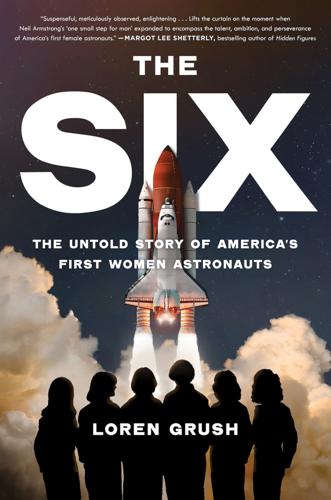
The Six: The Untold Story of America's First Women Astronauts
by
Loren Grush
Published 11 Sep 2023
George had selected Sally and her crew to fly on this mission, and he was there to see the astronauts one last time before they broke free of Earth’s gravity. With the stars still twinkling above, the van sped down a lone concrete road to its destination: the launchpad at LC-39A. The site had been home to previous trailblazing launches. It was the same place where astronauts Neil Armstrong, Buzz Aldrin, and Michael Collins had taken off in a monster Saturn V rocket more than a decade earlier, bound for the moon. Now, the launchpad was ready to host another pivotal mission—one that many felt was coming much too late. The RV carrying Sally’s crew slowed to a halt. They idled just three miles from the pad, stopping right outside the famous Launch Control Center, a squat gray and white building with thick concrete walls and wide sweeping windows angled toward the sky.
…
They’d deploy satellites and telescopes, cope with microgravity in spacesuits, maneuver robotic arms, meet presidents and royal dignitaries, speak in front of thousands of wannabe space explorers, and pave the way for dozens of women to come after. While all earned the status of pioneers simply by being selected, one had to go first and break the country’s highest glass ceiling before the rest. Sally had been that one, achieving a feat that would make her a household name alongside the likes of Alan Shepard, John Glenn, and Neil Armstrong. Being tapped to blaze the trail before anyone else would turn her into a feminist icon, a role model, and part of a Billy Joel lyric. It would also place a burden on her shoulders that she’d carry the rest of her life. But her assignment hadn’t been guaranteed from the start. The designation could have easily gone to Judy or Anna or any of the other women waiting in line.
…
Which of the Six would become The One? Sure, technically she wouldn’t be the first woman to ever fly in space, but she’d be the first American woman, and that would still hold tremendous weight. Her name would live on the elite list that included all the major US spaceflight pioneers, including John Glenn and Neil Armstrong. She’d be a pathbreaker whom history books would reference for centuries. Instantly, she’d become a hero to millions of young women around the country. And becoming The One would bring with it celebrity, contracts, validation, speaking fees, and a larger-than-life identity. The other women would still do groundbreaking work, but their names wouldn’t resound as loudly or as long.
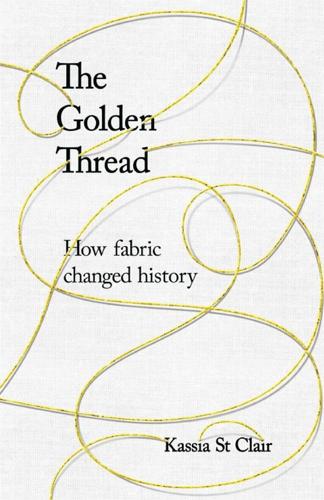
The Golden Thread: How Fabric Changed History
by
Kassia St Clair
Published 3 Oct 2018
But perhaps this is a possibility that we should give a little more thought to, each time we go shopping. 11 Under Pressure Suits Suitable for Space Suited to the Moon That’s one small step for man; one giant leap for mankind.1 Neil Armstrong, live transmission from the moon’s surface, 21 July 1969 In the early hours of 21 July 1969 (GMT), 528 million people – 15 per cent of the world’s population and 95 per cent of America’s – tuned in to watch as an ungainly white boot made the first human impression on the surface of the moon.2 For Neil Armstrong himself, it must have been uncanny. The landscape into which he stepped was devoid of colour. ‘It’s grey,’ he told Mission Control, ‘and it’s a very white, chalky grey, as you look into the zero-phase line; and it’s considerably darker grey, more like ash – ashen grey as you look out ninety degrees to the Sun.’
…
Timothy, et al., ‘The Earliest Surviving Textiles in East Asia from Chertovy Vorota Cave, Primorye Province, Russian Far East’, Antiquity, 86 (2012), 325–37 <https://doi.org/10.1017/S0003598X00062797> Kvavadze, Eliso, Bar-Yosef, Ofer, Belfer-Cohen, Anna, et al., ‘30,000-Year-Old Wild Flax Fibres’, Science, 325 (2009), 1359 Kyle, Donald G., Sport and Spectacle in the Ancient World, II (Chichester: Wiley Blackwell, 2015) L Lacemaker, The, Louvre <http://www.louvre.fr/en/oeuvre-notices/lacemaker> Larsen, Paul, ‘Re: Clothes, Clothes, Clothes’, 24 June 2017 Laskow, Sarah, ‘How Gore-Tex Was Born’, The Atlantic, 8 September 2014 <https://www.theatlantic.com/technology/archive/2014/09/how-gore-tex-was-born/379731/> Lavoie, Amy, ‘Oldest-Known Fibers to Be Used by Humans Discovered’, Harvard Gazette, 2009 <http://news.harvard.edu/gazette/story/2009/09/oldest-known-fibers-discovered/> [accessed 16 February 2017] Lazurus, Sydney, ‘Viscose Suppliers to H&M and Zara Linked to Severe Health and Environmental Hazards’, Spend Matters, 2017 <http://spendmatters.com/2017/06/22/viscose-suppliers-hm-zara-linked-severe-health-environmental-hazards/> [accessed 19 September 2017] Ledford, Adam, ‘Spiders in Japan: The Tiniest Kaiju’, Tofugu, 2014 <https://www.tofugu.com/japan/spiders-in-japan/> [accessed 11 January 2017] Lee Blaszczyk, Regina, ‘Styling Synthetics: DuPont’s Marketing of Fabrics and Fashions in Postwar America’, The Business History Review, 80, 485–528 ‘Leeds Woollen Workers Petition’, Modern History Sourcebook (Leeds, 1786) <https://sourcebooks.fordham.edu/halsall/mod/1786machines.asp> Leggett, Hadley, ‘1 Million Spiders Make Golden Silk for Rare Cloth’, Wired, 2009 Leggett, William F., The Story of Linen (New York: Chemical Publishing Company, 1945) Lenzing Group, The Global Fibre Market in 2016 (Lenzing Group, 2017) <http://www.lenzing.com/en/investors/equity-story/global-fiber-market.html> [accessed 19 September 2017] Levey, Santina M., Lace: A History (London: W. S. Maney and Son, 1983) Lewis, Cathleen, ‘What Does Alan Shepard’s Mercury Suit Have to Do with Neil Armstrong’s Apollo 11 Suit?’, National Air and Space Museum, 2015 <https://airandspace.si.edu/stories/editorial/what-does-alan-shepard%E2%80%99s-mercury-suit-have-do-neil-armstrong%E2%80%99s-apollo-11-suit> [accessed 9 December 2017] Lewis, David, The Voyaging Stars: Secrets of the Pacific Island Navigators (Sydney: Collins, 1978) Lewis, Randy, Molecular Biologist at the University of Utah, interview with author, September 2016 Lightfoot, Amy, ‘From Heather-Clad Hills to the Roof of a Medieval Church: The Story of a Woollen Sail’, Norwegian Textile Letter, II (1996), 1–8 Linden, Eugene, ‘The Vikings: A Memorable Visit to America’, Smithsonian, December 2004 <http://www.smithsonianmag.com/history/the-vikings-a-memorable-visit-to-america-98090935/> [accessed 18 October 2017] Litherland, Piers, ‘Re: Egyptian Linen’, 12 June 2017 Litsky, Frank, ‘El-Guerrouj Sets Record in Mile’, New York Times, 8 July 1999, section Sports, pp. 56, 60 Lu, Yongxiang (ed.), A History of Chinese Science and Technology, trans. by Chuijun Qian and Hui He (Shanghai: Springer, 2015), ii Lucas, A., and Harris, J.
…
Sue, ‘Captive Breeding and Husbandry of the Golden Orb Weaver Nephila Inaurata Madagascariensis at Woodland Park Zoo’, Terrestrial Invertebrate Taxon Advisory Group, 2014 <http://www.titag.org/2014/2014papers/GOLDENORBSUEANDERSEN.pdf> [accessed 3 January 2017] An Individual’s Guide to Climatic Injury (Ministry of Defence, 2016) ‘A Norse-Viking Ship’, the Newcastle Weekly Courant (Newcastle-upon-Tyne, 5 December 1891), section News ‘Apollo 11 – Mission Transcript’, Spacelog <https://ia800607.us.archive.org/28/items/NasaAudioHighlightReels/AS11_TEC.pdf> [accessed 7 December 2017] Appleton Standen, Edith, ‘The Grandeur of Lace’, the Metropolitan Museum of Art Bulletin, 16 (1958), 156–62 <https://doi.org/10.2307/3257694> Arbiter, Petronius, The Satyricon, ed. by David Widger (Project Gutenberg, 2006) <http://www.gutenberg.org/files/5225/5225-h/5225-h.htm> [accessed 14 August 2017] Arena, Jenny, ‘Reboot the Suit: Neil Armstrong’s Spacesuit and Kickstarter’, National Air and Space Museum, 2015 <https://airandspace.si.edu/stories/editorial/armstrong-spacesuit-and-kickstarter> [accessed 7 December 2017] Arnold, Janet (ed.), Queen Elizabeth’s Wardrobe Unlock’d: The Inventories of the Wardrobe of Robes Prepared in July 1600, Edited from Stowe MS 557 in the British Library, MS LR 2/121 in the Public Record Office, London, and MS v.6.72 in the Folger Shakespeare Library, Washington DC (London: W.
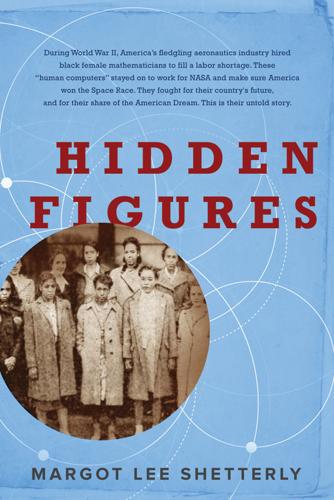
Hidden Figures
by
Margot Lee Shetterly
Published 11 Aug 2016
The world waited for the door of the crab-like mechanical contraption to open. It took four hours. Then, finally, at 10:38 p.m.: sighs, applause, exuberance, dumbstruck silence, from all corners of the Earth, as Neil Armstrong planted his foot on luna firma. The actual landing had been the one part of the mission that had been impossible to rehearse prior to the actual moment—and the most dangerous. The Apollo 11 astronauts had given the mission only a middling chance of success: though Neil Armstrong handicapped the odds of returning to Earth safely at 90 percent, he thought they had only a 50-50 chance of landing on the Moon on the first go. Katherine Johnson had confidence: she knew her numbers were right, and she assumed that everyone else—Marge Hannah and the fellas there in her office, Mary Jackson and Thomas Byrdsong and Jim Williams, everyone from the top of NASA to the bottom—had given their all to the mission.
…
.: Ibid. 243 fourth in command of the ship: Ibid. 243 asked him to tear up the resignation letter: Ibid. 244 curiosity always bested fear: Moore interview. 244 Then, finally, at 10:38 p.m.: CBS News coverage of Apollo 11 lunar landing,” https://www.youtube.com/watch?v=E96EPhqT-ds. 244 Neil Armstrong handicapped the odds: Neil Armstrong, interview with Alex Malley, 2011, https://www.youtube.com/watch?v=jfj2jqpst_Q. 245 “You have to expect progress to be made”: Johnson interview, December 27, 2010. 245 born at a time when the odds were more likely: 1920 US Census, Statistic of the Population. 245 circling the Moon every fifty-nine minutes: Richard Orloff, Apollo by The Numbers: A Statistical Reference (Washington, DC: National Aeronautics and Space Administration, 2005), http://histry.nasa.gov/SP-4029/Apollo_18-01_General_Background.htm. 246 plot a course to Mars: Johnson interview, January 3, 2011; Harold A.
…
Joshua Coleman knew as if from second sight that Katherine, his brilliant, charismatic, inquisitive youngest child—a black girl from rural West Virginia, born at a time when the odds were more likely that she would die before age thirty-five than even finish high school—would somehow, someday, unite her story with the great epic of America. And epic it was. Katherine allowed the moment, with all its implications, to sink in. There were still challenges ahead. She watched the men in the dust of the Moon and thought of the orbiting command service module, out of view of the camera, circling the Moon every ninety minutes. Neil Armstrong and Buzz Aldrin on the Moon would have a brief window to get back into the lunar lander and reconnect their dinghy with the mother ship above. After that, it would be three long days on the highway back to Earth, then through the fire of the atmosphere and into the terrestrial ocean below. Each leg carried the specter of the unknown; only after their landing matched the numbers of her equations, when they had been plucked from the ocean and cosseted in the waiting navy ship, would she be able to exhale.

How We'll Live on Mars (TED Books)
by
Stephen Petranek
Published 6 Jul 2015
These first explorers, alone on a seemingly lifeless planet as much as 250 million miles away from home, have everything in common with the trailblazers who preceded them—the great explorers throughout history who scaled mountains and sailed oceans to create new lives. And yet, despite their commonality with explorers of years past, these spacefaring pioneers are in every way more important than any explorers who have ever preceded them. Their presence on Mars represents the greatest achievement of human intelligence. Anyone who watched Neil Armstrong set foot on the moon in 1969 can tell you that, for a moment, the Earth stood still. The wonder and awe of that achievement was so incomprehensible that some people still believe it was staged on a Hollywood set. When astronauts stepped onto the moon, people started saying, “If we can get to the moon, we can do anything.”
…
He is keenly aware that Earth will not be habitable forever. Musk seems frustrated by our denial about what we are doing to our habitat, and is ever cognizant of a simple fact: humans will become extinct if we do not reach beyond Earth. Elon Musk’s appearance as a rocket man came none too soon. The technology had advanced very little from 1969, when Neil Armstrong placed his boot on the moon, to 2002, when Musk began SpaceX. In fact, according to Musk, space travel since the Apollo program not only hasn’t moved forward much, it has gone “backward.” He says, “Once we could go to the moon, and now we can’t. That’s not forward, or even sideways. The United States can’t even send people into orbit right now.”
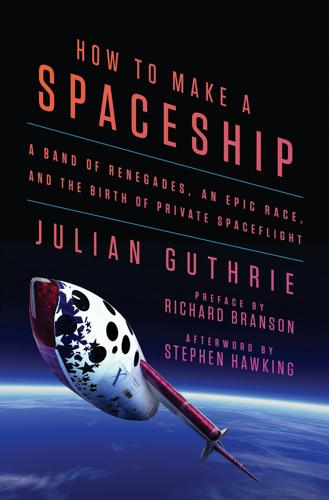
How to Make a Spaceship: A Band of Renegades, an Epic Race, and the Birth of Private Spaceflight
by
Julian Guthrie
Published 19 Sep 2016
He listened to a clip from a speech given by President Kennedy in May 1961: “I believe that this nation should commit itself to achieving the goal, before this decade is out, of landing a man on the Moon and returning him safely to the Earth. No single space project in this period will be more impressive to mankind, or more important for the long-range exploration of space; and none will be so difficult or expensive to accomplish.” The onscreen countdown began for Apollo 11 astronauts Neil Armstrong and Edwin “Buzz” Aldrin to park their lunar lander on the surface of the Moon, a quest for the ages, a Cold War imperative, and a high-stakes contest between nations that had begun when the Soviet Union launched Sputnik, the world’s first artificial satellite, on October 4, 1957. Now, almost twelve years later, America was trying to make history of its own.
…
He had drawn the Saturn V over and over, with its first stage, second stage, and third stage, its lunar module, service module, and command module. At 363 feet, it was taller than a football field set on end, both beauty and monster, weighing more than 6.4 million pounds when prepared for launch. Peter had watched Neil Armstrong and Buzz Aldrin climb through the docking tunnel from Columbia to Eagle to check on the lunar module. The lunar module—the LM, pronounced “LEM” and originally called the Lunar Excursion Module—had never been tested in the microgravity of the Moon. Peter was not alone in wondering whether this spaceship would make it back to Earth.
…
It was both answer and question, new frontier, old Earth. It was NASA doing what it said it would do. The astronauts were modern-day Magellans. Cronkite rubbed his hands together and dropped his paternal demeanor. “There’s a foot on the Moon,” he said, removing his black-rimmed glasses and wiping his eyes. “Armstrong is on the Moon. Neil Armstrong—thirty-eight-year-old American—standing on the surface of the Moon! Boy, look at those pictures—240,000 miles to the Moon. I’m speechless. That is really something. How can anybody turn off from a world like this?” It was close to midnight when Tula finally got the kids to bed. Marcelle, who was six, was asleep before her head hit the pillow.

The Interstellar Age: Inside the Forty-Year Voyager Mission
by
Jim Bell
Published 24 Feb 2015
Schematic diagram of the trajectories that enabled NASA’s twin Voyager spacecraft to tour the four gas giant planets and achieve the velocity to escape our solar system. (NASA/JPL) The twelve-year-old me had become hopelessly hooked on space exploration watching the adventures of the Apollo astronauts on the moon. My parents tell me that they woke me up on that Sunday night in July of 1969 to witness Neil Armstrong and Buzz Aldrin make history on live TV in the Sea of Tranquility. We saved the Monday MAN ON MOON! giant headlined copy of the Providence Evening Bulletin, which I later had framed. For the next three and a half years, I was glued to the television, whenever possible, watching these guys walking—and driving cars!
…
The ability to ride along with Voyager, to be a passenger on this trailblazing journey destined to discover entirely new worlds, to see history made, was irresistible to the young me. In fact, it still is. EXPEDITION LEADERS Famous ships of exploration are usually led by a famous captain or commander, like Christopher Columbus, Ferdinand Magellan, James Cook, Ernest Shackleton, or Neil Armstrong. The Voyagers, however, are led by a committee of captains—managers, engineers, and scientists from NASA’s Jet Propulsion Laboratory (JPL) and elsewhere who were tasked with overseeing the design, manufacture, and operation of the most ambitious robotic planetary exploration mission yet attempted—and a pair of equally powerful commanders, a project manager and a project scientist.
…
Even the JPL Deep Space Network team got in on the game, increasing the sensitivity of their receivers to deal with Voyager 2’s weaker and weaker radio signals as the spacecraft sped farther away, and adding the capability to communicate with Voyager 2 from the Parkes Radio Telescope in Australia (the one made famous by successfully broadcasting Neil Armstrong and Buzz Aldrin’s Apollo 11 lunar landing live to the world in 1969) during the most critical part of the Uranus flyby—which would be best visible from the Australian DSN stations. As Ed Stone wrote in one of the early scientific papers describing the Voyager 2 results at Uranus, “That all of this worked so well testifies to the high level of expertise and the spirit of teamwork within the Voyager project and supporting organizations.”

An Astronaut's Guide to Life on Earth
by
Chris Hadfield
Published 29 Oct 2013
Slowly, methodically, a man descended the leg of a spaceship and carefully stepped onto the surface of the Moon. The image was grainy, but I knew exactly what we were seeing: the impossible, made possible. The room erupted in amazement. The adults shook hands, the kids yelped and whooped. Somehow, we felt as if we were up there with Neil Armstrong, changing the world. Later, walking back to our cottage, I looked up at the Moon. It was no longer a distant, unknowable orb but a place where people walked, talked, worked and even slept. At that moment, I knew what I wanted to do with my life. I was going to follow in the footsteps so boldly imprinted just moments before.
…
Roaring around in a rocket, exploring space, pushing the boundaries of knowledge and human capability—I knew, with absolute clarity, that I wanted to be an astronaut. I also knew, as did every kid in Canada, that it was impossible. Astronauts were American. NASA only accepted applications from U.S. citizens, and Canada didn’t even have a space agency. But … just the day before, it had been impossible to walk on the Moon. Neil Armstrong hadn’t let that stop him. Maybe someday it would be possible for me to go too, and if that day ever came, I wanted to be ready. I was old enough to understand that getting ready wasn’t simply a matter of playing “space mission” with my brothers in our bunk beds, underneath a big National Geographic poster of the Moon.
…
I can let that crush me and spend the rest of my life looking back over my shoulder, or I can maintain attitude. Since that choice is mine, I’ll keep on getting ready to play “Rocket Man.” Just in case. 3 THE POWER OF NEGATIVE THINKING “HOW DO YOU DEAL WITH YOUR FEAR?” It’s one of the questions I’m asked most often. When people think about space exploration, they don’t just picture Neil Armstrong stepping off the ladder of the Lunar Module and onto the Moon. They also remember the smoke plume etched in the sky after the Space Shuttle Challenger exploded shortly after launch, and the startling, fiery bursts of light as Columbia disintegrated on re-entry, raining down metal and human remains.
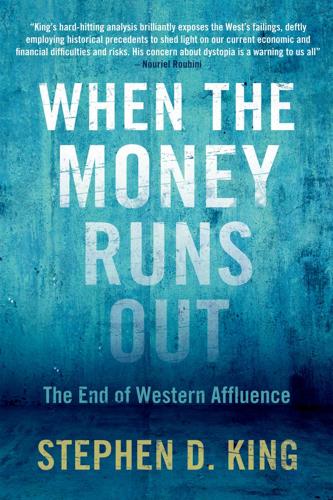
When the Money Runs Out: The End of Western Affluence
by
Stephen D. King
Published 17 Jun 2013
First of all, though, it's time to go back to the dreams of my youth, dreams that took us to the moon and led us to thoughts of life on Mars. CHAPTER ONE TAKING PROGRESS FOR GRANTED One of my earliest childhood memories was waking up at some ridiculously early hour of the morning to watch the late Neil Armstrong step out of the Eagle – Apollo 11's lunar module – and utter his now famous ‘one small step’ mini-speech. In the years that followed – alongside millions of other young boys – I became obsessed with space travel. I read articles and books which predicted – with considerable confidence, I might add – that lunar colonies would soon be established and that humans would be heading to Mars before the end of the twentieth century.
…
Even those momentous events are now fading from our collective memories: for younger generations, Buzz Lightyear is more familiar than Buzz Aldrin. Meanwhile, the next man on the lunar surface, if Beijing has its way, is likely to be Chinese, not American. Yet the sentiments that led to overly optimistic expectations about space travel have proved to be correct in so many other ways. Back in 1969, the year in which Neil Armstrong's boot first touched the dusty lunar surface, my parents' television was a small black and white device hiding in the corner. There were only two channels (BBC1 and ITV; newfangled TVs offered BBC2 but we couldn't afford the upgrade). Our television used valve technology – which meant the set took around five minutes to warm up – and the valves frequently broke, leaving us all-too-often without television altogether.
…
And we rely on political promises regarding education, health care, our treatment in old age and our national defence, all of which are based on ever rising prosperity. What happens, however, if the future is no better? What happens if, collectively, the claims incorporated into our pieces of paper and our political promises cannot be honoured? Back to Neil Armstrong. Imagine that, as a consequence of the moon landings, an entrepreneur had decided to sell tickets offering the gullible a chance to head off on a Martian space holiday before the end of the twentieth century: more Thomas Crook than Thomas Cook, perhaps. For extreme science fantasists, this might have been an opportunity too good to miss.

Across the Airless Wilds: The Lunar Rover and the Triumph of the Final Moon Landings
by
Earl Swift
Published 5 Jul 2021
Only the first pair to land are readily known to many (I dare not say most) Americans. That’s understandable, if disappointing: Apollo 11’s touchdown marked a triumph of imagination as much as technology. The courage it required, the precision it demanded, and the sheer boldness of the undertaking—not to mention the anticipation attending Neil Armstrong’s first step onto the regolith—thrilled and inspired a world witnessing it live on television. But fact is, the greatest achievements of our lunar adventure came later, when the world was no longer hanging on every word the moonwalkers spoke or following every step they took, on missions that are recalled dimly today.
…
“He wound up on an airplane runway about a quarter of a mile off, and the men in the control tower had to stop air traffic so he wouldn’t be hit by an incoming 707.” 33 ON JULY 16, 1969, FIVE DAYS AFTER MOREA RELEASED THE REQUEST for proposals, Apollo 11 launched for the moon from an oceanfront pad at the Kennedy Space Center. When the lunar module Eagle touched down, and Neil Armstrong and Buzz Aldrin stepped from its relative safety into the Sea of Tranquility’s “magnificent desolation,” rover teams at companies scattered across the United States were racing to assemble proposals by the August deadline. Apollo 11’s brief lunar visit offered a strong argument for the LRV project.
…
They compared lunar soil to a beach on Earth—loose on the surface, firmer and more cohesive with depth—and “felt pretty strongly that some type of lugs or cleats from one-half to one inch should be in the wheel design,” Morea reported. Bekker, one of the world’s leading authorities on lugs and cleats, had listened quietly. He sensed that Neil Armstrong “was particularly skeptical in respect to the wire-mesh wheel developed at GM,” he recalled later. When Bekker did speak up “to convince those present that it is all right,” Buzz Aldrin sketched his own design for an alternative he reckoned might work. It featured seven hiking boots radiating from its hub.
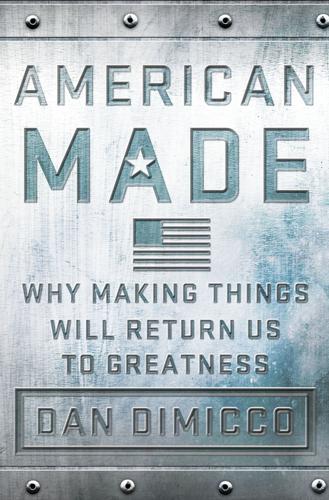
American Made: Why Making Things Will Return Us to Greatness
by
Dan Dimicco
Published 3 Mar 2015
“It’s going to be expensive,” he says, “and we’ll need to take on some debt to fix everything that needs fixing.” But DiMicco argues the work is essential and the improvements will pay dividends in the long run. It can be done, he says, through the kind of public-private partnerships that helped America win World War II and put Neil Armstrong on the moon. Then in chapter 9, DiMicco makes the case for expanding U.S. domestic energy resources. Natural gas can be a real game changer for American manufacturing. It isn’t just about weaning the United States from foreign oil pumped out of the desert in increasingly hostile countries.
…
Kennedy went to Congress in May 1961 and announced that putting a man on the moon should be at the top of the nation’s list of priorities. Kennedy renewed the call the next year at Houston’s Rice University, in what would become one of his more memorable speeches. Kennedy spoke not far from where NASA would run the 1969 mission that secured Neil Armstrong’s place in history. For me—and for millions of young Americans in the early 1960s—Kennedy’s words were inspiration to pursue a career in science and engineering. That speech also reflected the optimism of the era and offered a reminder of what a nation could do with the right kind of leadership, the right policies, and the right kind of partnership between the public and private sectors.
…
Adjusted for inflation, the American Recovery and Reinvestment Act was bigger than the New Deal’s Works Progress Administration, which was supposed to help end the Great Depression. It was bigger than the Marshall Plan, which helped rebuild Europe and contain Soviet communism after World War II. All told, the federal government spent about five times as much on the 2009 stimulus as we spent to put Neil Armstrong on the moon in 1969.4 Does anyone really think the stimulus was money well spent? No way. Not even close. But, remember, I supported the stimulus plan. I hated to ask the government to do anything for us. But we had no choice. The crisis was unprecedented. Something had to be done, and the government was in the ideal position to do it.
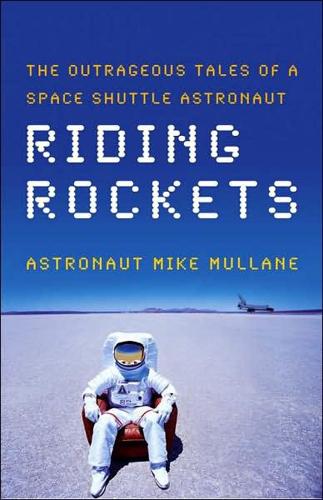
Riding Rockets: The Outrageous Tales of a Space Shuttle Astronaut
by
Mike Mullane
Published 24 Jan 2006
Redundant rubber O-rings had to seal the SRB joints or astronauts would die. Yet another aspect of the design of the space shuttle made the craft significantly more dangerous to fly than anything that had preceded it. It lacked an in-flight escape system. Had theAtlas rocket, which launched John Glenn, or theSaturn V rocket, which lifted Neil Armstrong and his crew, blown up in flight, those astronauts would have likely been saved by their escape systems. On top of theMercury andApollo capsules were emergency tractor escape rockets that would fire and pull the capsule away from a failing booster rocket. Parachutes would then automatically deploy to lower the capsule into the water.
…
Where to sit was the first issue I had to address. A large table dominated the room. On it sat some conference phones and an overhead projector. A screen hung on the wall at the front of the room. Chairs ringed the table, but I gave no thought to taking one. This was the sacred table of Apollo. Alan Shepard and Jim Lovell and Neil Armstrong had sat here. At the moment moonwalker John Young was sitting at its head. There was no way one-day-old Ascan Mike Mullane was going to sit at that table. Perhaps the chairs were assigned to the veteran astronauts and I would be embarrassingly evicted like a Cheers’ patron being asked to move from Norm’s bar stool.
…
The previous night I had slept lightly and each time I awoke I would pray for Young and Crippen. I had a strong sense of dread about the mission. WhenColumbia ’s hold-down bolts blew, her crew would be irrevocably committed to a flight that was more experimental than any manned flight in history. Forget Alan Shepard, John Glenn, or Neil Armstrong as astronauts who had taken unequaled gambles. Their Redstone, Atlas, Titan, and Saturn rockets had all been proven before they had ever climbed on board. Young and Crippen would be making history by riding a rocket on its very first launch. They weren’t doing so reluctantly. The astronaut office had no problems with this decision, even though it would have been relatively easy to modify the vehicle to fly a first test mission unmanned.
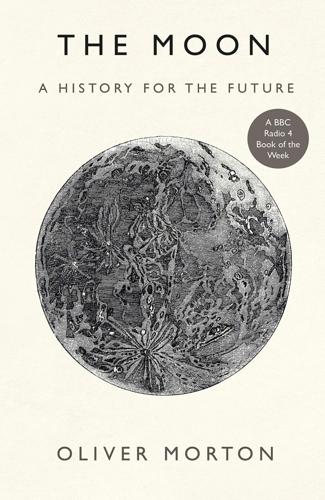
The Moon: A History for the Future
by
Oliver Morton
Published 1 May 2019
The Apollo astronauts ingest it without choosing to. In their dust-dirtied LM tiny particles move through the alveoli of their lungs and across the microvilli of their guts into their blood, tissues and cells. They bring the Moon home incorporated. They bring themselves home changed. APOLLO 11: SEA OF TRANQUILITY On the Moon: Neil Armstrong and Buzz Aldrin In lunar orbit: Michael Collins TIME SINCE LAUNCH 102:45:58 —Engine arm is off. Houston, Tranquility Base here. The Eagle has landed. —Roger, Twan . . . Tranquility. We copy you on the ground. You got a bunch of guys about to turn blue. We’re breathing again. Thanks a lot.
…
The promise of Apollo was a high-water mark in terms of what a nation might aspire to do; the lack of any post-Apollo transformation, either in the heavens or on Earth, showed, for many, the limits of such aspiration. That is not to say the world did not subsequently change. But the change was not the deliberately brought about dawning of the Space Age. It was the unwilled unfolding of a new and troubling Earth Age. Since Neil Armstrong stepped off the ladder at Tranquility Base, the Earth’s population has increased by 100%, the amount of economic activity it supports by 300%; and the amount of carbon dioxide dumped in the atmosphere every year by 140%. About two-thirds of all the carbon dioxide emitted since the industrial revolution has been emitted in that past half century.
…
As a spacecraft goes out to the Moon, the Earth’s gravity is pulling it back: it is, in effect, going uphill. On the return trip, as soon as it escapes the Moon’s much weaker pull, the Earth’s gravity does the rest. At the end of the fall you can get delta-v for free by turning your incoming velocity into the scalding heat of re-entry. It took Neil Armstrong and Buzz Aldrin less than 3km/s to get back to the Pacific from Tranquility Base, even allowing for a slight detour to pick up Mike Collins. As one of the characters in “Destination Moon” points out, a rocket as small and primitive as the V-2 would have been able to make the trip. This demonstrates the way in which what matters in space is delta-v, not distance.

Boom: Bubbles and the End of Stagnation
by
Byrne Hobart
and
Tobias Huber
Published 29 Oct 2024
Sparrow, “‘Our River of Power Flowing Toward War’: David Lilienthal, the TVA, and the Evisceration of the Concept of Public Utility in the American Century,” paper presented to the Colloquium in Work, Labor and Political Economy, University of California–Santa Barbara, May 3, 2019, https://labor.history.ucsb.edu/sites/default/files/sitefiles/lilienthal-sparrow.pdf. 168 Groueff, Manhattan Project, 217. 169 Rhodes, Atomic Bomb, 605. 170 Groeuff, Manhattan Project, 211–212. 171 This process happens all the time in computing today—compilers and interpreters convert human-readable, high-level code into specific instructions that tell physical hardware what to do. Chapter 4 The Apollo Program In 1969, Neil Armstrong became the first human to set foot on the Moon. In 1972, two members of the Apollo 17 crew became the last. Despite many promises to return, 172 no one has been to the Moon in five decades. In fact, with the final space shuttle flight in 2011, the US is no longer capable of sending humans into space using its own spacecraft.
…
The early days of NASA benefited from a similar level of focused ambition. In the late 1950s, NASA’s Langley Research Center was a collection of oddball rocket fanatics, many of whom not only did research during the workday but built their own hobbyist contraptions on nights and weekends. 185 Neil Armstrong would later cite the commitment and enthusiasm of Apollo’s developers as the source of the program’s success. Their optimism also played a key role. They weren’t just driven—they truly believed that with enough hard work and ingenuity, failure was impossible. Like the Manhattan Project, the Apollo program succeeded in large part because of the visionary determination of what Peter Thiel has called “extreme founder figures”—people like von Braun, NASA’s George Mueller, and President Johnson—all of whom demonstrated a relentless drive that bordered on the kind of craziness observed during stock market manias.
…
Eventually, as some fear and others hope, the super-exponential growth in compute could result in the Singularity, or the moment when machines transcend human intelligence. 199 If the Singularity does arrive, it will be traceable back to the Eagle, the lunar landing module’s onboard computer. In the mid-1960s, the only demand for integrated circuits that Moore identified in his paper was “Apollo, for manned Moon flight.” 200 By 1969, however, the year Neil Armstrong and Buzz Aldrin walked on the lunar surface, the market for computer chips was 80 times larger than it had been in 1962. Would integrated circuits have happened without Apollo? Most likely, given enough time, another use case might have prompted their discovery and broad-scale usage. But Apollo massively accelerated their development and diffusion.
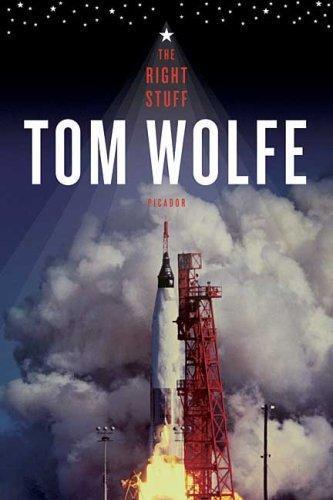
The Right Stuff
by
Tom Wolfe
Published 1 Jan 1979
I discovered quickly enough that none of them, no matter how talkative otherwise, was about to answer the question or even linger for more than a few seconds on the subject at the heart of it, which is to say, courage. But I did sense that the answer was not to be found in any set of traits specific to the task of flying into space. The great majority of the astronauts who had flown the rockets had come from the ranks of test pilots. All but a few had been military test pilots, and even those few, such as Neil Armstrong, had been trained in the military. And it was this that led me to a rich and fabulous terrain that, in a literary sense, had remained as dark as the far side of the moon for more than half a century: military flying and the modern American officer corps. Immediately following the First World War a certain fashion set in among writers in Europe and soon spread to their obedient colonial counterparts in the United States.
…
Then one perfectly sunny day he was making a routine takeoff in an F-104 and the panel lit up red and he had that one second in which to decide whether or not to punch out at an altitude of about fifty feet… a choice complicated by the fact that the F-104's seat ejected straight down, out of the belly… and so he tried to roll the ship over and eject upside down, but he went out sideways and was killed. His backup, Major Robert White, took his place in the X-15 project. Joe Walker's backup was a former Navy fighter pilot named Neil Armstrong. Crossfield, White, Walker, Armstrong—they no longer had time to even think about Project Mercury. Project Mercury did not mean the end of the X-15 program. Not at all. The testing of the X-15 would proceed, in order to develop a true spacecraft, a ship that a pilot could fly into space and fly back down through the atmosphere for a landing.
…
Not that the Original Seven's national eminence altered the true and secret nature of things, however. The self-esteem of the fighter jock knew no limits, and the members of Group II were no exceptions to this rule. As soon as they were selected, the boys began looking around and comparing themselves—the Next Nine—with the Original Seven. Here was Neil Armstrong, who had flown the X-15. (What Mercury astronaut had done anything like that?) Here was John Young, who held two world speed-to-climb records. (What Mercury astronaut, other than Glenn, could claim any such distinction?) Here were Frank Borman, Tom Stafford, and Jim McDivitt, who had been flight test instructors at Edwards.
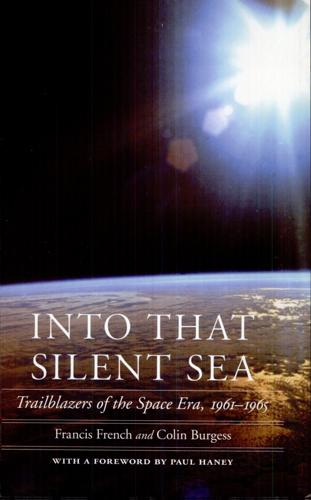
Into That Silent Sea: Trailblazers of the Space Era, 1961-1965
by
Francis O. French
,
Colin Burgess
and
Paul Haney
Published 2 Jan 2007
After a week of negotiation, I went to work for 1tn, the commercial network in England, as commentator for manned spaceflights. As I commuted between London and Houston, Apollo 10 flowed into Apollo 11. The whole world stood still listening to Neil Armstrong and Buzz Aldrin land on the lunar surface on 20 July 1969. In time for Apollo 12, 1tn opened a new broadcast center in downtown London. Queen Elizabeth herself showed up to dedicate the new facilities. During a break, the queen walked up to me and asked: "Mr. Haney, how is Mr. Neil Armstrong's health?" I didn't presume to ask why she was asking. I simply said, "Just fine, as far as I know, ma'am." That was the entire conversation. Several weeks later, back in Houston, I ran into Armstrong at lunch.
…
The Eisenhower administration, like so many real-life fathers, wasn't sure what it had sired, so it was understandably reluctant to take too much credit. In 1961 when Houston was selected as the home of what is now the Johnson Space Center, it was the last time in the modern era that cities bid for the right to be home to a new national facility. Houston's psychic payoff for volunteering came when Apollo 11 landed on the moon, and Neil Armstrong's first words back to mother earth were: "Houston . . . the Eagle has landed." In the course of 1961-63, everyone eventually "transitioned" to Houston and the new home the human spaceflight program was building on a swampflood plain twenty miles south of the city. I set up a weekly news conference that identified all coming events in the manned space effort—flight hardware tests in California, geology hikes in Iceland, jungle training in Panama, simulations in Houston.
…
It was a spontaneous remark, he later explained: "The two previous Mercury flights were powered by the Redstone, a tiny rocket that couldn't provide enough power to give John the speed he required for orbital flight. What he needed, and what everyone hoped the Atlas would provide, was speed. I had not pondered this, just as Neil Armstrong maintains he'd never pondered the phrase, 'One small step for man, one giant leap for mankind.' It just popped out of thin air. He needed speed, his name was John Glenn, and it was sort of a salute to a friend, and a plea to the higher power. Godspeed? Glenn heard none of the prayerful transmissions—only Shepard continuing the steady countdown: "... eight, seven, six, five, four, three, two, one, zero!"
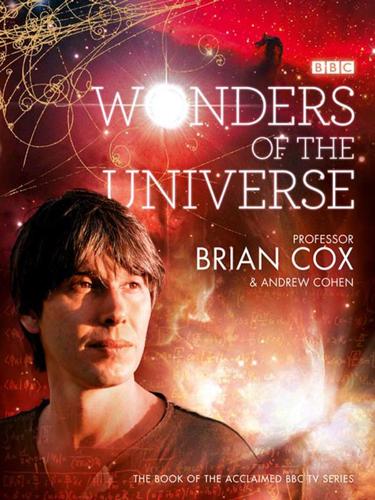
Wonders of the Universe
by
Brian Cox
and
Andrew Cohen
Published 12 Jul 2011
But first we must discover how we know that everything we see in the sky is made of the same stuff as us on the ground THE UNIVERSAL CHEMISTRY SET Surprising as it sounds, we know what every star, planet and moon in the observable Universe is made of, despite the fact that there is only one other place in the Universe that humans have actually visited in person. On 21 July 1969, Neil Armstrong and Buzz Aldrin became the first humans to set foot on another world. They spent 2 hours, 36 minutes and 40 seconds walking on the surface of the Moon, but it wasn’t until the last half hour that they carried out one of their most important scientific tasks. Using basic geological tools, Buzz Aldrin drove two core tubes into the lunar surface to collect the most famous rock samples taken in history.
…
From a scientific perspective this is unsurprising, because long ago Mendeleev’s table revealed there isn’t any room for other light elements in nature – we have discovered the full set. It would take a change in the laws of physics to discover something on the surface of another world that doesn’t fit into Mendeleev’s scheme, but from the explorer’s perspective, seeing is believing! On 21 July 1969, Neil Armstrong and Buzz Aldrin became the first humans to set foot on the Moon. This successful landing also opened up infinite possibilities for scientists to understand the formation of the lunar landscape. This photo shows Aldrin collecting some of the lunar rock samples that they took back to Earth for analysis.
…
The evidence for this theory is partly that the Moon has a very similar composition to that of Earth’s outer crust, although it is much less dense because it has a significantly smaller iron core. This is what would be expected if the Theia/Earth collision was a glancing blow, leaving the Earth’s iron core intact and so reducing the relative amount of iron in the Moon. This in turn means that the Moon’s gravitational field is much weaker than ours. When Neil Armstrong took his small step onto the Moon, he weighed just 26 kilogrammes (58 pounds), despite the fact that he was wearing a space suit that had weighed 81 kilogrammes (180 pounds) on its own on Earth – this is all because the Moon’s gravitational field strength is approximately one-sixth of Earth’s.
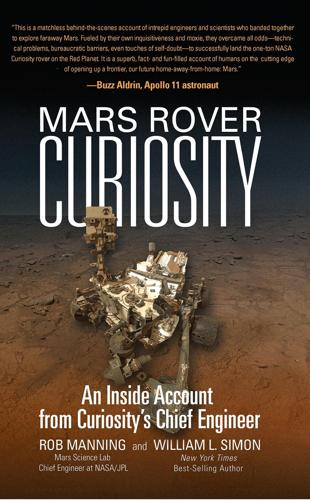
Mars Rover Curiosity: An Inside Account From Curiosity's Chief Engineer
by
Rob Manning
and
William L. Simon
Published 20 Oct 2014
The first US Mars landers, Viking I and II, had a landing ellipse that was 175 miles (280 km) long and 160 miles (100 km) across. This uncertainty has forced us to find safe landing areas that are huge. Without some sort of autopilot to guide our vehicle through that uncertain atmosphere, we would have to struggle to find safe areas on Mars. It began to look as if any Mars landing would require some kind of robotic Neil Armstrong looking out the window to guide our lander to a safe spot. But, of course, no such technology existed. As it turned out, Armstrong and the techniques of the Apollo man-on-the-moon era offered what became one of the most important elements that transformed our efforts from “wouldn’t be great if we could …” into a viable project.
…
If the entry guidance software detected that the lander was overshooting the landing spot, it would command larger S-turns; if undershooting, smaller S-turns or none at all. What’s more, JPL studies in the 1990s pointed the way toward basing our Mars entry guidance software on the same design that had been used to return Neil Armstrong and the other Apollo astronauts back to Earth. My teammates and I tried this idea out on an old Pathfinder teammate and Mars scientist, Matt Golombek, who is JPL’s resident expert on picking safe landing sites on Mars. For years he had been struggling to find sites that were safe as well as promising enough to please the scientists.
…
I thought it better not to point out that if the crew were so many miles off course, it was unlikely that whatever caused them to be that far afield would mean there would be nothing left to worry about. The robotic EDLers in the crowd were thrown for another loop when Shuttle Astronaut Commander Barry (Butch) Wilmore strongly articulated the need for the astronauts to be able to take over control during landing on Mars, just as Neil Armstrong had to do during the first lunar landing. I know that if I were an astronaut, I’d want to be able to control my spaceship. But those of us who design rovers to land on Mars also know that those landings are nothing like landing on the moon or landing the Space Shuttle back on Earth. The Martian atmosphere is so close to the surface of the planet that events during landing unfold at lightning speed.
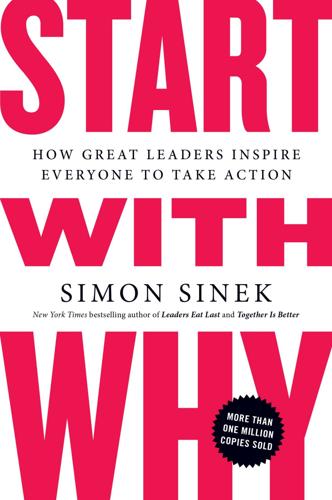
Start With Why: How Great Leaders Inspire Everyone to Take Action
by
Simon Sinek
Published 29 Oct 2009
Chapter 8: Start with Why, but Know How 133 Steve Ballmer, the man who replaced Bill Gates as CEO of Microsoft: “Steve Ballmer Going Crazy,” March 31, 2006, http://www.youtube.com/watch?v=wvsboPUjrGc. 134 the Bill and Melinda Gates Foundation: http://www.gatesfoundation.org/Pages/home.aspx. 135 Raised in Ohio, sixty miles from Dayton, Neil Armstrong grew up: Nick Greene, “Neil Armstrong Biography: First Man of the Moon,” About.com, http://space.about.com/od/astronautbiographies/a/neilarmstrong.htm. 138 What Ralph Abernathy lent the movement was something else: “Abernathy, Ralph David (1926–1990),” Martin Luther King, Jr., Research and Education Institute, http://mlk-kpp01.stanford.edu/index.php/kingpapers/article/abernathy_ralph_david_1926_1990/. 140 The pessimists are usually right: Thomas Friedman, The World Is Flat: A Brief History of the 21st Century.
…
Loyalty to a company trumps pay and benefits. And unless you’re an astronaut, it’s not the work we do that inspires us either. It’s the cause we come to work for. We don’t want to come to work to build a wall, we want to come to work to build a cathedral. The Chosen Path Raised in Ohio, sixty miles from Dayton, Neil Armstrong grew up on a healthy diet of stories about the Wright brothers. From a very early age he dreamed of flying. He’d make model airplanes, read magazines about flying and stare at the heavens through a telescope mounted on the roof of his house. He even got his pilot’s license before he got his driver’s license.

Elon Musk
by
Walter Isaacson
Published 11 Sep 2023
He worked his way through the University of Idaho by spending summers and weekends as a logger. When he graduated, he moved to Los Angeles to seek work in aerospace. His grades had not been great, but his enthusiasm was infectious, and that helped get him a job at TRW, which built the rocket engine that took Neil Armstrong and Buzz Aldrin to the moon. On weekends he would go to the Mojave Desert to test big homemade rockets with fellow members of the Reaction Research Society, a club of rocket enthusiasts founded in 1943. There he partnered with a fellow member, John Garvey, to build what became the world’s most powerful amateur rocket engine, weighing eighty pounds.
…
“It didn’t help that Elon was younger and richer than they were, with a Silicon Valley disrupter mentality and lack of deference toward the traditional industry.” Garver won the argument at the end of 2009. Obama canceled NASA’s Constellation program after his science advisor and budget director said that it was “over budget, behind schedule, off course, and unexecutable.” NASA traditionalists, including the revered astronaut Neil Armstrong, denounced the decision. “The president’s proposed NASA budget begins the death march for the future of U.S. human spaceflight,” said Senator Richard Shelby of Alabama. Former NASA administrator Michael Griffin, who had traveled with Musk to Russia seven years earlier, charged, “Essentially the U.S. has decided that they’re not going to be a significant player in human space flight.”
…
We have to use some of Elon’s thinking.” 37 Musk and Bezos SpaceX, 2013–2014 Having dinner in 2004 Jeff Bezos Jeff Bezos, the supercharged Amazon billionaire with a boisterous laugh and boyish enthusiasms, pursues his passions with a talent for being, at the same time, both exuberant and methodical. Like Musk, he was a childhood addict of science fiction, racing through the shelves of Isaac Asimov and Robert Heinlein books at his local library. As a five-year-old in July 1969, he watched television coverage of the Apollo 11 mission that culminated with Neil Armstrong walking on the moon. He calls it “a seminal moment” for him. Later, he would fund a series of missions that recovered from the Atlantic Ocean the Apollo 11 rocket engine, which he installed in a niche off the living room of his house in Washington, DC. His exhilaration about space turned him into one of those hardcore Star Trek fans who knows every episode.
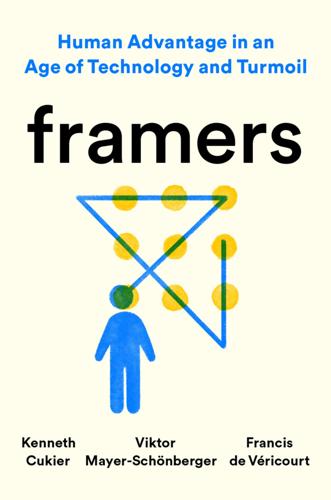
Framers: Human Advantage in an Age of Technology and Turmoil
by
Kenneth Cukier
,
Viktor Mayer-Schönberger
and
Francis de Véricourt
Published 10 May 2021
Similarly, engineers had little experience with building motors that would work in the cold, airless vacuum of space—and could be started and restarted at the press of a button. So they constructed the rocket based on mental models of how engines work, not just in our planet’s atmosphere but also in space. Testing helped, of course, but mainly to validate what scientists had already conjured up in their minds. When Neil Armstrong took his “small step” onto the lunar surface, he was startled by its firmness: he had expected to sink down an inch or two. “The surface is fine and powdery,” the thirty-eight-year-old captain radioed to his crew and ground control. “I only go in a small fraction of an inch, maybe an eighth of an inch.”
…
Inside every achievement is an idea; embedded in each monument is a mental model. Our economic, scientific, and social successes stem from our ability to comprehend and conceptualize, to see what is and what can be, and to connect our ideas with our actions. It is the actual basis of human betterment, underpinning the Wright brothers’ liftoff and Neil Armstrong’s giant leap. Why, then, have we focused so much on coordination and so little on the cognitive process underlying it? To an extent, the fixation on coordination is understandable: it is visible and obvious. It is something we can easily shape and directly influence. In contrast, our cognitive processes are locked in our heads.
…
Britain’s Covid performance in June: “Coronavirus: UK Daily Deaths Drop to Pre-lockdown Level,” BBC News, June 8, 2020, https://www.bbc.co.uk/news/uk-52968160. UK data on deaths and cases: “COVID-19 Pandemic Data in the United Kingdom,” Wikipedia, accessed October 30, 2020, https://en.wikipedia.org/wiki/Template:COVID-19_pandemic_data/United_Kingdom_medical_cases_chart. Neil Armstrong’s “small step”: Robbie Gonzalez, “Read the New York Times’ 1969 Account of the Apollo 11 Moon Landing,” Gizmodo, August 25, 2012, https://io9.gizmodo.com/277292567?jwsource=cl. On the New York Times’s retraction of its 1920 article: Bjorn Carey, “New York Times to NASA: You’re Right, Rockets DO Work in Space,” Popular Science, July 20, 2009, https://www.popsci.com/military-aviation-amp-space/article/2009-07/new-york-times-nasa-youre-right-rockets-do-work-space/.

John F. Kennedy and the Race to the Moon (Palgrave Studies in the History of Science and Technology)
by
John M. Logsdon
Published 15 Dec 2010
My detailed study of the decision-making process by which President Kennedy became convinced that it was in the national interest for the United States to enter, with the intent of winning, the space race with the Soviet Union has been described as “classic” and “powerful and seminal” by leading space historian Roger Launius.1 Such an assessment is, of course, very gratifying. But as the years passed, I became increasingly dissatisfied with the completeness of the study’s narrative elements. The basic story stood the test of time, but because my research for the book was carried out even before Neil Armstrong and Buzz Aldrin reached the Moon, only a very limited base of primary documents on which to base the study was available. The John F. Kennedy Presidential Library had not yet opened, and Lyndon B. Johnson was still president. That meant the narrative lacked the fullness made possible only by using the documentary record; also, many oral histories discussing the Kennedy presidency were not yet available.
…
K EN N E DY A N D T H E R A C E T O T H E M O O N beyond Earth orbit, he emerges as a pragmatic political leader who soon after entering office came to see the U.S. civilian space program as an important tool to advance U.S. foreign policy and national security goals. He was flexible in his approach to space activities, willing to compete if necessary but preferring to cooperate if possible. John F. Kennedy with his actions in the spring of 1961 and in the following months took the first steps toward the Moon. Eight years later, on July 20, 1969, Neil Armstrong would take another “small step for a man, but a giant leap for mankind.” Historian Arthur Schlesinger, Jr. has suggested that “The 20th Century will be remembered, when all else is forgotten, as the century when man burst his terrestrial bounds.”6 In undertaking the lunar landing program, John Kennedy linked the politics of the moment with the dreams of centuries and the aspirations of the nation.
…
To reinforce his commitment to President Kennedy’s space legacy, less than a week after the assassination Johnson announced that Cape Canaveral would be renamed Cape Kennedy and that the space launch facilities located there would be called the John F. Kennedy Space Center.1 In the more than five-and-a-half years between Kennedy’s death and the July 20, 1969 landing of Apollo 11 astronauts Neil Armstrong and Buzz Aldrin on the Moon, dedication to Kennedy’s commitment to achieving that feat “before this decade is out” sustained the program through delays and difficult times, including the death of three Apollo 1 astronauts in a launch pad accident on January 27, 1967. When the Apollo 11 command module Columbia returned to Earth, landing in the Pacific Ocean at dawn on July 24, 1969, a large video screen in Apollo Mission Control in Houston displayed these words: I believe that this nation should commit itself to achieving the goal, before this decade is out, of landing a man on the moon and returning him safely to earth.
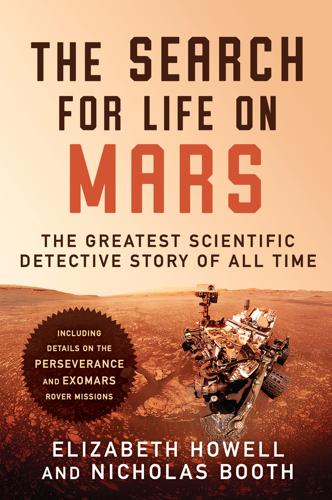
The Search for Life on Mars
by
Elizabeth Howell
Published 14 Apr 2020
In any case, it was already clear from Mariner 4 that many of the experiments considered originally would not have worked on Mars. Yet the lure of Martian life was too great. So there came, from an entirely unexpected quarter, a much more modest assault on the Red Planet. * * * Ten days after Neil Armstrong made his giant leap for mankind in July 1969, reporters flocked to Pasadena to await results from the next JPL missions to Mars. They would not be disappointed. Mariners 6 and 7 would track across the southern hemisphere of the Red Planet, mapping about a fifth of the planet’s surface. Together, they returned a million times more data than Mariner 4 had done five years earlier.
…
When the “made it” signal was received back at JPL, Mission Control erupted into sustained cheers and unrestrained joy. Jim Martin smiled the smile of one upon whom fate had bestowed great riches, as well he might. By a truly cosmic coincidence, Viking 1 came to rest on the Red Planet seven years to the day after Neil Armstrong had walked onto the Moon. Within minutes, the lander cameras started to return pictures, the first of which revealed a rock close by one of its footpads. “Oh!” cried Tim Mutch, the camera team leader. “Incredible! Incredible!” His incoherence was understandable. After eight years of planning, Viking was working perfectly on Mars.
…
Strange as it may now seem, it nearly came to pass that America’s return to the Red Planet after two decades might have been completely blind. There was a sizable body of opinion that didn’t want any new cameras sent to Mars. Without them, our understanding of the Red Planet would have remained horribly incomplete. * * * When Neil Armstrong and Buzz Aldrin became the first human beings to walk on another world, in July 1969, Malin, then a nineteen-year-old undergraduate, was allowed into the inner sanctum of Mission Control in Houston to witness the events firsthand. It was a unique experience for anyone, let alone a Berkeley physics student.

Packing for Mars: The Curious Science of Life in the Void
by
Mary Roach
Published 1 Jan 2010
Only one way to know: Prototypes were made and the crew convened for a series of flag-assembly deployment simulations. Finally came the day. The flag was packed (a four-step procedure supervised by the chief of quality assurance) and mounted on the Lunar Module (eleven steps), and off it went to the moon. Where the telescoping crossbar wouldn’t fully extend and the lunar soil was so hard that Neil Armstrong couldn’t plant the staff more than about 6 or 8 inches down, creating conjecture that the flag was most likely blown over by the engine blast of the Ascent Module. Welcome to space. Not the parts you see on TV, the triumphs and the tragedies, but the stuff in between—the small comedies and everyday victories.
…
For reasons we’ll explore momentarily, NASA goes to great lengths to keep its men and women from throwing up in their helmets during a spacewalk. Schweickart and Scott had a serious talk about whether they should skip this particular EVA and just tell NASA they’d done it. Apollo 9 was a critical step in the race to put a man on the moon. The EVA life support system that Neil Armstrong and Buzz Aldrin would wear on the moon had to be tested, as well as rendezvous and docking equipment and procedures. “This is already March of 1969,” recalls Schweickart in his oral history. “The end of the decade is coming right up…. Is this basically a wasted mission because Schweickart’s barfing?
…
It is assumed that a man will fit one of the three sizes available in the condom-style urine collection device hose attachment inside the EVA suit. To avoid mishaps caused by embarrassed astronauts opting for L when they are really S, there is no S. “There is L, XL, and XXL,” says Hamilton Sundstrand suit engineer Tom Chase. This was not the case during Apollo. Among the 106 items left on the moon’s surface by Neil Armstrong and Buzz Aldrin are four urine collection assemblies—two large and two small. Who wore which remains a matter of conjecture. * And a diaper. Though the lack of a diaper doesn’t mean race-car drivers don’t pee in their suits. “People do it all the time,” reported Danica Patrick in an interview in Women’s Health.

Liftoff: Elon Musk and the Desperate Early Days That Launched SpaceX
by
Eric Berger
Published 2 Mar 2021
It wasn’t rocket engines, but the pay was excellent, and he liked the location in El Segundo. He took the job and, after a couple of years, through a friend, Mueller found out about a job opening at TRW. This was a large automotive and aerospace firm that had done a number of interesting things in space, including building the rocket engine that landed Neil Armstrong and Buzz Aldrin on the Moon. He ended up working at TRW for fifteen years, doing mostly rocket engine development, big and small. In the mid-1990s, Mueller started on the TR-106 project, one of the most powerful engines built in decades. This new, liquid-fueled rocket engine produced 650,000 pounds of thrust, about 30 percent more than a space shuttle main engine.
…
Photos of the company’s now-defunct test site in McGregor, Texas, were still online. It looked promising. In November 2002, Purdue University invited Musk to speak. It was a prestigious invitation, as Purdue’s notable aerospace engineering program has churned out dozens of NASA’s most notable flight directors and astronauts, including Neil Armstrong. Musk brought some of his senior team to recruit graduating students. While there, Buzza and Mueller chatted up a professor named Scott Meyer, who had been a senior propulsion engineer at Beal. To answer more of their questions, Meyer shared the name and number of Joe Allen, a former employee at the McGregor test site who still lived in the area.
…
That afternoon, he took his own advice and drove back along U.S. Route 101. He stopped at the iconic Santa Claus Lane, a few miles east of Santa Barbara, to take a break. “The sun was setting, so I went out to the beach,” Buzza said. “I lay down and fell asleep for hours, and woke up in the dark and salty chill.” When Neil Armstrong took humanity’s first step on another world in 1969, Anne Chinnery’s parents woke the sleeping three-year-old to experience the moment. The only conscious memory she retains of the Apollo 11 Moon landing is confusion, but it might nonetheless have proven formative. Throughout her childhood, she maintained an interest in space, and aspired to fly there one day.
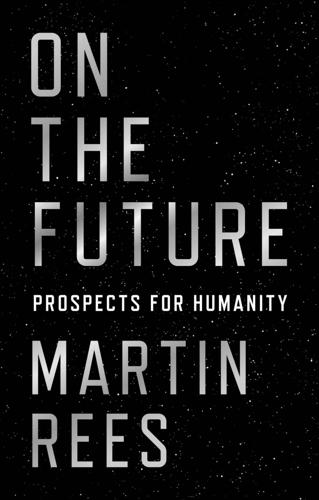
On the Future: Prospects for Humanity
by
Martin J. Rees
Published 14 Oct 2018
THE EARTH IN A COSMIC CONTEXT In 1968, the Apollo 8 astronaut Bill Anders photographed ‘Earthrise’, showing the distant Earth, shining above the lunar horizon. He didn’t realise that it would become an iconic image for the global environmental movement. It revealed Earth’s delicate biosphere, contrasted with the sterile moonscape where Neil Armstrong, one year later, took his ‘one small step’. Another famous image was taken in 1990 by the probe Voyager 1 from a distance of six billion kilometres. The Earth appeared as a ‘pale blue dot’, which inspired Carl Sagan’s thoughts:1 Look again at that dot. That’s here. That’s home. That’s us. On it everyone you love, everyone you know, everyone you ever heard of, every human being who ever was, lived out their lives.… Every saint and sinner in the history of our species lived there—on a mote of dust suspended in a sunbeam.
…
(Glenn later became a US senator, and, later still, the oldest astronaut when, at age seventy-seven, he became part of the STS-95 Space Shuttle crew.) Only twelve years elapsed between the flight of the Soviet Sputnik 1—the first artificial object to go into orbit—and the historic ‘one small step’ on the lunar surface in 1969. I never look at the Moon without being reminded of Neil Armstrong and Buzz Aldrin. Their exploits seem even more heroic in retrospect, when we realise how they depended on primitive computing and untested equipment. Indeed, President Nixon’s speechwriter William Safire had drafted a eulogy to be given if the astronauts had crash-landed on the Moon or were stranded there: Fate has ordained that the men who went to the moon to explore in peace will stay on the moon to rest in peace.
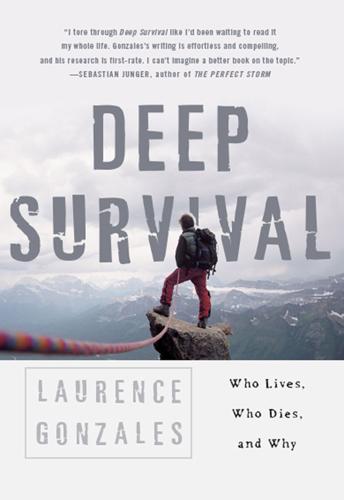
Deep Survival: Who Lives, Who Dies, and Why
by
Laurence Gonzales
Published 1 Dec 1998
So it is learning when to soothe and gentle it and when to let it run that marks the winning jockey, the true survivor. And that is what the dark humor of various subcultures is all about: It’s about gentling the beast, keeping it cool; and when it’s time to run, it’s about letting it flow, about having emotion and reason in perfect balance. That’s what characterizes elite performers, from Tiger Woods to Neil Armstrong. There are primary emotions and secondary emotions. Primary emotions are the ones you’re born with, such as the drive to obtain food or the reaction of reaching out to grab something if you feel yourself falling. But the emotional system of bodily responses can be hooked up to anything. Remarque’s soldiers learned to connect a deeply instinctive emotional response to the whistling of a shell.
…
So it should come as no surprise that, in many cases, basic survival mechanisms, which have been hardwired into us and sculpted by experience, turn out to be not only the most powerful motivators of behavior but to operate at their peak efficiency out of reach of the conscious decision-making powers, which makes it easy for reason to be overwhelmed. Once an emotional reaction is underway, there can be an overwhelming impulse to act. But there are many ways of revising the script and adapting in hazardous situations. Training is one of them. Neil Armstrong would not have been able to land Eagle on the moon if it hadn’t been for years of rigorous training, not only in the technical stuff, which had to be second nature, but in emotional control. All elite performers train hard, and when you follow in their path, you’d better train hard, too, or be exceptionally alert.
…
Only then are they worthy to hold the sword. The selection process at NASA seeks out those who are already on that path when they arrive. Whatever an astronaut is, he is not made that way by NASA. He arrives with it in his heart, and the purpose of his training is to extend and deepen those transcendent qualities. When Neil Armstrong landed on the moon, he had to take control away from Eagle and fly by the seat of his pants. The expression isn’t gratuitous. It means that he had to engage his body (read: emotions) as well as his thinking with the machine (read: the environment). In the ministry of NASA, he had trained his emotions as well as his reason.

Same as Ever: A Guide to What Never Changes
by
Morgan Housel
Published 7 Nov 2023
People often have no idea how they’ll respond to a big windfall or an incredible gift of good luck until they’ve experienced it firsthand. Going to the moon is the coolest thing humans have ever done. You’d think it would be an overwhelming experience. But as the spacecraft hovered over the moon, Michael Collins turned to Neil Armstrong and Buzz Aldrin and said: It’s amazing how quickly you adapt. It doesn’t seem weird at all to me to look out there and see the moon going by, you know? Three months later, after Al Bean walked on the moon during Apollo 12, he turned to astronaut Pete Conrad and said, “It’s kind of like the song: Is that all there is?”
…
GO TO NOTE REFERENCE IN TEXT Almost 80 percent of Americans: Pew Research Center, “Public Trust in Government: 1958–2022,” June 6, 2022, pewresearch.org/politics/2022/06/06/public-trust-in-government-1958-2022. GO TO NOTE REFERENCE IN TEXT “Teachers do one half”: Tamborine, directed by Bo Burnham (Los Gatos, CA: Netflix, 2018). GO TO NOTE REFERENCE IN TEXT Michael Collins turned to Neil Armstrong: Andrew Chaikin, A Man on the Moon (New York: Viking, 1994). GO TO NOTE REFERENCE IN TEXT Trying Too Hard “There’s a paradox”: Barak Goodman, Cancer: The Emperor of All Maladies (Brooklyn, NY: Ark Media, 2015). GO TO NOTE REFERENCE IN TEXT MIT cancer researcher Robert Weinberg: Goodman, Cancer: The Emperor of All Maladies.
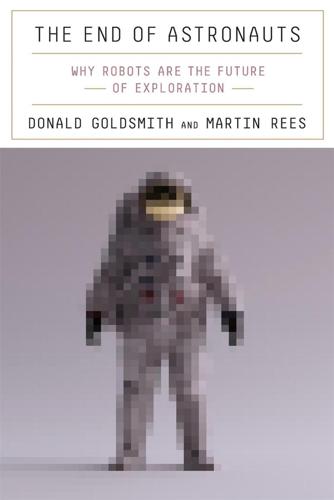
The End of Astronauts: Why Robots Are the Future of Exploration
by
Donald Goldsmith
and
Martin Rees
Published 18 Apr 2022
They rescued the Hubble Space Telescope from failure and prolonged its lifetime by decades on five different missions to upgrade its instrumentation.1 The authors belong to a generation old enough to remember the Apollo lunar landings of 1969–1972; we can hardly look at the moon without being reminded of Neil Armstrong and Buzz Aldrin. Their exploits, which seem even more heroic as we recall their dependence on primitive computers and untested equipment, remind us that humans have traveled into space for more than sixty years, not from necessity but in response to our desire to send them there and then bring them back to Earth.
…
These new developments make it unclear whether space colonization might be funded by governments, either separately or in collaboration, or by immensely wealthy buccaneers who aim to set themselves up as the rulers of new empires. One factor that would affect any of these transitions is the certain appearance of new technologies that will shape how humans live on Earth. Just as today’s smartphones might have seemed nearly magical to Neil Armstrong, super-advanced computers will enable future transformations such as artificial intelligence and, of course, intelligent robots. Silicon chips, which have already remade our everyday objects and social interactions, will grow more powerful, creating (among many other worries) the capability to maintain constant surveillance of an entire population.

Augmented: Life in the Smart Lane
by
Brett King
Published 5 May 2016
Figure 1.5: The correlation between tractors and reduced employment in farming The disruptions in the next age were perhaps a little subtler, although the news of such changes tended to be more dramatic. The Atomic, Jet or Space Age (1945–1975) My childhood heroes had the right stuff. Neil Armstrong, Chuck Yeager, Yuri Gagarin, Alexey Leonov,14 Buzz Aldrin, David Scott, Jim Lovell, Gordon Cooper and the other Apollo astronauts (just to name a few) captured our imagination, and pushed us beyond barriers that we could never have imagined. However, none of these amazing feats would have been possible without a supporting cast of thousands, and without leaps and bounds in technological capability.
…
The tablet computer that you use today would have cost US$30 to 40 million in equivalent computing power to build just two or three decades ago, and would have been known as a supercomputer at the time. The smartphone that you probably have in your pocket is more powerful than all of the computers that NASA had in the 1970s during the Apollo project, and almost 3 million times more powerful than the Apollo guidance computer that Neil Armstrong, Buzz Aldrin and Michael Collins used to navigate their way to the lunar surface. The most powerful supercomputer in 1993, built by Fujitsu for Japan’s space agency at an approximate cost of US$34 million (1993 prices), could easily be outstripped performance-wise by a smartphone like the Samsung Galaxy S6.
…
In 1969, however, John Pierce, one of Bell’s leading engineers, wrote an open letter to the Acoustical Society of America criticising speech recognition at Bell and compared it to “schemes for turning water into gasoline, extracting gold from the sea, curing cancer, or going to the moon”. Ironically, one month after Pierce published his open letter, Neil Armstrong landed on the moon. Regardless, Bell Labs still had its funding for speech recognition pulled soon after. By 1993, speech recognition systems developed by Ray Kurzweil could recognise 20,000 words (uttered one word at a time), but accuracy was limited to about 10 per cent. In 1997, Bill Gates was pretty bullish on speech recognition, predicting that “In this 10-year time frame, I believe that we’ll not only be using the keyboard and the mouse to interact, but during that time we will have perfected speech recognition and speech output well enough that those will become a standard part of the interface.”25 In the year 2000, it was still a decade away.
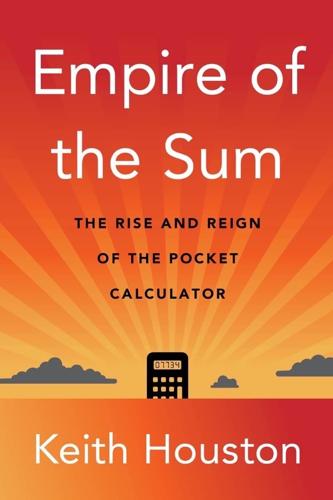
Empire of the Sum: The Rise and Reign of the Pocket Calculator
by
Keith Houston
Published 22 Aug 2023
Somewhere between five and ten N600-ESs were fired into space, with one or two examples flying on each of the first five Apollo missions as backups for the electronic computers that guided and controlled the spacecraft.89 “No modifications were needed for use in space,” the Smithsonian notes drily of the space-flown N600 in its collection, because, let us not forget, the twenty-two scale, double-sided, trigonometric Pickett N600-ES was scarcely more complex than an elementary school ruler.90 It is not known whether Neil Armstrong or Buzz Aldrin ever had to break out their slide rules while aboard Apollo 11 (Pickett Corporation, who crowed mightily about their lunar rules, would certainly have let their customers know about it), but that did not stop Aldrin’s rule from fetching $77,675 at auction in 2007.91 From such dizzying heights, the slide rule had plenty of time to watch the ground rush up to meet it.
…
But the final nail in the slide rule’s complimentary pleather belt holster was not that it was inaccurate, or that it could only address a limited set of mathematical functions. The real problem was that it asked too much of its user: it put them closer to the numbers, yes, but it also asked them to estimate and fudge and squint and recompute. As such, when a viable alternative arrived, the end was swift.92 Just three years after Neil Armstrong and Buzz Aldrin carried their Pickett slide rules to the moon, the astronauts who flew to the Skylab space station took HP-35 electronic calculators instead. In 1976, Pickett stopped making slide rules; in 1980 their remaining inventory was sold for scrap.93 William Oughtred’s clever stick was no match for the scientific calculator
…
So you would have to call up and give the astronauts some—we had two knobs, a pitch and yaw knob, but you have to give him some angles to put it at. [ . . . ] We would have to run four separate programs on this Programma 101, and then in between those programs, we’d have to get out our manuals [ . . . ] we’d have to look up trigonometric functions and input the data, which today your calculator does that. [ . . . ] Then we would read out the angles that we came up with to the crew, and they would dial them in, look at the signal strength, the signal strength there.79 Olivetti’s “supercalculator,” as Whittle called it, was a vital cog in the effort to keep Neil Armstrong and Buzz Aldrin in touch with their home planet. Shortly thereafter, the Programma 101 was pressed into the service of the other fateful American adventure of the 1960s. The same year that Aldrin and Armstrong landed on the moon, the U.S. Air Force began secret bombing operations over neutral Cambodia, seeking to dislodge North Vietnamese forces from hidden Cambodian bases.

Through the Glass Ceiling to the Stars: The Story of the First American Woman to Command a Space Mission
by
Eileen M. Collins
and
Jonathan H. Ward
Published 13 Sep 2021
Our after-hours antics provided a way for hardworking people to blow off steam and build camaraderie. If you took it too far, you could be dismissed. That happened to one of the pilots in a previous class. Too many pranks caused him to lose his focus and wash out of the program. The overall meat of TPS was serious and conservative. The top test pilots—such as Chuck Yeager, Scott Crossfield, Neil Armstrong, and John Young—were focused and professional, not hotshots. Deep down, we all hoped to emulate their example. Each of us wanted to be the best test pilot we could possibly be. Everyone wanted to get the highest grades on their flights, verbal presentations, written presentations, and tests. We were so aware of our natural drive to be the best that from the outset, we made rules to keep the level of competition from becoming overwhelming.
…
Humility and vulnerability were important. Too many lives were on the line if you were too proud to disclose what you learned from your errors. Another result of our mission delay was that I’d be the next-to-last person in my astronaut class to fly. On occasion, that agitated me. When it did, Jim Wetherbee reminded me that Neil Armstrong was the last person from his astronaut class to fly. The first man on the Moon! Rob Navias from NASA Public Affairs reassured me, “Your mission will go on time in January 1995.” He seemed confident, and his optimism was contagious. Both men helped me to realize that there was no use in me stewing about things over which I had no control.
…
Kennedy, Jr., his wife, and her sister had disappeared somewhere between New Jersey and Martha’s Vineyard. Like the rest of the country, we were shocked and saddened to watch the terrible story unfold over the weekend. Despite this awful news, excitement was building for our launch early Tuesday morning. July 20 was also the thirtieth anniversary of the Apollo 11 lunar landing. Neil Armstrong, Buzz Aldrin, and Michael Collins were coming to KSC for a celebration of that anniversary, and they planned to stay for our launch. I invited Lisa Reed and her training team to KSC as our guests to see us off. They were so wonderful in helping us prepare that I wanted to be sure they had a small reward for their hard work.

The Power of Geography: Ten Maps That Reveal the Future of Our World
by
Tim Marshall
Published 14 Oct 2021
His memory lives on, not least in a crater named after him on the far side of the Moon. The Soviets built on Konstantin’s work. By 1957 they’d launched their first intercontinental ballistic missile (which leaves the atmosphere) and put the Sputnik satellite into space. The same year saw Sputnik 2 – this time with added dog! It’s quite right that the names Yuri Gagarin and Neil Armstrong are up there with the great explorers such as Marco Polo, Ibn Battuta and Columbus, but history should spare a thought for the first animal to go into orbit. She was a placid little dog named Laika (Barker) after the public heard her barking on the radio in the run-up to the mission. Attached to sensors, and in a tiny space suit, she made at least one orbit of Earth before succumbing to heat and stress.
…
It may be the most famous photograph ever taken and is credited with massive influence on the environmental movement. From space the crew read out verses from Genesis, ‘In the beginning God created the heaven and the earth’, capturing the spirit of the times, the sense of wonder about how far humanity had come and how much further it could go. The following year, on 20 July 1969, Neil Armstrong set foot on the Moon and uttered an eight-second-long sentence which will be known for as long as humans exist: ‘That’s one small step for man, one giant leap for mankind.’ Since then twelve astronauts, all American, have walked on the Moon, but the territory covered so far would fit into a small town, so claiming that we have explored it would be akin to aliens landing in Roswell, New Mexico, and saying they’d explored Earth.
…
Rushdie) 52 satellite technology/networks xv–xvi, 30–1, 132, 303, 304, 306, 313, 314, 315, 316–18 Saud, Crown Prince 84 Saud, King Abd Allah al 80 Saud, Muhammad ibn 74, 78, 79 Saudi Arabia xiii, xiv, 44, 47, 57, 58, 61, 69, 186 Al-Qaeda 88–90 anti-television protests 85 Covid-19 99 Crown Prince Mohammed bin Salman 90–1, 92–7, 102–4 Crown Prince Saud 84 early Saud dynasty 74–5, 78–82 Eastern Province 77, 82, 97, 99, 104 employment 98–9, 101, 104 Empty Quarter 76 Fahd of Saudi Arabia 87 Faisal I of Saudi Arabia 84–5 First Saudi State 79–80 foreign population/workforce 98–9 geography 75–7 Ibn Saud 80–3 investment in the Sahel 219, 233–4 Islamist terrorism 88–90, 104 Jeddah 77, 99 Khalid of Saudi Arabia 85–7 land borders 76 Libyan Civil War 92 Mecca 77, 78, 79, 81, 84, 86, 99 Medina 77, 79, 81, 84 murder of Jamal Khashoggi 94–5 Najd 78–9, 80, 81 National Guard 87, 88, 96 Neom city project 99 oil supplies 75, 76, 77, 82–3, 84, 85, 93, 96, 97–8, 99–100, 101–2, 104 Osama Bin Laden 75, 87, 88–9, 104 population size 75, 83, 98–9 Rashidi dynasty 80–1 relationship with China 102 relationship with France 86 relationship with Iran 91–2, 93, 94, 103 relationship with Israel 102–3 relationship with Lebanon 93–4 relationship with post-war Iraq 91 relationship with Qatar 92, 258 relationship with Syria 91–2 relationship with United Kingdom 81–3 relationship with USA xiv, 75, 83–4, 85, 87–9, 93, 102, 104 religious extremism 75, 85, 88–90, 104 renewable energy 101 resignation of Saad al-Hariri 93–4 Riyadh 77, 80–1, 99, 177 Saud family arrests at the Ritz Carlton 96–7 Shia Islam 77, 79, 97, 99, 104 siege of the Grand Mosque 86–7 slavery 84 Sunni Islam 77, 79, 91 (see also Wahhabism) Vision 2030 98–9 Wahhabism 79, 86, 87, 89–90, 97, 104 water supplies 100–1 Yemen Civil War 93 Saudi Aramco 83, 85, 98, 100 SAVAK 50 Schinas, Alexandros 151 Scotland Act of Union (1707) 116 alliance with France 117, 118 colony in Panama 117–18 independence xv, 109, 118, 133, 134–7 Scotti tribe settlement 114 wars with England 115, 117 Second Balkan War 151–2 Second World War ix–x, 23–4, 49, 83, 84, 122–3, 126, 136, 153–4, 181, 249, 303 Serbia x, 151, 152, 185, 293–4 Shammar, emirate of 74, 79, 80 sharia law 88, 186, 213, 214 Shatt al-Arab waterway 39, 42 Shia Islam xi, xiv, 42, 46, 47, 51, 52, 53, 57–8, 59, 61, 68, 91, 104 Iran 42, 46, 47, 51, 52, 53, 57–8, 59, 61, 68, 91, 94 Saudi Arabia 74–5, 77, 79, 93, 97, 99, 104 Sidi Yahya mosque 213–14 Sisi, General Abdel Fattah el- 92, 187, 261–2 SKY Perfect Corporation 318 slavery 84, 121, 208, 209, 249, 261 Society of Pathseekers of the Islamic Revolution 54 Soleimani, Qasem 62 Solomon Islands 28 Solomon, King 246 Somalia 242, 243, 244, 250, 251, 252, 258–9 South China Sea 26, 31–2 South Korea 31, 32 South Pacific 27–9 South Sudan 210, 242, 262 Southeastern Anatolia Project 192–3 Soviet Union 17, 25, 49, 50, 87, 123, 154, 161, 304 see also Russia space xv–xvi Artemis Accords 302–3, 309 asteroid 3554 Amun 324 astropolitical theory/space geography 311–14 Chinese exploration 314 colonizing the Moon 302 commercial companies 308 development of rocket technology 303–4 Earth boundaries 310 Earth Space/low Earth orbit 312–14 Elon Musk/SpaceX 308, 319–20 extraterrestrial life forms 322–3 first moon landing 303, 304, 305 governmental frameworks 302–3, 309–11, 324–5 imagining the future 319–25 International Space Station (ISS) 303, 306, 307–8 Jeff Bezos/Blue Origin 308 junk/debris 318 Laika the dog 304 meteor strikes 325 militarization of 314–19 mining the moon 302, 309 Moon ‘safety zones’ 309 Moon Treaty (1979) 310–11 Neil Armstrong 304, 305 Outer Space Treaty (1967) 309–11, 315 the Pioneer Plaque 323 Skylab space station 306 Soyuz/Apollo docking (1975) 306, 325 Space Shuttle missions 305–6, 307 speed of travel 321–2 Sputnik satellites 304 travel to Mars 308, 313 water-recovery system 307 Yuri Gagarin 304–5 Spain xv, 118, 119, 210, 219, 234 attempted coup (1981) 288 attempted invasion of England 278–9 Basque Country 269, 279, 284, 289–90 Catalan referendums for independence 292–3, 294 Catalonia 269, 279–80, 282, 284, 287, 289, 291–6 Civil War 282–4 colonialism 277, 280–1 Columbus, Christopher 276–7 ETA (Euzkadi ta Askatasuna) 290–1 EU and NATO 289, 293–4, 297 Francisco Franco 282–7 geography 268, 270–2 historical invasions 273–4 hydroelectric power 272 Inquisition 275–6 internal tensions 268–9, 272 see also Basque Country; Catalonia Isabella and Ferdinand of Spain 275–6, 277 King Juan Carlos 287–9 King Philip II 278 Latin American gold 277 Latin American rebellions 280–1 La Guerra dels Segadors 279 maritime vulnerability 277–8 medieval fortresses 268 migrants and refugees 297 military force and conflicts 271, 274–5, 277–81 military support in the Sahel 297 Moors 271–2 Muslim invaders/settlement 273–4, 275, 276 naval defence 271, 296–7 population size 270, 280 Reconquista Iberia 274–5 relationship with France 279–80 relationship with the USA 286–7 Roman occupation 273 Visigoths 273 water supplies 271–2 Spartacus film 46 Sputnik satellites 304 Stafford, Thomas P. 306 Standard Oil Company of California (SOCAL) 83 Starshot/space sails project 322 Stolen Generation, Australian 12 Strait of Hormuz 43–4, 61 Suarez, Adolfo 288 Sudan 210, 242, 262 Suez Canal 120, 151, 180 Sunni Islam xi, 42, 47, 51, 57–8, 59, 64, 174, 187 Fulani 222 Iran 42, 47, 51, 57–8, 59, 64 Muslim Brotherhood 186 Salafists 223 Saudi Arabia/Wahhabism 75, 77, 79, 86, 87, 89–90, 91, 97 Sweden 126, 131, 218 Syria xii, 57, 61, 68, 69, 81, 85, 103, 143, 166, 192, 193, 195–6, 198 Civil War xi, 47, 58, 63, 91–2, 131, 173, 177, 187–8, 233 T Taiwan 28, 30, 231 takfiri ideology 223 Taliban 89, 232 Tamerlane 40 Tasmania 20 Taylor, Griffith 7–8 Tehran, Iran 42 Tejero, Lieutenant-Colonel 288 Temple of Jerusalem 45 Ten Pound Poms 17 Tesla 101 Tewodros II, Emperor 248 The Times 227 Thessalonika (Salonika) 151, 153, 154 Thiele, Heike 219 Thomas, Bertram 76 Those Who Sign in Blood 215 Thucydides 142 Timbuktu 213 Tomyris 45 Tonga 29 Torres Straight Islanders 13–14 Treaty of Lausanne (1923) 153, 189–90 Treaty of Tordesillas (1494) 277 Troy, siege of 158 Truman, Harry S. 286 Trump, Donald xii, 25, 61–2, 93, 315–16 Tsiolkovsky, Konstantin 303–4 Tuareg people 205, 211, 212, 213, 214, 219, 234–5 Tudors 115 Tunguska meteor 325 Turkey xiii, xv, 42, 48, 92, 94–5, 96 Aegean Sea 142, 143, 191 Anatolia 172, 173, 174, 175, 191–3, 197 Arab Uprisings (2011) 185–6 Armenian genocide 164, 180, 188 arms manufacture 198 attempted coup (2016) 188–9 Byzantium/Constantinople/Istanbul 148–9, 152, 174–5, 178, 179 dams and water supplies 192–3 defence 172, 175–7 General Kemal Atatürk 152–3, 179–81, 196, 199 geography 172, 173, 176 Hagia Sophia 196–7 industrialisation 180–1 languages 179–80 Lausanne Treaty (1923) 189–90 Mavi Vatan/Blue Homeland strategy 189–90, 198 Mediterranean gas fields 142, 162–3, 190 migrant/refugee crisis 157, 188 military coups 182 and NATO 163, 164–6, 181, 188–9, 191, 197–8, 199 Osman Ghazi 174 Recep Tayyip Erdoğan 183–9, 191, 194, 195–7, 198–9, 258 relationship with Cyprus 143, 161–2, 198 relationship with Egypt 186–7, 198, 258, 259 relationship with Ethiopia 259 relationship with France 164, 198 relationship with Greece 142, 143, 147, 152–3, 158–60, 161–3, 179, 190, 198 relationship with Israel 185–6 relationship with Russia 190–1 relationship with Somalia 259 relationship with Syria 187–8, 192, 193, 195–6 relationship with the Kurds 175, 181, 182, 187, 192, 193–5 relationship with UAE 258 sanctions 191 Second Balkan War 152 Second World War 181 Seljuk Empire 173–4 War of Independence 152–3, 179 Westernization 179–80 see also Ottoman Empire Turkmen, Iranian 42 U Ukraine xi, 175 unipolar decade (1990s) x United Arab Emirates (UAE) 44, 57, 76, 80, 92, 102–3, 186, 198, 219, 258–9, 262 United Kingdom xiii Acts of Union (1707) 109, 116, 117–18, 133 Anglo-Persian Oil Company 48, 49 Anglo-Saxons 110, 114 armed forces 131, 134–5, 136, 165, 218, 219, 249 (see also Royal Air Force; Royal Navy) Brexit xv, 108, 127, 136 British Empire 118–22, 123–4, 148, 150–1, 161, 210, 308 Catalonian independence 295–6 Celtic Britain 112–13 colonialism 108, 117, 121, 210 Commonwealth of Australia Constitution Act (1900) 15 defeat the Spanish Armada 278 dialects 110–11 east–west divide 111, 113–14 education system 132–3 EEC and EU 125–7, 129, 131–2, 136, 164 EFTA membership 295 English language 132 geography 108, 109–10, 111 German invasion plans 122–3 historical invasions 113–15 industrial revolution 111 intelligence network 30, 129, 135 Iranian military coup (1953) 49–50 Ireland 109–10 LEJOG cycle route 110 London 112, 113, 115, 249 Magna Carta 115 MI6 49 military support in the Sahel 218, 219, 235 Napoleonic wars 119–20 Norman invasion 114–15 nuclear submarines 134–5, 136 place names 110–11 population distribution 112 Reformation 116 relationship with Australia 22, 23 relationship with China 128, 130 relationship with France 130–1, 133 relationship with Germany 121–2, 133 relationship with Iran 40 relationship with Poland 130 relationship with Saudi Arabia 81–3, 84 relationship with Scotland 109 relationship with USA 121–2, 123–4, 126, 128–9, 130 Roman occupation 112–13 Scottish independence xv, 109, 118, 133, 134–7, 296 Second World War 122–3 terrain and infrastructure 111–12 trade deals 128–30 Tudors 115 Vikings 110–11, 114 Wales 112, 113, 115–16 United Nations 28, 53, 60, 68, 84, 132, 161–2, 204, 218, 219, 225, 231, 249, 285, 310, 311 United States of America x Apollo space missions 303, 305–6 armed forces 23, 24, 30, 31, 61–2 assassination of Qasem Soleimani 63 CIA (Central Intelligence Agency) 30–1, 49 commercial space travel 308 Constitution 115 embassies burnt 86 embassy siege, Iran 60–1 Greek Civil War 154 intelligence network 30–1, 61, 129 International Space Station 307 invasion of Iraq (2003) 57 Iranian military coup (1953) 49–50 Louisiana Purchase 119 militarization of space 314–19 military coup, Cyprus (1974) 161 National Space Policy 319 Pact of Madrid 286–7 Quadrilateral Security Dialogue 32 rare-earth supplies 229–30, 231 relationship with Australia 23, 24–5, 30 relationship with Ethiopia 249, 251, 261 relationship with Greece 154, 165–6 relationship with Iran 39, 44, 49, 60–2, 63, 68–9 relationship with Saudi Arabia xiv, 83–4, 85, 87–9, 93, 102, 104 relationship with the UK 121–2, 123–4, 126, 128–9, 130 relationship with Turkey 189, 191 resignation of Lebanese prime minister 94 Russian ‘stalking’ satellites 316–17 Sahel Alliance commitments 219, 220–1, 232 satellite-killer systems 317–18 Second World War 23 Skylab space station 306 Soyuz/Apollo docking 306 Space Force 303, 314–16 stock-market crash (1929) 181 Strategic Petroleum Reserves 22 in the West Pacific 24–5 uranium production 227–8, 230 V V-2 rockets 303 Van Allen radiation belts 314 Vanuatu 28 Velayat-e faqih 52 Versailles Treaty (1919) 303 Victoria, Queen 15, 150 Victory, HMS 119 Vienna 176–7 Vietnam 24, 30, 32 Vietnamese ‘boat people’ 17 Vikings 110–11, 114 Visigoths 273 Vision 2030 98–9 von Braun, Wernher 303 voting rights 12–13, 50 Voulet-Chanoine expedition (1898/99) 209–10 Voulet, Paul 209–10 W Wahhab clan 79, 86 Wahhab, Muhammad ibn Abd al- 79 Wahhabism 79, 81, 87, 89–90, 97, 104 Wales 112, 113, 115–16 ‘walkabout,’ Australia 6–7 Wall Street Journal 231 ‘White Australia’ Policy 16–17 Whitson, Peggy 307 William the Conqueror 114–15 Wilson, Edward 12 Witiza, King 273 women’s rights 52, 65, 97, 98, 283 World Bank 219, 225 Y Yemen 44, 57, 61, 68, 69, 76, 77 Civil War 47, 93, 258 Yugoslavia x, 154, 160 Yugoslav Wars 17, 182–3 Z Zagros Mountains 39, 42, 44–5, 53 Zayed, Prince Mohammed bin 102 Zenawi, Meles 252 Ziyad, Tariq ibn 273–4 Zoroastrianism 45, 46 First published 2021 by Elliott and Thompson Limited 2 John Street London WC1N 2ES www.eandtbooks.com ISBN: 978-1-78396-538-0 Copyright © Tim Marshall 2021 The Author has asserted his right under the Copyright, Designs and Patents Act, 1988, to be identified as Author of this Work.
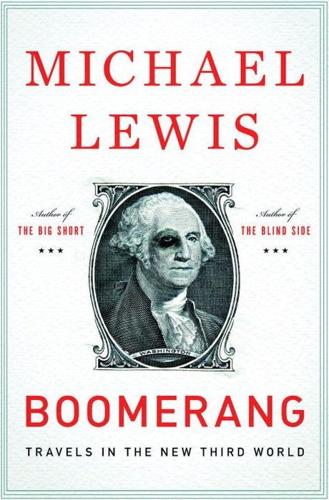
Boomerang: Travels in the New Third World
by
Michael Lewis
Published 2 Oct 2011
The fuse is burning its way toward the bomb. When Neil Armstrong took his small step from Apollo 11 and looked around, he probably thought, Wow, sort of like Iceland—even though the moon was nothing like Iceland. But then, he was a tourist, and a tourist can’t help but have a distorted opinion of a place: he meets unrepresentative people, has unrepresentative experiences, and runs around imposing upon the place the fantastic mental pictures he had in his head when he got there. When Iceland became a tourist in global high finance it had the same problem as Neil Armstrong. Icelanders are among the most inbred human beings on earth—geneticists often use them for research.

Visual Thinking: The Hidden Gifts of People Who Think in Pictures, Patterns, and Abstractions
by
Temple Grandin, Ph.d.
Published 11 Oct 2022
“Spatial and Object Visualization Cognitive Styles: Validation Studies in 3800 Individuals.” Submitted to Applied Cognitive Psychology June 12, 2006. https://www.researchgate.net/publication/238687967_Spatial_and_Object_Visualization_Cognitive_Styles_Validation_Studies_in_3800_Individuals. Chaiken, A. “Neil Armstrong’s Spacesuit Was Made by a Bra Manufacturer.” Smithsonian Magazine, November 2013. https://www.smithsonianmag.com/history/neil-armstrongs-spacesuit-was-made-by-a-bra-manufacturer-3652414/. Chandler, D. L. “Behind the Scenes of the Apollo Mission at M.I.T.” MIT News, July 18, 2019. Communications & Power Industries. “About Us: History.” https://www.cpii.com/history.cfm.
…
Laning masterminded a relatively primitive computer system that could process the algebraic equations necessary for the lunar module to function, effectively creating a compiler that turned the equations into understandable computer language. Laning freely acknowledged that others did the programming, but it was his three-tiered processing system that prioritized tasks and thus enabled Neil Armstrong to take partial control of the module when the system was overloaded, readjust the radar to its correct setting, and disconnect it to prevent the computer from further overloading. Laning’s compiler essentially taught the computer how to read and interpret algebraic equations and then figure out how to multitask by switching between tasks in a fraction of a second.

Voyage
by
Stephen Baxter
Published 23 May 2011
Annotation The book depicts a manned mission to Mars as it might have been in another timeline, one where John F. Kennedy survived the assassination attempt on him in 1963. Voyage is the epic saga of America’s might-have-been — a powerful, sweeping novel imaginatively created from true lives and real events. NASA, the Saturn rocket, and historical figures from Neil Armstrong to Ronald Reagan are interwoven with unforgettable characters that only a world-class novelist could bring to life: Dana, the Nazi camp survivor who achieves the dream of his hated masters; Gershon, the Vietnam fighter jock determined to be the first African-American to land on another planet; Lee, the small-scale aerospace contractor with a big dream; Priest, who gives his life so that others might live to walk on Mars.
…
T minus three minutes forty seconds and counting. I am told that there are an estimated one million here with us today, the largest turnout for a launch since Apollo 11. Welcome to all of you. You might like to know that among the celebrities watching the launch today in the VIP enclosure are Apollo 11 astronauts Neil Armstrong, Joe Muldoon, and Michael Collins, cosmonaut Vladimir Viktorenko, along with Liza Minnelli, Clint Eastwood, Steven Spielberg, George Lucas, William Shatner, sci-fi authors Arthur C. Clarke, Ray Bradbury, and Isaac Asimov, and singer John Denver. We’re sure you aren’t going to be disappointed.
…
But with men routinely being hurled into space in ballistic capsules like Mercury and Gemini, the X-20 looked too advanced for its time, and it soon ran up a bill as large as that for the entire Mercury program without delivering a single flight article. And it was canned. Now, the only way for a pilot to reach space was to transfer to NASA. Neil Armstrong was another X-15 pilot who had gone that way before. And so that was what Stone had determined to do. But first he had some unfinished business. In 1969, Stone was thirty-seven years old. “Drop minus one minute.” “One minute,” Stone said. “Rog. Data on. Emergency battery on. I’m ready when you are, buddy.
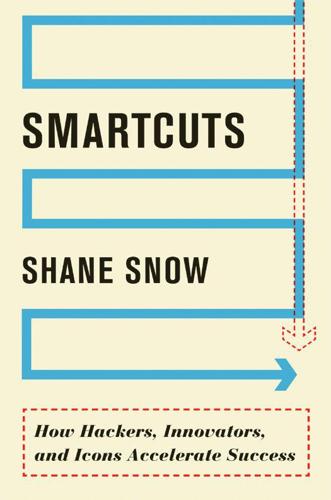
Smartcuts: How Hackers, Innovators, and Icons Accelerate Success
by
Shane Snow
Published 8 Sep 2014
If you want to get really depressed about success, look at what happened to the heroic astronauts of the 1960s and ’70s. Buzz Aldrin, the second man to set foot on the moon, returned home from the historic Apollo 11 mission and became an alcoholic. Severely depressed, his life unraveled. Aldrin burned through three marriages and wrote two memoirs about his misery. Neil Armstrong, the man who stepped out of Apollo 11 just ahead of Aldrin, spent his next few decades figuring out what to do with his life. He briefly taught some small classes at a university, then quit unexpectedly. He consulted a little for NASA and some random companies, and did a commercial for Chrysler, and quit all those things, too.
…
That money changes how you see yourself, how you interact with people and what you do with your day and your future in very significant ways,” says Goldbart. 145 If you want to get really depressed: An excellent CNN story recapping the various journeys of former moonwalkers: Chris Chandler and Andy Rose, “After Walking on Moon, Astronauts Trod Various Paths,” CNN, July 17, 2009, http://edition.cnn.com/2009/TECH/07/17/life.after.moon.landing/index.html (accessed February 17, 2014). Original reporting of Armstrong’s lawsuits can be seen at Bill Romano, “Neil Armstrong Sues over Use of Name in Ad,” Boca Raton News, February 6, 1997, http://news.google.com/newspapers?nid=1291&dat=19970206&id=1ClUAAAAIBAJ&sjid=TY4DAAAAIBAJ&pg=4495,1731221 (accessed February 17, 2014). James Irwin’s ministry info can be found in his obituary at “James Irwin Was Astronaut, Minister, City Native,” Associated Press, August 10, 1991, http://news.google.com/newspapers?

Sapiens: A Brief History of Humankind
by
Yuval Noah Harari
Published 1 Jan 2011
Darwin had studied to become an Anglican parson but was far more interested in geology and natural sciences than in the Bible. He jumped at the opportunity, and the rest is history. The captain spent his time on the voyage drawing military maps while Darwin collected the empirical data and formulated the insights that would eventually become the theory of evolution. On 20 July 1969, Neil Armstrong and Buzz Aldrin landed on the surface of the moon. In the months leading up to their expedition, the Apollo 11 astronauts trained in a remote moon-like desert in the western United States. The area is home to several Native American communities, and there is a story – or legend – describing an encounter between the astronauts and one of the locals.
…
And the European empires rose and flourished thanks also to factors other than science. Behind the meteoric rise of both science and empire lurks one particularly important force: capitalism. Were it not for businessmen seeking to make money, Columbus would not have reached America, James Cook would not have reached Australia, and Neil Armstrong would never have taken that small step on the surface of the moon. 16 The Capitalist Creed MONEY HAS BEEN ESSENTIAL BOTH FOR building empires and for promoting science. But is money the ultimate goal of these undertakings, or perhaps just a dangerous necessity? It is not easy to grasp the true role of economics in modern history.
…
Did the wealth humankind accumulated over the last five centuries translate into a new-found contentment? Did the discovery of inexhaustible energy resources open before us inexhaustible stores of bliss? Going further back, have the seventy or so turbulent millennia since the Cognitive Revolution made the world a better place to live? Was the late Neil Armstrong, whose footprint remains intact on the windless moon, happier than the nameless hunter-gatherer who 30,000 years ago left her handprint on a wall in Chauvet Cave? If not, what was the point of developing agriculture, cities, writing, coinage, empires, science and industry? Historians seldom ask such questions.

Mapping Mars: Science, Imagination and the Birth of a World
by
Oliver Morton
Published 15 Feb 2003
The Laser Altimeter Then felt I like some watcher of the skies When a new planet swims into his ken; Or like stout Cortez when with eagle eyes He stared at the Pacific—and all his men Looked at each other with a wild surmise— Silent, upon a peak in Darien. —John Keats, “On First Looking into Chapman’s Homer” On 13 February 1969, nine days before Mariner 6 set off for Mars and five months before Neil Armstrong was to step onto the dust of the Sea of Tranquillity, the newly inaugurated president, Richard Nixon, asked his vice-president, Spiro Agnew, to explore the options for a post-Apollo space program. Agnew became enthused. When Apollo 11 made its historic landing that July, he talked of committing the nation to the goal of sending people to Mars.
…
But physical resemblance is not the whole story; this representation of Mars is ideological, as well. Since the 1960s, America has ceaselessly talked about space as a new frontier, a continuation of the nineteenth century’s expansion—and one result of this rhetoric has been an eagerness to see the landscapes of the solar system in terms of the landscapes of the American West. When Neil Armstrong told the watching world that the “stark beauty” surrounding Tranquillity Base looked “like the high desert of the United States,” he wasn’t just speaking on the basis of personal experience or of the training with which the Survey had equipped him. He was expressing the rhetorical continuity between the pioneers of the space age and the pioneers of the West on which his adventure was founded.
…
Only on 12 July—eight days after the symbolically weighted date for which the first touchdown on another planet had been slated—was a site found that looked smooth to the orbiters’ eyes and sounded flat to the radar ears. Viking 1 landed about five hundred miles northwest of its original target site on 20 July 1976, the seventh anniversary of Neil Armstrong’s touchdown on the moon. A little more than six weeks later, Viking 2 landed at its second backup site in Utopia after the primary in Cydonia and the first backup had proved similarly worrying. It was a close-run thing; analysis of the rocks among which it found itself suggests that Viking 2 ran an almost one-in-three chance of coming down on a crippling boulder.
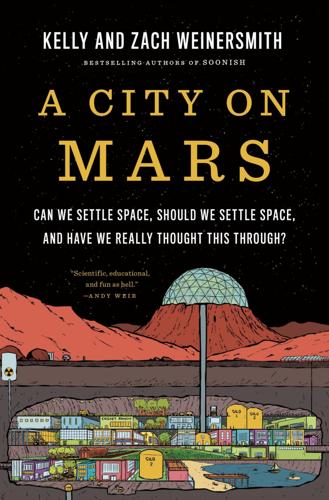
A City on Mars: Can We Settle Space, Should We Settle Space, and Have We Really Thought This Through?
by
Kelly Weinersmith
and
Zach Weinersmith
Published 6 Nov 2023
A recently established UN Working Group may shed some light on what views other countries hold, but a case could be made that the US interpretation is sliding toward customary. If countries and companies begin landing on the Moon and using its resources in the near future, we will find out pretty quickly. Stuff You Put into Space Making things even weirder, the current interpretation is that nations do retain sovereignty over stuff they put into space. Neil Armstrong’s poo bags? Those are Uncle Sam’s. But not everything Uncle Sam owns is quite so glamorous—in addition to the literal crap, there’s, well, crap. What’s sometimes called space junk. Broken bits of satellites from weapons tests, that one dead nuclear reactor, and oh yeah, the millions of tiny needles placed into orbit by something called Project West Ford.
…
The reasoning is that back in the 1960s when the USSR and United States duked it out in a race to the Moon, all sorts of spending went into the science and tech they see as valuable for humanity, or anyway awesome for humanity. We’re not sure this is an unmitigated good: even if we buy that the 1960s Moon Race was a pure net benefit for humanity, that doesn’t imply a 2020s Moon Race would be likewise. Neil Armstrong and Buzz Aldrin walking around on the Moon did not prohibit Soviet cosmonauts from doing the same. Under the guidelines proposed in the Artemis Accords, a US base on Shackleton crater could plausibly limit the ability of other players to put a base nearby. You might not have a race so much as a zero-sum scramble.
…
Under current space law, that poo is US government property and is protected by NASA’s 2011 “Recommendations to Space-Faring Entities: How to Protect and Preserve the Historical and Scientific Value of U.S. Government Lunar Artifacts.” So if you’ve ever dreamt of growing a lunar vegetable patch in Neil Armstrong’s long-lost bowel movements, we’re sorry, it’s time to move on. OceanofPDF.com *If you would like to join us in being a nerd hyperventilating over Moon isotopes, we recommend the recent paper: Gerrit Bruhaug and William Phillips, “Nuclear Fuel Resources of the Moon: A Broad Analysis of Future Lunar Nuclear Fuel Utilization,” NSS Space Settlement Journal 5 (June 2021).
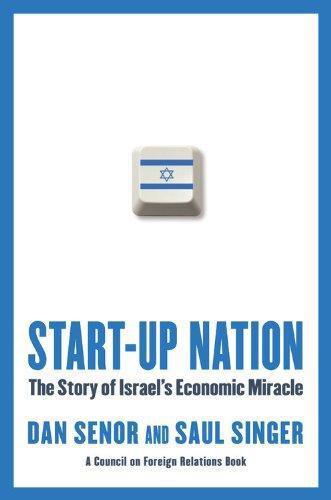
Start-Up Nation: The Story of Israel's Economic Miracle
by
Dan Senor
and
Saul Singer
Published 3 Nov 2009
When Riesenfeld first read the HBS case, in 2008, the issues it presented were immediately familiar to the ex-commando. But why had Riesenfeld mentioned the case to us? What was the connection to Israel, or to its innovation economy? The Apollo 13 crisis occurred on April 15, 1970, when the spaceship had traveled three-fourths of the way to the moon. It was less than a year after Neil Armstrong and Buzz Aldrin had stepped off Apollo 11. NASA was riding high. But when Apollo 13 was two days into its mission, traveling two thousand miles per hour, one of its primary oxygen tanks exploded. This led astronaut John Swigert to utter what has by now become a famous line: “Houston, we’ve had a problem.”
…
We passed the $900 million National Defense Education Act (about $6 billion in today’s dollars), providing scholarships, student loans, and scientific equipment for schools.”1 NASA and the Apollo program were created, as was a powerful new Pentagon agency dedicated to galvanizing the civilian R&D community. A little over a decade later, Neil Armstrong stepped onto the moon. The Apollo program and the Pentagon’s related defense investments spurred a generation of new discoveries that were ultimately commercialized, with a transformative impact on the economy. This concerted research and development campaign gave birth to entirely new business sectors within avionics and telecommunications, as well as the Internet itself, and became a legacy of America’s response to Sputnik.

How I Killed Pluto and Why It Had It Coming
by
Mike Brown
Published 7 Dec 2010
The father of everyone I knew—mine included—was some sort of engineer working to build the Apollo rockets to send men to the moon. For a while as a child, I thought that when you grew up you became a rocket engineer if you were a boy and you married a rocket engineer if you were a girl; few other options in the world appeared to exist. When Neil Armstrong stepped on the moon, I was pretty sure that that was exactly what I was going to be doing eventually, too. I drew picture books of rockets blasting off, of command capsules in orbit about the moon, of lunar modules landing next to giant lunar craters, and of parachutes deployed in the moments before splashdown.
…
These days I realize that the artists would have had no idea what Pluto looked like and probably felt the need to make the surface look like something interesting, but as a first grader I was thoroughly convinced that Pluto was covered in icy spires and that they would shatter at the slightest touch by a future Neil Armstrong. Clearly Pluto was different and mysterious and potentially very fragile. It would take another thirty-five years for me to learn just how fragile it really was. In third grade we finally learned about planets in school. Most people I know memorized their order by learning some variant of the mnemonic “My very excellent mother just served us nine pizzas” for “Mercury Venus Earth Mars Jupiter Saturn Uranus Neptune Pluto,” but for some reason, in my school we learned one that I have never heard since: “Martha visits every Monday and just stays until noon.
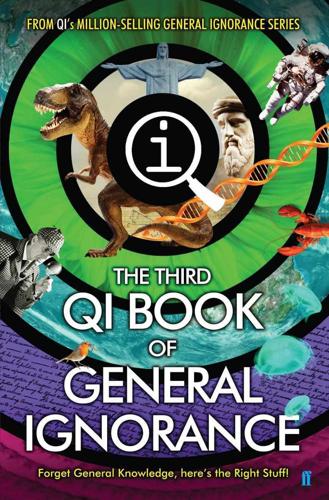
QI: The Third Book of General Ignorance (Qi: Book of General Ignorance)
by
John Lloyd
and
John Mitchinson
Published 28 Sep 2015
Assuming they have prior knowledge of what human flag colours mean, any belligerent aliens who stop off at the Moon en route to invading Earth will assume we’ve already surrendered. The most famous flag on the Moon – the one carried by Apollo 11 and erected during the first Moon landing – is the only one not standing. Buzz Aldrin saw it being blown over by the rocket blast as he and Neil Armstrong left for home. Given the extremes of heat, cold and radiation it will have been subjected to, it’s very likely to have disintegrated. Dennis Lacarrubba, whose New Jersey-based company made the flag, has been quoted as saying, ‘I can’t believe there would be anything left.’ Conspiracy theorists who believe the Moon landings were a hoax often cite the flag in the Apollo 11 photographs and ask how it could be waving when there is no wind on the Moon.
…
Only 24 humans have seen the far side of the Moon with their own eyes – and nobody has seen it since the Apollo 17 crew in 1972, over 40 years ago. Man has never landed on the far side – six probes have been deliberately crashed there, but no landing craft have touched down. On the near side of the Moon the tracks of astronauts are still visible even after four decades – the Moon has no atmosphere to wear them away. NASA has mapped Neil Armstrong’s and Buzz Aldrin’s footprints and found they didn’t get very far: they roamed an area hardly bigger than a football pitch. Aldrin mostly stayed in one half. There are spots on the Moon that are permanently dark. Some craters at the north and south poles are so deep that sunlight never gets to the bottom of them, even when that side is lit.
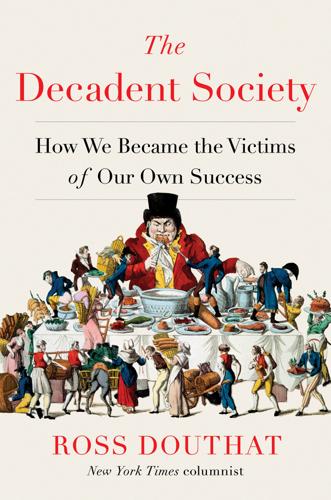
The Decadent Society: How We Became the Victims of Our Own Success
by
Ross Douthat
Published 25 Feb 2020
The existence of a frontier does not guarantee that it will be a destination, and past civilizations have given up on exploration for essentially internal reasons, even when new horizons were very much in reach. (The abandonment of major sea voyages by China’s Ming dynasty, in the same era as Columbus, did not come about because the world’s oceans were too wide but because of the empire’s changing intellectual fashions and political priorities.) Already when Neil Armstrong took his first small step, there were many voices making the case for the wastefulness of NASA’s voyages, for the pointlessness of “whitey on the moon,” and some of the turn toward pessimism preceded the realization that we would not be sending astronauts to Jupiter by the year 2001. A great deal of post-1960s thought—postcolonial, environmentalist—is premised on the idea that Western expansion was mostly cancerous, and this critique has been extended even to the idea of galactic colonization, with the exact same sort of ideological language applied.
…
All of this could happen on a scale that would be world altering without having the truly utopian scenarios come to pass. Terraforming Mars and becoming a multiplanetary species may be unattainable for now—but just going to Mars would be a bigger leap for mankind than anything we’ve accomplished since Neil Armstrong. The hard problem of consciousness probably isn’t solvable by brain scans and increases in processing power, and so you and I probably won’t actually be uploading our very selves to the cloud—but that doesn’t mean that forms of artificial intelligence can’t radically transform the economy and render many if not most human forms of labor obsolete.
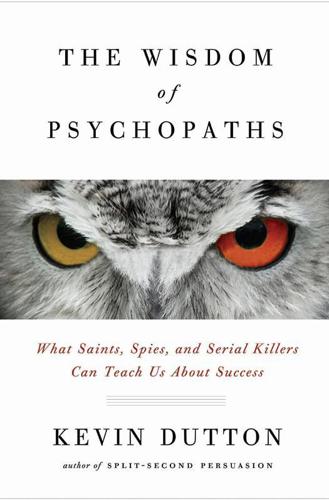
The Wisdom of Psychopaths: What Saints, Spies, and Serial Killers Can Teach Us About Success
by
Kevin Dutton
Published 15 Oct 2012
But there’s a story I once heard that provides a graphic illustration of how the refrigerated neurology that showed up on Robert Hare’s brain scans can, in certain situations, confer real benefits; how the reptilian focus and crystalline detachment of neurosurgeon James Geraghty can sometimes code for greatness not just in the boardroom, the courtroom, and the operating theater. But in another world entirely. The story goes like this. On July 20, 1969, as Neil Armstrong and his partner Buzz Aldrin zipped across the lunar landscape looking for a place to set their module down, they came within seconds of crash-landing. The problem was geology. There was just too much of it. And fuel: too little. Rocks and boulders lay scattered all over the place, making a safe approach impossible.
…
Bomb-Disposal Experts—What Makes Them Tick? This extraordinary account of incredible interplanetary insouciance epitomizes life on the horizons of possibility, where triumph and disaster share a fraught and fragile frontier and cross-border traffic flows freely. This time, however, the road to disaster was closed. And Neil Armstrong’s coolness under fire rescued from cosmological calamity one of the greatest feats ever in the history of human achievement. But there’s more. His heart rate, reports revealed later, barely broke a sweat. He might as well have been landing a job in a gas station as a spaceship on the moon. Some freakish strain of cardiovascular genius?
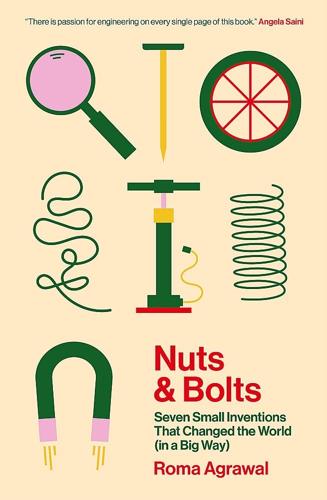
Nuts and Bolts: Seven Small Inventions That Changed the World (In a Big Way)
by
Roma Agrawal
Published 2 Mar 2023
While we think of engineering as a field littered with inanimate objects and complex pieces of technology that often feel alien or beyond our understanding, at the heart of engineering is people: those who create it, those who need and use it, those who sometimes inadvertently make a contribution to it. They are the seamstress in Delaware worrying about Neil Armstrong’s gusset holding, the doctor who passed electrical current through his hands, the shop-owner who studied his sperm under a microscope, and the poorly recipient of a pig’s heart. They are the Indian polymath who directed radio waves through the body of an important governor, the immigrant chemist who thought she’d made an error but invented something incredible, the Islamic scholar who changed the way we see, and the housewife who got frustrated with broken china.
…
At this point, Alexei was drenched in sweat that filled his boots up to his knees. He was suffering from dehydration and exhaustion. He had lost about 6kg in the space of just half an hour. Nevertheless, on 18 March 1965, Alexei Leonov went down in history as the first human to walk in space. Four years later, Neil Armstrong would become the first man to step on the Moon, and make his stirring ‘One small step’ speech. Alexei Leonov’s report to headquarters about his experience was slightly more matter-of-fact: ‘Provided with a special suit, man can survive and work in open space. Thank you for your attention.’ The pump is an integral and essential part of the suits that enable us to survive in the extreme environment of space.

Poking a Dead Frog: Conversations With Today's Top Comedy Writers
by
Mike Sacks
Published 23 Jun 2014
There was an episode that took place in the Hamptons, where George has a girlfriend he hasn’t slept with yet [“The Hamptons,” May 12, 1994]. George goes off to buy tomatoes, and while he’s doing so, this woman goes topless in front of Elaine, Kramer, and Jerry. When George returns, he’s upset that he was the only one who didn’t get to see the breasts. Jerry then wrote a line where George says, “It’s like I’m Neil Armstrong. I turn around for a sip of Tang and you just jump out first!” Jerry’s synapses work really well on analogies. He was really big on analogies. It’s a great line, but jokey. And Larry just didn’t write jokey lines. All his jokes were funny because of the situation. As an example, he once wrote a line for George: “I’ve never had a meeting where I really wanted the other person to show up.”
…
I think he had a summer place near Boston, where we were based, and he submitted a couple of scripts, but we didn’t actually meet him until years later, when Ray and I played characters in a TV special [1972’s Between Time and Timbuktu] that Kurt had written based on a few of his stories. Then we would see each other often. In that TV special, you played an ex-astronaut who visited Mars. You described it as looking just like your driveway back in Dallas. You also forgot Neil Armstrong’s famous line when he first set foot on the moon. You remembered it as being, quite wrongly: “One step for man, two steps for mankind.” [Laughs] That was really a takeoff on the countless hours of live TV devoted to space exploration. Most of the hours were filled with people just trying to fill the hours.
…
I don’t know why. You really had to earn it. It was a smallish studio, and I think audiences were different. Whenever I see a late-night talk show now, the audience seems so ramped up. They’ve been conditioned to behave differently. Or in Leno’s case, instructed to run up and shake his hand. Like he was Neil Armstrong or something. First day back from the moon. Were you involved with the Marlon Brando character that Chris performed on the show? I was. That came out of Chris and me hanging out and talking about Brando and how nuts he was and how terrible his later movies were, like [1980’s] The Formula.

Hard Landing
by
Thomas Petzinger
and
Thomas Petzinger Jr.
Published 1 Jan 1995
More than a decade earlier Tom Gleed had acted as senior director in sacking George Keck from the chairman’s position and bringing in his friend Eddie Carlson from Western Hotels (the chain had since been rechristened Westin). In his capacity as senior director Luce asked Ferris to excuse himself from the room. Among the first to speak up was retired astronaut Neil Armstrong, one of the board’s most venerated members. Armstrong was quiet but of stubbornly determined integrity. He had just been through the drama of a major takeover as a director of Marathon Oil, which U.S. Steel had rescued from Mobil. The United directors, Armstrong said, should not have their judgment clouded by the fact that it was their own chairman who was proposing the leveraged buyout.
…
Olson and a group of Hertz executives negotiated to buy Hertz for themselves for $1.3 billion with financing provided by Ford Motor Company. (The price received by United was more than twice what Ferris had paid.) Olson declined Armstrong’s offer, but he was not yet out of the soup. A permanent CEO still had to be found. Although Neil Armstrong remained the chairman of the board’s search committee, Olson decided to take command of the search himself. Although the candidates themselves would never realize the full scope of the search of which they were a part, Olson’s mission would bring him into contact with the leading protagonists of the global airline world in the twilight of the 1980s.
…
“I thought very seriously about it,” he would say of Olson’s offer. “But I thought it would be very difficult to transfer my allegiance [from American]. I’d been here a long time.” Disappointed and eager to restore his full attention to Hertz, Olson threw the search for a new United chairman back into the lap of fellow board member Neil Armstrong. They would go the conventional route of using an executive-search consultant. But, really, how many candidates existed for the job of saving United from Bob Crandall? Few executives in aviation had played a greater diversity of roles than Stephen Wolf. Fifteen years at American, followed by one at Pan Am—followed by a traumatic year under Frank Lorenzo as the president of Continental.
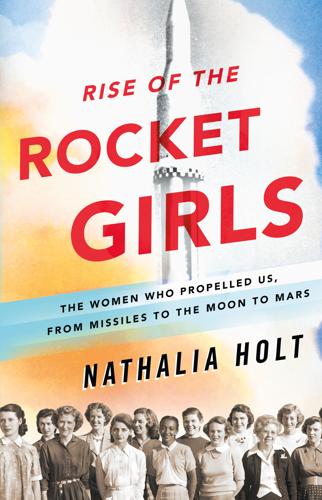
Rise of the Rocket Girls: The Women Who Propelled Us, From Missiles to the Moon to Mars
by
Nathalia Holt
Published 4 Apr 2016
Her psychologist had told her this was a medical necessity, and it also helped that so many of her colleagues were working mothers. She turned to Helen, Barbara, and the recently returned Merrilyn Gilchrist when she needed support. While Sue was regaining her sanity and her life in the lab, men were about to walk on the moon. On July 20, 1969, Neil Armstrong and Buzz Aldrin were the first humans to tread on another planetary body. The computers’ fingerprints were all over the historic mission. Their legacy began with the rocket that flew the men up there. It blasted off in stages, a technique made possible by the women’s computations for the world’s first two-stage rocket, JPL’s Bumper WAC.
…
A special propellant that needed no ignition fueled the Apollo rocket. The computers had helped develop this novel substance, called hypergolic fuel, when working on liquid propellants for the Corporal. Of course, the Ranger and Surveyor missions they had recently launched were key in determining landing sites for the Apollo missions. And when Neil Armstrong stood on the surface of the moon and said, “That’s one small step for man, one giant leap for mankind,” the voice transmission back to Earth was received because of tracking stations in California and Australia, part of the Deep Space Network that the computers had worked on so faithfully. Apollo 11 was the culmination of a thousand successes, each one building on the next, stretching up into the beyond.

AI Superpowers: China, Silicon Valley, and the New World Order
by
Kai-Fu Lee
Published 14 Sep 2018
The event sparked widespread U.S. public anxiety about perceived Soviet technological superiority, with Americans following the satellite across the night sky and tuning in to Sputnik’s radio transmissions. It triggered the creation of the National Aeronautics and Space Administration (NASA), fueled major government subsidies for math and science education, and effectively launched the space race. That nationwide American mobilization bore fruit twelve years later when Neil Armstrong became the first person ever to set foot on the moon. AlphaGo scored its first high-profile victory in March 2016 during a five-game series against the legendary Korean player Lee Sedol, winning four to one. While barely noticed by most Americans, the five games drew more than 280 million Chinese viewers.
…
The data “trains” the program to recognize patterns by giving it many examples, and the computing power lets the program parse those examples at high speeds. Both data and computing power were in short supply at the dawn of the field in the 1950s. But in the intervening decades, all that has changed. Today, your smartphone holds millions of times more processing power than the leading cutting-edge computers that NASA used to send Neil Armstrong to the moon in 1969. And the internet has led to an explosion of all kinds of digital data: text, images, videos, clicks, purchases, Tweets, and so on. Taken together, all of this has given researchers copious amounts of rich data on which to train their networks, as well as plenty of cheap computing power for that training.
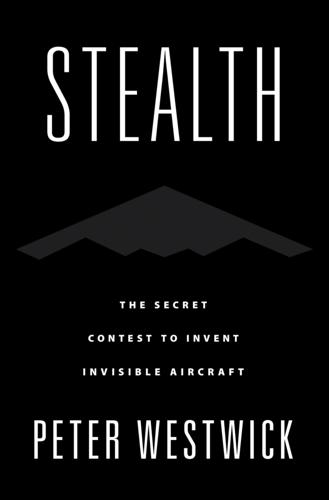
Stealth
by
Peter Westwick
Published 22 Nov 2019
The Mach-6 X-15, which first flew in 1959, had a computer to help translate the pilot’s control-stick motions into suitable actions from the control surfaces, but the computer would not fly the plane itself. Similarly, the Mercury Seven astronauts, all of whom had been test pilots, insisted that they have the ability to fly their space vehicles. The Apollo flight computer was designed not to exert autonomous control but rather to augment the astronaut’s actions, as Neil Armstrong famously demonstrated when he took over the controls to land the Eagle on the moon. It did not hurt that American politicians at the height of the Cold War liked to compare heroic, individualistic American pilots to the supposed automatons of the Soviet space program. Test pilots were the cowboys of the twentieth century, from X-15 pilot “Cowboy” Joe Walker to Tom Cruise in Top Gun (call sign: Maverick).1 Today’s drone aircraft have diverged from the tradition favoring skilled pilots over computers.
…
As one F-117 test pilot put it, “I don&t think you’ll find any of us that are complete set-your-hair-on-fire-and-let’s-go kind of guys. We’re pretty methodical, risk-averse guys.”26 The younger ones, especially, represented a gradual shift within the test pilot fraternity, from barnstormers to engineers, from cowboys to calculators—in short, from Chuck Yeager to Neil Armstrong.27 Many of these younger pilots had advanced engineering degrees, which helped in two ways: they had a solid technical understanding of the aircraft, and they took an engineer’s rational approach to risk, analyzing and minimizing it. That’s not to say they were dull. Dry, maybe. Park in particular had a sardonic side.
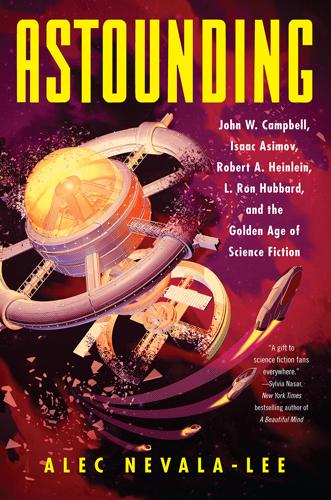
Astounding: John W. Campbell, Isaac Asimov, Robert A. Heinlein, L. Ron Hubbard, and the Golden Age of Science Fiction
by
Alec Nevala-Lee
Published 22 Oct 2018
Readers were having it thrown at them from all sides, and as his audience expanded, he began to look for other ways of approaching the same material. He had hoped to edit a technical magazine for years, and an opportunity arose in the form of Air Trails Pictorial, a model aircraft periodical devoured by hobbyists—including a teenage Neil Armstrong—who built miniature planes that flew on gasoline or rubber bands. As the model business went downhill after the war, the title grew less profitable, and it was relaunched as a science monthly with an emphasis on aviation. Campbell had pushed hard for the change, and he landed the editorship of Air Trails in the summer of 1946.
…
Campbell called it “the greatest show ever staged,” observing that no writer had ever predicted that it would be televised, and told readers, “There’s [a] considerable sense of fulfillment for someone who, like myself, has been discussing, considering, imagining, and visualizing this event for some forty years.” On July 24, Neil Armstrong, Buzz Aldrin, and Michael Collins returned to Earth. The following day, as the papers carried coverage of the splashdown, Charles Manson ordered three of his followers to rob Gary Hinman, a California drug dealer, whom they stabbed to death. On August 9, the actress Sharon Tate—who was married to Roman Polanski—was killed by the Manson Family, along with four other victims.
…
other ways of approaching the same material Some of the best stories on atomic themes were written by women, including “In Hiding” by Wilmar R. Shiras, about a mutant child prodigy reminiscent of the young JWC—he reads his textbooks from cover to cover and sells fiction to the pulps. a teenage Neil Armstrong Wagener, One Giant Leap, 35. John Michel Knight, The Futurians, 156. “It is up to each of us” JWC, “Air Trails and New Frontiers,” Air Trails Pictorial, September 1946, 22. “We can already control atomic weapons” JWC, “The Greatest Power,” Air Trails Pictorial, December 1946, 26. L. Jerome Stanton Smith, Worlds of George O., 67–68.
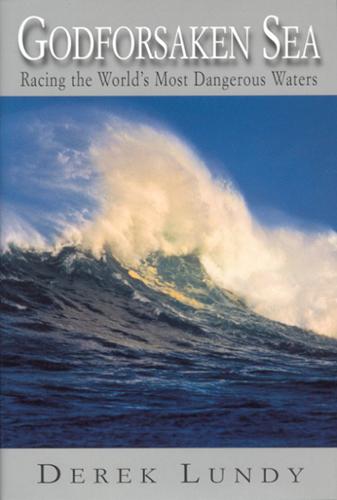
Godforsaken Sea
by
Derek Lundy
Published 15 Feb 1998
The Apollo astronauts, graduating from their warplanes to little capsules that were catapulted with negligible safety margins into orbit or to the barren wilderness of the moon, are the only humans who have been farther from the planet earth than sailors on the planet ocean. I remember reading that as the landing module from Apollo 11 was rising from the moon’s surface to dock with the mother ship the pulse rate of the mission commander, Neil Armstrong, rose to only ninety beats a minute. Even allowing for the calming effects of experience and preparation, this was the reaction of a man whose emotional and physiological response to danger is quite different from mine. In Dispatches, his book about the Vietnam War, Michael Herr describes what he often encountered among the soldiers who fought there.
…
It’s what makes us feel pleasure, and we try to repeat the actions that trigger its secretion. For some of us, however, getting enough dopamine may require more extreme activities. My brain may get more than enough of it when I spend four hours crossing Lake Ontario in a small boat on a blustery day. Tony Bullimore may need to sail a Vendée Globe to get his share. Neil Armstrong may need to fly to the moon. Moitessier’s inspiration, Saint-Exupéry, also thrived on life-threatening mishaps. Indeed, says his biographer Stacy Schiff, he made a cult of adversity. According to one of the mechanics who flew with him on the early, hazardous Saharan mail routes, “In those moments when it would have been normal to give in to despair he seemed to experience extreme exaltation, intense happiness.”
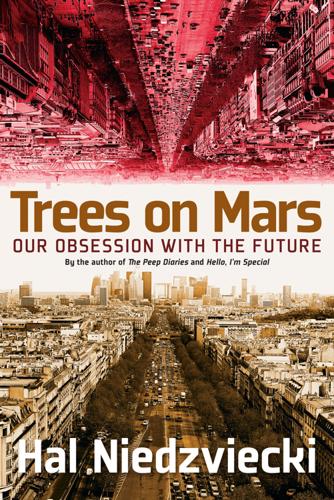
Trees on Mars: Our Obsession With the Future
by
Hal Niedzviecki
Published 15 Mar 2015
Looking back now at the twenty-year period of the space race we can see how it captivated people around the world and set up what would be the greatest shared arrival at the “future” ever known to humanity. First Sputnik, then America’s answer: tens of millions watching the Apollo lunar landing on live TV (this, coming only twenty years after the introduction of television as a mainstream commodity in the United States and elsewhere, itself can be considered a futuristic moment). And when Neil Armstrong uttered those famous words, there was a sense of both commonality and exceptionalism. “One small step for [a] man, one giant leap for mankind.” Future was still a collective project, something aspired to by the entire human race (though some countries—most notably the United States, would of course do future better and get there first).
…
President Kennedy and his administration thought it was the moon. Clearly many Americans disagreed, but no one was saying: Let’s just let the rich fund the future. Let’s just get out of the way and let people fight amongst themselves for the chance to own progress. It wasn’t necessarily the optimism about future we imagine those living in the age of Neil Armstrong to have had, but it was a pervasive attitude, a general agreement that the future could only be reached together, individuals collectively part of an overall march toward progress, leaders up front, showing the way. Matt Novak’s Paleofuture archive reminds me just how much the future-as-national project narrative was advanced by the prevailing popular culture of the time.

Under the Knife: A History of Surgery in 28 Remarkable Operations
by
Arnold van de Laar Laproscopic Surgeon
Published 1 Oct 2018
Shepard was grounded and given a desk job at NASA, where he soon gained a reputation as the most bad-tempered official at the agency. As his colleagues made one space voyage after another, Shepard heard of a new, experimental operation that might be able to help him. The surgeon was fully convinced that it would work. A few months before Neil Armstrong flew to the Moon, Shepard was operated on in Los Angeles by ear, nose and throat specialist William House. House inserted a tiny silicone tube through the petrous part of the temporal bone and into the inner ear to drain the excess endolymph fluid. This procedure is known as an endolymphatic shunt.
…
Hobbling to a private orthopaedic clinic to have your worn-out knee looked at now seems little different from taking a good slug of Lourdes water, lighting a candle at the statue of the Virgin in ’s-Hertogenbosch, or going to the barber to be bled. All you have to do is believe in it. * * * Twelve men have stood on the Moon – Neil Armstrong, Buzz Aldrin, Pete Conrad, Alan Bean, Alan B. Shepard, Edgar Mitchell, David Scott, James Irwin, John Young, Charles Duke, Harrison Schmitt and Eugene Cernan. Of them all, Shepard was the oldest. Imagine that, despite his endolymphatic-shunt operation, he had experienced symptoms of his disease while he was up there.

Strange Sally Diamond: A BBC Between the Covers Book Club Pick
by
Liz Nugent
Published 2 Mar 2023
Other children laughed at me. Knowing of my disease gave me nightmares. I begged Dad to have our Special Days on our own, and he hired a projector and we watched cowboy films on a big screen. Another time, he bought me a catalogue of books and I could choose whatever I wanted. I picked books about Neil Armstrong, and World War Two, and an illustrated encyclopaedia of dinosaurs. Dad thought they were great choices. The best time ever, we left the house on foot and walked down a long winding avenue to a train track. Underneath the train track was a tunnel that led to a beach and the sea. Dad had bought me swimming togs.
…
‘Is that why you told her my name was Steve?’ He grinned. ‘I think it suits you. Like Steve Austin. The Six Million Dollar Man. Shall we call you Steve from now on?’ ‘Yes!’ ‘And what will my name be? I’m bored with Conor Geary.’ ‘James? Like Captain James Cook!’ ‘James, yes, I like that. What about a surname?’ ‘Armstrong, like Neil Armstrong.’ ‘James and Steven Armstrong. I like it.’ For the first time since I saw the burglar, I felt at ease. Dad was smiling at me. ‘Right, you should probably stay here for safety’s sake. I’ll go and take a look around and see what I can find out.’ ‘Where are we, Dad?’ ‘Whitechapel in the East End of London.’
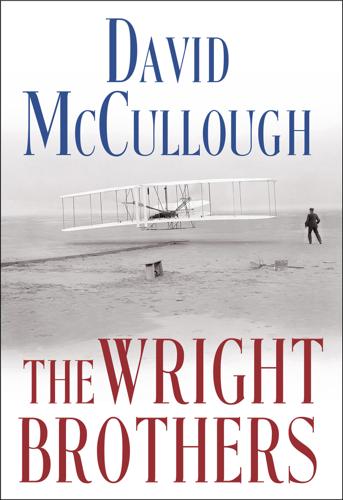
The Wright Brothers
by
David McCullough
Published 4 May 2015
Ever the perfect gentleman to the end, “polite almost to a fault,” as said, always neatly dressed, his shoes always shined, Orville was also known to drive his automobile at such high speed that the police of Oakwood would close their eyes and hold their breath until he passed by on the way to his laboratory downtown. On July 20, 1969, when Neil Armstrong, another American born and raised in southwestern Ohio, stepped onto the moon, he carried with him, in tribute to the Wright brothers, a small swatch of the muslin from a wing of their 1903 Flyer. 1. Bishop Milton Wright at age 60. 2. Susan Koerner Wright at age 27. 3. Reuchlin at age 11. 4.
…
Louis Post-Dispatch, November 7, 1943; Jakab and Young, eds., The Published Writings of Wilbur and Orville Wright, 261–62; Miller, Wright Reminiscences, 65–66. “polite almost to a fault”: Crouch, The Bishop’s Boys, 196. Orville was also known to drive: Miller, ed., Wright Reminiscences, 16–17; Crouch, The Bishop’s Boys, 513. On July 20, 1969, when Neil Armstrong: Hansen, First Man: The Life of Neil A. Armstrong, 527. BIBLIOGRAPHY Manuscript and Archival Sources Collections of the Dayton Aviation Heritage National Historical Park, Dayton, Ohio. Local History Division, Dayton Metropolitan Library, Dayton, Ohio. Benson Ford Research Library, Henry Ford Museum, Greenfield Village, Dearborn, Michigan.

Business Lessons From a Radical Industrialist
by
Ray C. Anderson
Published 28 Mar 2011
That said, there is no silver bullet; no one person who can get this job done. John F. Kennedy’s call to land an American on the moon within ten years could not have been carried out by words alone. It took a motivated organization, money, family sacrifices, real national leadership, and, yes, cold war competition to put Neil Armstrong’s boots on Tranquility Base. Sparking a new industrial revolution is not going to be any easier, and likely it will be considerably more difficult. There are many, many small steps that need to be taken by many, many people to reach that Mission Zero summit. Recall that when I issued that challenge in 1994 I had no idea how to turn my vision into reality.
…
He dared America not only to dream the impossible, but to achieve it. The Russians had launched their Sputnik into orbit first, sent a man into space first. So when President Kennedy committed our nation to landing a man on the moon and bringing him back safely in ten years, many people doubted we could accomplish it. But less than seven years later Neil Armstrong and Buzz Aldrin stepped out onto Tranquility Base. From the moment the forty-fourth president of the United States takes office in 2009, America—and the rest of the world—will be watching to see if this new leader can also “organize and measure the best of our energies and skills.” Not to put an American on the moon, but to meet another generational challenge: steering a course through the triple storms of a climate crisis, a security crisis, and an economic crisis, all striking at the same time.
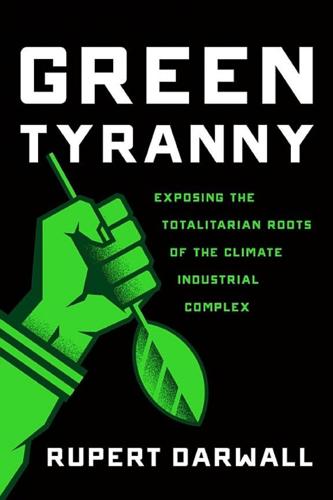
Green Tyranny: Exposing the Totalitarian Roots of the Climate Industrial Complex
by
Rupert Darwall
Published 2 Oct 2017
* The fourth, Vattenfall, is 100 percent owned by the Swedish state. 14 The Curse of Intermittency As we look at engineering breakthroughs selected by the National Academy of Engineering, we can see that if any one of them were removed, our world would be a very different—and much less hospitable place. Neil Armstrong, 20001 There is no other choice: government either abstains from limited interference with the market forces, or it assumes total control over production and distribution. Either capitalism or socialism; there is no middle of the road. Ludwig von Mises2 At the National Press Club in Washington, D.C., on February 22, 2000, the first man to ever walk on the moon declared, “I am and ever will be a white socks, pocket protector, nerdy engineer born under the Second Law of Thermodynamics.”3 “Science is about what is.
…
Ludwig von Mises2 At the National Press Club in Washington, D.C., on February 22, 2000, the first man to ever walk on the moon declared, “I am and ever will be a white socks, pocket protector, nerdy engineer born under the Second Law of Thermodynamics.”3 “Science is about what is. Engineering is about what can be,” Neil Armstrong told the gathering organized around the National Academy of Engineering’s top 20 engineering achievements of the twentieth century. The automobile took second place and the airplane third (the innovations spawned by space exploration twelfth). The internet (13), air conditioning and refrigeration (10), television and radio (6), and electronics all rely on the greatest achievement of all—“the vast networks of electricity that power the developed world.”4 According to Armstrong, the maturity of the other 19 achievements would not have been possible without electricity.
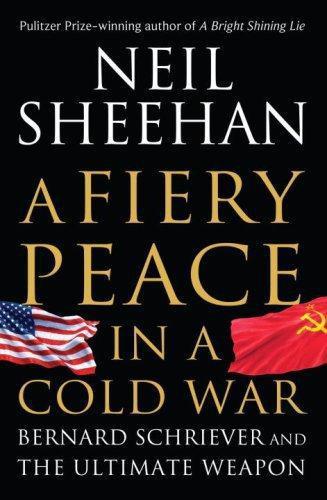
A Fiery Peace in a Cold War: Bernard Schriever and the Ultimate Weapon
by
Neil Sheehan
Published 21 Sep 2009
For Maria and Catherine For Will And for my grandson, Nicholas Sheehan Bruno FOREWORD When the Space Age is mentioned, most people think of Sputnik, the launching into orbit of the first man-made satellite by the Soviet Union on October 4, 1957, or the race between Russia and the United States to land men on the moon. Sputnik was a psychological thunderclap. It set off a paroxysm of fear that the Soviet Union had gained a commanding technological lead over the United States. The moon landing by Neil Armstrong and Edwin Aldrin on July 20, 1969, was its reverse: a spectacular feat of American technology with little in the way of practical benefits. This book is concerned with a quite different space race. This other race initiated America’s exploration and exploitation of space and was for the highest stakes—preventing the Soviet Union from acquiring an overwhelming nuclear superiority that could tempt Soviet leaders into international blackmail and adventurism with calamitous results for human civilization.
…
“Congratulations on fathering the most significant single missile and space event of the decade,” the telegram said. “I thought of you as your brain child roared to life at Cape Canaveral.” Phillips’s reward was the star of a brigadier, the youngest general in the armed forces at forty years of age. He was subsequently loaned to NASA to run the Apollo program, which put astronauts Neil Armstrong and Edwin “Buzz” Aldrin on the moon on July 20, 1969, and then took on a series of senior Air Force commands, including the Space and Missile Systems Organization in Los Angeles, a later successor to Schriever’s original WDD, which were to bring him the four stars of a full general. Yet nothing that Ed Hall and Sam Phillips had ever done or would ever do would be more important than bringing Minuteman into existence.
…
Von Braun was appointed director of the George C. Marshall Space Flight Center, which NASA formed in nearby Huntsville, Alabama, and remained its chief until 1970. The ambition he had held while building V-2 vengeance rockets for Adolf Hitler had been realized happily at last. The huge Saturn V rocket that transported Neil Armstrong and Edwin Aldrin to the moon in 1969, much changed and improved over the original model ten years earlier, was von Braun’s masterpiece. Medaris left the Army, took holy orders, and spent his retirement years as an Episcopal priest. Ed Hall forgave his younger brother, Ted, for committing treason.
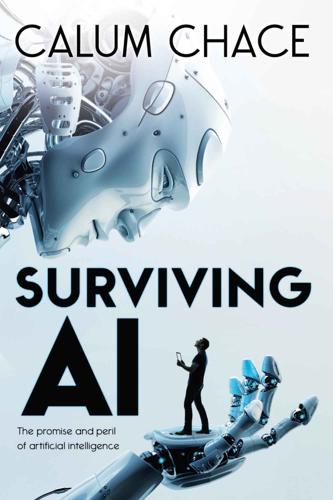
Surviving AI: The Promise and Peril of Artificial Intelligence
by
Calum Chace
Published 28 Jul 2015
If it all suddenly disappeared they would notice, but its omnipresence has become unremarkable, like air. The most obvious example is your smartphone. It is probably the last inanimate thing you touch before you go to sleep at night and the first thing you touch in the morning. It has more processing power than the computers that NASA used to send Neil Armstrong to the moon in 1969. It uses AI algorithms to offer predictive text and speech recognition services, and these features improve year by year as the algorithms are improved. Many of the apps we download to our phones also employ AI to make themselves useful to us. The AI in our phones becomes more powerful with each generation of phone as their processing power increases, the bandwidth of the phone networks improve, cloud storage becomes better and cheaper, and we become more relaxed about sharing enough of our personal data for the AIs to “understand” us better.

Machines of Loving Grace: The Quest for Common Ground Between Humans and Robots
by
John Markoff
Published 24 Aug 2015
However, during the 1960s and 1970s, the Vietnam War, civil rights movement, and rise of the counterculture all commingled with the arrival of microprocessors, personal computing, and computer networking.5 In a handful of insular computer laboratories, hackers and engineers found shelter from a fractious world. By 1969, the year Richard Nixon was inaugurated president, Seymour Hersh reported the My Lai massacre, and astronauts Neil Armstrong and Buzz Aldrin walked on the moon. Americans had for the first time traveled to another world, but the nation was at the same time mired in disastrous foreign conflict. The year 1968 had seen the premiere of the movie 2001: A Space Odyssey painting a stark view of both the potential and pitfalls of artificial intelligence.
…
The political battle over the human in the loop was waged over two divergent narratives: that of the heroic astronauts landing on the surface of the moon and that of the specter of a catastrophic accident culminating in the deaths of the astronauts—and potentially, as a consequence, the death of the agency. The issue, however, was at least temporarily settled when during the first human moon landing Neil Armstrong heroically took command after a computer malfunction and piloted the Apollo 11 spacecraft safely to the lunar surface. The moon landing and other similar feats of courage, such as Wally Schirra’s decision not to abort the earlier Gemini flight, have firmly established a view of human-machine interaction that elevates human decision-making beyond the fallible machines of our mythology.

These Strange New Minds: How AI Learned to Talk and What It Means
by
Christopher Summerfield
Published 11 Mar 2025
Here is an insight that might help us answer this question: Suppose we give an LLM the prompt ‘The first person to walk on the Moon was _____’, and suppose it responds with ‘Neil Armstrong’. What are we really asking here? In an important sense, we are not really asking who was the first person to walk on the Moon. What we are really asking the model is the following question: Given the statistical distribution of words in the vast public corpus of (English) text, what words are most likely to follow the sequence ‘The first person to walk on the Moon was _____’? A good reply to this question is ‘Neil Armstrong’.[*3] The point is that knowing which words to say, and knowing the semantic information conveyed by those words (knowing what the words are ‘about’), are not the same thing.
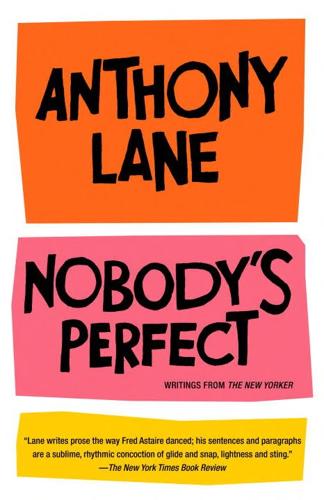
Nobody's Perfect: Writings From the New Yorker
by
Anthony Lane
Published 26 Aug 2002
By the time the Apollo missions began, the NASA-Hasselblad connection was functioning smoothly; it continues to this day, and the near-mythical status of Hasselblad in medium format (the negatives are two and a quarter inches square), forever enhanced by the images from space, is rivalled only by that of Leica in 35 mm. The camera that Neil Armstrong and his team took to the moon was a customized but perfectly recognizable version of the commercial Hasselblad; the trim was stripped away, the controls were made chunkier for gloved hands, and any lubricants—not a good idea in zero gravity—had been replaced by graphite. Conspiracy nuts, inspecting the results, have declared that the lunar photographs are so good that they could never have been taken by amateurs under such testing conditions; they must therefore have been rigged under studio lights, probably by the same people who killed President Kennedy.
…
Cunningham himself, snoozing in Earth’s orbit, is hardly a pretty sight: with his rounded black shades, and his stubble even thicker than Schirra’s, he makes all too clear the physical strains imposed by the Apollo enterprise. Nobly into the unknown goes the fine flower of American manhood, and back comes Lou Reed. The most celebrated photograph—the full-length color portrait of Buzz Aldrin by Neil Armstrong—does not appear here, and you can see why. It has become the Mona Lisa of the moon gallery: repeated on a million posters, at once thinned and overburdened by familiarity. The lunar explorers were fed and sustained by fresh imagery as if it were oxygen, and the point of this exhibit is to recapture the shock of the new.
…
The astronauts knew full well that they were pioneering on behalf of a planet, and it was in the very ordinariness of their reactions that they carried the human voice—always impressionable, never free from caution, resting on dependable words when fancy ones sound too rich—across 240,000 miles. “It’s big, and bright, and beautiful,” Neil Armstrong said as Eagle settled onto the surface. “Beautiful view,” agreed Aldrin a while later, as he followed down the steps. “Isn’t that something?” Armstrong said, as if they were stretching their legs at the end of an August picnic. When he went to the launchpad, Armstrong had in his pockets a roll of LifeSavers and a comb.

Tools a Visual History: The Hardware That Built, Measured and Repaired the World
by
Dominic Chinea
Published 5 Oct 2022
A heavier head also has the major benefit of minimizing the “axe head stuck in the wood” situation, which is annoying when you’re trying to get through something repetitive quickly. Although having said that, a lot of folk love splitting wood! Estwing is well-known for the quality of its hammers (I’ve got three of them and they’re lovely things), but it also makes fine axes and specialist geological tools too. Neil Armstrong used an Estwing geologist’s pick axe when he was training for the mission to the Moon. The company’s origins go back to 1923 and the town of Rockford in the far north of the state of Illinois. It was set up by a young Swedish immigrant called Ernest Estwing, who’d moved to the USA in 1900. He bought himself a set of books about the machinist’s trade and managed to both learn English and get himself a profession.

The Second Intelligent Species: How Humans Will Become as Irrelevant as Cockroaches
by
Marshall Brain
Published 6 Apr 2015
You essentially disconnect your brain from your real body and plug it into a virtual body in the game's virtual world. Then people started creating virtual worlds simply for the sake of creating them. You can experience just about anything in virtual space now, and you can do it alone or with a million friends. You can be Neil Armstrong landing on the moon, or a cowboy in the old west or whatever." "What else can Vertebrane do?" I asked. "You access the network through it. Basically you can access any fact, image, movie, song. You can also experience what someone else is experiencing -- a person streams all their sensory data to you, and you both experience it simultaneously.

How to Be Right: In a World Gone Wrong
by
James O'Brien
Published 2 Nov 2018
It would, of course, be wrong to completely outlaw crackpots and quacks, but we seem to have reached a point where, if the moon landings happened today, producers would feel compelled to give people claiming the footage was filmed in an aircraft hangar in Kentucky the same prominence in discussions as Neil Armstrong. Soon after climate change opened the door to this peculiar ‘false equivalence’, vaccinating children against measles, mumps and rubella became a debate due to the intervention of a single, soon-discredited doctor and a raft of self-appointed campaigners. In August 2018, Italy’s recently installed ‘popu-list’ government removed mandatory vaccination for children, while in Britain crowds of ignoramuses have taken to gathering at the gates of hospitals in protest because they believe they know better than the doctors inside how chronically ill children with incredibly complicated conditions should be treated.
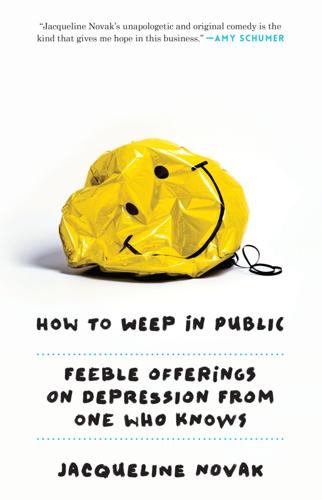
How to Weep in Public: Feeble Offerings From One Depressive to Another
by
Jacqueline Novak
Published 1 Mar 2016
They fuck someone’s aunt, withhold someone’s pension, or refuse to validate your parking ticket, based entirely on the fact that they dislike your ascot. But you? You may be slumped on your carpet, but for that, my friend, you are a radical. You have dared to hit pause, and now you are just sitting there inside the pause, floating in space like Neil Armstrong. In your own weak way, you are one of the heroic explorers of our time. You might be thinking, Hmm, I don’t feel proud. Well, then, outsource your self-esteem to me, and let me be proud on your behalf. By not even pretending to be a person and, instead, scurrying away from your responsibilities, you are willing to go where others aren’t.
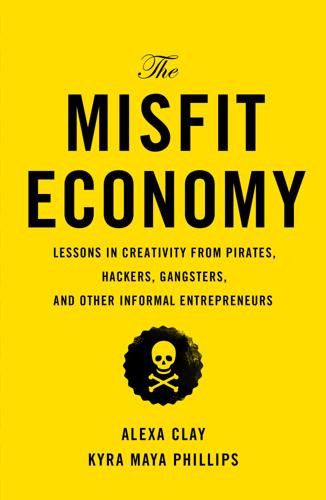
The Misfit Economy: Lessons in Creativity From Pirates, Hackers, Gangsters and Other Informal Entrepreneurs
by
Alexa Clay
and
Kyra Maya Phillips
Published 23 Jun 2015
The name comes from the recognition that certain stories serve as “hieroglyphs” or symbols—like Isaac Asimov’s robot—that activate the minds of engineers, entrepreneurs, and scientists around how an innovation can come to be. In other words, the platform fosters an appetite among innovators to bring science fiction “hieroglyphs” into reality. When astronaut Neil Armstrong returned from the moon as part of the Apollo 11 expedition, he referenced Verne’s novel in a television broadcast before reflecting on his own time in space. Without Poe and Verne creating the imaginative possibility of traveling to the moon, Armstrong might never have gone. In this way, art is a powerful tool in opening up our consciousness to new possibilities.

Pain Killer: An Empire of Deceit and the Origins of America’s Opioid Epidemic
by
Barry Meier
Published 29 Oct 2020
Purdue hit a home run when in 1966 it acquired a line of antiseptic products sold under the brand name Betadine, one of which was the orange-colored disinfectant hospitals used to scrub down patients prior to surgery. For Purdue, it was an ideal product, with its low production costs and high profit margins. In 1969, Betadine even enjoyed a fleeting moment of fame when astronaut Neil Armstrong used the solution to decontaminate the Apollo landing module after his historic moonwalk. The Sacklers’ business operations had expanded overseas by the 1970s, and Mortimer and Raymond Sackler were living on different sides of the Atlantic. Raymond, who remained in Connecticut, became most closely associated with Purdue Frederick, the company’s American arm.
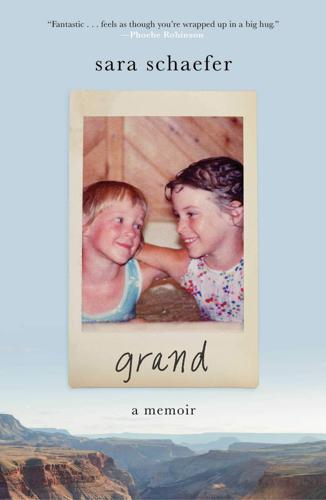
Grand: A Memoir
by
Sara Schaefer
Published 10 Aug 2020
Upon arrival, they discovered they did not have enough cash to cover the ceremony. Defeated, they began the drive back to Long Beach, where Dad was stationed with the Navy. But right before they slipped into the pitch-black desert, they saw a wedding chapel with a sign flickering: MASTERCARD ACCEPTED. The next day, they watched Neil Armstrong walk on the moon as newlyweds. Dad started going by Bill, and they eventually moved back to Virginia, had four kids. He became a lawyer and built a successful business. She retired from nursing to raise us and make things look nice. In Salisbury, Mom developed a taste for the high life, and she liked to show it off.
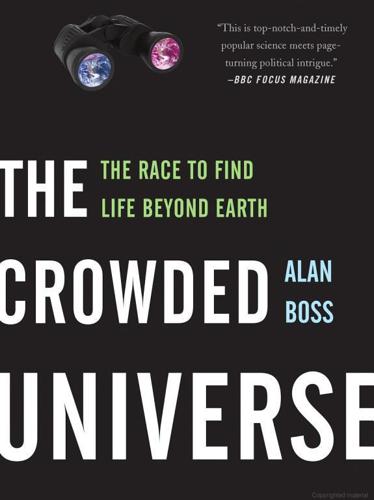
The Crowded Universe: The Search for Living Planets
by
Alan Boss
Published 3 Feb 2009
The fact that deposing Saddam Hussein had turned into a disaster of unprecedented proportions for the Iraqi people did not bode well for the success of the new Mars initiative: the Bush administration did not have a good track record for knowing what to do after the missiles were launched. The Jet Propulsion Laboratory (JPL) at Pasadena, California, had landed the first Viking spacecraft on Mars on July 20, 1976 (exactly 7 years after Apollo astronaut Neil Armstrong set foot on the Moon), thus beginning a search for life on Mars that went well beyond looking for canals and interstates. In the 30-odd years since Viking, astrobiologists had realized that, rather than searching directly for Martian microbes, as Viking had done, it made more sense to look first for habitable regions on Mars, just as astronomers were planning to do in the search for habitable planets.
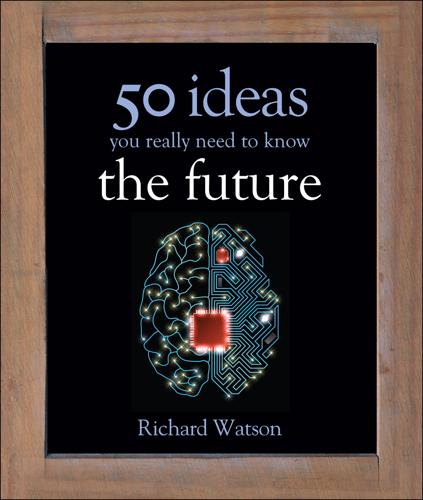
50 Future Ideas You Really Need to Know
by
Richard Watson
Published 5 Nov 2013
So why not collect solar energy using giant mirrors and beam energy back to Earth using orbiting lasers or microwave beams. Fringe thinking? At the moment yes, but one day it may become mainstream. “Science has not yet mastered prophecy. We predict too much for the next year and yet far too little for the next ten.” Neil Armstrong, test pilot and astronaut (1969) It’s highly likely that we’ll all be worshipping the Sun in the not-too-distant future. All we’ll need to do is capture 1 part in 10,000 of the sunlight that reaches our planet to meet 100 percent of our planetary energy needs. One way to do this is to use nanoengineered solar panels and fuel cells.
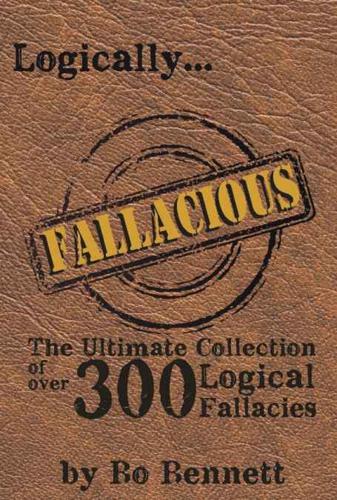
Logically Fallacious: The Ultimate Collection of Over 300 Logical Fallacies (Academic Edition)
by
Bo Bennett
Published 29 May 2017
Explanation: Although more of a comedy skit than anything else, this demonstrates the fallacious reasoning by the tour guide in her assumption that the dates given to her were precise to the year. Example #2: The difference between first and second in many cases is negligible, statistically, yet we give those differences artificial meaning. Who was the second person to walk on the moon... just minutes after Neil Armstrong? Does anyone remember who the second fastest man in the world is, even though he might come in .01 seconds after the first place winner? Explanation: We often artificially assign significant meaning to tiny statistical differences. It is a fallacy when we infer that the first place runner is “much faster” than the second place runner, even though the difference is .01 seconds.
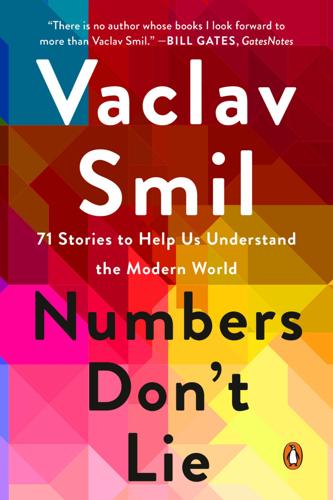
Numbers Don't Lie: 71 Stories to Help Us Understand the Modern World
by
Vaclav Smil
Published 4 May 2021
This latest demonstration of Soviet power led many of us to fear that it would not come to an end in time for our generation. But it turned out that there had never been a real scientific or engineering gap: the United States soon gained decisive primacy in launching satellites for communications, weather forecasting, and espionage. Less than a dozen years after the surprise of Sputnik, Neil Armstrong and Buzz Aldrin stood on the Moon—a place no Soviet cosmonaut would ever reach. And 11 years after Sputnik, the Soviet empire did weaken—if only temporarily—during the Prague Spring, when Czechoslovakia tried to adopt a freer form of its (still Communist) rule. As a result, even Czechs who were not members of the Communist Party could get passports to travel to the West.
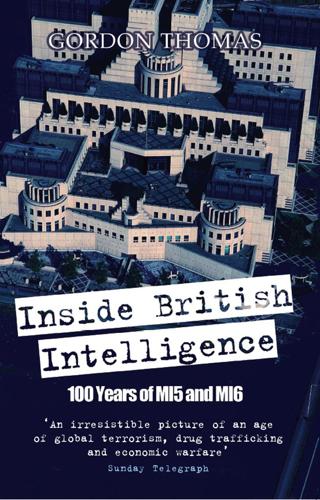
Inside British Intelligence
by
Gordon Thomas
Passengers were reading newspapers filled not only with the continuing threat of the cold war but the successful NASA mission of the Apollo 11 manned flight to the moon. A feat so extraordinary it had involved twenty thousand contractors employing three hundred thousand skilled workers. It was capped by Neil Armstrong planting his size 9½ boot on the lunar surface and pronouncing, “That’s one small step for [a] man, one giant leap for mankind.” Stepping off the train to continue her journey to her first day at work in Leconfield House on Curzon Street, Stella Rimington could well have echoed Armstrong’s words.
…
Until then, the United States was accepted as the birthplace of postwar scientific innovation: from the atom bomb to the Salk vaccine, from keyhole brain surgery to mind-healing drugs, in hundreds of ways American scientists had set the bar higher. Now Moscow had gone one dramatic step further; it wouldn’t be until twelve years later that astronaut Neil Armstrong would step onto the moon and deliver his memorable words about taking one big step for mankind. The beep-beep in space on October 4, 1957, had shown that the Soviet Union had already achieved the conquest of space with its Sputnik, literally a fellow traveler. Johnson told the cookout gathering he had a piece of news that once more put the United States ahead.
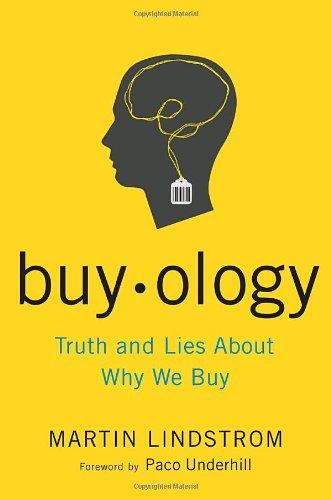
Buyology
by
Martin Lindstrom
Published 14 Jul 2008
Then I tell you I was just kidding. The rock doesn’t come from the Berlin Wall—it’s even more exceptional than that. The rock you have in 08/08/2009 10:45 74 of 83 file:///D:/000004/Buy__ology.html your hand is an authentic moon rock, a chunk of the roughly six ounces of lunar detritus that Neil Armstrong and his fellow astronauts brought back home with them during their 1969 Apollo 11 mission. A moon rock is pretty special. There are a limited number of them in the world. And after all, it comes from the moon. What an exquisite present, you think. You’re shocked, genuinely overcome. The fact of the matter is that I found the rock by the side of the road, put it in my pocket, and threw it into a box.
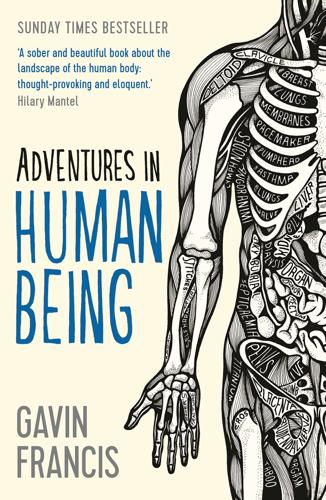
Adventures in Human Being (Wellcome)
by
Gavin Francis
Published 28 Apr 2015
Rachel Labanovska had a more fitting, mythic end: some part of her lives on, and is even now whirling through the sky as a turbine, or orbiting high over the planet she once explored. 18 Feet & Toes: Footsteps in the Basement That’s one small step for a man, one giant leap for mankind. Neil Armstrong OCTOBER IN GRANADA: the old Arab quarter of the Albaysín turns its face south, towards the heat of Africa. The narrow streets and architecture still echo the glory of Moorish Spain. I’ve come to stay with a friend who lives there in a traditional house – a carmen granadino. The walls follow the contours of the hillside: we enter from a door at street level onto an upper floor at the head of the house, then descend by wooden staircases to a living area at its foot.
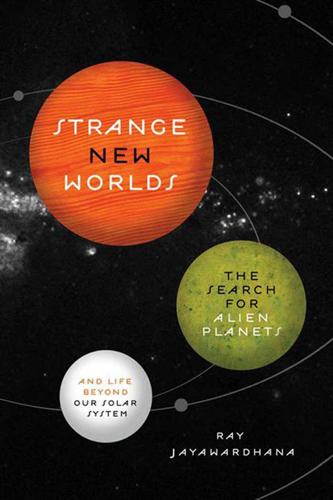
Strange New Worlds: The Search for Alien Planets and Life Beyond Our Solar System
by
Ray Jayawardhana
Published 3 Feb 2011
What’s more, the ice near Antarctic mountain ranges is exposed to ferce polar winds, so it sublimates, leaving the meteorites behind, which pile up over tens of thousands of years. The vast majority of them consist of extremely old, primitive materials—samples from the earliest days of the solar system. A small fraction comes from the Moon, Mars, or big asteroids that broke up in collisions. As an eight-year-old, Harvey watched Neil Armstrong take those historic frst steps on the Moon, and imagined himself as a space cadet with a jet pack and a ray gun. Having grown up in Wisconsin, he was used to snow and ice, but he wasn’t a mountaineer. At Beloit College, he did an undergraduate thesis on tektites, tiny glassy rocks thought to have formed during big meteorite impacts on Earth.
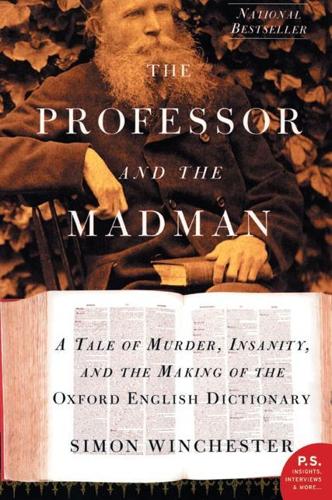
The Professor and the Madman: A Tale of Murder, Insanity and the Making of the Oxford English Dictionary
by
Simon Winchester
Published 27 Sep 1998
THE VIEW FROM THE MOON HAD ANY GEOLOGIST been able to look down at the planet in its entirety on 18th April, 1906, and had been able to see what then took place, he would at the very least have been utterly amazed by the physical context of the event, even if the event itself, when seen from on high, seemed less than overwhelming. For as context, the planet would have been memorably beautiful. Had he been standing on the moon, say—had he been a 1906 version of Neil Armstrong, scanning with a hugely powerful telescope the surface of the blue and green and white ball that was hanging in his ink-black sky—he would have seen illuminated in front of him (assuming that the cloud cover was not too dense) a tract of the world that extended from what some of mankind called India to what others called the Rocky Mountains, and all of which was bathed in the brilliant white light of sunshine.

In Patagonia:
by
Bruce Chatwin
Published 5 Jun 2019
The risk merely increased his appetite for life. The wind had polished his nose and coloured it pale lilac. I found him at lunch ladling the bortsch into the ivory orb of his head. He had made his room cheerful, in the Baltic way, with flowered curtains, geraniums, diplomas for stunt flying and a signed photograph of Neil Armstrong. All his books were in Lithuanian, the aristocrat of Indo-European languages, and concerned his country’s plans for independence. His wife had died and he had adopted a young Indian couple, out of kindness and for company. The girl sat against the white wall, suckling her baby, devouring visitors with mica-shining eyes.
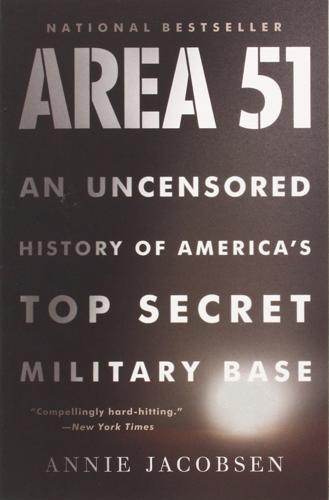
Area 51: An Uncensored History of America's Top Secret Military Base
by
Annie Jacobsen
Published 16 May 2011
CHAPTER NINETEEN The Lunar-Landing Conspiracy and Other Legends of Area 51 Two hundred and fifty thousand miles from the Nevada Test Site, on July 20, 1969, with less than ninety-four seconds of fuel remaining, Neil Armstrong and copilot Buzz Aldrin were facing almost certain death as they approached the Sea of Tranquillity on the moon. The autotargeting on their lunar landing module, famously called the Eagle, was taking them down onto a football-field-size crater laden with jagged boulders. To have crash-landed there would have meant death. The autotargeting was burning precious fuel with each passing second; the quick-thinking Neil Armstrong turned it off, took manual control of the Eagle, and, as he would tell NASA officials at Mission Control in Houston, Texas, only moments later, began “flying manually over the rock field to find a reasonably good area” to land.

Ghost Train to the Eastern Star: On the Tracks of the Great Railway Bazaar
by
Paul Theroux
Published 9 Sep 2008
Instead of Jesus speaking to a searcher, the speaker was Muhammad; but it came to the same thing. Muslims at the fringe always sounded to me like born-again Christians, literal-minded and impervious to reason. An Arabic scholar once told me that a persistent urban myth in the Middle East was that Neil Armstrong, sometimes confused with Louis Armstrong, converted to Islam. But as all of us were going to Mary, the best tactic on this overnight train journey was to get along, perhaps keep off the subject of religion. As I was thinking this, the old man was talking to the student. ‘He asks if you believe in God.’
…
‘What about memoirs?’ ‘Done plenty of those,’ he said. ‘All my friends are gone. Look’ – and he gestured to the wall of photographs. This gave me a chance to rise and look at pictures and examine the signatures and inscriptions: a warm salutation from Liz Taylor, a scrawl from the pope, scribbles from Neil Armstrong and Buzz Aldrin, from smooth-faced smilers who might have been actors, from Stanley Kubrick and others, including Darth Vader. ‘Wernher von Braun,’ I said. But he had gone back to tapping his diary. ‘You see, the Titanic represented triumph and disaster.’ ‘Hubris, I suppose.’ ‘What’s that?’
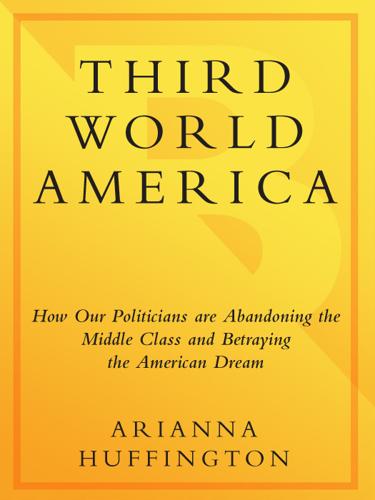
Third World America: How Our Politicians Are Abandoning the Middle Class and Betraying the American Dream
by
Arianna Huffington
Published 7 Sep 2010
But just three years later, as John Kao points out in his book Innovation Nation, “America had a hundred aircraft carriers fully armed with new planes, pilots, tactics, and escort ships, backed by new approaches to logistics, training methods, aircraft plants, shipyards, and women workers” along with “such game changing innovations as the B-29 … and nuclear fission.”1 We had a similar reaction to the Soviets’ launch of Sputnik.2 “We responded with massive funding for education,” writes Kao, “revamped school curricula in science and math, and launched a flurry of federal initiatives that eventually put Neil Armstrong in position to make his ‘giant leap for mankind.’ ” President Obama captured this essential part of the American character when he announced the kickoff of his Educate to Innovate campaign—a nationwide effort to move American students back to the top in science and math education.3 “This nation wasn’t built on greed,” he said.
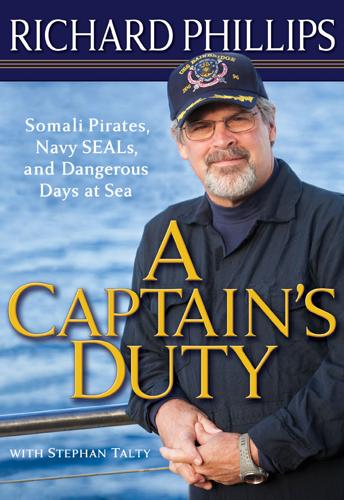
A Captain's Duty: Somali Pirates, Navy SEALs, and Dangerous Days at Sea
by
Richard Phillips
and
Stephan Talty
Published 5 Apr 2010
Some were addressed to “Captain Phillips, Vermont.” I laughed about that, like I was Lindbergh or Abraham Lincoln—or Santa Claus at the North Pole! But I didn’t feel different. I was a regular guy. Truly an ordinary person. And now people were using the word that I’d reserved for people like Audie Murphy and Neil Armstrong. “You’re my hero.” It brought tears to my eyes. But they weren’t tears of happiness. Honestly, I felt like an imposter, a phony. I didn’t do anything special, I thought. I don’t deserve all this. I don’t want all this. I really don’t take compliments well. It goes back to being raised with seven brothers and sisters in an Irish-Catholic home.
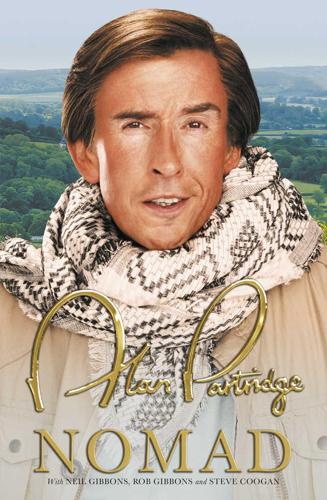
Alan Partridge: Nomad: Nomad
by
Alan Partridge
Published 19 Oct 2016
You wanna look inside of me?’ Quite camp but maybe that’s the tinsel. ‘No,’ I say, for some reason out loud. I’m tired and irritated – what is wrong with me? I pry the torch from my now sore lips, switch it off, and then climb down the loft ladder, jumping the last two steps (as I always do) so I look like Neil Armstrong dismounting the steps of Eagle, the Apollo 11 lunar module – not so much a moon landing, as my landing (my emphasis). I nod appreciatively. ‘Nice line, Alan.’ I don’t even bother slinking back to bed. I shower up and get ready for work. *** ‘Like the name of a cartoon Belgian detective said in a Scottish accent, it’s 10:10.’11 It’s later that morning and I’m ten minutes into my daily radio show Mid Morning Matters.12 ‘The song you just heard was “Midnight Train to Georgia”.

The Economic Singularity: Artificial Intelligence and the Death of Capitalism
by
Calum Chace
Published 17 Jul 2016
He believes that the effect of Moore's Law is substantially muted by regulatory and social frictions which slow down the adoption of new technologies, and he also argues that many technological advances simply don't translate into tangible improvements in the real world. For instance he accepts that his current computer is a thousand times faster than the one he used a few years ago, but he suspects it only makes him 20% more productive. It may be true, he teases, that a new washing machine has more processing power than NASA used to send Neil Armstrong to the moon in 1969, but the washing machine is still not going to the moon. He derides some of the heralded achievements of AI researchers, arguing for instance that self-driving cars do not emulate human drivers, but instead rely on precise maps of the terrain which have to be prepared before the journey starts.

The Fix: How Bankers Lied, Cheated and Colluded to Rig the World's Most Important Number (Bloomberg)
by
Liam Vaughan
and
Gavin Finch
Published 22 Nov 2016
They were the instrument that underlined everything that I traded … I was obsessed.” 6 The Fix: How Bankers Lied, Cheated and Colluded to Rig the World’s Most Important Number By Liam Vaughan and Gavin Finch © 2017 Liam Vaughan and Gavin Finch Chapter 3 Beware of Greeks Bearing Gifts I n 1969, Neil Armstrong walked on the moon, Richard Nixon became president of the United States and 400,000 hippies descended on a sleepy farm near Woodstock. On the other side of the Atlantic, on a winter’s day in London, a mustachioed Greek banker named Minos Zombanakis was taking his own small step into the history books.
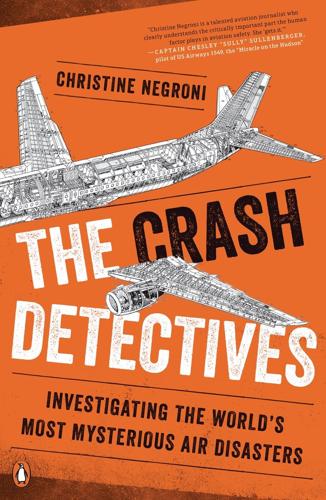
The Crash Detectives: Investigating the World's Most Mysterious Air Disasters
by
Christine Negroni
Published 26 Sep 2016
The Hudson River was “long enough, wide enough and on that day, smooth enough to land a jetliner.” So he did. Worrying about whether the Qantas A380 might also turn into a 550-ton glider, de Crespigny calculated just how much altitude he would need to get back to Changi Airport. He wasn’t thinking about Sullenberger, he was thinking about the astronaut Neil Armstrong, remembering that when Armstrong was a test pilot flying the X-15 at NASA in the 1960s, he helped develop a technique for gliding the rocket-powered plane back to earth once its fuel was spent. Armstrong reached altitudes as high as two hundred thousand feet, then glided back to Edwards Air Force Base in California, harnessing gravity to descend in an ever-diminishing spiral.
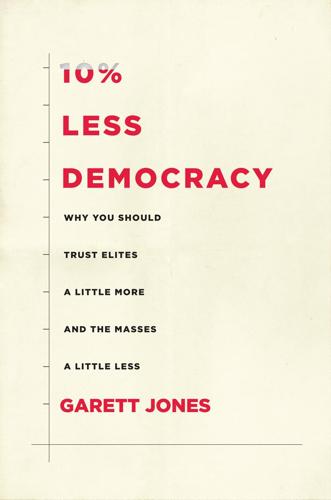
10% Less Democracy: Why You Should Trust Elites a Little More and the Masses a Little Less
by
Garett Jones
Published 4 Feb 2020
The case for political equality in the voting booth cannot be based on equal voter competence or even on nearly-equal voter competence. The much-less-educated in Italy are much less likely to know the name of the prime minister, and the much-less-educated in the Netherlands are much more likely to believe that the first human to step on the moon, Neil Armstrong, was a liar and a fraud.¹² Nearly-equal voter competence is a lie we should stop telling each other. Balancing Alleged Human Rights The right to vote [in a free state] is enough to impose on me the duty to learn about public affairs, regardless of how weak might be the influence of my voice on them.

First Light: Switching on Stars at the Dawn of Time
by
Emma Chapman
Published 23 Feb 2021
As the cloud moves away, there is a greater distance for the sound and light to travel, but the light is almost a million times faster, so there is an increasing delay between seeing the lightning and hearing the thunder. We can also ask what would happen if light had a much slower speed. If light only covered 1m (about 3ft) in a few seconds, then we could look at the Moon now and see Neil Armstrong taking his first steps for humankind. It sounds fantastical, but it is this property that we are exploiting on cosmological scales. We are building a telescope to observe signals that have taken a whopping 13 billion years to arrive at Earth. This is one way in which we are searching for the first ever stars, by looking back in time to watch them form, live and die

Worth Dying For: The Power and Politics of Flags
by
Tim Marshall
Published 21 Sep 2016
The artist Jasper Johns has devoted much of his career to depicting it on canvas, in pencil, with bronze, and superimposing it on many other surfaces. For him it is not an icon to promote or denigrate, but the sheer power it projects and the emotion it arouses fascinates him as an artist. Andy Warhol also picked up the banner and took it forward, hinting at it in his visual commentary on America and Americana. For example, he took Neil Armstrong’s photograph of Buzz Aldrin next to the flag on the moon, fused it with other photos from the epoch-making trip, and coloured it, including the flag, in pinks and blues. Warhol was not overtly political in his art, but he recognized not only an amazing moment in history, but also the time in which it took place.

Reinventing Capitalism in the Age of Big Data
by
Viktor Mayer-Schönberger
and
Thomas Ramge
Published 27 Feb 2018
Carolus Linnaeus may be credited with inventing the first taxonomic system to classify the planet’s life forms, but he depended on an extensive network of patrons, colleagues, and students to collect samples far from his native Sweden and its limited biodiversity. Without their help in creating this vast catalog, Linnaeus could not have made his argument that each species had unique characteristics and an “allotted place” in nature—concepts that directly led to the theory of evolution. The moon landing required not just one Neil Armstrong stepping into the powdery lunar dust or the staff at the National Aeronautics and Space Administration (NASA) mission control center commanding the launch of the Apollo spacecraft. It also required more than 300,000 mathematicians, physicists, biologists, chemists, engineers, and mechanics spread across dozens of labs, each playing his or her own small part, from developing a menu of foods to sustain people in zero gravity to setting up a communications link between the lunar module, mission control, and the White House to crafting the parachute that safely brought the astronauts home to the blue marble of Earth.
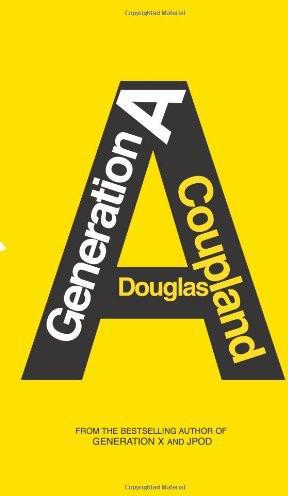
Generation A
by
Douglas Coupland
Published 2 Jan 2009
Once I find Him, I’m going to tie him up and make him a home-cooked meal and force Him to sit and eat with me and appreciate the amount of work I’ve gone to on his behalf. Non-smoker preferred.” Ad two: “Hi. I’m always sad—should I be trying to conceal this from a potential mate? Also, I hate exercise. The astronaut Neil Armstrong once said, ‘God gave us a finite number of heartbeats, and I’m not about to waste mine running down some street.’ I love animals, but not those dogs that have Star Trek Ferengi foreheads.” Ad three: “Hello, potential mate. At the moment I’m a prisoner in a Level-4 disease containment facility, where I’m fed strange cubes of food and denied any form of culture or media for reasons of which I’m still unclear.
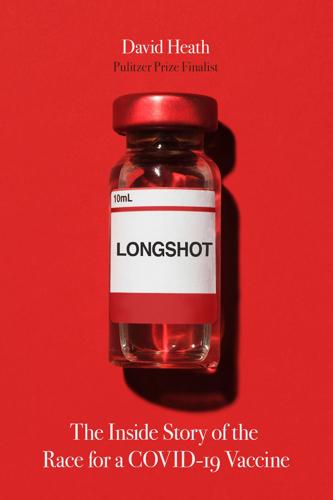
Longshot
by
David Heath
Published 18 Jan 2022
He grew up in a well-to-do family in Kent just southeast of London. His father was a prominent public servant who helped Nigeria gain its independence from Great Britain. Warren was fascinated at an early age with the works of science fiction authors, especially Robert Heinlein. He was glued to the TV when black-and-white images were broadcast live of Neil Armstrong taking humankind’s first steps on the moon. Warren started his career as a skilled software engineer. He did some work for Sony Pictures Imageworks, a state-of-the-art visual effects and animation studio. He was the lead programmer for an action video game called Meat Puppet, set in a post-apocalyptic world.

The Code: Silicon Valley and the Remaking of America
by
Margaret O'Mara
Published 8 Jul 2019
The ARPANET was different: a child of the spit-and-polish space age, nurtured and shaped by a bunch of temperamentally anarchic professors and long-haired graduate students at the tail end of the tumultuous 1960s. It was a product of the military-industrial complex that had a countercultural soul. * * * — Richard Nixon was seven months into his Presidency when Neil Armstrong’s boot made its imprint on the lunar surface in July 1969, achieving the grand goal John Kennedy had set eight years before. The “missile gap” about which the Gaither Report had warned so darkly turned out to have been a mirage, based on bad intelligence. But the ensuing flurry had produced real results.
…
The American push to catch up with the Soviets had accelerated all sorts of electronics innovation, further enlarged the computer industry, and turned the U.S. higher education system into the wealthiest and foremost in the world. Three months and nine days after the moon landing, the ARPANET went live. The network was a tiny blip on the expansive and expensive landscape of America’s space program. Of the $24 billion spent on the space race between Kennedy’s declaration and Neil Armstrong’s “giant step for mankind,” only about $1 million went to build the ARPANET. Only a few academic scientists and government bureaucrats knew of its existence. Its launch didn’t earn a mention in any of the national newspapers. Yet looking backward from a half century on, the network the ARPANET became—the Internet—had a more consequential effect on the globe’s political and economic evolution than all the rocket launches and orbiting satellites and moon landings put together.
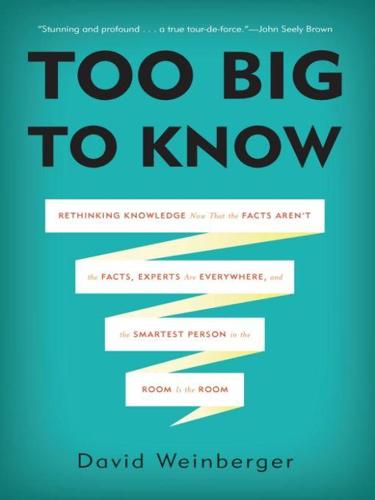
Too Big to Know: Rethinking Knowledge Now That the Facts Aren't the Facts, Experts Are Everywhere, and the Smartest Person in the Room Is the Room
by
David Weinberger
Published 14 Jul 2011
The report concludes with recommendations in nine areas to remedy engineering faults, procedural flaws, and political pressures on NASA. It is easy to see why this report is held in such high regard. The commission was headed by former Secretary of State William Rogers and included generals, physicists (including Richard Feynman), astronauts (including Sally Ride and Neil Armstrong), test pilots (Chuck Yeager), and rocket scientists. It took a broad look at the causes of the failure and produced an evidence-based document that led to needed improvements in NASA’s processes. The report saved lives. And it did so by embodying the very best of traditional expertise: A relative handful of highly trained and credentialed experts came together, followed a careful process, agreed on conclusions, wrote them down, and published them.

The Sellout: A Novel
by
Paul Beatty
Published 2 Mar 2016
Permanently sidetracked, because my father liked to play a game he called After the Fact, where in the middle of whatever I was doing, he’d show me a well-known historical photo and ask, “So what happened next?” We’d be at the Bruins game, and during an important time-out he’d flip the snapshot of Neil Armstrong’s footprint in the lunar dust in front of my face. So what happened next? I’d shrug my shoulders. “I don’t know. He did those Chrysler commercials on television.” “Wrong. He became an alcoholic.” “Dad, I think that was Buzz Aldrin…” “In fact, many historians think he was wasted when he first set foot on the moon.
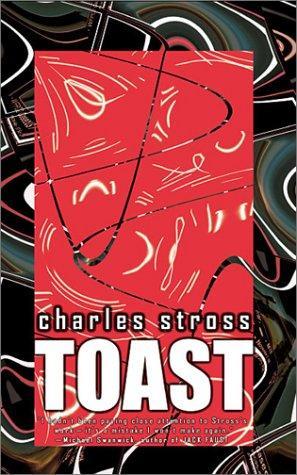
Toast
by
Stross, Charles
Published 1 Jan 2002
One that has been extinct for deep geological time—ten times as long as the dinosaurs—but that has left relics that work.” His voice is trembling with emotion. “We humans, we’ve barely scratched the surface! The longest lasting of our relics? All our buildings will be dust in twenty thousand years, even the pyramids. Neil Armstrong’s footprints in the Sea of Tranquility will crumble under micrometeoroid bombardment in a mere half million years or so. The emptied oil fields will refill over ten million years, methane percollating up through the mantle: continental drift will erase everything. But these people . . ! They built to last.

Dogfight: How Apple and Google Went to War and Started a Revolution
by
Fred Vogelstein
Published 12 Nov 2013
The tablet computer was the most discredited category of consumer electronics in the world. Entrepreneurs had been trying to build tablet computers since before the invention of the PC. They had tried so many times that the conventional wisdom was that it couldn’t be done. Alan Kay, who is to certain geeks what Neil Armstrong is to the space program, drew up plans for the Dynabook in 1968 and laid out those plans in a 1972 paper titled “A Personal Computer for Children of All Ages.” It never got built, though Kay went on to do something arguably even more important. He became one of the inventors of the graphical user interface at Xerox PARC.
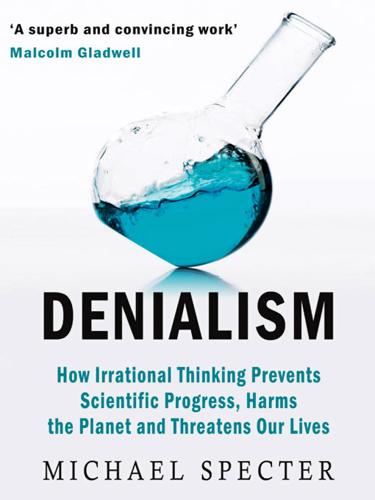
Denialism: How Irrational Thinking Hinders Scientific Progress, Harms the Planet, and Threatens Our Lives
by
Michael Specter
Published 14 Apr 2009
If we ran out of water we would siphon salt from the seas and make more; if nature was broken we could fix it. If not, we could always move to another planet. That vision no longer seems quite so enchanting. No doubt our expectations were unreasonable—for science and for ourselves. We also began to recognize the unintended consequences of our undeniable success. About a month before Neil Armstrong made his large step on the moon, the heavily polluted Cuyahoga River erupted in flames near Cleveland, creating an indelible image of industry at war with nature. A few years later, in 1976, Karen Ann Quinlan was removed from life support, igniting the first horrific battle of the modern era over how we live and die.

Our Final Invention: Artificial Intelligence and the End of the Human Era
by
James Barrat
Published 30 Sep 2013
But what about the invention of fire, agriculture, the printing press, electricity? Haven’t many technological “singularities” already occurred? Disruptive technological change is nothing new, but no one felt compelled to come up with fancy names for its occurrences. My grandmother was born before automobiles were widely used, and lived to see Neil Armstrong walk on the moon. Her name for it was the twentieth century. What makes Vinge’s transition so special? “The secret sauce is intelligence,” Vinge told me. His voice is a rapid-fire tenor, given to laughter. “Intelligence is what makes it different, and the defining operational feature is that the prior folk can’t understand.
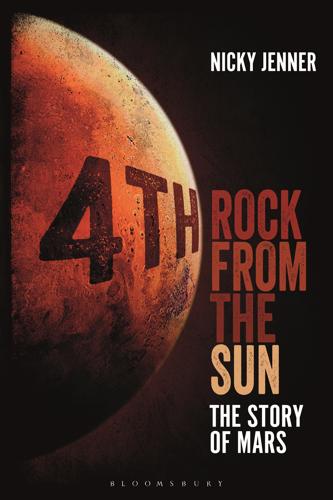
4th Rock From the Sun: The Story of Mars
by
Nicky Jenner
Published 5 Apr 2017
He settled on the latter, and in May 1961 delivered a speech to Congress in which he stated that the US ‘should commit itself to achieving the goal, before this decade is out, of landing a man on the Moon and returning him safely to the Earth’. The race was on! The following years saw various achievements – and, sadly, casualties – on both sides. The race came to a head in July 1969 when Neil Armstrong, commander of Apollo 11, stepped out on to the lunar Sea of Tranquillity, becoming the first human to set foot on not only the Moon, but any rock other than Earth. While the Space Race is often thought of in terms of a desperate battle over the Moon, it also drove a number of missions destined for other targets – most prominently, Mars.

The Internet Is Not the Answer
by
Andrew Keen
Published 5 Jan 2015
The song was Simon’s tribute to what David Wills, the author of Hollywood in Kodachrome, described as the “spectacular” Kodak color film first introduced in 1935, a stock, Wills says, “synonymous with sharp detail and brilliant color” that produced “crisp” images and had “minimal grain.”9 For seventy years, Kodachrome accurately captured the world’s moments. It was used to take many of the twentieth century’s most detailed and memorable pictures—from Neil Armstrong’s 1968 snaps of the lunar landscape to the official images of many Hollywood stars.10 But Simon’s lyrics could equally apply to Rochester, where Kodak’s control of the global picture business had enriched the city with the brightest colors of all: a thriving local economy and tens of thousands of well-paying jobs.
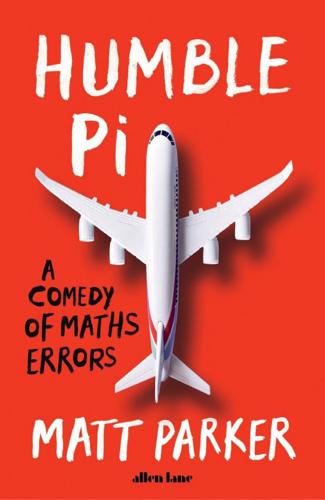
Humble Pi: A Comedy of Maths Errors
by
Matt Parker
Published 7 Mar 2019
The first human launch thus became known as Apollo 4, giving us the niche bit of trivia that Apollo 2 and Apollo 3 never existed. More than just O-rings When the space shuttle Challenger exploded shortly after launch on 28 January 1986, killing all seven people onboard, a Presidential Commission was formed to investigate the disaster. As well as including Neil Armstrong and Sally Ride (the first American woman in space), the commission also featured Nobel prize-winning physicist Richard Feynman. The Challenger exploded because of a leak from one of the solid rocket boosters. For take-off, the space shuttle had two of these boosters, each of which weighed over 500 tonnes and, amazingly, used metal as fuel: they burned aluminium.
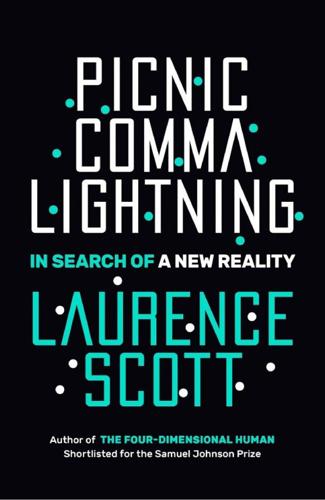
Picnic Comma Lightning: In Search of a New Reality
by
Laurence Scott
Published 11 Jul 2018
In the history of political optics, Buzz Aldrin resurfaces here, too. For the Flat Earth community, he is a particularly vocal fly in the ointment, always ready to ‘take to Twitter’ to challenge their claims. He posts photographs of his dusty footprint on the moon’s surface, or his drifting exit from Apollo, making sure not to lock the hatch on his way out. Neil Armstrong may have been the first person to walk on the moon, but he was also its first cameraman. As a result, Aldrin held centre stage. With a 70-millimetre Hasselblad camera, Armstrong took these pictures of his pilot, as well as the famous, hesitant photograph of Aldrin standing in the Sea of Tranquillity, Armstrong himself reflected as a tiny highlight in Aldrin’s visor.
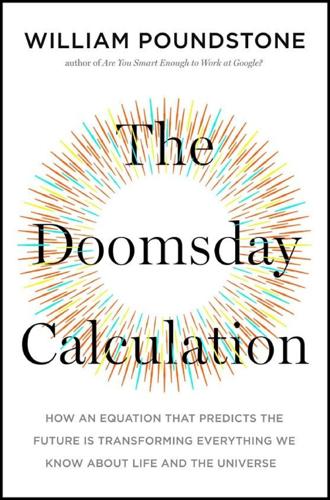
The Doomsday Calculation: How an Equation That Predicts the Future Is Transforming Everything We Know About Life and the Universe
by
William Poundstone
Published 3 Jun 2019
One reaction is that this would be an incredible waste of resources. It would, by today’s standards. But when technology becomes quick, easy, and cheap, we find new uses for it. Those uses are wasteful and self-indulgent (say the older generation). The phone in my pocket is a more powerful computer than those that sent Neil Armstrong to the moon. Most of the time I use it for completely frivolous things. There could be serious uses for ancestor simulations. Historians might want to explore simulated pasts for research. What would have happened if Truman had not dropped the atomic bombs on Japan? Thousands of simulations could reveal how large and small changes to initial conditions lead to different outcomes.
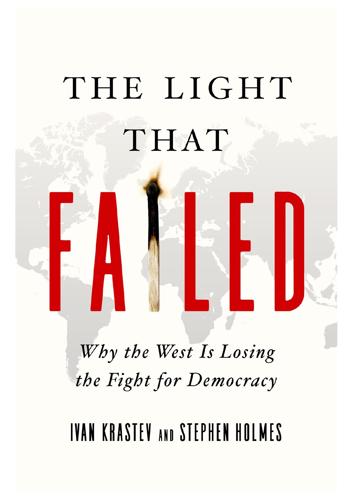
The Light That Failed: A Reckoning
by
Ivan Krastev
and
Stephen Holmes
Published 31 Oct 2019
As the first manmade object to touch down on another celestial body, it demonstrated to the world Moscow’s unrivalled technical and military prowess, even though it broke into pieces on impact, scattering its remnants across the lunar surface. A decade later, in 1969, the US re-took the lead in the race for the future when Neil Armstrong and Buzz Aldrin became the first human beings to set foot on the Moon. A popular Soviet joke summarizes how this Cold War contest turned out. At a certain point, Soviet cosmonauts call Moscow to report proudly that they have not only reached the lunar surface but have painted it red so the world will understand that mankind’s future is in communist hands.

Breaking Twitter: Elon Musk and the Most Controversial Corporate Takeover in History
by
Ben Mezrich
Published 6 Nov 2023
The Raptor 2’s internal MCC pressure was far beyond anything that NASA, Russia, or any space agency on Earth had ever achieved, and it was powered by a particularly unique fuel, a mix of cryogenic liquid methane and oxygen. In many ways, the Raptor 2 was the key to everything that SpaceX was working toward, and represented as great a leap forward, perhaps, as Neil Armstrong’s famous first steps onto the pockmarked surface of the Moon. Elon might have shivered, despite the heat, as he started off across the compound, away from the shouts and waves from beyond the chain-link fence. He could feel the cell phones and cameras trained on him; although there were guards at the entrance to Starbase—the kitschy name he’d given SpaceX’s main campus when he’d purchased the land back in 2002—and plenty of fences, the work the brilliant men and women of SpaceX were doing was not meant to be secret.
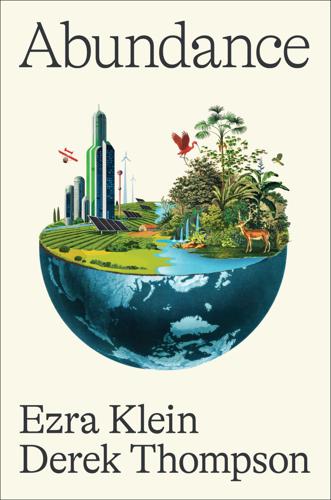
Abundance
by
Ezra Klein
and
Derek Thompson
Published 18 Mar 2025
Kennedy—who famously said, “We choose to go to the moon in this decade and do the other things, not because they are easy, but because they are hard”—told NASA chief James Webb, “I’m not that interested in space.”89 A majority of Americans supported the lunar missions only once in the 1960s: in a poll taken just after Neil Armstrong’s televised landing. One lesson of Apollo’s surprising unpopularity is that the program was sustained by leaders within NASA and the White House, which never pulled the plug on an audacious task that polled poorly among the public. Kennedy was right when he said, “We choose to go to the moon.”

Genius: The Life and Science of Richard Feynman
by
James Gleick
Published 1 Jan 1992
Rogers, who had served as attorney general and secretary of state in Republican, administrations; Major General Donald J. Kutyna, who had headed shuttle operations for the Department of Defense; several NASA consultants and executives of aerospace contractors; Sally Ride, the first American woman in space; Neil Armstrong, the first man on the moon; Chuck Yeager, a famous former test pilot; and, a last-minute choice, Richard Feynman, a professor who brought to the next day’s newspaper accounts the tag “Nobel Prize winner.” Armstrong said on the day of his appointment that he did not understand why an independent commission was necessary.
…
As a life-size cross section of the joint was passed along for the commissioners to examine, Kutyna saw Feynman take the clamp and pliers from his pocket and pull a piece of the O-ring rubber from the model. He knew what Feynman meant to do. When Feynman reached for the red button on his microphone, Kutyna held him back—the television cameras were focused elsewhere. Rogers called a short break and, in the men’s room, standing next to Neil Armstrong, he was overheard saying, “Feynman is becoming a real pain in the ass.” When the hearing resumed, the moment finally arrived. CHAIRMAN ROGERS: Dr. Feynman has one or two comments he would like to make. Dr. Feynman. DR. FEYNMAN: This is a comment for Mr. Mulloy. I took this stuff that I got out of your seal and I put it in ice water, and I discovered that when you put some pressure on it for a while and then undo it it doesn’t stretch back.
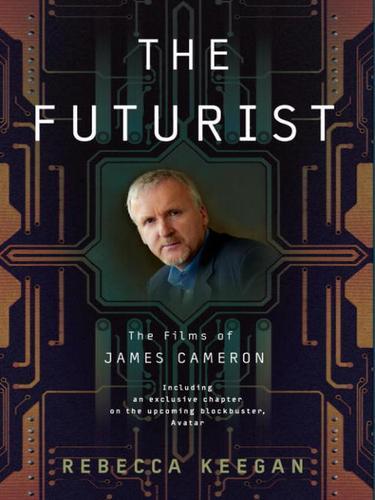
The Futurist: The Life and Films of James Cameron
by
Rebecca Winters Keegan
Published 3 Nov 2009
But when you have a small team of people as crazy as you are, that are good at it, there is deep satisfaction in both the process of doing it and the resulting footage.” To Cameron, journeying deep into the ocean is as close as he can get to rocketing into outer space. To go where almost no man has gone before and fail to bring a camera? Well, that would be like Buzz Aldrin and Neil Armstrong planting the flag on the moon and never stopping to take the picture. When Cameron explores the deep ocean, he feels a responsibility to bring it back for the rest of us, just as Cousteau did for him. “I love the experience of being underwater,” he says. “As a filmmaker I want to share that.” Truckers, Aliens, and God Triumphant after the July 1986 release of Aliens, Cameron and Hurd departed for a well-deserved honeymoon in the south of France, their first having been cut short by the film’s preproduction schedule.
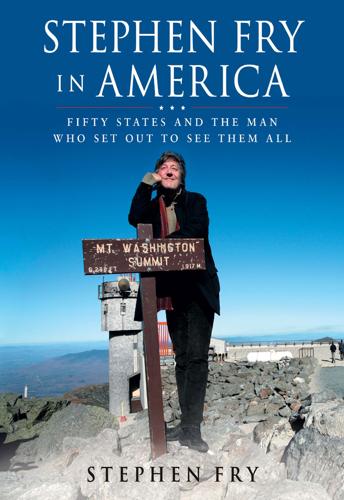
Stephen Fry in America
by
Stephen Fry
Published 1 Jan 2008
Hayes (19th President), James Garfield (20th President), Benjamin Harrison (23rd President), William Howard Taft (27th President), Warren Harding (29th President), General George Armstrong Custer, General William Tecumseh Sherman, Clarence Darrow, John D. Rockefeller, Jack Warner, Lew Wasserman, Ted Turner, Larry Flynt, Annie Oakley, Gloria Steinem, John Glenn, Neil Armstrong, Jim Lovell, Thomas Edison, Orville and Wilbur Wright, Harvey Firestone, Harriet Beecher Stowe, Sherwood Anderson, James Thurber, Zane Grey, Toni Morrison, James Levine, Steven Spielberg, Jim Jarmusch, Chris Columbus, Theda Bara, Lillian Gish, Dorothy Dandridge, Roy Rogers, Clark Gable, Tyrone Power, Bob Hope, Doris Day, Dean Martin, Phyllis Diller, George Chakiris, Paul Newman, Hal Holbrook, Joel Grey, Martin Sheen, John Lithgow, Rob Lowe, Tom Cruise, Woody Harrelson, Halle Berry, Beverly D’Angelo, Alison ‘CJ’ Janney, Sarah Jessica Parker, Drew Carey, Nancy ‘Bart Simpson’ Cartwright, Carmen Electra, Chrissie Hynde, Marilyn Manson

The Shock of the Old: Technology and Global History Since 1900
by
David Edgerton
Published 7 Dec 2006
Every few weeks between 1959 and 1968 B-52 aircraft took off from Edwards Air Force Base in California, with one of three X-15s under their wings. Once high up the X-15s fired their rocket engines and were actively flown by twelve ‘research pilots’, clad in silver pressurised space suits, reaching speeds of Mach 6.7 and touching the edge of space. These hard-drinking engineer-pilots, mostly combat veterans (among them Neil Armstrong, the first man to set foot on the moon), looked down on mere ‘spam in the can’ astronauts, as Tom Wolfe observed in The Right Stuff. While the astronauts became famous, the elite X-15 pilots were left to lament, as one did, that in the early 1990s he was still ‘one of the fastest airplane pilots in the world.
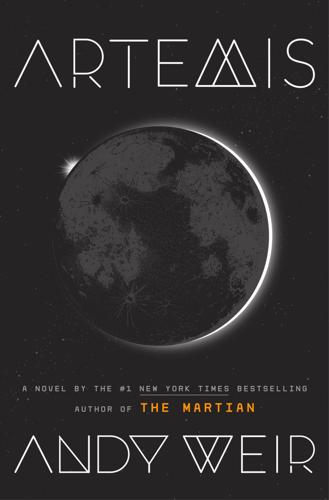
Artemis
by
Andy Weir
Published 14 Nov 2017
A small amount of regolith dust was added to darken it. Otherwise the sunlight from outside would be blinding.” He gestured to the landing site. “The Eagle, named after the national bird of the United States, landed July twentieth, 1969. What you see here is the Eagle’s Descent Stage. Astronauts Neil Armstrong and Buzz Aldrin took the Ascent Stage back into lunar orbit at the end of their mission.” The tourists pressed against the windows, entranced at what they saw. I took a long look myself. Hey, I’m not made of stone. I love my city and its history. The Eagle is a big part of that. “Every Apollo mission planted an American flag,” Gunter said.

Moonwalking With Einstein
by
Joshua Foer
Published 3 Mar 2011
He pressed a button on a remote control, and the overhead lights dimmed. A series of slides began to blink across a projection screen at the front of the room, each lingering for less than half a second. There was a slide of Muhammad Ali standing triumphantly over Sonny Liston. Then a slide of barbells. Then Neil Armstrong’s footprint on the moon. Then the cover of Friedrich Nietzsche’s On the Genealogy of Morals. And a red rose. There were thirty such pictures, each appearing and disappearing so quickly that it was hard to imagine we’d ever be able to recall any of them, much less all of them. But I tried my hardest to capture some detail from each, and to make a quick mental note of what I was looking at.
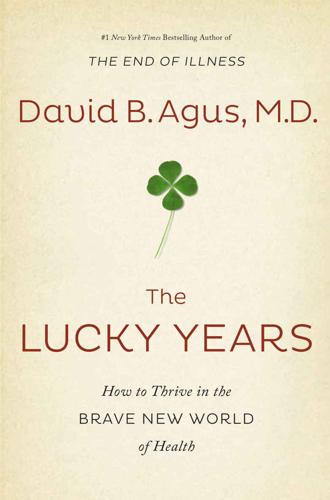
The Lucky Years: How to Thrive in the Brave New World of Health
by
David B. Agus
Published 29 Dec 2015
The author and publisher specifically disclaim all responsibility for any liability, loss or risk, personal or otherwise, which is incurred as a consequence, directly or indirectly, of the use and application of any of the contents of this book. To my dear children, Sydney and Miles: On May 25, 1961, President John Fitzgerald Kennedy proclaimed, “I believe that this nation should commit itself to achieving the goal, before this decade is out, of landing a man on the moon and returning him safely to the earth.” On July 20, 1969, Neil Armstrong with the Apollo 11 crew fought to land the lunar module before it ran out of fuel. Armstrong eventually took that first step on the moon. The average age of the remarkable team at Mission Control in Houston was twenty-six years old. That means the scientists and engineers in Mission Control were just eighteen years old when Kennedy made his 1961 statement.
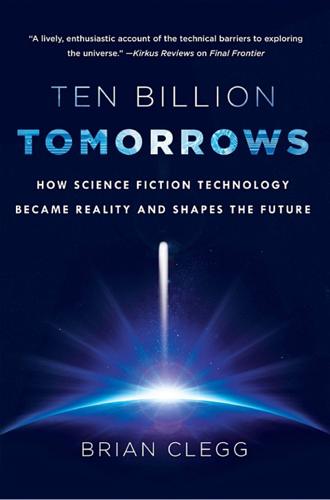
Ten Billion Tomorrows: How Science Fiction Technology Became Reality and Shapes the Future
by
Brian Clegg
Published 8 Dec 2015
It may have had some significance in the United States, but as a UK teenager I got a shock when I couldn’t resist dialing it and found that the sequence of 999 midway through the number (the UK equivalent of 911) was enough to connect me to the emergency services. Back in the real world, the final Apollo mission, Apollo 17, landed on the Moon on December 11, 1972. Well over forty years ago as I write this. Unlike Neil Armstrong and Buzz Aldrin, few will now remember the names of Eugene Cernan and Harrison Schmitt, who were, as yet, the last men to walk on the Moon. We have sent plenty of unmanned probes since, but not a single human being. No further exploration and certainly no attempt at colonization or at using the Moon as a staging post for the exploration of the solar system has taken place.

No Such Thing as a Free Gift: The Gates Foundation and the Price of Philanthropy
by
Linsey McGoey
Published 14 Apr 2015
In this world, Gates is hailed as the ‘MacDaddy’ of the new philanthropy. Bishop and Green offer a quote from Bono on the appeal of Gates’s charitable work: ‘Jay-Z, all of the hip-hop guys, kind of adore him. Because he is not seen as a romantic figure – well, maybe romantic in the sense that Neil Armstrong is romantic, a scientist but not a poet. He gets shit done’.8 Getting shit done. You might hear other phrases for it. The new philanthrocapitalists claim to be more results-oriented and more efficient than earlier philanthropic donors. They want to revolutionize the last realm untouched by the hyper-competitive, profit-oriented world of financial capitalism: the world of charitable giving.

Chasing New Horizons: Inside the Epic First Mission to Pluto
by
Alan Stern
and
David Grinspoon
Published 2 May 2018
BECOMING FAIL-SAFE Because the possibility of lethal hazards at Pluto had become real, Alan wanted the New Horizons team to have something to show for all their work if the spacecraft was lost before it could complete the flyby and send its close-approach data to Earth. The solution to this challenge was called the “fail-safe” data transmission. When he conceived it, Alan likened it to astronaut Neil Armstrong’s “contingency sample” collection, the first thing Armstrong did after stepping onto the Moon in 1969. Then the logic was to have something to show scientifically for the mission of Apollo 11 in case something went immediately wrong, and he and Buzz Aldrin had to suddenly abandon their moonwalk before more comprehensive lunar sampling could take place.
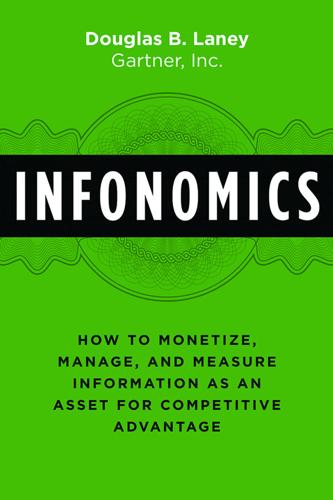
Infonomics: How to Monetize, Manage, and Measure Information as an Asset for Competitive Advantage
by
Douglas B. Laney
Published 4 Sep 2017
Eventually on our tiny TV, a little white blob emerged from a bigger grayish blob, descended a bit, and a crackly voice announced: “That’s one small step for [a] man, one giant leap for mankind.” I’m sure my dad was choked up. I just thought this was neat, really neat, but of no surprise. Most nights I went to sleep in spaceman pajamas beneath solar system bed sheets, fully anticipating this moment. Several hours earlier, the world had watched Neil Armstrong override a lack of sufficient information on the lunar landing site to avoid a field of boulders. With only seconds of fuel remaining he touched down the Eagle safely on the surface of the moon. Dad worked for a global medical device manufacturer. With his black horn-rimmed glasses, flat top haircut, and white short-sleeve button down shirts often sporting a pocket protector, it occurred to me he could pass for a NASA mission control specialist.

Confessions of a Bookseller
by
Shaun Bythell
Published 8 Aug 2019
Three customers (two old women and an old man) were milling about the shop telling me about sets of Shakespeare and Waverley novels they want to sell when the old man announced that the reason they were here was because he’d read Anna’s book about coming to live in Wigtown, Three Things You Need To Know about Rockets. Apparently he’d taken it out of his local library in Morecambe after reading Neil Armstrong’s autobiography in an effort to learn more about rockets, only to discover that it has very little to do with rockets at all. Unperturbed, he read it anyway and enjoyed it, and gave a copy to his wife for her birthday, then decided to make the pilgrimage to Wigtown. Back exercises with Granny at 6 p.m., as usual.
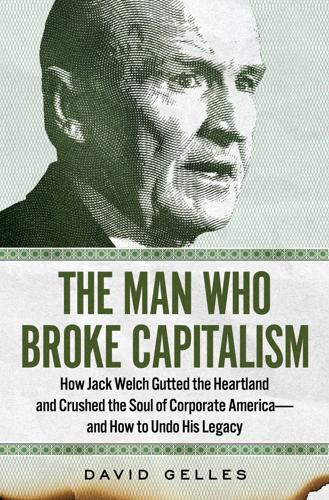
The Man Who Broke Capitalism: How Jack Welch Gutted the Heartland and Crushed the Soul of Corporate America—and How to Undo His Legacy
by
David Gelles
Published 30 May 2022
GE played an integral role in the American effort to win World War II, sending its executives to help the military, and making the vacuum tubes for radar systems and the engines for planes. In the years after the war, GE developed America’s first jet engine. In the 1930s it created moldable plastics, and by the 1950s it was making transparent plastic. The plastics were used in almost every conceivable product, and in space. When Neil Armstrong and Buzz Aldrin landed on the moon, their boots were made of silicon rubber developed by GE, and the visors of their helmets were made with GE’s Lexan plastic. GE built one of the world’s first nuclear power plants in 1957, introduced the world’s first lasers in 1962, and developed revolutionary new medical scanners in the 1970s.

How to Spend a Trillion Dollars
by
Rowan Hooper
Published 15 Jan 2020
And, to embrace a favourite of science fiction, it’s possible that we could terraform the planet: turn the cold, barren and mostly dry Mars into a wet, warm and habitable version of Earth. This is a vision that is explicitly presented in Musk’s SpaceX imagery and promotional materials. We have the chance to begin again, to be our better selves. Neil Armstrong, it is said, is the only person from the twentieth century whose name will be remembered in the thirtieth. Whoever first sets foot on Mars will never be forgotten, and will literally pave the way for the future of humanity. With this kind of build-up, it’s hard not to get carried away. But when I started looking into it a bit more, I reasoned myself down.
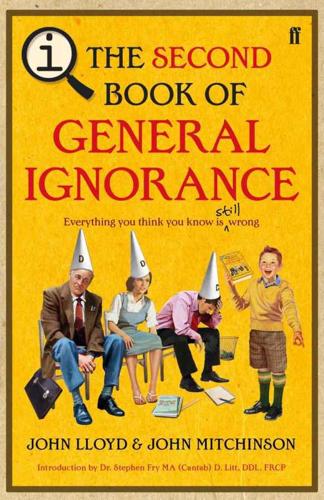
QI: The Second Book of General Ignorance
by
Lloyd, John
and
Mitchinson, John
Published 7 Oct 2010
It has a heart the size of a small car, which thumps out its stately cadence just ten times a minute for eighty years. The beats-per-life of the two species are remarkably similar: 439 million for the shrew; 421 million for the whale. In contrast, the average human heart, at seventy-two beats per minute spread over sixty-six years, will beat 2.5 billion times. The US astronaut Neil Armstrong was so taken by the idea of having a finite number of heartbeats that he joked that he was going to give up exercise because he didn’t want to use up his allocation too quickly. But it doesn’t quite work like that: though strenuous exercise makes the heart beat faster in the short term, the resultant fitness decreases the heart rate in general.
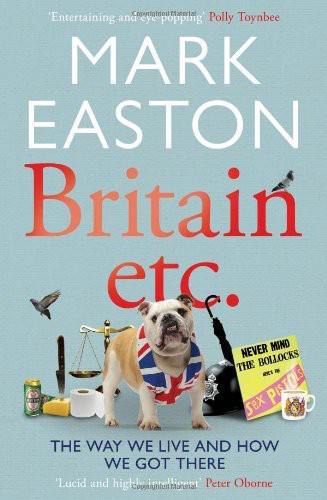
Britain Etc
by
Mark Easton
Published 1 Mar 2012
But the UN went much further, demanding nations strive for ‘a just and equitable distribution of income’, ‘the encouragement of creative initiative under conditions of enlightened public opinion’ and an ‘integrated society’. Getting rich was not enough – progress was about human rights and social justice. This was 1969, and I was watching Neil Armstrong and thinking of everlasting gobstoppers, the UN was watching anti-Vietnam protests and thinking of world peace, and thousands of hippies were heading for Woodstock and thinking of free love. But none of these visions of progress was embraced by political leaders around the world who, for decades to come, would still stick doggedly to the idea that increasing GDP should be the basis for deciding policy.

Pale Blue Dot: A Vision of the Human Future in Space
by
Carl Sagan
Published 8 Sep 1997
But something is wrong. They take too long to come down. Encumbered as they are, they seem to be flying a little. You rub your eyes, but the dreamlike tableau persists. Of all the events surrounding Apollo 11's landing on the Moon on July 20, 1969, my most vivid recollection is its unreal quality. Neil Armstrong and Buzz Aldrin shuffled along the gray, dusty lunar surface, the Earth looming large in their sky, while Michael Collins, now the Moon's own moon, orbited above them in lonely vigil. Yes, it was an astonishing technological achievement and a triumph for the United States. Yes, the astronauts displayed death-defying courage.
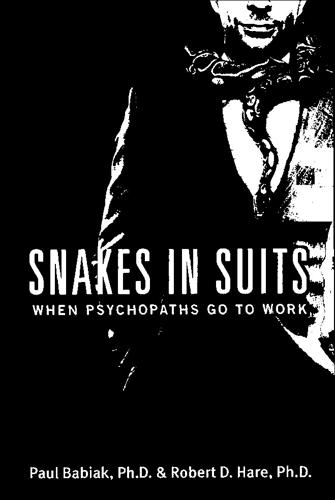
Snakes in Suits: When Psychopaths Go to Work
by
Dr. Paul Babiak
and
Dr. Robert Hare
Published 7 May 2007
The rate of technological change has been rapid since the turn of the twentieth century and is growing exponentially every minute. You need only consider how outdated your new computer is barely one month after you take it out of the box. Or the fact that the length of time between the Wright brothers’ lifting off at Kitty Hawk and Neil Armstrong’s first step onto the moon was only sixty-six years—barely one lifetime! When business or industry upheaval overtakes the organization’s ability to respond effectively, a state of chaos is created. Few of us are ready to handle chaotic change effectively, and evolution has not been very helpful, moving at its own slow pace.
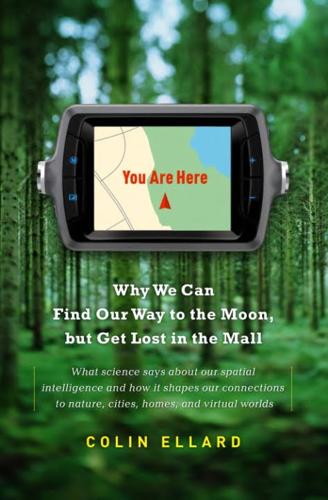
You Are Here: Why We Can Find Our Way to the Moon, but Get Lost in the Mall
by
Colin Ellard
Published 6 Jul 2009
If I want to know how long it will take me to drive to Chicago, or whether there’s still time to walk to work, the relevant calculations are straightforward and are based on equations that have been well understood since ancient times. The same basic mathematics transported tiny capsules full of men across the vast reaches of space to the moon. As he stepped onto the dusty surface, nobody heard Neil Armstrong ruminate on the possibility that the massive Saturn V boosters that had pushed him and his shipmates across the void had been a figment of their minds. The beautiful blue planet they looked back on from their lonely vantage point in space was no invention. It was real and it was a long way off.
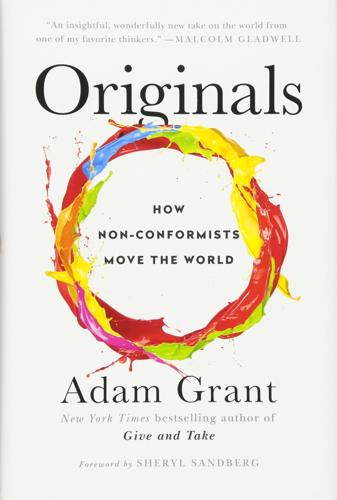
Originals: How Non-Conformists Move the World
by
Adam Grant
Published 2 Feb 2016
What are the habits of the people whose originality extends beyond appearance to effective action? The Right Stuff To be an original, you need to take radical risks. This belief is embedded so deeply in our cultural psyche that we rarely even stop to think about it. We admire astronauts like Neil Armstrong and Sally Ride for having “the right stuff”—the courage to leave the only planet humans have ever inhabited and venture boldly into space. We celebrate heroes like Mahatma Gandhi and Martin Luther King, Jr., who possessed enough conviction to risk their lives for the moral principles they held dear.
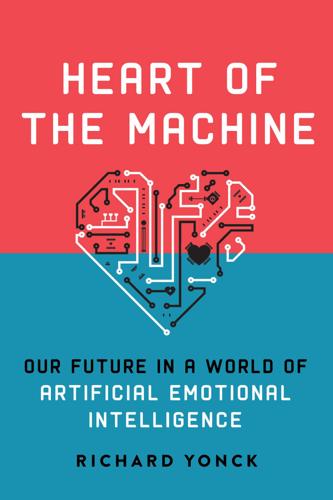
Heart of the Machine: Our Future in a World of Artificial Emotional Intelligence
by
Richard Yonck
Published 7 Mar 2017
It has been noted that the smartphones so many of us use each and every day have far more processing power and storage than the entire Apollo 11 moon landing program from more than four decades before. Perhaps an even more impressive statistic was reported by Udi Manber and Peter Norvig of Google when they wrote in 2012: When you enter a single query in the Google search box, or just speak it to your phone, you set in motion as much computing as it took to send Neil Armstrong and eleven other astronauts to the moon. Not just the actual flights, but all the computing done throughout the planning and execution of the eleven-year, seventeen-mission Apollo program.9 It’s easy for us to forget just how much computing power we now wield in our everyday lives, but it’s often an even greater challenge to grasp just how much things have changed in a relatively short number of years.

Sextant: A Young Man's Daring Sea Voyage and the Men Who ...
by
David Barrie
Published 12 May 2014
I had new sheets laid & the bed rubbed up & dried as well as could be done, & in this damp bed I turned in . . . but the continual rolling of the Ship hindered me from Sleeping. . . . The Ocean & the winds raged all night.15 Cook reached home in July 1775 and was greeted as a hero—rather like Neil Armstrong returning from the moon, though he had been away for much longer. He was promoted to the rank of post-captain and, early the following year, elected a Fellow of the Royal Society. He could now have enjoyed a comfortable retirement with his wife and children, but the challenge of further exploration could not be resisted.
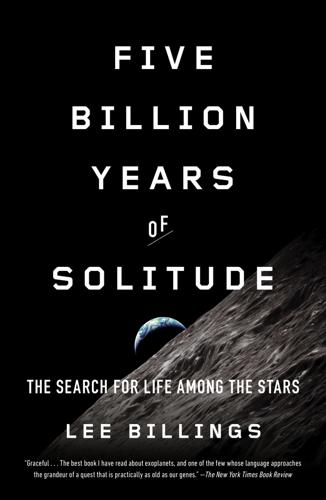
Five Billion Years of Solitude: The Search for Life Among the Stars
by
Lee Billings
Published 2 Oct 2013
When he spoke, it was with the brisk but calm cadence of someone well versed in elevator-pitching complex and expensive projects to impatient politicians and technocrats—powerful people whose busy schedules did not afford the luxury of long attention spans. Early on, he unpacked a well-polished quip. “In the twenty-first century, the discovery of life around another star will probably be as important a step for mankind as Neil Armstrong’s was for the twentieth,” Mountain articulated in plummy tones. “Finding life that has independently formed in another place, regardless of its progression or not to intelligence, will be like putting Copernicus and Darwin into the same bottle and giving it a good shake. What happens then? You look in the bottle.
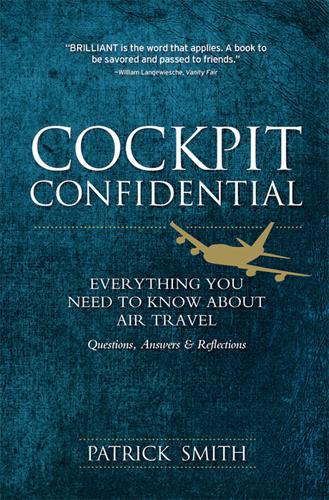
Cockpit Confidential: Everything You Need to Know About Air Travel: Questions, Answers, and Reflections
by
Patrick Smith
Published 6 May 2013
The puffery got going in spring 2005, when the A380 took to the air for its maiden test flight. “The most anticipated flight since Concorde leapt from the pavement in 1969,” cried one news report. “Straight into the history books,” said another of the “gargantuan double-decked superjumbo.” Oh, the humanity. Over on the Airbus website, they were channeling Neil Armstrong, inviting visitors to listen to the “first words of chief test pilot Jacques Rosay.” And what of the future? While the A380 was being doused with champagne and hyperbole, the 747 was flying into its fourth decade of operation. The bulbous new ’Bus wasn’t much to look at, but it was loaded with high-tech gadgetry and the lowest seat mile operating costs ever seen.

The Sirens of Mars: Searching for Life on Another World
by
Sarah Stewart Johnson
Published 6 Jul 2020
THE ROUTE TO ENDURANCE The convention soon became to name craters after famous ships of exploration: Fram was the ship that transported Amundsen’s crew to Antarctica, where they first successfully reached the South Pole; Endurance was the name of Shackleton’s ship that was crushed in the ice; and Endeavor was the name of the ship that took James Cook on his voyage to New Zealand and Australia. The team joked that if Opportunity ever reached Endeavor Crater, only a few graduate students would remain, just as only a few crew members managed to avoid malaria and dysentery on Cook’s voyage. Even Eagle fit the convention, as it was also the name of the famous spacecraft that delivered Neil Armstrong and Buzz Aldrin to the surface of the moon. “FIRST NAVCAM FRAME” Squyres, Roving Mars: Spirit, Opportunity, and the Exploration of the Red Planet, p. 335. DRIVEN AND DRIVEN Ibid., p. 334. A NEW MAP Bruce C. Heezen and Marie Tharp, “World Ocean Floor Panorama,” full color, painted by H.

The Last Stargazers: The Enduring Story of Astronomy's Vanishing Explorers
by
Emily Levesque
Published 3 Aug 2020
Eventually, they were all but arm-wrestling the thing to get it to turn and then digging it out of the lunar dust to relevel it after each move, taking up valuable time and oxygen. Still, the telescope was deemed a success, and George later went on to launch a similar ultraviolet telescope for use aboard one of the Skylab missions in the 1970s. The moon landings did offer us one additional bonus bit of astronomy. During Apollo 11, Neil Armstrong and Buzz Aldrin placed a special mirror on the lunar surface, designed to reflect lasers shot at the moon by telescopes. This means that by bouncing lasers off these mirrors, astronomers can directly measure the distance between the earth and moon to within a few millimeters; we learned from this that the moon is actually spiraling away from us at a rate of 3.8 centimeters per year.

Falter: Has the Human Game Begun to Play Itself Out?
by
Bill McKibben
Published 15 Apr 2019
She covered the launch of the moonshot for her magazine, The Objectivist, and though she of course insisted the government had no business funding such things, she allowed herself to be overcome anyway: “What we had seen, in naked essentials—but in reality, not in a work of art—was the concretized abstraction of man’s greatness … that a long, sustained, disciplined effort had gone to achieve this series of moments, and that man was succeeding, succeeding, succeeding.” Better yet, she wrote, Neil Armstrong didn’t ruin his great moment on the moon by talking about God, “did not undercut the rationality of his achievement by paying tribute to the forces of its opposite; he spoke of man. ‘That’s one small step for a man, one giant leap for mankind.’ So it was.” Rand would like the current space program even more.
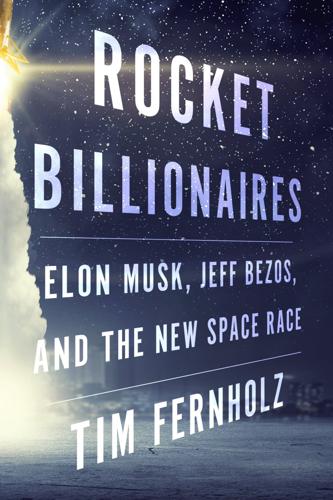
Rocket Billionaires: Elon Musk, Jeff Bezos, and the New Space Race
by
Tim Fernholz
Published 20 Mar 2018
Among the most storied planes in the program was the X-15, a joint NASA/Air Force project that looked more like a ballistic missile than a fighter jet—its pilots had to jettison one of its four tail feathers in order to land the vehicle on a runway. It was carried aloft on the bottom of a B-52 bomber until about 8.5 miles above the ground. Then it would be dropped, fire its rockets, and shoot past the speed of sound. Between 1959 and 1968, eight of its pilots—including future lunar pioneer Neil Armstrong—crossed the invisible line marking the edge of space and were awarded their astronaut wings.” Rutan decided that the X-15 was the right prototype for a vehicle to win the X Prize. He could build his own space plane, taking advantage of nearly a half century of technological advances as he did so.
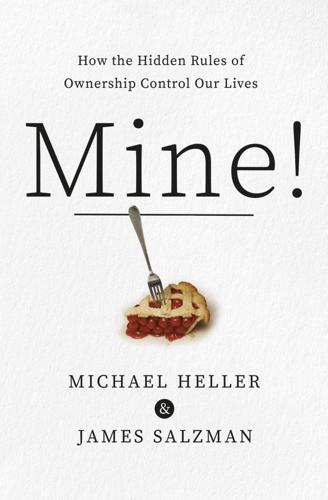
Mine!: How the Hidden Rules of Ownership Control Our Lives
by
Michael A. Heller
and
James Salzman
Published 2 Mar 2021
Being the first Christian European was what justified, as a matter of law, the claims of Spain to the Caribbean, Texas, Mexico, and California; of France to New Orleans, Canada, and much of middle America; and of England to New England and Virginia. But if that’s the case, why did the world not rise in protest when Neil Armstrong planted the American flag on the moon in July 1969? That should have made the moon just as much a U.S. territory as early America was a European one. The answer is that by the 1960s, countries had renounced discovery and conquest as the basis for deciding who was first. In 1967 the United States, along with the Soviet Union and dozens of other countries, signed the U.N.
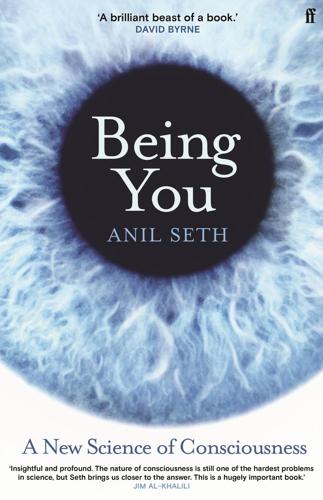
Being You: A New Science of Consciousness
by
Anil Seth
Published 29 Aug 2021
Priors, likelihoods, and posteriors are often called Bayesian ‘beliefs’ because they represent states of knowledge rather than states of the world. (Note that a Bayesian belief is not necessarily something I-as-a-person believe. It makes equal sense to say that my visual cortex ‘believes’ that the object in front of me is a coffee cup as to say that I believe that Neil Armstrong landed on the moon.) Priors are the probabilities of something being the case before new data arrives. Let’s say the prior probability of overnight rain is very low – perhaps you live in Las Vegas. The prior probability of having left the sprinkler on will depend on how often you use the sprinkler, and on how forgetful you are.

Reimagining Capitalism in a World on Fire
by
Rebecca Henderson
Published 27 Apr 2020
The future is an infinite succession of presents, and to live now as we think human beings should live, in defiance of all that is bad around us, is itself a marvelous victory. —HOWARD ZINN, YOU CAN’T BE NEUTRAL ON A MOVING TRAIN, 1994 One small step for a man, one giant leap for mankind. —NEIL ARMSTRONG What will a reimagined capitalism look like? It’s impossible to know, of course, but at the risk of seeming utopian, let me paint a picture of how the world might look very different twenty years from now. In a world that has reimagined capitalism, if you’re in business, you work for a high-commitment firm that is deeply rooted in shared values, provides great jobs, and takes for granted the idea that while it is essential to be profitable, the firm’s primary goal should be to create value, not to make money at any price.

Holdout: A Novel
by
Jeffrey Kluger
Published 2 Aug 2021
Zhirov smiled, accepting the greetings, until security guards parted the crowd and the local officials and costumed girls were shown through. The Zhezkazgan mayor made a short speech and presented Zhirov with the nesting doll. There had not been enough time to hand-paint one with his face, and while there was indeed a cosmonaut on the front, Zhirov could not make out who it was exactly. It resembled Neil Armstrong, the American. He beamed at the doll and thanked the mayor. The three costumed girls then stepped forward. They smiled shy smiles. The eyes of two of them glistened with tears. Each held a tray of the sweet fried dumplings. Zhirov plucked and ate one from each tray and closed his eyes briefly as he did, with the look of a man focusing on the fineness of the flavor.

The Elements of Choice: Why the Way We Decide Matters
by
Eric J. Johnson
Published 12 Oct 2021
Kipchoge also wore an unreleased version of a Nike Vaporfly shoe (called the Alphafly) that increased his running efficiency by about 4 percent. But the amazing reality is that he ran 26.2 miles in the streets of Vienna in less than two hours. His achievement received a lot of attention. One announcer compared it to the landing of men on the moon and called it a “Neil Armstrong moment.” The New York Times called it “a sports milestone granted almost mythical status in the running world, breaking through a temporal barrier that many would have deemed untouchable only a few years ago.” But I wonder whether Kipchoge’s achievement would have been seen as remarkable if that 2 hours were expressed differently, as a number of minutes.

This Is for Everyone: The Captivating Memoir From the Inventor of the World Wide Web
by
Tim Berners-Lee
Published 8 Sep 2025
The transistor – at the time, a quarter-inch-sized component with inch-long wires coming out of it – is a device that can alternate between on and off states to control the flow of current. In essence it is a simple, low-cost electrical switch. With just a few transistors, you can create logic gates, similar to the ones my dad had demonstrated with water, or like the ones we had made using relays. When I was fourteen, the Apollo engineers used these transistors to guide Neil Armstrong and Buzz Aldrin to the surface of the moon. Even now, transistors form the basis of all computing – they have just got smaller and smaller and smaller. Today’s transistors are thinner than a strand of human DNA. Thanks to the manufacturing boom in Asia, by the early 1970s transistors had plummeted in price.
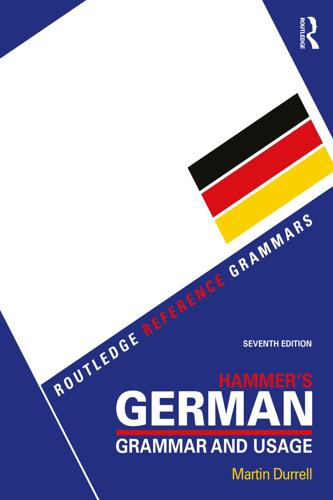
Hammer's German Grammar and Usage
by
Martin Durrell
Published 15 Feb 2021
The lack of the article is characteristic of formal written registers. Zunächst kamen wir nach Florenz, (der) Hauptstadt der Toskana First we arrived in Florence, the capital of Tuscany dieses Zürich, (der) Treffpunkt der Kaufleute (Frisch) this Zurich, the meeting place of businessmen Neil Armstrong, (der) amerikanischer Astronaut, betrat als erster Mensch den Mond (Zeit) Neil Armstrong, the American astronaut, was the first man to set foot on the moon (c) No article is used in some formulaic expressions referring to people This usage is typical of formal, especially official registers. Angeklagter hat gestanden, dass … The accused confessed that … Unterzeichneter bittet um rasche Entscheidung seiner Angelegenheit The undersigned requests a speedy decision in the matter concerning him Verfasser behauptet, das Problem gelöst zu haben The author claims to have solved the problem (d) Articles are often omitted for stylistic effect in headlines and advertisements Verbrechen gestanden.

QI: The Book of General Ignorance - The Noticeably Stouter Edition
by
Lloyd, John
and
Mitchinson, John
Published 7 Oct 2010
One of the most familiar features of the planet Mars is its red appearance in the night sky. This redness, however, is due to the dust in the planet’s atmosphere. The surface of Mars tells a different story. The first pictures from Mars were sent back from Viking I, seven years to the day after Neil Armstrong’s famous moon landing. They showed a desolate red land strewn with dark rocks, exactly what we had expected. This made the conspiracy theorists suspicious: they claimed that NASA had deliberately doctored the pictures to make them seem more familiar. The cameras on the two Viking rovers that reached Mars in 1976 didn’t take colour pictures.

Realizing Tomorrow: The Path to Private Spaceflight
by
Chris Dubbs
,
Emeline Paat-dahlstrom
and
Charles D. Walker
Published 1 Jun 2011
Curiously, ever since the film's release in 1968, the same year that the Apollo 8 mission orbited the moon, Pan Am had been receiving phone calls from people who wanted to be on the first commercial flight to the moon. Given that the technology was obviously now in place to take people to this destination, they assumed that commercial flights couldn't be far behind. After Neil Armstrong and Buzz Aldrin actually landed on the moon in July 1969, the number of registered moon-flight hopefuls soared to twentyfive thousand. That same month the travel magazine Holiday featured the moon as its destination of the month. By the time the Statendam passengers viewed the launch of the final Apollo mission, Pan Am's moon list, now called the First Moon Flights Club, included the names of more than eighty thousand worldwide travelers eager for a lunar excursion.
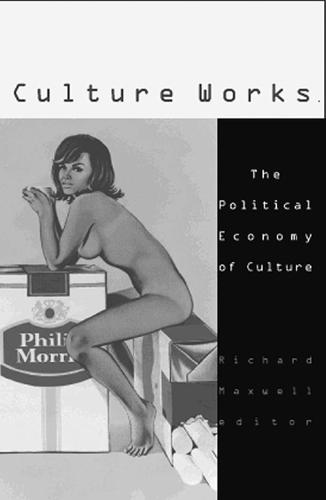
Culture works: the political economy of culture
by
Richard Maxwell
Published 15 Jan 2001
By De/Cipherin’ we can begin to get a stronger grasp on the power that the booty can and does make within and without black communities worldwide, and how that power is more often than not dissipated as it circulates in one or another form of capital. Some questions that spring from this approach might be: Who holds the performance rights to the Rock, the Pony, and the Wop? Can we ever put that little “r” in a circle next to Michael Jackson’s moonwalk, or would the patent belong to Neil Armstrong? If I want to get jiggy with it onstage, whom should I send my request for public performance rights to, Will Smith or Jiggy herself? Should dance be considered intellectual property? What about folkloric expressions—do they exist in the “public domain” or is there such a thing as a national trademark?
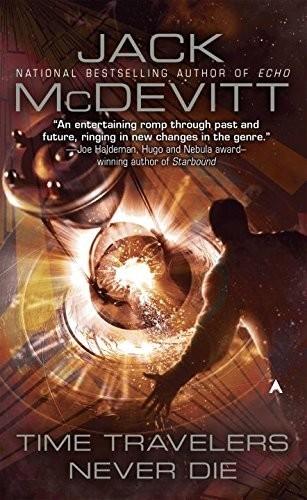
Time Travelers Never Die
by
Jack McDevitt
Published 10 Sep 2009
He tried counting but got bored with that when he hit about two hundred. Time travel had its downside. Not going to do this again, he thought. If I get back home, I’m going to stay there. Nineteen sixty-five. The Vietnam War would be heating up. Lyndon Johnson was in the White House. John Wayne was still making movies. Neil Armstrong and the first moon landing were four years away. Computers were large pieces of hardware and came with punch cards. His ribs ached. Hurt every time he inhaled. Something probably broken. After a while, the jailer brought meals. Coffee, chicken, potatoes, and a vegetable, but God knew what the vegetable was, and the rest of it tasted like mush.
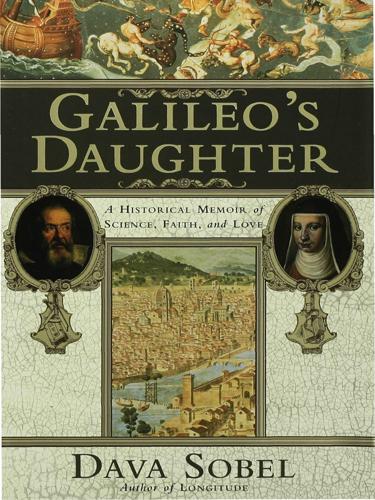
Galileo's Daughter: A Historical Memoir of Science, Faith and Love
by
Dava Sobel
Published 25 May 2009
Isaac Newton is born in England, December 25. 1643 Galileo’s student Evangelista Torricelli (1608-47) invents mercury barometer. 1644 Pope Urban VIII dies. 1648 Thirty Years’ War ends. 1649 Vincenzio Galilei (son) dies in Florence, May 15. 1654 Grand Duke Ferdinando II improves on Galileo’s thermometer by closing the glass tube to keep air out. 1655-56 Christiaan Huygens (1629-95) improves telescope, discovers largest of Saturn’s moons, sees Saturn’s “companions” as a ring, patents pendulum clock. 1659 Suor Arcangela dies at San Matteo, June 14. 1665 Jean-Dominique Cassini (1625-1712) discovers and times the rotation of Jupiter and Mars. 1669 Sestilia Bocchineri Galilei dies. 1670 Grand Duke Ferdinando II dies, succeeded by his only surviving son, Cosimo III. 1676 Ole Roemer (1644-1710) uses eclipses of Jupiter’s moons to determine the speed of light; Cassini discovers gap in Saturn’s rings. 1687 Newton’s laws of motion and universal gravitation are published in his Principia. 1705 Edmond Halley (1656-1742) studies comets, realizes they orbit the Sun, predicts return of a comet later named in his honor. 1714 Daniel Fahrenheit (1686-1736) develops mercury thermometer with accurate scale for scientific purposes. 1718 Halley observes that even the fixed stars move with almost imperceptible “proper motion” over long periods of time. 1728 English astronomer James Bradley (1693-1762) provides first evidence for the Earth’s motion through space based on the aberration of starlight. 1755 Immanuel Kant (1724-1804) discerns the true shape of the Milky Way, identifies the Andromeda nebula as a separate galaxy. 1758 “Halley’s comet” returns. 1761 Mikhail Vasilyevich Lomonosov (1711-65) realizes Venus has an atmosphere. 1771 Comet hunter Charles Messier (1730-1817) identifies a list of noncometary objects, many of which later prove to be distant galaxies. 1781 William Herschel (1738-1822) discovers the planet Uranus. 1810 Napoleon Bonaparte, having conquered the Papal States, transfers the Roman archives, including those of the Holy Office with all records of Galileo’s trial, to Paris. 1822 Holy Office permits publication of books that teach Earth’s motion. 1835 Galileo’s Dialogue is dropped from Index of Prohibited Books. 1838 Stellar parallax, and with it the distance to the stars, is detected independently by astronomers working in South Africa, Russia, and Germany; Friedrich Wilhelm Bessel (1784-1846) publishes the first account of this phenomenon, for the star 61 Cygni. 1843 Galileo’s trial documents are returned to Italy. 1846 Neptune and its largest moon are discovered by predictions and observations of astronomers working in several countries. 1851 Jean-Bernard-Leon Foucault (1819-68) in Paris demonstrates the rotation of the Earth by means of a two-hundred-foot pendulum. 1861 Kingdom of Italy proclaimed, uniting most states and duchies. 1862 French chemist Louis Pasteur (1822-95) publishes germ theory of disease. 1877 Asaph Hall (1829-1907) discovers the moons of Mars. 1890-1910 Complete works, Le Opere di Galileo Galilei, are edited and published in Florence by Antonio Favaro. 1892 University of Pisa awards Galileo an honorary degree—250 years after his death. 1893 Providentissimus Deus of Pope Leo XIII cites Saint Augustine, taking the same position Galileo did in his Letter to Grand Duchess Cristina, to show that the Bible did not aim to teach science. 1894 Pasteur’s student Alexandre Yersin (1863-1943) discovers bubonic plague bacillus and prepares serum to combat it. 1905 Albert Einstein (1879-1955) publishes his special theory of relativity, establishing the speed of light as an absolute limit. 1908 George Ellery Hale (1868-1938) discerns the magnetic nature of sunspots. 1917 Willem de Sitter (1872-1934) intuits the expansion of the universe from Einstein’s equations. 1929 American astronomer Edwin Hubble (1889-1953) finds evidence for expanding universe. 1930 Roberto Cardinal Bellarmino is canonized as Saint Robert Bellarmine by Pope Pius XI. 1935 Pope Pius XI inaugurates Vatican Observatory and Astrophysical Laboratory at Castel Gandolfo. 1950 Humani generis of Pope Pius XII discusses the treatment of unproven scientific theories that may relate to Scripture; reaches same conclusion as Galileo’s Letter to Grand Duchess Cristina. 1959 Unmanned Russian Luna 3 spacecraft radios first views of the Moon’s far side from lunar orbit. 1966 Index of Prohibited Books is abolished following the Second Vatican Council. 1969 American astronauts Neil Armstrong and Buzz Aldrin walk on the Moon. 1971 Apollo 15 commander David R. Scott drops a falcon feather and a hammer on the lunar surface; when they fall together he says, “This proves that Mr. Galileo was correct.” 1979 Pope John Paul II calls for theologians, scholars, historians, to reexamine Galileo’s case. 1982 Pope John Paul II establishes Galileo Commission with four formal study groups to reinvestigate the Galileo affair. 1986 Halley’s comet returns, observed by a waiting armada of spacecraft. 1989 National Aeronautics and Space Administration launches Galileo spacecraft to study the moons of Jupiter at close range. 1992 Pope John Paul II publicly endorses Galileo’s philosophy, noting how “intelligibility, attested to by the marvelous discoveries of science and technology, leads us, in the last analysis, to that transcendent and primordial thought imprinted on all things.” 1995 Galileo reaches Jupiter. 1999 Galileo’s successful reconnaissance of the Medicean stars, now better known as the Galilean satellites of Jupiter, continues to enlighten astronomers everywhere.
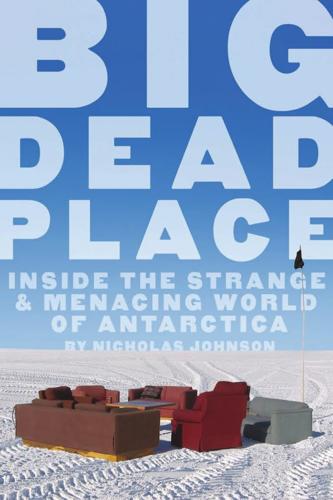
Big Dead Place: Inside the Strange and Menacing World of Antarctica
by
Nicholas Johnson
Published 31 May 2005
They want to walk where Robert Scott walked, they try to see the mountains as if Shackleton were peeking over their shoulder, and they get all worked up about IGY. Antarctica is not a work-in-progress, but a museum. They like to show slide shows and videos of the great explorers in the Coffeehouse. Nothing is valid until it is historic. Stamp Collectors, if given a ride to the moon, would run around looking for Neil Armstrong’s footprints. Mercenaries have no interest in Antarctica itself, as a place, as an idea, or as an experience. Like migrating herds of marine mammals, they follow the warm waters of cash flow. Antarctic pay is substandard for foreign contract wages. Food and rent are covered, however, so all money goes in the bank.

The Physics of Wall Street: A Brief History of Predicting the Unpredictable
by
James Owen Weatherall
Published 2 Jan 2013
Other government funding agencies, like the Department of Energy and the National Science Foundation, were also flush (though none could compete with NASA). Even mediocre graduates of mid-tier doctoral programs were guaranteed jobs in science, as either professors or government researchers. Physicists were in high demand. On July 20, 1969, Neil Armstrong and Buzz Aldrin became the first men to set foot on the surface of the moon. America and its allies rejoiced — finally, an American victory in the space race. And almost immediately, the physics job market collapsed. As the space race accelerated, so too did America’s commitment to the war in Vietnam.
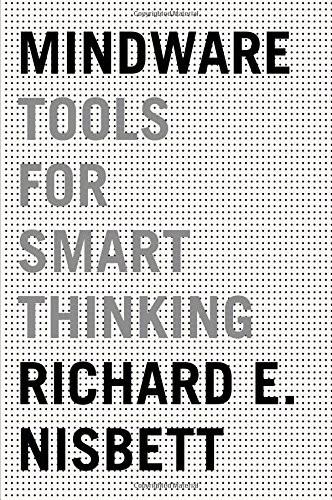
Mindware: Tools for Smart Thinking
by
Richard E. Nisbett
Published 17 Aug 2015
Observation of chimpanzees that remained inactive and apparently asleep while being operated on after being given curare led to the hypothesis that curare obliterates consciousness. That theory went out the window when the first human was operated on under curare and reported, I assume with expletives, that he had been awake the whole time and felt the surgeon’s every excruciating maneuver. The hypothesis that the moon is made of green cheese was destroyed by Neil Armstrong in 1969. Once you know the knockdown fact, the theory is kaput. (For the time being. Many a theory has been knocked down only to rise again in a modified version.) But mostly, research is a slog through findings that support or contradict the theory to one degree or another. The glittering prizes in science don’t go to the people who falsified someone else’s theory, or even one of their own—though their research may have that incidental effect.

The Human Age: The World Shaped by Us
by
Diane Ackerman
Published 9 Sep 2014
We have in common a world our senses know voluptuously, from one splayed moment to the next, the wind touching one’s chapped lips, a just-forgotten chore, the small unremarkable acts of mercy and heroism parents and lovers perform each day, the collective sort of creatures we are, whose qualities embarrass us when we stumble upon them in ourselves, but which we’re glad to epitomize in movie stars, sports figures, and politicians—people like Neil Armstrong stepping onto the moon, or Thomas Edison spending the last of his days in Florida trying to make rubber from goldenrod. We have in common a fidgeting, blooming, ever-startling universe, whose complex laws we all obey, whether we’re born in Tierra del Fuego or Svalbard. We’re each a sac of chemicals, forged in the sun, that can somehow contemplate itself, even if we don’t always know where our pancreas is, and are troubled most days by mundaner matters.

The Martian
by
Andy Weir
Published 1 Jan 2011
Of course, they relay e-mail from friends and family, but NASA also sends along choice messages from the public. I’ve gotten e-mail from rock stars, athletes, actors and actresses, and even the President. One of them was from my alma mater, the University of Chicago. They say once you grow crops somewhere, you have officially “colonized” it. So technically, I colonized Mars. In your face, Neil Armstrong! But my favorite e-mail was the one from my mother. It’s exactly what you’d expect. Thank God you’re alive, stay strong, don’t die, your father says hello, etc. I read it fifty times in a row. Hey, don’t get me wrong, I’m not a mama’s boy or anything. I’m a full-grown man who only occasionally wears diapers (you have to in an EVA suit).
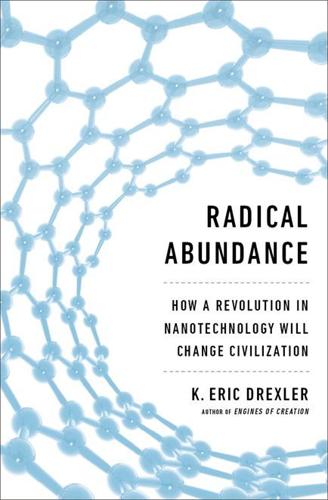
Radical Abundance: How a Revolution in Nanotechnology Will Change Civilization
by
K. Eric Drexler
Published 6 May 2013
Engineers first developed a system-level design (evolving through second, third, and tenth drafts), then refined their designs far enough to delegate further refinement to engineers who shaped more detailed designs through delegated choices that shaped details within details until the shape and structure of every part had been fully defined. In July, 1969, Neil Armstrong stepped onto the lunar surface, confirming that the engineers had gotten the details right. Apollo has often been described as a triumph of science, but this is mistaken: In the grand scheme of things, the new science required was routine and peripheral. Apollo can be better described as a triumph of engineering, and while this is inarguable, the engineering was also routine—in detail.
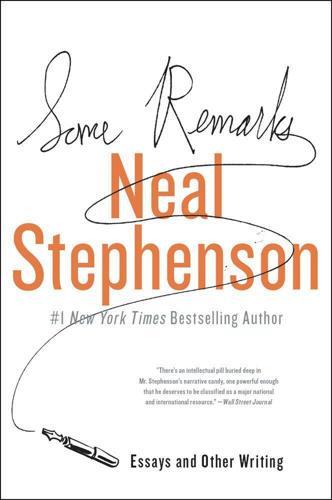
Some Remarks
by
Neal Stephenson
Published 6 Aug 2012
I knew that it had something to do with wires across the bottom of the ocean, but I didn’t know how many of those wires existed, how they got there, who controlled them, or how many bits they could carry. According to legend, in 1876 the first sounds transmitted down a wire were Alexander Graham Bell saying “Mr. Watson, come here. I want you.” Compared with Morse’s “What hath God wrought!” this is disappointingly banal—as if Neil Armstrong, setting foot on the moon, had uttered the words: “Buzz, could you toss me that rock hammer?” It’s as though during the 32 years following Morse’s message, people had become inured to the amazing powers of wire. Today, another 120 years later, we take wires completely for granted. This is most unwise.
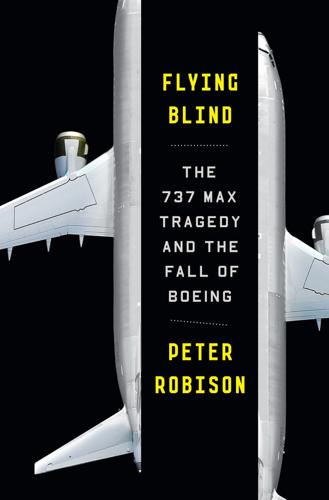
Flying Blind: The 737 MAX Tragedy and the Fall of Boeing
by
Peter Robison
Published 29 Nov 2021
National Medal of Technology from President Ronald Reagan, who leaned in and spoke softly into the engineer’s ear as he handed over the medal. (Asked later what was said, Sutter had to tell people Reagan had explained where to find the footmarks on the floor to pose for photographs.) The next year, he was named to the White House commission investigating the Challenger space shuttle disaster, alongside Neil Armstrong, Sally Ride, and other aerospace luminaries. NASA’s organizational structure, Sutter discovered, was a mess, with competing fiefdoms, tangled reporting lines—and no top-level leader focused solely on safety. It would never happen at Boeing, Sutter declared. * * * — Airbus, meanwhile, became the genuine threat to Boeing that some had feared.
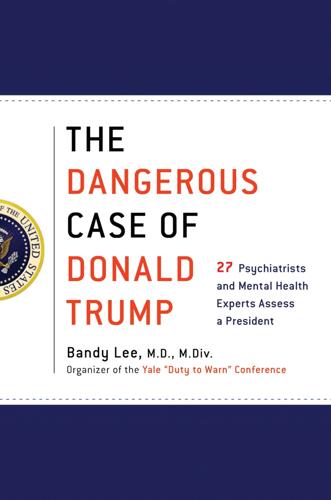
The Dangerous Case of Donald Trump: 27 Psychiatrists and Mental Health Experts Assess a President
by
Bandy X. Lee
Published 2 Oct 2017
He remained in politics, and continued to thrive, ultimately becoming president of the United States in 1968. Everything finally seemed to be going Nixon’s way, despite his trouble leaving behind his nickname from the 1950s, “Tricky Dick.” He even enjoyed accolades for bringing U.S. troops back from Vietnam, opening diplomatic relations with Communist China, and kibitzing with Neil Armstrong and Buzz Aldrin after they walked on the moon. Even with the carnage of Vietnam looming in the background, he appeared to have a largely successful first term, and sailed to victory again in 1972, to serve his second term. If the fund scandal ambushed Nixon, the next threat crept up on him like a thief in the night.

The Deep Learning Revolution (The MIT Press)
by
Terrence J. Sejnowski
Published 27 Sep 2018
See Mike Wall, “JFK’s ‘Moon Speech’ Still Resonates 50 Years Later,” Space.com (blog), posted September 12, 2012, https://www.space.com/17547-jfk-moon-speech -50years-anniversary.html. The “We choose to go to the moon” speech by President John F. Kennedy at Rice University in Houston on September 12, 1962, which is still stirring more than fifty years later, reminds us of his leadership. See https://www .youtube.com/watch?v=WZyRbnpGyzQ/. When astronaut Neil Armstrong stepped onto the moon on July 20, 1969, the average age of an engineer at NASA was 26; in school in 1962, these engineers were inspired by Kennedy’s speech. Notes 311 45. J. Haskel and S. Westlake, Capitalism without Capital: The Rise of the Intangible Economy (Princeton, NJ: Princeton University Press, 2017), 4. 46.
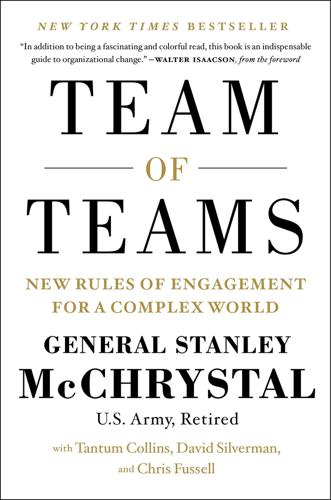
Team of Teams: New Rules of Engagement for a Complex World
by
General Stanley McChrystal
,
Tantum Collins
,
David Silverman
and
Chris Fussell
Published 11 May 2015
One can imagine the thrill that must have pulsed through the audience of budding engineers as their president pointed out that the metals necessary to achieve this feat had not yet been invented. Earlier in the speech Kennedy uttered the memorable statement “We do these things, not because they are easy, but because they are hard.” Less than seven years later, more than 600 million viewers around the world tuned in to watch Neil Armstrong set foot on lunar soil and proclaim “one giant leap for mankind” before planting an American flag on the moon. To the best of our knowledge, that flag, though toppled by the lander’s liftoff blast and likely bleached white from decades of unfiltered sunlight, is still there. The ridged imprints from Armstrong’s rubber soles—tiny, perfectly geometric mountain ranges—still stand, preserved in the windless stasis of our favorite celestial boulder.
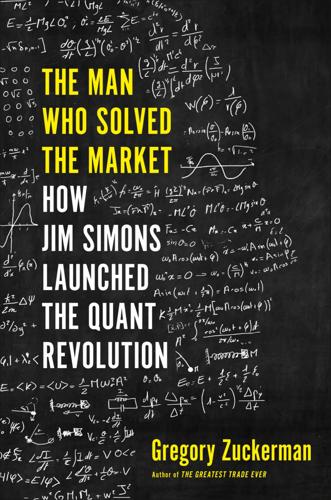
The Man Who Solved the Market: How Jim Simons Launched the Quant Revolution
by
Gregory Zuckerman
Published 5 Nov 2019
There, Mercer discovered a single computer, a donated IBM 1620, that could do fifty ten-digit multiplications a second but was neglected by most campers. Apparently, sitting indoors all day in the summer wasn’t as enticing to them as it was to Mercer, so he got to play with the computer as much as he wanted, learning to program in Fortran, a language developed mainly for scientists. That summer, Neil Armstrong paid a visit to the camp, five years prior to becoming the first man to set foot on the moon. He told the campers that astronauts were using the latest computer technology, some of it the size of a match. Mercer sat listening, mouth agape. “I couldn’t see how that would even be possible,” he later recalled.
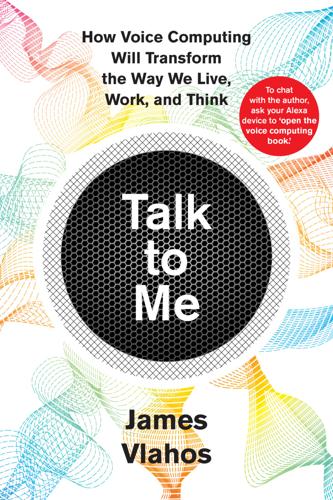
Talk to Me: How Voice Computing Will Transform the Way We Live, Work, and Think
by
James Vlahos
Published 1 Mar 2019
He showcased features that, while mostly taken for granted today, were at the time staggeringly novel. With voice alone, a user could get a weather forecast, see the time in Paris, set an alarm, check the NASDAQ, find a Greek restaurant in Palo Alto, get directions to Stanford, create calendar entries, fire off a text message, search Wikipedia for information about Neil Armstrong, get the definition of “mitosis,” and learn the number of days until Christmas. As Forstall ticked off Siri’s capabilities, he frequently paused to flash a bright, awed smile, as if to say, I can hardly believe this, either. Normally, such hammy showmanship would be the cue for the audience members to dutifully clap as is the norm at tech-company unveilings.

A World Without Work: Technology, Automation, and How We Should Respond
by
Daniel Susskind
Published 14 Jan 2020
As for processing power, many of the new systems require extraordinarily powerful hardware to run effectively. Often, we take for granted quite how demanding even the most basic digital actions we carry out can be. A single Google search, for instance, requires as much processing power as the entire Apollo space program that put Neil Armstrong and eleven other astronauts on the moon—not simply the processing power used during the flights themselves, but all that was used during planning and execution for the seventeen launches across eleven years.14 Today’s cutting-edge technologies use far more power still. To be sure, some trade-offs can be made among the three requirements.
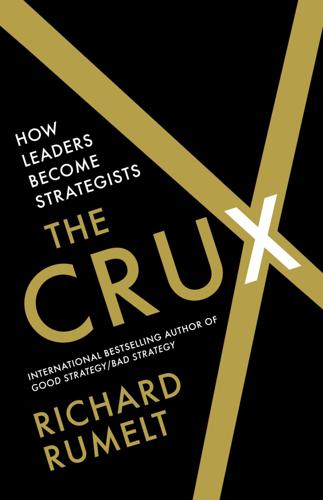
The Crux
by
Richard Rumelt
Published 27 Apr 2022
Martin, Playing to Win: How Strategy Really Works (Boston: Harvard Business Review Press, 2013). 3. “Cost-Benefit Analysis Used in Support of the Space Shuttle Program,” National Aeronautics and Space Administration, June 2, 1972, http://archive.gao.gov/f0302/096542.pdf. 4. The ideas for the shuttle originated in the US Air Force Dyna-Soar project that ran from 1957 through 1963. Neil Armstrong was originally attached to this project as a pilot. The concept was a piloted spacecraft that could carry weapons anywhere in the world on short notice and land like an aircraft. Its antecedent was the 1942 Nazi Amerika Bomber project that examined multiple options for bombing the Americas from Europe. 5.
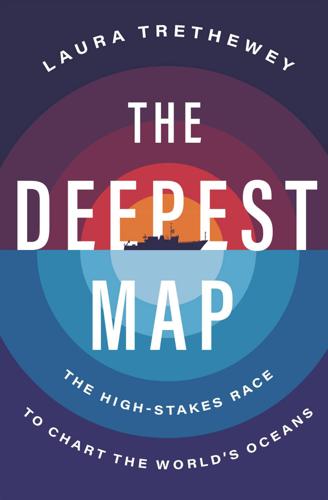
The Deepest Map
by
Laura Trethewey
Published 15 May 2023
The gulf of interest between exploring ocean and outer space helps explain the steep difference between NOAA’s small budget and NASA’s generous one.14 Today, most ocean researchers have stopped trying to fight the tide and learned to embrace the public’s love of space travel. Ocean research vessels are named after famous astronauts, such as R/V Neil Armstrong and R/V Sally Ride at the Scripps Institution of Oceanography. Marine researchers drop buzzwords such as ocean worlds into grant applications, boosting the value of ocean life by tying it to the search for extraterrestrial life in outer space. 3. The ocean and outer space are the two ideological endpoints in exploration, so naturally they share some of the same goals and technology.

Born to Run: A Hidden Tribe, Superathletes, and the Greatest Race the World Has Never Seen
by
Christopher McDougall
Published 5 May 2009
Unfortunately, it was a lesson that would have all of us running for our lives. CHAPTER 25 BAREFOOT TED was right, of course. Lost in all the fireworks between Ted and Caballo was an important point: running shoes may be the most destructive force to ever hit the human foot. Barefoot Ted, in his own weird way, was becoming the Neil Armstrong of twenty-first-century distance running, an ace test pilot whose small steps could have tremendous benefit for the rest of mankind. If that seems like excessive stature to load on Barefoot Ted’s shoulders, consider these words by Dr. Daniel Lieberman, a professor of biological anthropology at Harvard University: “A lot of foot and knee injuries that are currently plaguing us are actually caused by people running with shoes that actually make our feet weak, cause us to overpronate, give us knee problems.

Screenplay: The Foundations of Screenwriting
by
Syd Field
Published 17 Dec 2007
In Apollo 13 (William Broyles Jr. and Al Reinert), the first ten pages set up all the narrative threads that are needed to establish the situation. After showing newsreel shots of the fire that killed the three astronauts of Apollo 1, the script opens with a friendly party-like gathering where people are watching Neil Armstrong’s walk on the moon. In just a few words we learn that these people are astronauts in the current NASA program and that the dream of Jim Lovell (Tom Hanks) is to land on the moon. In just a few pages we know everything we need to know, including the suspicion that Lovell’s wife has some deep fear about his going into space again.

Empireland: How Imperialism Has Shaped Modern Britain
by
Sathnam Sanghera
Published 28 Jan 2021
As his biographer says, ‘up to this point, no Indian had ever written and published a book in English, either in India or in Britain,’ and it surely counts for something that Mahomed managed to write and publish a book at a time when white supporters of slavery assumed that black people were unable to write for themselves: he was the Neil Armstrong of my field. Another remarkable thing about the man: in 1786, more than a hundred years before the British were being cautioned against the ‘sexual pollution’ and racial degeneration that would come with relationships with Muslim men,fn1 centuries before actors Joan Hooley and John White made history with one of the first interracial kisses on British television in a 1964 episode of the British soap opera Emergency Ward 10, even longer before I was making an almighty fuss in my memoir agonizing about defying my family’s expectations to marry a good Sikh girl, Mahomed was just going ahead and doing it.

Little Failure: A Memoir
by
Gary Shteyngart
Published 7 Jan 2014
The trick is to use giant copper block letters nailed to a granite wall, signifying both pomp and posterity, an uppercase paean to an increasingly lowercase Soviet state. The words, gracing the walls of the Technological Institute station, read as follows: 1959—SOVIET SPACE ROCKET REACHES THE SURFACE OF THE MOON Take that, Neil Armstrong. 1934—SOVIET SCIENTISTS CREATE THE FIRST CHAIN REACTION THEORY So that’s where it all began. 1974—THE BUILDING OF THE BAIKAL-AMUR MAIN RAILROAD TRUNK HAS BEEN INITIATED Now, what the hell does that mean? Ah, but Baikal-Amur sounds so beautiful—Baikal, the famous (and now famously polluted) Siberian lake, a centerpiece of Russian myth; Amur (amour?)
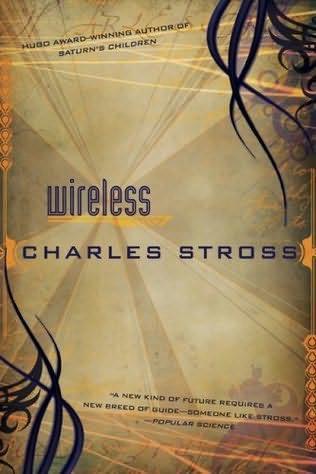
Wireless
by
Charles Stross
Published 7 Jul 2009
One that has been extinct for deep geological time—ten times as long as the dinosaurs—but that has left relics that work.” His voice is trembling with emotion. “We humans, we’ve barely scratched the surface! The longest lasting of our relics? All our buildings will be dust in twenty thousand years, even the pyramids. Neil Armstrong’s footprints in the Sea of Tranquility will crumble under micromete oroid bombardment in a mere half million years or so. The emptied oil fields will refill over ten million years, methane percolating up through the mantle: continental drift will erase everything. But these people . . . ! They built to last.

Planet Ponzi
by
Mitch Feierstein
Published 2 Feb 2012
Profits get forced down and down. It’s competition that does this. The social value of the activity doesn’t come into it. But maybe your mind is moving along other lines. Perhaps you don’t like conspiracy theories as a rule. Perhaps you think that the simplest explanation is always the likeliest one: Neil Armstrong really did walk on the moon, the CIA did not kill President Kennedy, Elvis is dead. I’m the same. I don’t like conspiracy theories either. So here are two further propositions, either of which you might find attractive: Mitch Feierstein is an idiot or a liar, and he’s gotten his figures wrong; or Mitch Feierstein has his figures quite correct, but there is some other perfectly innocent explanation of these data—we don’t need to invoke a giant Ponzi scheme.

Tools for Thought: The History and Future of Mind-Expanding Technology
by
Howard Rheingold
Published 14 May 2000
"So, in October, 1962 I moved into the Pentagon and became the director of the Information Processing Techniques Office." And that event, as much as any other development of that era, marked the beginning of the age of personal computing. The unprecedented technological revolution that began with the post-Sputnik mobilization and reached a climax with Neil Armstrong's first step on the moon a little more than a decade later was in a very large part made possible by a parallel revolution in the way computers were used. The most spectacular visual shows of the space age were provided by the enormous rockets. The human story was concentrated on the men in the capsules atop the rockets.

The Future Is Faster Than You Think: How Converging Technologies Are Transforming Business, Industries, and Our Lives
by
Peter H. Diamandis
and
Steven Kotler
Published 28 Jan 2020
With cash. A lot of cash. A few months later, President Kennedy responded by creating the Apollo program, pouring 2.2 percent of the US GDP into the aerospace industry. This influx of greenbacks supercharged an era of innovation that took only eight years to go from Alan Shepard’s suborbital hop to Neil Armstrong’s lunar footprints. Of course it did. Nothing accelerates technological development like money. More bucks, more Buck Rogers. More cash means more people experimenting, failing, and, eventually, driving breakthroughs. And this brings us to our next force: an unprecedented rise in the availability of capital.
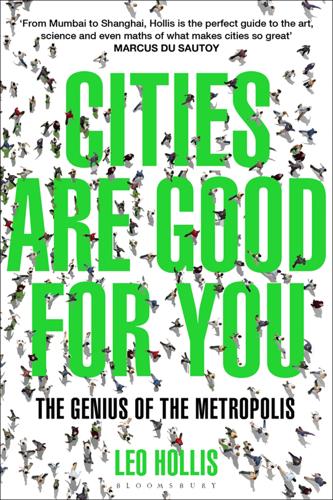
Cities Are Good for You: The Genius of the Metropolis
by
Leo Hollis
Published 31 Mar 2013
In addition the government of Jawaharlal Nehru (1947–64) ordained the community India’s ‘City of the Future’, the intellectual capital of the subcontinent, and plans were set to build three universities, fourteen engineering colleges and forty-seven polytechnic schools. These in time attracted a number of research institutes in all manner of things such as science, health, aeronautics, food and even, in 1972, two years after Neil Armstrong set foot on the moon, the Indian Space Research Organisation. As a result many of the nation’s most important public-sector agencies – Hindustan Aeronautics, Bharat Electronics, Indian Telephone Industries – were established there. Then the private sector moved in: Wipro, which first started as a producer of vegetable oil but went into IT in 1980; Infosys, set up in 1981 with an initial investment of $300 and now employing 133,000 people in over thirty-three countries; and the transistor manufacturers, Namtech.
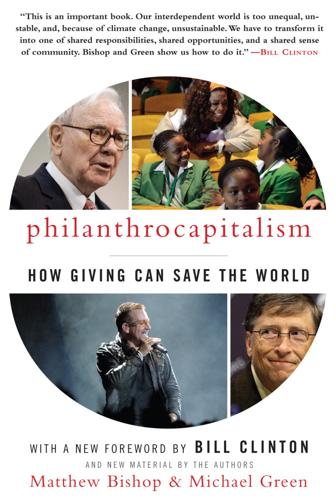
Philanthrocapitalism
by
Matthew Bishop
,
Michael Green
and
Bill Clinton
Published 29 Sep 2008
What you are doing on immunization in Botswana? Motherfucker.’ ” At this point, the billionaire realizes that he is being paid a compliment and relaxes. As Bono explains, “Puffy calls Gates ‘the MacDaddy.’ Jay-Z, all of the hip-hop guys, kind of adore him. Because he is not seen as a romantic figure—well, maybe romantic in the sense that Neil Armstrong is romantic, a scientist but not a poet. He gets shit done.” Bono, for his part, prefers to call him “Kill Bill.” “In meetings he is so direct. I’m more judo; we use our opponents’ own energy to defeat them. Bill is more Mike Tyson.” Partnership is one of the features of philanthrocapitalism, but there are surely no stranger bedfellows than wealthy businesspeople and popular celebrities.
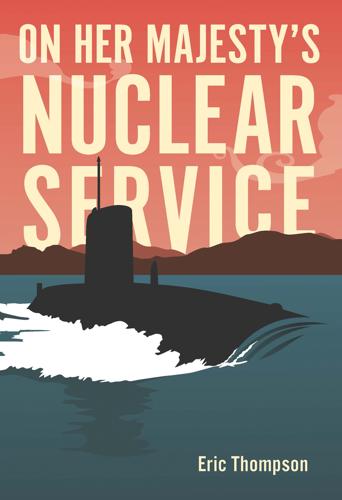
On Her Majesty's Nuclear Service
by
Eric Thompson
Published 18 Apr 2018
It was the first time they had exercised with a real submarine and to mark the occasion, the first helicopter lowered a box of Sea King ties as a memento. But that was not the only first of the day. I was on low-stress periscope watch, quietly surveying the Cornish coast, when news came in that man had landed on the Moon. Apollo 11 had made it. Better still, the first human to set foot on the moon was a Naval Officer – Neil Armstrong was a US Navy pilot. There was I sunbathing through the periscope in an antique submarine while up there on the Moon was a blood brother. Yes, I was definitely playing non-league football. That night, I surveyed the Moon in great detail through our high-powered Search Periscope and tried to imagine another human being up there on its surface. **** Andrew was a maid-of-all-work.
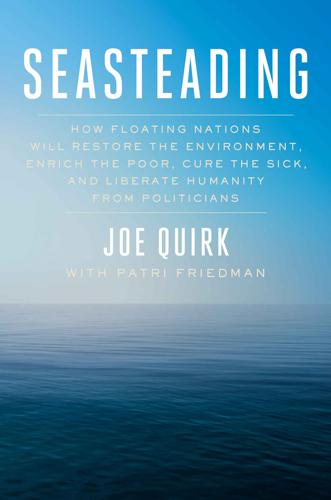
Seasteading: How Floating Nations Will Restore the Environment, Enrich the Poor, Cure the Sick, and Liberate Humanity From Politicians
by
Joe Quirk
and
Patri Friedman
Published 21 Mar 2017
The fate of our world may depend on the effort of a single person who builds or propagates the machinery of freedom that makes the world safe for capitalism. “For this reason, all of us must wish Patri Friedman the very best in his extraordinary experiment.” The time from Orville Wright’s first twelve-second airplane flight in 1903 to Neil Armstrong’s happy dance on the moon in 1969 was 66 years. If a military empire can put a man on the moon in 1969, free people can put a nation on the ocean in in the twenty-first century. Let’s meet our first aquanauts. They are currently preparing their launch from a nation sinking beneath the sea. Chapter 2 HOUSES Cities That Clean the Seas The Amphibious Nation The Dutch are famous for the legend of the little Dutch boy who plugged a dike with his finger and saved his country.

The Geek Way: The Radical Mindset That Drives Extraordinary Results
by
Andrew McAfee
Published 14 Nov 2023
After spending millennia dreaming of flight, humans finally left the Earth’s surface in 1783 in a balloon built in France by the Montgolfier brothers. A bit more than a century later, in 1903, one of the Wright brothers made the first airplane flight in Kitty Hawk, North Carolina. After that, the milestones started being counted in decades. Sputnik orbited the Earth in 1957, and Neil Armstrong walked on the moon in 1969. We landed a spacecraft on Mars in 1976, and flew another one past Pluto less than forty years later. In 2021, we started the whole cycle over again on another planet; the Ingenuity helicopter made a short flight from the deck of the Perseverance rover, which was on Mars at the time.
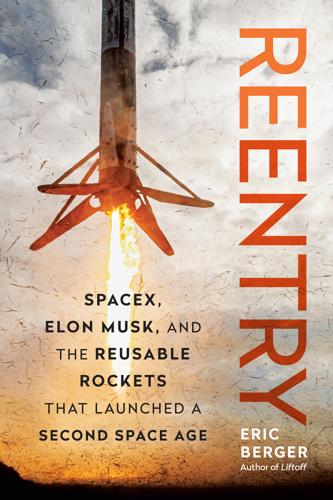
Reentry: SpaceX, Elon Musk, and the Reusable Rockets That Launched a Second Space Age
by
Eric Berger
Published 23 Sep 2024
He also spent much of 2013 spearheading SpaceX’s charge to obtain a lease for a second launch pad in Florida. This was to be none other than the most historic launch pad in the Western hemisphere, NASA’s Launch Complex 39A. Surrounded by swampland and rising just a few feet above the Atlantic Ocean, the sprawling 200-acre site includes the hallowed ground where Neil Armstrong and Buzz Aldrin took their last steps on terra firma before walking on the Moon. Later, dozens of shuttle missions also launched from there. Following retirement of the shuttle in 2011, NASA no longer had any use for the launch site. The agency’s inspector general characterized the pad as “unneeded infrastructure,” and leasing the facility to a commercial launch company would offload millions of dollars a year in maintenance costs.

Red Moon Rising
by
Matthew Brzezinski
Published 2 Jan 2007
But it would be Nixon who would preside over the White House when Kennedy’s pledge to put a man on the moon was finally realized in 1969. Some would say this was fitting since he had advocated, as vice president, for Ike to shoot for the moon. But ultimately, would Kennedy have made the pledge, and would Neil Armstrong have taken his famously “small step” when he did, had Sergei Korolev not pitched Khrushchev the idea of a satellite? Perhaps not. The Chief Designer may be completely unknown to most Americans, yet his hidden hand has left indelible prints on the nation. The hidden hand would become a term better associated with Eisenhower’s detached style of leadership.
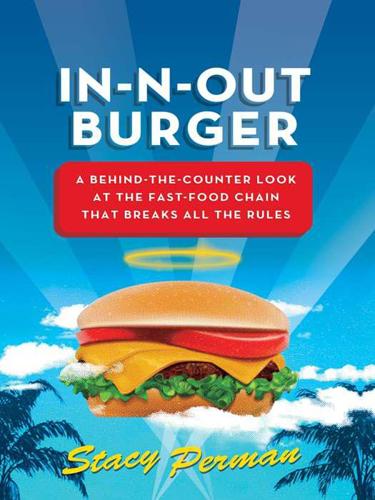
In-N-Out Burger
by
Stacy Perman
Published 11 May 2009
Known as the anti-chain with the cult-like mystique, it earned plaudits from no less than the Harvard Business School and rated a full-scale analysis from the Cornell Hotel & Restaurant Quarterly. Even the youth of America recognized that a meal at In-N-Out would make a big impression, apparently. In November 2006, when Brian Barry was asked what famous person he would like to have lunch with, the eight-year-old told the San Gabriel Valley Tribune it would be Neil Armstrong and he didn’t hesitate to offer to take the astronaut to In-N-Out. “Neil and I would have cheeseburgers with onions,” Barry informed the paper. In November, as Brian Barry was hoping to take his favorite spaceman to his favorite burger place, Lynsi gave birth to twins: a boy and a girl. Soon after, she purchased Esther’s Glendora home.
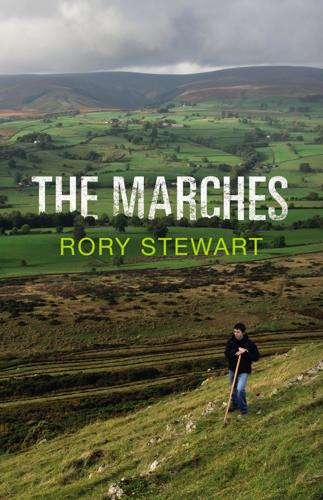
The Marches: A Borderland Journey Between England and Scotland
by
Rory Stewart
Published 14 Jul 2016
Something about the Malcolms – their exotic lives abroad perhaps, their marble obelisks, their place in the British establishment, their wars and the Empire – had not fitted them to be modern Scottish heroes. Local boys were not supposed to emulate their success. Instead, Langholm’s only ‘notable person’ on Wikipedia was Neil Armstrong, on the grounds that his family name was a Border name. The native heroes had been forgotten in favour of an American astronaut who had visited the town for two hours in 1972. 45 Nearing Crieff, my father spotted a road sign. ‘Sheriffmuir? Pretty peculiar battle. No one could work out who had won; both sides just wandered off the next morning.

Inviting Disaster
by
James R. Chiles
Published 7 Jul 2008
On one side was the Airship Guarantee Company, a subsidiary of Vickers Limited, building a ship to be called the R.100 or, more popularly, the “Capitalist Ship.” On the other side was the Air Ministry itself, working out of the Royal Airship Works at Cardington, Bedfordshire, building a “Socialist Ship,” the R.101. Even before Neil Armstrong put his right foot down on the moon in July 1969, the Apollo program was shutting down. The budget cuts started in 1966 and chopped 140,000 jobs out of the aerospace industry within two years. And after the excitement of the first landing, public interest fell as steeply, with only a brief surge during Apollo 13’s crisis in space.
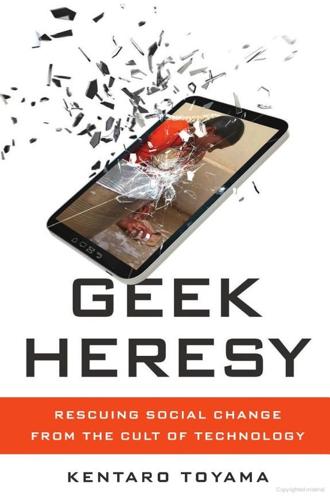
Geek Heresy: Rescuing Social Change From the Cult of Technology
by
Kentaro Toyama
Published 25 May 2015
When we met, he had just completed a master’s in aeronautical engineering at MIT and was working at Oracle while waiting to be admitted to the US Air Force Officer Training School. But the wait was long, and while he waited, he also noticed a theme in those space-traveler bios. “Astronauts get a chance to see our world as the small blue marble that it is,” he told me, “and they come back with new love for humankind and for the earth itself.” A friend of Neil Armstrong’s once explained, “You understand that you’re a short-term phenomenon, like the mosquitoes that come in the spring and the fall. You get a perspective on yourself. You’re getting back to the fundamentals of the planet.”1 Some, such as Armstrong himself, retired from NASA and went into farming.
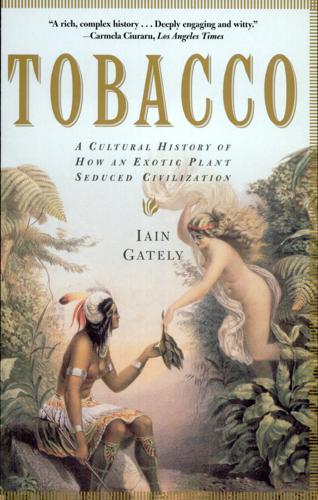
Tobacco: A Cultural History of How an Exotic Plant Seduced Civilization
by
Iain Gately
Published 27 Oct 2001
They decided to put not just pets and metal chunks but Americans in space, and on the moon as well. They succeeded in their first objective in 1962 when John Glenn, a cigar smoker, became the first American to orbit the earth. He was presented with his own weight in cigars upon his return from space. The United States’ second off-world objective was achieved in 1969 when Space Commander Neil Armstrong, climbed down out of the Apollo 11 mission’s lunar module and stepped on to luna firma. He was later joined by Space Captain Buzz Aldrin on the face of the ancients’ Goddess of Love. Commander Armstrong was a pipe smoker in the true explorer’s mould, although he did not take his instrument of pleasure with him into space.

Case for Mars
by
Robert Zubrin
Published 27 Jun 2011
If Mars is to be made to give up its secrets, “people who do not shrink from the dreary vastness of space” will have to go there themselves. 3: FINDING A PLAN MARS THE HARD WAY On July 20, 1989, President George Bush stood on the steps of the National Air and Space Museum in Washington, D.C. Behind him, within the cool halls of the museum, rested artifacts from America’s greatest space explorations, among them a gumdrop-shaped spacecraft named Columbia, the Apollo 11 command module. The men who rode the Columbia home from lunar orbit—Neil Armstrong, Mike Collins, and Buzz Aldrin, the Apollo 11 crew—now flanked Bush as the president prepared to announce a bold new venture in space on this the twentieth anniversary of humanity’s first landing on the Moon. Bush spoke of the challenges and allure of space exploration, of committing the nation to a sustained program of human exploration of the solar system and even of the permanent settlement of space.
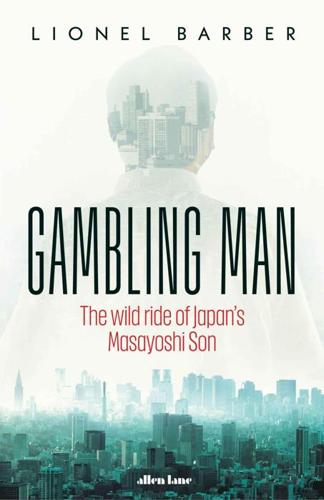
Gambling Man
by
Lionel Barber
Published 3 Oct 2024
Born in Paris, schooled in England, Hippeau trained as a journalist in Brazil before taking up a business career in New York. He loved his time as editor of an English-language newspaper in Rio de Janeiro, though his tenure featured one notorious schoolboy error. The day after the lunar landing, on 21 July 1969, his front page celebrated Neil Armstrong’s giant leap for mankind with the headline: ‘Man lands on Mars’.4 Hippeau identified the best route into the internet as ‘search’ – how best to discover content in the infinite galaxy of cyberspace. One day, one of his junior executives, a prolific reader of Ziff’s business magazines, came up with an answer: Yahoo!

CTOs at Work
by
Scott Donaldson
,
Stanley Siegel
and
Gary Donaldson
Published 13 Jan 2012
I think your father's statement is a very powerful one. Miller: Well, it was a powerful one from a guy who was not an intellectual. He was just a regular schmoe who got hit by the Depression. My father would never state it in intellectual terms, but he gave me all these aphorisms. When they landed on the moon, when Neil Armstrong landed on the moon in '69, he said, “Craig, do you think the Apollo program's successful?” And I said, “Sure, they just landed a man on the moon.” He said, “What are they going to do next?” And I thought, “Hmm, there is nothing after Apollo.” So he said, “It's not a success because they don't know where they're going.”

The Edifice Complex: How the Rich and Powerful--And Their Architects--Shape the World
by
Deyan Sudjic
Published 27 Nov 2006
But the most enlightening exhibit offers a particularly chilling reminder of Nixon’s continuing interest in spin. A copy of a memo to H. R. Haldeman outlining the procedures to be adopted by the President in the event of a disaster during the course of the first moon landing hangs behind glass. It includes the script written for the television address that Nixon would have given: ‘These brave men, Neil Armstrong and Edwin Aldrin, know that there is no hope for their recovery. But also know there is hope for mankind in their sacrifice.’ Prior to the statement, the President would have telephoned each of the widows. ‘A clergyman should then adopt the same procedure as a burial at sea, commending their souls to the deepest of the deep, concluding with the Lord’s prayer.’
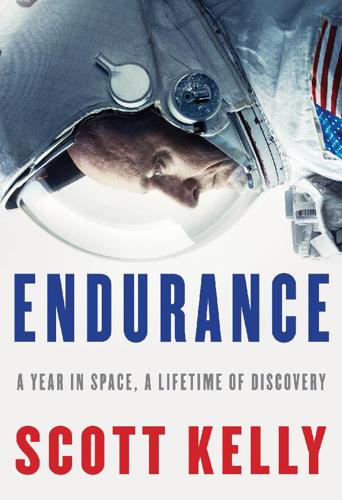
Endurance: A Year in Space, a Lifetime of Discovery
by
Scott Kelly
and
Margaret Lazarus Dean
Published 14 Aug 2017
Something about that small space, the sense that I was doing something challenging just by living there, was appealing to me. I felt I was where I belonged. One night when I was five, my parents shook Mark and me awake and hustled us down to the living room to watch a blurry gray image on TV, which they explained was men walking on the moon. I remember hearing the staticky voice of Neil Armstrong and trying to make sense of the outrageous claim that he was visiting the glowing disc in the New Jersey summer sky I could see out our window. Watching the moon landing left me with a strange recurring nightmare: I dreamed I was preparing to launch on a rocket to the moon, but rather than being secured safely in a seat inside, I was instead strapped across the pointy end of the rocket, my back against its nose cone, facing straight up at the heavens.

Word Freak: Heartbreak, Triumph, Genius, and Obsession in the World of Competitive ScrabblePlayers
by
Stefan Fatsis
Published 27 Jul 2001
Matt hums the theme from Deliverance. We wait for a car to pass, and Eric finally flags down a guy in a Trans Am who takes him to a gas station a half mile away. I open my eyes to see Marlon bathed in the car’s flashing emergency lights, a round mound of nylon facing the windshield, looking in his shiny outfit like Neil Armstrong on the moon. I can hear Matt riffing on the scene, imagining a local mistaking Marlon for an alien from a UFO. “He was in a blue space suit and his face was blacker than night. He came out of a flashing craft. . . .” I laugh and try to fall asleep. Matt and Marlon do some more anagrams to pass the time.
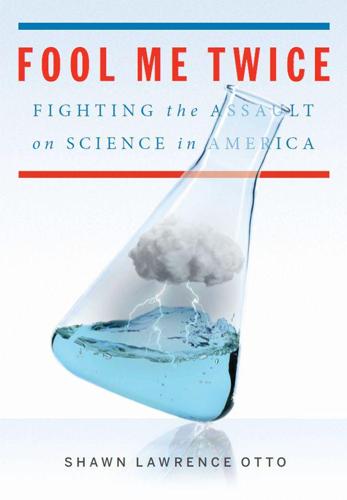
Fool Me Twice: Fighting the Assault on Science in America
by
Shawn Lawrence Otto
Published 10 Oct 2011
His tale suggests the dangers posed by embracing tradition and precedent at the expense of openness and creativity, applied research at the expense of basic science, fear at the expense of wonder, utility at the expense of beauty, and an insistence on financially quantifiable projections before an investment is made, the idea of which runs contrary to the entire process of discovery and creativity. Imagine, for example, an insistence on the promise of financial return prior to Darwin’s trips on the Beagle or Neil Armstrong’s first steps on the moon. They would never have happened. And yet it is hard to quantify the great wealth that has spun off from those adventures into the unknown. It’s possible that Tocqueville’s general assessment of America may have been correct, and that the United States would have coasted off its vast natural resource exploitation until its economy eventually ran out of growth, but would have never really led the world, were it not for three major developments.
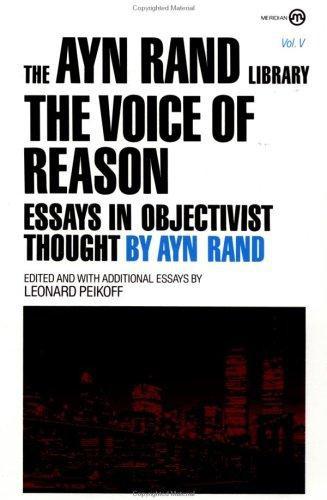
The Voice of Reason: Essays in Objectivist Thought
by
Ayn Rand
,
Leonard Peikoff
and
Peter Schwartz
Published 1 Jan 1989
No event in contemporary history was as thrilling, here on earth, as three moments of the mission’s climax: the moment when, superimposed over the image of a garishly colored imitation-module standing motionless on the television screen, there flashed the words: “Lunar module has landed”—the moment when the faint, gray shape of the actual module came shivering from the moon to the screen—and the moment when the shining white blob which was Neil Armstrong took his immortal first step. At this last, I felt one instant of unhappy fear, wondering what he would say, because he had it in his power to destroy the meaning and the glory of that moment, as the astronauts of Apollo 8 had done in their time. He did not. He made no reference to God; he did not undercut the rationality of his achievement by paying tribute to the forces of its opposite; he spoke of man.

If You're So Smart, Why Aren't You Happy?
by
Raj Raghunathan
Published 25 Apr 2016
Surprise, Surprise! Over the years, several hundred people have answered the Genie Question. Sometimes their responses are amusing. One woman wished to marry a cross between Michael Jackson and Paul McCartney. Another wished that he could travel back in time to 1969 so that he could lie in wait for Neil Armstrong and Buzz Aldrin to land on the moon and shout “Boo.” But mostly, people’s responses are more surprising than amusing. What’s surprising is that happiness is missing from their wish list. Most psychologists, and even many economists, think that happiness is our main goal in life. Even the Declaration of Independence affirms happiness as one of our most cherished goals.

Between Human and Machine: Feedback, Control, and Computing Before Cybernetics
by
David A. Mindell
Published 10 Oct 2002
Radar operators manipulated blips on screens as they fought automated attackers, and aircraft made human bodies into new and terrible weapons. During the Cold War, computerized command and control systems generated a vision (à la Dr. Strangelove ) wherein the end of the world would be directed, in real time, by men in a data-processing center. By 1969, barely a generation after Mumford’s book, Neil Armstrong’s landing on the moon presented a cybernetic image to succeed Lindbergh’s: his vision structured by instruments, his hand on a stick controlling a powerful engine, his actions aided and mediated by a digital computer and a room of ground controllers a world away. As American icons, Lindbergh and Armstrong allude to a long tradition of images of the helmsman.

Do You Dream of Terra-Two?
by
Temi Oh
Published 15 Mar 2019
He felt like a shadow boxer, learning to maintain a shuttle that his feet would never touch. It had all been for nothing, he’d lie awake and consider. Forlorn insomniac nights as the summer vanished. Occasionally, though, Jesse allowed himself to imagine it, leaving Earth and the risk of dying young behind, his name echoing down the halls of history on everyone’s tongue. Neil Armstrong had served as backup commander on the Apollo 8 mission, he remembered. It could still happen. A member of the Beta could be taken ill or fail to comply with the UK Space Agency and he would be called upon. It could still happen, he whispered with clenched fists into the darkness. But then he would catch himself counting the number of days he had left to live, and the old dread would settle like frost.

AI 2041: Ten Visions for Our Future
by
Kai-Fu Lee
and
Qiufan Chen
Published 13 Sep 2021
The reason it took so long is that deep learning requires large amounts of data and computing power for training the artificial neural network. If computing power is the engine of AI, data is the fuel. Only in the last decade has computing become fast enough and data sufficiently plentiful. Today, your smartphone holds millions of times more processing power than the NASA computers that sent Neil Armstrong to the moon in 1969. Similarly, the Internet of 2020 is almost one trillion times larger than the Internet of 1995. While deep learning was inspired by the human brain, the two work very differently. Deep learning requires much more data than humans, but once trained on big data, it will outperform humans by far for a given task, especially in dealing with quantitative optimization (like picking an ad to maximize likelihood of purchase, or recognizing a face out of a million possible faces).
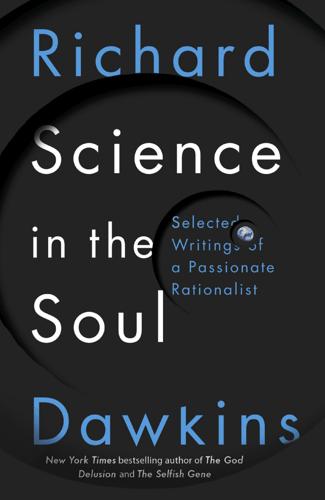
Science in the Soul: Selected Writings of a Passionate Rationalist
by
Richard Dawkins
Published 15 Mar 2017
Traces of alien visitations – wrecked spacecraft, rubbish, evidence of mining activity, maybe even an intentionally deposited signal as in 2001: A Space Odyssey – would quickly (by the standards of geological time) be covered over on the actively heaving and vegetation-covered surface of Earth. But the moon is another matter. No plants, no wind, no tectonic movements: Neil Armstrong walked in the lunar dust forty-two years ago, and his footprints probably still look fresh. So, Paul Davies and his colleague Robert Wagner reason, it makes sense to examine every high-resolution photograph ever taken of the moon’s surface, just in case traces are to be seen.*3 The probability is low, but the payoff could be very high, so it is worth doing.
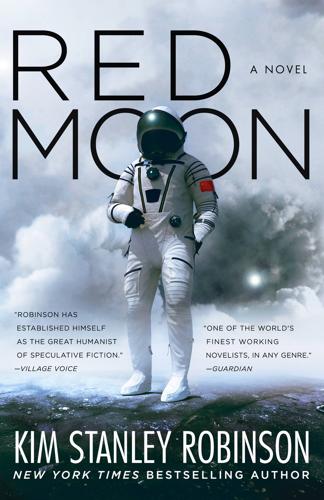
Red Moon
by
Kim Stanley Robinson
Published 22 Oct 2018
It seemed to him they spoke as if he couldn’t understand them; possibly they had succumbed to the fallacy that if he wasn’t looking at them his glasses wouldn’t work. Or they thought he was asleep. Or they didn’t care. Ah Q liked to tell moon stories. Did you know Buzz Aldrin, second man on moon, followed Neil Armstrong’s famous quote about one small step for mankind by jumping to ground and saying That might have been a small step for Neil but for me it was really big! So second sentence spoken on moon was a joke about first sentence. I like that so much. Aldrin was the real intellectual among the Apollos. His brain spin so fast is why they call him buzz.
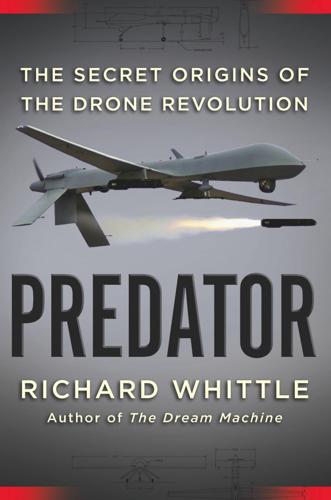
Predator: The Secret Origins of the Drone Revolution
by
Richard Whittle
Published 15 Sep 2014
Reaching Mach 1.3 in the flight’s first two and a half seconds—around a thousand miles an hour at this altitude and temperature—and slowing to about four hundred miles per hour as it traveled, the Hellfire slammed into the side of the target tank’s turret, right where a nearby camera able to detect laser light showed the beam’s sparkle flickering. The aluminum test missile burst into ragged black chunks. “We have impact,” the test director reported unemotionally. “End of test.” Mattoon, Dusseault, and their team reacted like the NASA engineers in Houston when astronaut Neil Armstrong set mankind’s first foot on the moon: giving high fives all around, jumping up and down, patting one another on the back. The Predator team spent the rest of the day analyzing video of the Hellfire launch and the missile smashing into the right side of the tank, studying the test from every angle at actual speed, in slow motion, and in super slow motion.
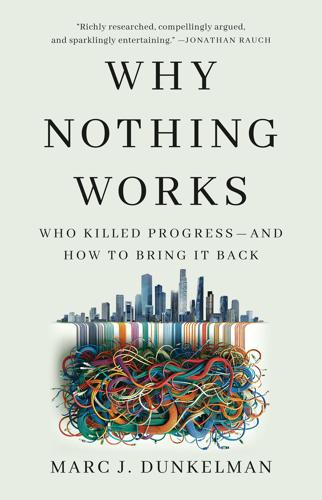
Why Nothing Works: Who Killed Progress--And How to Bring It Back
by
Marc J Dunkelman
Published 17 Feb 2025
Then, after a pause, he alluded to the sort of honor the city reserves for America’s greatest luminaries. In recognition of a triumph of this magnitude, he declared, the developer “should get a ticker-tape parade.”42 Fixing a municipal skating rink was, in this New Yorker’s view, an accomplishment to be venerated akin to General Dwight Eisenhower winning the Second World War or Neil Armstrong walking on the moon. And it’s probably safe to say the developer would have agreed. Certainly he would have enjoyed the attention. His name, as it happened, was Donald J. Trump. TOWARD FULL-CIRCLE PROGRESSIVISM That then marks the third argument of this book. The first, to recount, is that progressivism is defined not by one, but rather by two divergent impulses.

Concorde: The Thrilling Account of History’s Most Extraordinary Airliner
by
Mike Bannister
Published 29 Sep 2022
She was the first supersonic aircraft to carry commercial passengers; the first large, non-military aeroplane to go Mach 2; the first to be able to fly at sustained supersonic speeds in dry, military (non-afterburning) power; the first plane to be equipped with revolutionary fly-by-wire flight control technology … the technological achievements alone went on and on and were legendary. I once had a conversation with Neil Armstrong, the first man to walk on the Moon, about the relative achievements of the Apollo programme versus Concorde. Neil had been guest-of-honour at an awards dinner given by the Guild of Air Pilots and Air Navigators,fn1 of which at one point I had been the Master. The award was a special one to honour Neil’s outstanding contribution to aviation and space technology – not just about his Apollo achievements.

The War Below: Lithium, Copper, and the Global Battle to Power Our Lives
by
Ernest Scheyder
Published 30 Jan 2024
From its founding in 1890 by Syrian and Slav colonists, the small outpost served as a key railroad stop on the line to the city of Antofagasta, once Bolivia’s jewel on the Pacific Ocean but now part of modern-day Chile.13 A town of roughly 10,000, Uyuni is dotted with half-finished buildings, salt-encrusted streets, queñua trees, and quinoa, a hearty plant now known throughout the world as a superfood but one that is particularly adept at thriving in the salty cold of high Bolivian altitudes.14 Importantly for Uyuni, it is near the Salar de Uyuni, the world’s largest salt flat at more than 3,860 square miles, nearly the same size as Hawaii’s Big Island.15 Nestled between two offshoots of the Andes Mountains, the salar is a wonder to behold. The road from Potosí winds its way to Uyuni and then along the salar, an expanse that evokes a flat white carpet. It’s said that the astronaut Neil Armstrong saw the salar from the moon in 1969 and thought it was a large glacier.16 A quiet wind blows through the air providing the only auditory sensations. The stillness and wideness and blanco landscape force you to ask yourself if you are lucid or dreaming. In 2017, the director Rian Johnson used the salar as the setting of the mythical planet Crait for Star Wars: The Last Jedi, insisting to his location scout team that the shoot utilize an area replete with salt, not snow.17 In promoting the film, Johnson described Crait as “way out there,” “very remote,” and “uncharted,” adding that it was a “mineral planet and so there are mines on it.”18 Bolivia, it would seem, held echoes of a mythical Star Wars planet.

Physics of the Future: How Science Will Shape Human Destiny and Our Daily Lives by the Year 2100
by
Michio Kaku
Published 15 Mar 2011
MANNED MISSIONS TO SPACE While robotic missions will continue to open new vistas for space exploration, the manned missions will face much greater hurdles. This is because, compared to manned missions, robotic missions are cheap and versatile; can explore dangerous environments; don’t require costly life support; and most important, don’t have to come back. Back in 1969, it seemed as if our astronauts were poised to explore the solar system. Neil Armstrong and Buzz Aldrin had just walked on the moon, and already people were dreaming about going to Mars and beyond. It seemed as if we were on the threshold of the stars. A new age was dawning for humanity. Then the dream collapsed. As science fiction writer Isaac Asimov has written, we scored the touchdown, took our football, and then went home.
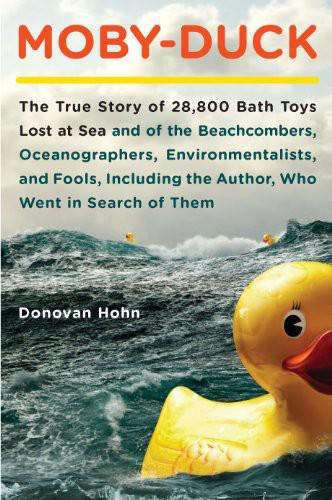
Moby-Duck: The True Story of 28,800 Bath Toys Lost at Sea and of the Beachcombers, Oceanographers, Environmentalists, and Fools, Including the Author, Who Went in Search of Them
by
Donovan Hohn
Published 1 Jan 2010
In 2006, the World Federation of Scientists (WFS) invited Moore to Erice, Sicily, to deliver a presentation on plastic contaminants, which the WFS, thanks in part to Moore, has now added as a subcategory to its growing list of planetary emergencies. Also on the list: Missile Proliferation, Cultural Pollution, and Defense Against Cosmic Objects. Moore was recently inducted into the Explorers Club, the elite association of scientific adventurers whose ranks have included Sir Edmund Hillary, Roald Amundsen, Neil Armstrong, and Jacques Piccard, the deep-sea explorer who, in 1960, with copilot Don Walsh, set the unbroken world depth record—35,800 feet—for a descent in a manned submersible. In 2006, with his wife, Samantha Cannon, known as Sam, Moore attended the club’s annual dinner, infamous for its adventurous menus.
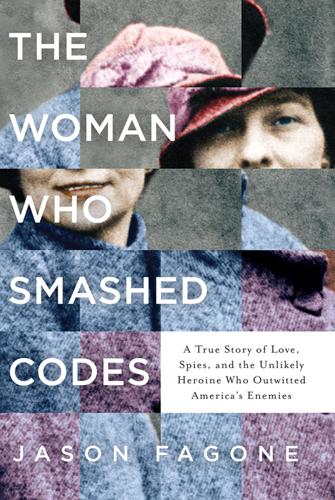
The Woman Who Smashed Codes: A True Story of Love, Spies, and the Unlikely Heroine Who Outwitted America's Enemies
by
Jason Fagone
Published 25 Sep 2017
His feet swelled so much he could not climb the stairs at the Folger Shakespeare Library when he went to hear lectures. Elizebeth cared for him as always, taking notes on his condition in a daybook. MARCH 15, 1969: Bill had fall in night. Confused and loss of memory momentarily. JULY 20: MAN ON THE MOON. ES & WFF watched on CBS until 3 a.m. when Neil Armstrong and ‘Buzz’ had finished moon walk and return to the module. SEPTEMBER 24: WFF birthday. Asked for spare ribs! A few minutes after midnight on November 2, 1969, he had his last heart attack and stopped breathing. Elizebeth called the doctor. William could not be revived. The doctor stayed at the house until after 2 A.M. to comfort her while William’s body was taken away.
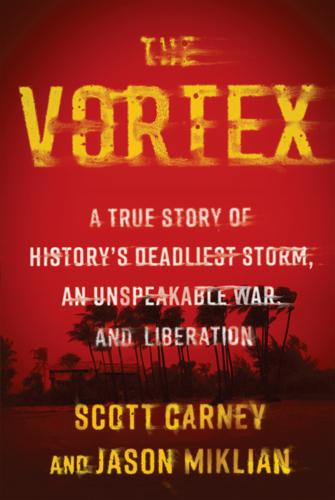
The Vortex: A True Story of History's Deadliest Storm, an Unspeakable War, and Liberation
by
Scott Carney
and
Jason Miklian
Published 28 Mar 2022
He assembled a bagpipe orchestra on the airport tarmac, which launched into spirited military marches as Air Force One touched down. They played mostly in tune. Yahya had rows of gigantic, handwoven Kashmiri silk carpets put under the plane so that Nixon’s leather wingtips wouldn’t suffer the indignity of touching concrete. The trip was Nixon’s big overseas victory tour. Neil Armstrong and Buzz Aldrin had just returned from the moon, splashing down in the South Pacific. Nixon and his wife, Pat, congratulated the astronauts through thick panes of quarantine glass because nobody knew if the astronauts might be carrying killer moon germs that would wipe out the human race. Pakistan was the final stop of the trip, tacked on at the last minute because Nixon had an idea.

Tailspin: The People and Forces Behind America's Fifty-Year Fall--And Those Fighting to Reverse It
by
Steven Brill
Published 28 May 2018
They could listen together to an FDR fireside chat or an Edward R. Murrow report from London as the bombs fell. With the coming of television, they could watch together as Murrow took on Joseph McCarthy, as John Kennedy, Jr., saluted his father’s coffin, as Walter Cronkite reported on the Vietnam War, or as Neil Armstrong walked on the moon. By 1970, the three major television broadcast networks had grown to command at least 75 percent of all American eyeballs. That these and a few print outlets had a near-monopoly a half century ago on presenting the news had its own severe problems; David Halberstam wrote a compelling book about that in 1979, The Powers That Be.

When They Go Low, We Go High: Speeches That Shape the World – and Why We Need Them
by
Philip Collins
Published 4 Oct 2017
It was Britain’s turn to take up the presidency of the European Union, and I had prepared a speech full of pieties and protocols. It was competent, well ordered, and numbingly dull. Worthy but not worth much. This will go down as one of those speeches that were written but never made, such as the speech drafted for John F. Kennedy declaring nuclear war on Cuba, Richard Nixon’s remarks commending the sacrifice of Neil Armstrong and Buzz Aldrin on the moon landing that went wrong, or Eisenhower’s jotted scribble about what to say in the event that the Normandy landings had gone awry. The European speech that Tony Blair might have delivered mattered a good deal less than any of these prepared-but-never-given remarks. Indeed, it is not even the best speech-never-given that I have myself drafted.
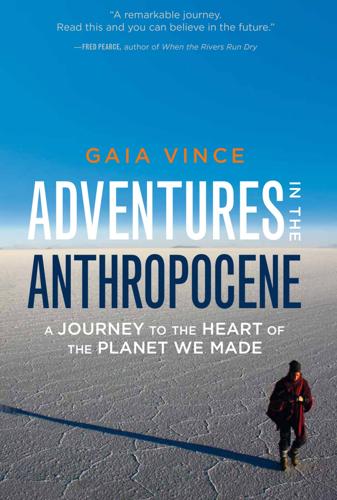
Adventures in the Anthropocene: A Journey to the Heart of the Planet We Made
by
Gaia Vince
Published 19 Oct 2014
The lakes are glassy with ice and spiked with crystals of algae and salts on a terracotta backdrop of mountains and volcanoes, the biggest of which, Licancabur, is so alien that NASA tested its Mars Rover in its crater. In that same crater, 5,916 metres up, were found the mummified corpses of sacrificed young girls, sent there by the Incas to freeze to death. After two days and nights, we enter the surreal landscape of the world’s biggest salt flat, visible by Neil Armstrong from the moon. At 10,500 square kilometres, it’s the size of a small country, or a sea – which it was once. Many years ago, the Atlantic Ocean flowed from present-day Argentina as far west as La Paz in a huge channel. Land eventually sealed off this liquid ingression from the ocean, creating a vast interior lake.

The Last Dance
by
Martin L. Shoemaker
Published 2 Nov 2019
What kind of captain worthy of the title would want duty like that when there are worlds to explore? —Captain Nicolau Aames THE ALDRIN CYCLER FOREWORD BY MARIANNE J. DYSON The Aldrin Express derives its name from Buzz Aldrin, whom most people know as the Apollo 11 astronaut who walked on the moon alongside Neil Armstrong in 1969. Not as many people know that Aldrin was the first astronaut with a PhD (from MIT), and his doctoral thesis was “Guidance for Manned Orbital Rendezvous.” NASA selected him because of this expertise. The other astronauts soon nicknamed him “Dr. Rendezvous” as a result. Aldrin’s orbital mechanical skills were needed when the radar failed during Gemini 12.
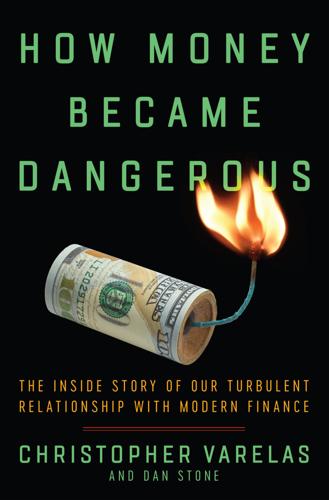
How Money Became Dangerous
by
Christopher Varelas
Published 15 Oct 2019
Suicide prevention groups, the media, and the general public attacked Logan for his insensitivity. Author Caitlin Doughty posted one of countless disapproving tweets: “It is the purview of the privileged young to believe everything is for them, to be commented on by them. The young person who died was not for Paul—not their body, not their image, not their story. . . . You’re not Neil Armstrong bro, it’s simply a thing no one else has been tacky enough to do. . . .” Logan was part of YouTube Preferred, a program that places ads before the site’s most watched videos, allowing these stars to collect big payouts. After this scandal, YouTube temporarily demonetized Logan’s channel. He issued a handful of public apologies, with differing levels of sincerity, but the stunt badly hurt his personal brand and cost him multitudes of followers and fans.

Come Fly With Us: NASA's Payload Specialist Program
by
Melvin Croft
,
John Youskauskas
and
Don Thomas
Published 1 Feb 2019
“The future doesn’t belong to the fainthearted; it belongs to the brave,” Reagan delivered emotionally. “The Challenger crew was pulling us into the future, and we’ll continue to follow them.” Reagan appointed a presidential commission to investigate the accident, headed by William P. Rogers. Members of the panel included notable scientists and aerospace engineers, including astronauts Neil Armstrong and Sally Ride. After several months of intense work, the Rogers Commission formally determined the cause of the accident to be what many in the space shuttle program already knew—the unusually cold temperatures on 28 January had affected rubber O-rings that sealed the case segments of the SRBs.
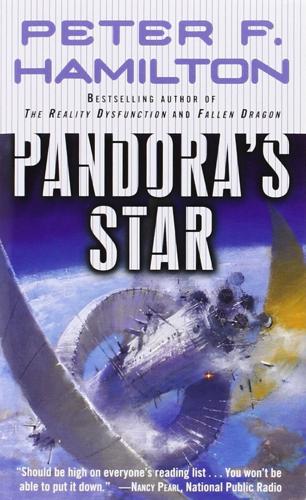
Pandora's Star
by
Peter F. Hamilton
Published 2 Mar 2004
They were simple squat cones that the Ulysses had sent down two days earlier, loaded with tons of equipment, including a small prefab ground base. Getting them unloaded and the projected exploration campus up and running was the principal task awaiting the crew of the Eagle II. “Groundscan confirms area one viability,” Wilson said. He was almost disappointed at the radar picture. When Neil Armstrong and Buzz Aldrin were landing on the moon, they had to hurriedly take manual control of their Lunar Module and fly it to safety when the designated landing site turned out to be strewn with boulders. This time, eighty-one years later, satellite imagery and orbital radar mapping had eliminated such uncertainty from the flight profile.
…
He always swore he’d dump them into deep secure storage at every rejuvenation, clear them out of his brain along with all the other irrelevant clutter so there would be space for the new life. Each time, he never did. A weakness for nostalgia. He’d so nearly been a contender for true greatness rather than the corporate chieftain he’d actually become. Even today a lot of people knew who Neil Armstrong was. But Wilson Kime? Not a chance. “Well dust off your copy, man, because it’s about to become fashionable again.” Wilson stared at the edge of the open wormhole, the dark shimmer of nothingness that very few people actually got to see firsthand. “Is this a serious offer?” he asked quietly.
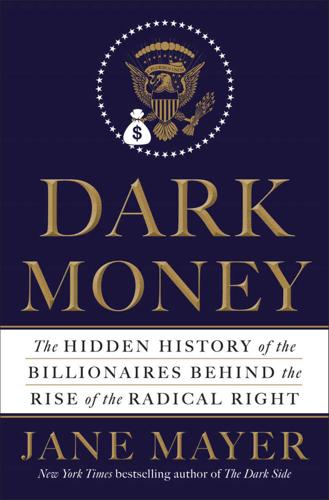
Dark Money: The Hidden History of the Billionaires Behind the Rise of the Radical Right
by
Jane Mayer
Published 19 Jan 2016
In 1954, the company went public and merged with the Mathieson Chemical Corporation, doubling in size, diversifying its operations, and eventually changing its name to the Olin Corporation. The conglomeration, whose revenues were half a billion dollars a year by then, made everything from pharmaceuticals in its Squibb division to cigarette paper. It manufactured Winchester rifles and, later, the hydrazine rocket fuel that powered Neil Armstrong’s 1969 lunar landing. Meanwhile, Olin’s national profile was growing. By 1957, Fortune ranked John M. Olin and his brother Spencer, who had taken over the company from their father, as the thirty-first wealthiest Americans, with fortunes estimated at over $75 million. Honors proliferated along with Olin’s great wealth.
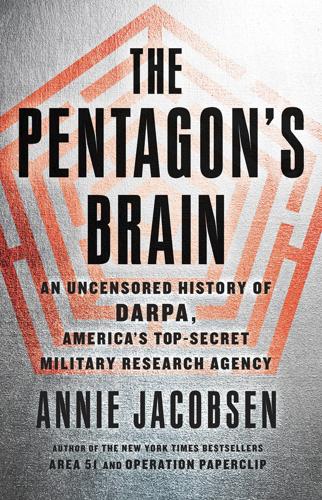
The Pentagon's Brain: An Uncensored History of DARPA, America's Top-Secret Military Research Agency
by
Annie Jacobsen
Published 14 Sep 2015
One of the first sets of experiments involving lasers, mirrors, and space took place in 1969 and has been largely lost to the history books. The experiment began on July 21 of that year, said Townes, when, for the first time in history, two men walked on the moon. While on the lunar surface, “astronauts Neil Armstrong and Edwin [Buzz] Aldrin set up an array of small reflectors on the moon and faced them toward the Earth.” Back here on earth—which is 240,000 miles from the moon—two teams of astrophysicists, one team working at the University of California’s Lick Observatory, on Mount Hamilton, and the other at the University of Texas’s McDonald Observatory, on Mount Locke, took careful notes regarding where, exactly, the astronauts were when they set down the mirrors.
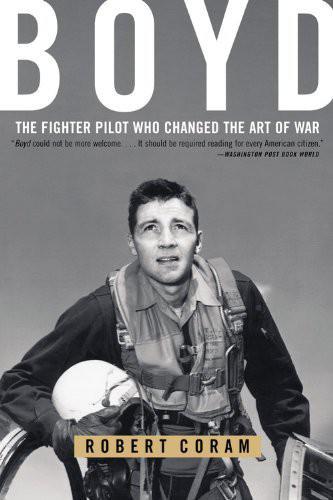
Boyd: The Fighter Pilot Who Changed the Art of War
by
Robert Coram
Published 21 Nov 2002
He knew that in its inexorable way the Air Force would add more gold-plating, more missions, to the F-15 until one day it would be barely recognizable. On October 24, 1968, he submitted papers saying he would retire the next year. Chapter Sixteen Ride of the Valkyries THE year 1969 was a curious and bewildering one for America. It was the year Neil Armstrong walked on the moon, the year of Woodstock, and the year Sesame Street made its debut on public television. It was the year of war rallies and the year the My Lai story broke—the year a humiliated Lyndon Johnson left Washington to be replaced by an exultant Richard Nixon, who announced the beginning of troop withdrawal from Vietnam.

A Generation of Sociopaths: How the Baby Boomers Betrayed America
by
Bruce Cannon Gibney
Published 7 Mar 2017
With the promises of the ’39 Fair (centerpiece: Futurama) already fulfilled, Americans of 1964 saw no reason why they would not soon enjoy the dreams of their own Fair (featuring: Futurama II). By the 2010s, Americans were supposed to be living richly, attended by a robotic staff, with the occasional vacation to the Lunar Hilton. Obviously, none of that came to be: There is no Pan Am flight to the moon; there isn’t even a Pan Am anymore. What actually happened was that in 1969 Neil Armstrong stepped onto the moon and in 1972 Gene Cernan stepped off, and that was it. The future slipped away and the timing was not coincidental. By the late 1960s, the earnest and industrious old regime was fading. The future would soon be reposed in the hands of a group altogether less competent and well-meaning.
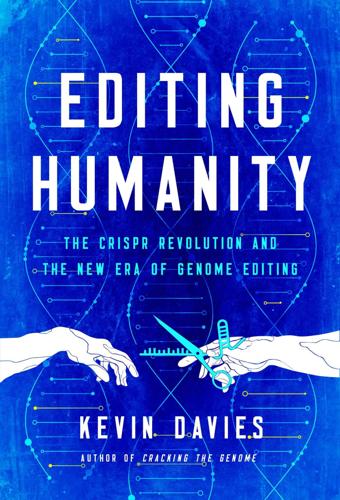
Editing Humanity: The CRISPR Revolution and the New Era of Genome Editing
by
Kevin Davies
Published 5 Oct 2020
The suits had to be able to withstand pressure and extreme temperature swings. They also had to be flexible, an attribute that Playtex handsomely demonstrated by filming one of its technicians playing American football for hours while sporting a spacesuit. Thus, it came to pass that four Playtex seamstresses sewed the twenty-one-layer A7L spacesuit that Neil Armstrong fashioned on the lunar runway.1 From the Sea of Tranquility on the moon to the salterns of Santa Pola off the Mediterranean. I’m visiting Alicante, a popular tourist resort on the Costa Blanca in southeast Spain. It is an unlikely candidate for one of the more extreme habitats of life on planet earth.
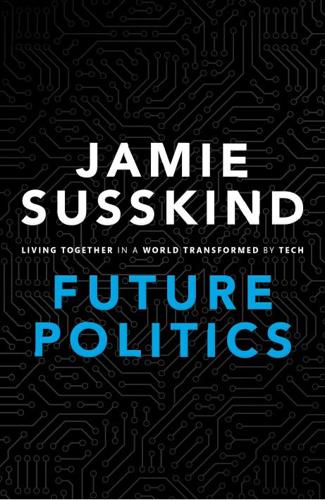
Future Politics: Living Together in a World Transformed by Tech
by
Jamie Susskind
Published 3 Sep 2018
Just thirty years ago, it would have needed 5,000 desktop computers to rival the processing power of today’s iPad Air.43 Sixty years ago, 2010’s iPad2 (now hopelessly out of date) would have cost $100 trillion, roughly twenty-five times the United States federal budget for 2015.44 The average smartphone has more processing power than the Apollo Guidance Computer that sent Neil Armstrong to the moon.45 Our brains are not wired to think exponentially. We tend to think of change as happening in a straight upward line, not noticing when the underlying rate of change is itself accelerating. To put it in perspective, try (in Pedro Domingos’ example) to imagine a single E.Coli bacterium of miniscule proportions.
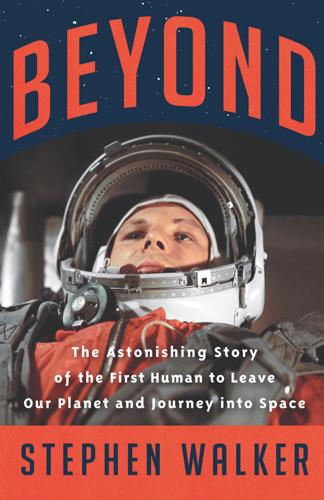
Beyond: The Astonishing Story of the First Human to Leave Our Planet and Journey Into Space
by
Stephen Walker
Published 12 Apr 2021
But as the years went by the trees grew thicker and taller; and by the time she died in March 2020, her husband would only have been visible from her window in the depths of winter. Still famous and revered as he was in his homeland, by then Gagarin’s name had largely faded from the rest of the world’s consciousness. Other names, and especially Neil Armstrong’s, eclipsed his, epitomising the great adventure of human space travel with those footprints on the moon. But if that adventure appeared in the decades afterwards to lose its grip on the imagination it has since come back, and come back with force. Today there are more, and ever greater, adventures planned than ever before: back to the moon, to Mars, and one day perhaps to the other planets.

Generations: The Real Differences Between Gen Z, Millennials, Gen X, Boomers, and Silents—and What They Mean for America's Future
by
Jean M. Twenge
Published 25 Apr 2023
Kennedy (1925) Cesar Chavez (1927) Walter Mondale (1928) Martin Luther King Jr. (1929) Sandra Day O’Connor (1930) Ted Kennedy (1932) Diane Feinstein (1933) Ruth Bader Ginsburg (1933) Gloria Steinem (1934) Ralph Nader (1934) Geraldine Ferraro (1935) John McCain (1936) Antonin Scalia (1936) Madeleine Albright (1937) Colin Powell (1937) Nancy Pelosi (1940) Dick Cheney (1941) Jesse Jackson (1941) Bernie Sanders (1941) Joe Biden (1942) Mitch McConnell (1942) John Kerry (1943) Angela Davis (1944) Athletes and Sports Figures Arnold Palmer (1929) Mickey Mantle (1931) Roberto Clemente (1934) Wilt Chamberlain (1936) Jack Nicklaus (1940) Muhammad Ali (1942) Arthur Ashe (1943) Joe Namath (1943) Billie Jean King (1943) Journalists, Authors, and People in the News Harper Lee (1926) Hugh Hefner (1926) Erma Bombeck (1927) Maya Angelou (1928) Barbara Walters (1929) Neil Armstrong (1930) Tom Wolfe (1930) Toni Morrison (1931) Dan Rather (1931) Susan Sontag (1933) Philip Roth (1933) Joan Didion (1934) Charles Kuralt (1934) Carl Sagan (1934) Phil Donahue (1935) Ken Kesey (1935) Judy Blume (1938) Peter Jennings (1938) Joyce Carol Oates (1938) Jerry Rubin (1938) Jacqueline Kennedy Onassis (1939) Tom Brokaw (1940) Anthony Fauci (1940) Sue Grafton (1940) Ted Koppel (1940) Ed Bradley (1941) Nora Ephron (1941) Martha Stewart (1941) Michael Crichton (1942) Erica Jong (1942) John Irving (1942) Bob Woodward (1943) Carl Bernstein (1944) The Equality Revolution Trait: Pioneers in Civil Rights Imagine hopping into a time machine and stopping at two different times, just seven years apart: 1963 and 1970.

Nexus: A Brief History of Information Networks From the Stone Age to AI
by
Yuval Noah Harari
Published 9 Sep 2024
Information is something that creates new realities by connecting different points into a network. This still includes the view of information as representation. Sometimes, a truthful representation of reality can connect humans, as when 600 million people sat glued to their television sets in July 1969, watching Neil Armstrong and Buzz Aldrin walking on the moon.14 The images on the screens accurately represented what was happening 384,000 kilometers away, and seeing them gave rise to feelings of awe, pride, and human brotherliness that helped connect people. However, such fraternal feelings can be produced in other ways, too.

Nixonland: The Rise of a President and the Fracturing of America
by
Rick Perlstein
Published 1 Jan 2008
Some lothario from the NYPD was going to try to entrap one of Mary Jo Kopechne’s companions from the fatal evening into revealing what she knew about the cover-up. “We want to be sure Kennedy doesn’t get away with this,” Ehrlichman instructed. No one would ever really find what “this” was. The doubt would hang ambiguously in the air forever, shadowing the entirety of Edward M. Kennedy’s career. On July 20, at 4:17 eastern standard time, Neil Armstrong landed the lunar module Eagle on the surface of the moon: “One small step for [a] man—one giant leap for mankind.” Here was a brief, shimmering moment of patriotic transcendence, a respite from the sordid doings on Earth. But the doings on Earth were so sordid, the conquest of space didn’t distract too many for too long.
…
But jingoism was a difficult sell these days. At First Division Headquarters, the camera panned over the crowd, the traditional mocking banners (WELCOME, BING CROSBY!)—but many weren’t wearing shirts; most had shaggy hair; some wore mustaches and necklaces with garish medallions. Tom Sawyer–faced Neil Armstrong, the first man to step on the moon, an icon of the new square chic—he brought his fraternity pin along on Apollo 11—did a question-and-answer session. The NBC cameras trained upon a blond nurse in hippie sunglasses asking him in all earnestness “when you’re going to take the first woman to the moon.”

Thank You for Being Late: An Optimist's Guide to Thriving in the Age of Accelerations
by
Thomas L. Friedman
Published 22 Nov 2016
That response should go down in history with the first words ever uttered on a telephone, on March 10, 1876, when Alexander Graham Bell, the inventor, called his assistant—whose name, ironically, was Thomas Watson—and said, “Mr. Watson—come here—I want to see you.” In my mind, “What is ‘shoe’?” is also up there with the first words uttered by Neil Armstrong when he set his foot down on the moon, on July 20, 1969: “That’s one small step for man, one giant leap for mankind.” “What is ‘shoe’?” was one small step for Watson and one giant leap for computers and mankind together. Because Watson, of course, was not a human but a computer, designed and built by IBM.

Adaptive Markets: Financial Evolution at the Speed of Thought
by
Andrew W. Lo
Published 3 Apr 2017
Perhaps the cause was a leak in a liquid oxygen line, or an explosive bolt misfiring, or a flame burning through one of the solid booster rockets … Rumors abounded for weeks before NASA released more data.3 Six days after the disaster, President Reagan signed Executive Order 12546 establishing the Rogers Commission, an impressive fourteen-member panel of experts that included Neil Armstrong, the first person to walk on the moon; Nobel Prize-winning physicist Richard Feynman; Sally Ride, the first American woman in space; and legendary test pilot Chuck Yeager. On June 6, 1986, a little over five months after the disaster, after conducting scores of interviews, analyzing all the telemetry data from the shuttle’s flight, sifting through the physical wreckage recovered from the Atlantic Ocean, and holding several public hearings, the Rogers Commission concluded that the explosion was caused by the failure of the Shuttle’s now-infamous O-rings on the right solid fuel booster rocket.4 The O-rings were large rubber seals around the joints of the booster rocket, rather like the gasket on a faucet.

How to Hide an Empire: A History of the Greater United States
by
Daniel Immerwahr
Published 19 Feb 2019
There is a reason that “rocket science” became the proverbial way to refer to the hardest intellectual challenges out there. Yet it wasn’t all jets and orbits. The moon landing was a triumph of chemical engineering, too. NASA needed light materials that could endure extreme temperatures and micrometeoroid strikes, yet keep pressurized air in. This meant synthetics. The moon suits that Neil Armstrong and Buzz Aldrin wore had twenty-one layers, and twenty either contained or were made entirely of materials manufactured by DuPont. There were familiar inventions—nylon, neoprene, Mylar, and Teflon—and new ones such as Kapton and Nomex. What was harder to find up in space was anything that might once have grown in a colony.
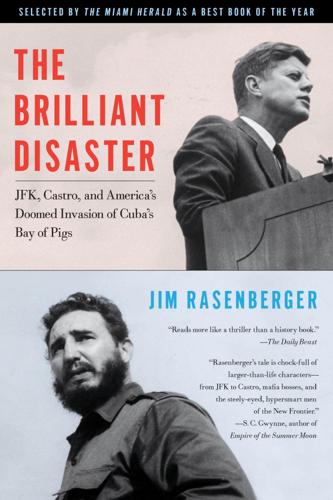
The Brilliant Disaster: JFK, Castro, and America's Doomed Invasion of Cuba's Bay of Pigs
by
Jim Rasenberger
Published 4 Apr 2011
“Dramatic accomplishments in space are being increasingly identified as a major indicator of world leadership.” On May 25, in a special message to Congress regarding “urgent national needs,” President Kennedy announced the goal of putting an American astronaut on the moon by the end of the decade. Kennedy’s ambition paid off. Eight years later, Neil Armstrong would be the first human to set foot on the moon. Kennedy’s descent into Vietnam would arrive at a far less happy conclusion. Indeed, Vietnam would make the Bay of Pigs look like a canapé beside its gluttonous feast of disaster. On April 27, the Presidential Task Force on Vietnam—the one Kennedy had ordered into existence on April 20—came back with a twenty-three-page top-secret draft of a “Program of Action to Prevent Communist Domination of South Vietnam.”

The mote in God's eye
by
Larry Niven; Jerry Pournelle
Published 30 Jan 2011
JACOB BUCKMAN, Astrophysicist FATHER DAVID HARDY, Chaplain-Captain, Imperial Space Navy Reserve ADMIRAL LAVRENTI KUTUZOV, Vice Admiral Commanding His Majesty's Expedition Beyond Murcheson's Eye SENATOR BENJAMIN BRIGHT FOWLER, Majority Leader and Member of Privy Council DR. SIGMUND HOROWITZ, Professor of Xenobiology, University of New Scotland HERBERT COLVIN, onetime Captain of Space Forces of the Republic of Union, and onetime master of Union cruiser Defiant CHRONOLOGY 1969 Neil Armstrong sets foot on Earth's Moon. 1990 Series of treaties between United States and Soviet Union creates the CoDominium. 2008 First successful interstellar drive tested. Alderson Drive perfected. 2020 First interstellar colonies. Beginning of Great Exodus. 2040 CoDominium Bureau of Relocation begins mass out-system shipment of convicts.
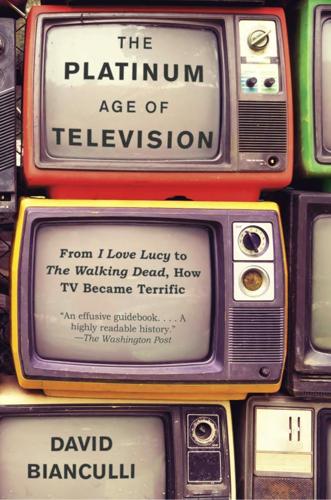
The Platinum Age of Television: From I Love Lucy to the Walking Dead, How TV Became Terrific
by
David Bianculli
Published 15 Nov 2016
And while the space race was front and center in the mid-1960s, so was race itself, and Star Trek premiered just two years after the passage of the Civil Rights Act of 1964. Roddenberry’s initial series gets credit for going where no futuristic TV series had gone before and for slipping allegorical pleas for racial harmony and planetary peace into prime time. The seventy-ninth and final episode of Star Trek was televised in June 1969—one month before Neil Armstrong landed on the moon. But the series thrived in off-network syndication and actually increased its pop-culture status and momentum. The space shuttle Constitution was renamed the Enterprise in 1976, and in 1979 the first movie spin-off, Star Trek: The Motion Picture, hit theaters. Star Trek remains a popular entertainment franchise fifty years after its TV debut, though the original NBC series lasted only three years and never was a hit.

NeuroTribes: The Legacy of Autism and the Future of Neurodiversity
by
Steve Silberman
Published 24 Aug 2015
Far from the cheering crowds, Kanner would continue to refer to autism as a “childhood psychosis” in his work, and in 1973 he reprinted a collection of his essays describing his patients’ parents as “cold, humorless perfectionists” lacking “genuine warmth,” with no editorial caveats. But Kanner had already decisively lost his grip on the autism narrative. On her way back to Albany, Sullivan sat down in front of a TV set at the airport to watch Neil Armstrong take his first awkward steps out of the lunar excursion module onto the dusty surface of a new world. She and her fellow NSAC parents had crossed a threshold into a new world too: one in which they would help make the long-silent voices of their sons and daughters heard. — THE NEXT NSAC CONGRESS, held in San Francisco in 1970, made good on that promise by inviting a young autistic man to the podium to address an audience of parents and professionals for the first time in history.

The Innovators: How a Group of Inventors, Hackers, Geniuses and Geeks Created the Digital Revolution
by
Walter Isaacson
Published 6 Oct 2014
So it was designed from scratch to use the most powerful microchips that could be made. The seventy-five Apollo Guidance Computers that were built ended up containing five thousand microchips apiece, all identical, and Fairchild landed the contract to supply them. The program beat Kennedy’s deadline by just a few months; in July 1969 Neil Armstrong set foot on the moon. By that time the Apollo program had bought more than a million microchips. These massive and predictable sources of demand from the government caused the price of each microchip to fall rapidly. The first prototype chip for the Apollo Guidance Computer cost $1,000. By the time they were being put into regular production, each cost $20.
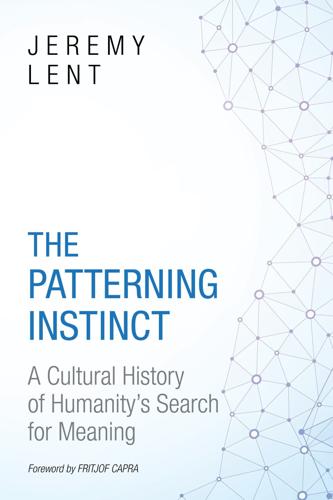
The Patterning Instinct: A Cultural History of Humanity's Search for Meaning
by
Jeremy Lent
Published 22 May 2017
Humanity's dominance of Earth means that we cannot escape responsibility for managing the planet…for the foreseeable future.”35 It may seem like a relatively small step from this considered awareness of humanity's impact on the natural world to an acceptance of geoengineering in principle. Indeed, argues at least one advocate, it would be an “evasion of our ethical duties” to ignore the fact that our human activities have already affected the world to such an extent that we need to engineer a solution.36 A small step in logic, perhaps, but, to paraphrase Neil Armstrong when he walked on the moon, geoengineering would be a giant step for humankind. James Lovelock, the visionary engineer who first conceived of the earth as the self-sustaining organism he called Gaia, offers a somber prophecy for humanity. Humankind, he writes, “would wake up one day to find that [we] had the permanent lifelong job of planetary maintenance engineer.

From Beirut to Jerusalem
by
Thomas L. Friedman
Published 1 Jan 1989
Itzik Yaacoby, who heads the East Jerusalem Development Corporation, which is responsible for maintaining the Old City of Jerusalem and all its Christian, Muslim, and Jewish holy places, noticed that most Christian tourists he showed around the city felt as though they were walking through the pages of the Bible. The notion that Israel was just another twentieth-century nation-state created by the United Nations after World War II was totally alien to them. When American astronaut Neil Armstrong, a devout Christian, visited Israel after his trip to the moon, he was taken on a tour of the Old City of Jerusalem by Israeli archaeologist Meir Ben-Dov. When they got to the Hulda Gate, which is at the top of the stairs leading to the Temple Mount, Armstrong asked Ben-Dov whether Jesus had stepped anywhere around there.
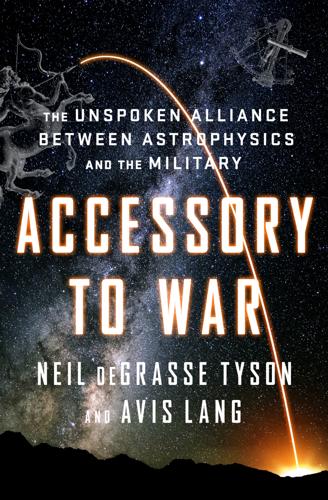
Accessory to War: The Unspoken Alliance Between Astrophysics and the Military
by
Neil Degrasse Tyson
and
Avis Lang
Published 10 Sep 2018
Also unlike China and India, their military expenditures, according to the Stockholm International Peace Research Institute, constitute less than 3 percent of government spending, compared with China’s 6 percent and India’s 9 percent—not to mention the even greater military expenditures by the two traditional space superpowers, the United States (more than 9 percent of government spending, but 36 percent of global military spending) and Russia (15 percent of government spending).55 For decades before the Canadian Space Agency was established in 1990, Canada had partnered with other countries on space initiatives, especially with the United States. Among the many early partnerships were an Ontario-built storable communications antenna used during the pioneering US manned flights in 1961–62 and Québec-built landing legs for Apollo 11’s lunar module, the vessel that safely landed Neil Armstrong and Buzz Aldrin on the Moon in 1969. Canada was the third country to build its own satellite and the first country to have its own communications satellite in geostationary orbit. More recently, Canada has made high-profile robotics contributions to the US space shuttle and the International Space Station.
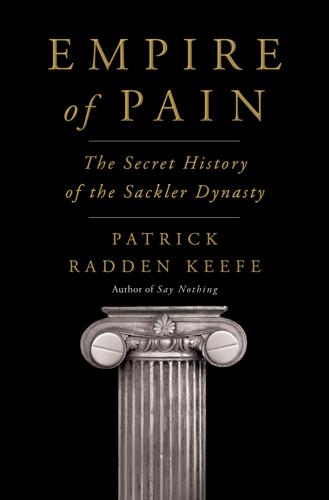
Empire of Pain: The Secret History of the Sackler Dynasty
by
Patrick Radden Keefe
Published 12 Apr 2021
The “whole family,” Kapit realized, “had a thing about Asian art and Asian beauty.” * * * On July 24, 1969, the Apollo 11 space capsule hurtled through earth’s atmosphere at twenty-five thousand miles per hour, shedding flaming shards of protective casing so that it resembled a giant fireball. Inside were the astronauts Neil Armstrong, Buzz Aldrin, and Michael Collins, who had just made history by walking on the moon. In the sky over the South Pacific, three parachutes deployed, and the capsule glided into a smooth splashdown, rolling and bobbing in the rough waves like a cork. Soon, a helicopter approached, and several navy frogmen dropped into the ocean to stabilize the capsule with an inflatable collar.
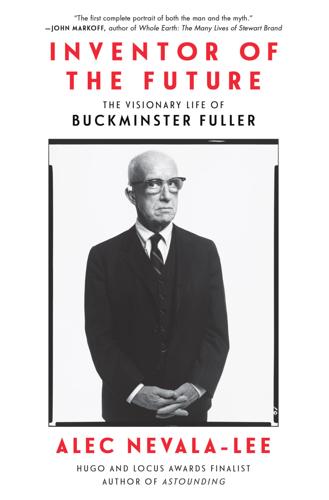
Inventor of the Future: The Visionary Life of Buckminster Fuller
by
Alec Nevala-Lee
Published 1 Aug 2022
The students were absorbed in their work, and they felt confirmed in its importance on July 20, when they viewed coverage of the moon landing on a giant screen in Central Park, which featured an audio message for the crowd from Fuller himself. Fuller was understandably thrilled by the Apollo space program—the ultimate example of how humans became more inventive “as the degree of gravitational hazard is visually evidenced.” Later, at a reception with writers Kurt Vonnegut and Arthur C. Clarke, he watched Neil Armstrong and Buzz Aldrin become the first men to set foot on the moon’s surface. His example was an equally powerful inspiration to the students at the Studio School. They included the artist Mira Lehr; John Storyk, a recording studio designer who worked with Jimi Hendrix; and Stephen E. Selkowitz, a Harvard physics major who was encouraged by the experience to enter environmental design.

I Want My MTV: The Uncensored Story of the Music Video Revolution
by
Craig Marks
and
Rob Tannenbaum
Published 19 Sep 2011
Why don’t we take that footage, and put the MTV logo in the American flag?” TOM FRESTON: Pittman never gave us any money to do anything. This was a fucking shoestring operation if there ever was. BOB PITTMAN: We hit upon the NASA moon-landing footage, because it was public domain—it was cheap—and it seemed big. Our original concept was to have Neil Armstrong saying, “One small step for man, one giant leap for mankind.” We sent a letter to his lawyer: “If we don’t hear back from you, we’re going to run this.” And like a day before we launched, we got a letter back saying, “No, you do not have our permission.” Shit. FRED SEIBERT: At first I wanted Joe Jackson to do all the music for our promos.

The Evolutionary Void
by
Peter F. Hamilton
Published 18 Aug 2010
The Delivery Man was amused that the first rocket flight to another world remained so revered, whereas all the Anomine had accomplished afterward as a starfaring race was delivered in a few short sentences. But it did allow him to respond appropriately with the story of the Cold War space program and Neil Armstrong, which kept Tyzak quiet for a good forty minutes. That first night they made camp on the edge of a small forest of tall trees with broad weeping branches. The Delivery Man took a hand-size cylindrical condenser unit from his belt, which whirred quietly as it propelled air along its short length.

Ayn Rand and the World She Made
by
Anne C. Heller
Published 27 Oct 2009
In July 1969, Alan Greenspan, then a member of President Nixon’s Gates Commission on the draft, arranged for her to be present for NASA’s launch of Apollo 11 at Cape Kennedy, Florida, an event that for the first time placed men on the surface of the moon. She was thrilled by the sight of the powerful rocket lifting into the sky. “What we had seen, in naked essentials, was the concentrated abstraction of man’s greatness,” she wrote in The Objectivist. When the spacecraft landed on the Moon, she praised Neil Armstrong’s broadcast comment, which might have come from Atlas Shrugged: “That’s one small step for a man, one giant leap for mankind.” Although she didn’t approve of government funding for scientific projects except in military matters, she restated what she had written about the atomic bomb: “It is not coercion, not the physical force or threat of a gun that created Apollo 11.

Roller-Coaster: Europe, 1950-2017
by
Ian Kershaw
Published 29 Aug 2018
By 1970 Sweden had the greatest number of television sets proportionate to its population (312 sets for every 1,000 inhabitants) of any country in Europe, but Hungary (171 sets) was not far behind Ireland, Italy and Austria. On 20 July 1969 the landing on the moon by the Apollo 11 spacecraft and the first steps taken by mankind on its surface by Neil Armstrong and Buzz Aldrin were watched across the globe as extraordinary pictures were relayed by satellite to the largest television audience ever recorded up to that time – an estimated 530 million viewers worldwide. Televised sport was by this time becoming an integral part of popular culture. Through satellite links the Olympic Games could now be watched across the world.

MONEY Master the Game: 7 Simple Steps to Financial Freedom
by
Tony Robbins
Published 18 Nov 2014
You’re trying to meet some emotional and psychological desires. Underneath those emotions are the needs that must be fulfilled for your life to be extraordinary. When the astronauts went to walk on the moon, imagine the journey they went on. From being a small child dreaming of someday flying to outer space, to the day when Buzz Aldrin and Neil Armstrong stood on the moon, looking back at that extraordinary view of planet Earth that we’ve all seen only in pictures. They were the first human beings to do it in the entire history of the species—how incredibly significant. What happened next? Ticker-tape parades. Shaking the president’s hand. They were heroes.
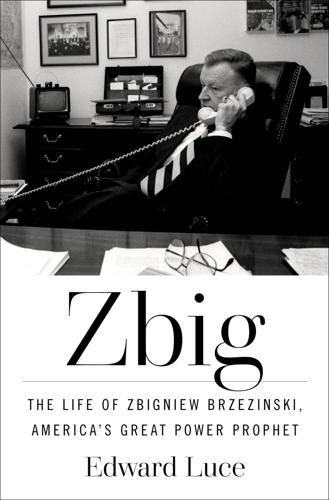
Zbig: The Life of Zbigniew Brzezinski, America's Great Power Prophet
by
Edward Luce
Published 13 May 2025
In Brzezinski’s words, “The deans were all scared shitless.”25 Several minutes later, two police cars pulled up. Brzezinski was about to revise his low opinion of Columbia’s administrators when he learned that the emergency call had been placed by an animal protection society. Its employees were worried about the pig’s safety, not Professor Zbig’s. On July 20, Neil Armstrong became the first human to set foot on the moon. After watching the historic moment on TV from Maine, the transfixed Brzezinskis renamed their vacation retreat Tranquility Base after the lunar camp. That it was the United States, not the USSR, that had pulled off the moon landing was a confirmation of Brzezinski’s optimistic worldview.
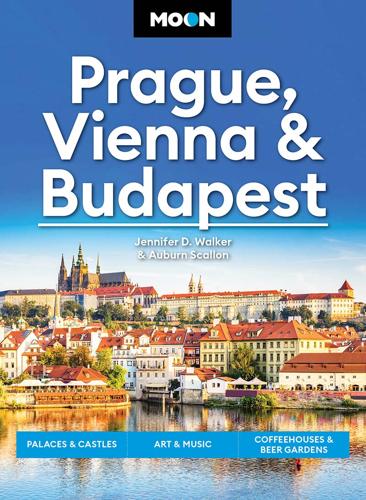
Moon Prague, Vienna & Budapest: Palaces & Castles, Art & Music, Coffeehouses & Beer Gardens
by
Jennifer D Walker
,
Auburn Scallon
and
Moon Travel Guides
Published 15 Oct 2024
This father of Bohemian music is best known for Má vlast (My Homeland), which opens the Prague Spring Music Festival each year and includes odes to the Vltava River and Vyšehrad, where he is also buried. • Smetana’s younger contemporary Antonín Dvořák (1841-1904) gained international, or you could even say intergalactic, recognition for his classical compositions infused with Czech folk influences. Dvořák’s “New World Symphony” accompanied American astronauts Neil Armstrong and Buzz Aldrin on their trip to the moon in 1969, though his remains are here on Earth at Vyšehrad. • Even if you don’t immediately recognize his name, the swirling designs of art nouveau painter Alfons Mucha (1860-1939) will likely look familiar. While the artistic style is often connected to France, this hero of the movement is undeniably Czech.
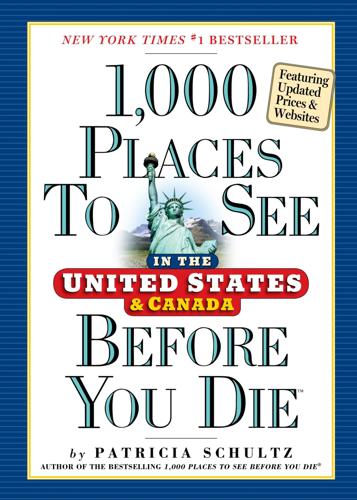
1,000 Places to See in the United States and Canada Before You Die, Updated Ed.
by
Patricia Schultz
Published 13 May 2007
—JFK, Sept. 12, 1962 KENNEDY SPACE CENTER Cape Canaveral, Florida Set amid 150,000 acres of marshland and mangrove swamp, Kennedy Space Center has been the headquarters of American rocketry and space exploration since the launch of the unmanned Bumper 8 research rocket in July 1950. Eleven years later Alan Shepard lifted off from the Cape’s Pad 5 to become the first American in space, and in July 1969 Apollo 11 blasted off from Pad 39A, carrying Neil Armstrong, Buzz Aldrin, and Michael Collins to the moon. Since the end of the Apollo missions in 1972, the base has been home to America’s space shuttle and International Space Station programs, and to unmanned missions that have traveled to Mars and beyond. Visitors can tour portions of the facility, beginning at the Kennedy Space Center Visitor Complex, which houses a collection of NASA rockets, the actual Mercury Mission Control Room from the 1960s, two IMAX theaters showing films about space exploration, and numerous exhibits detailing 50 years of NASA projects.
…
ELKINS RANCH COWBOY BREAKFAST: Tel 800-658-2613 or 806-488-2100; www.theelkinsranch.com. Cost: $23. PANHANDLE-PLAINS MUSEUM: Canyon. Tel 806-651-2244; www.panhandleplains.org. BEST TIMES: Mar–June and Sept–Nov for the nicest weather. Mission Control and the Blast Off Theater SPACE CENTER HOUSTON Clear Lake, Texas On July 20, 1969, when Neil Armstrong touched down on the moon and uttered some of the most famous words of the 20th century—“Houston, Tranquility Base here. The Eagle has landed”—the people on the receiving end of that call were right here at NASA’s Johnson Space Center. Named for the late Texan president Lyndon B. Johnson and opened in 1961, the center is the site of Mission Control, the iconic earthbound tether of all U.S. manned missions.

The Strangest Man: The Hidden Life of Paul Dirac, Mystic of the Atom
by
Graham Farmelo
Published 24 Aug 2009
Several of the scenes had possessed him, especially the Star Gate sequence and the emergence of the grizzled astronaut into the eighteenth-century bedroom: ‘I would not be able to sit alone through that scene,’ he later told Colleraine.50 Manci was not interested in Dirac’s observations on ‘that weird film’; her idea of a good movie was the romantic epic Dr Zhivago, not one whose most memorable character was a talking computer. 2001 stoked Dirac’s interest in the Apollo space programme. During the evening of 20 July 1969, he sat open-mouthed in front of the television in the Kursunoglus’ front room when Neil Armstrong prepared to set foot on the moon. He sat up all night watching the coverage. Kubrick’s images were sharper and his soundtrack was clearer, but the grainy television pictures and the muffled sound of that first moon landing had a compelling reality of their own. And for Dirac, the former engineer, reality mattered most: the first moon-walk was the culmination of aeronautic technology, whose beginnings he had seen as a boy and which now enabled human beings to set foot on a landscape a quarter of a million miles away.
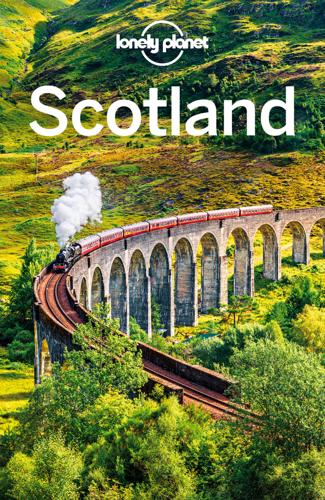
Lonely Planet Scotland
by
Lonely Planet
Most people come for fishing and walking in the surrounding moors and woodlands; check out the Langholm Walks website (www.langholmwalks.co.uk) for details. Hugh MacDiarmid – poet, communist and seminal figure in 20th-century Scottish nationalism – was born Christopher Grieve here in Langholm in 1892. Thomas Telford was also born nearby. Another famous visitor was Neil Armstrong, who accepted an honorary Freemanship of Langholm, which is the traditional seat of Clan Armstrong. Buses between Edinburgh and Carlisle pass through Langholm. There are frequent services to Lockerbie, where you can change to other routes. Eskdale HotelHOTEL££ (%01387-380357; www.eskdalehotel.co.uk; Market Pl; s/d £48/85; pW) Pleasantly genteel, this main-street Victorian hotel has light, modernised rooms and bathrooms as well as a decent restaurant and a small bar.

Coastal California
by
Lonely Planet
EXPOSITION PARK A couple miles south of Downtown, family-friendly Exposition Park (off) started as an agricultural fairground in 1872 and now contains three fine museums, a lovely Rose Garden (admission free; 9am-sunset mid-Mar–Dec) and the 1923 Los Angeles Memorial Coliseum, best known as venue for the 1932 and 1984 Summer Olympic Games. The University of Southern California (USC; www.usc.edu) is just north of the museums. Famous alumni include George Lucas, John Wayne and Neil Armstrong. DASH minibus ‘F’ (Click here) and the Metro Expo light rail line serve South Park from Downtown. Parking lots start at around $6. Natural History Museum of Los Angeles County SCIENCE MUSEUM (www.nhm.org; 900 Exposition Blvd; adult/child/senior & student $12/5/8; 9:30am-5pm; ) Take a spin around the world and back in time at this popular museum, inside a baronial building corner (it stood in for Columbia University in the first Spider-Man movie).

Africa: A Biography of the Continent
by
John Reader
Published 5 Nov 1998
The continent held them off for centuries more; not until they had filched the means of curbing malaria – quinine – from South America could they settle close to the heart of Africa with a reasonable expectation of remaining alive and in good health. Even then, the facts of their African origin remained unsuspected. In 1969 Neil Armstrong took that short step which put a man on the moon, and finally, sixteen years later, geneticists revealed that mankind's giant leap actually had been launched – not from Cape Canaveral – but from tropical Africa, many thousands of years ago. Ten thousand generations had come and gone, and until the migrants' search brought their descendants full circle, back to Africa, the inhabitants of the continent had experienced no identifiable need for anything that lay beyond its boundaries.
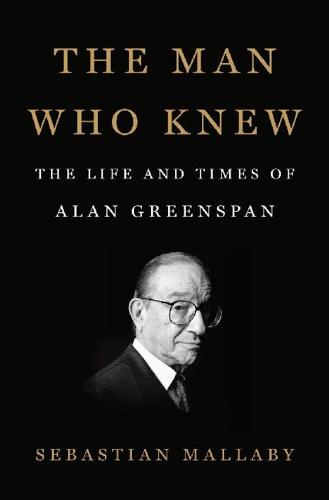
The Man Who Knew: The Life and Times of Alan Greenspan
by
Sebastian Mallaby
Published 10 Oct 2016
And whereas his father had been forced to renege on his “no new taxes” pledge, the younger Bush was in a stronger position. Thanks to the deficit-reduction packages enacted under Bush senior and Clinton—and thanks, just as powerfully, to a tax windfall from the Greenspan boom—the federal government was running budget surpluses for the first time since Neil Armstrong walked on the moon. The Congressional Budget Office had recently projected that the federal government would take in nearly $4.6 trillion more than it would spend over the next decade.9 Bush’s proposed tax cut seemed eminently affordable. The budget office’s projection, however, was just that: a projection.

Eastern USA
by
Lonely Planet
WASHINGTON, DC No stranger to the world’s gaze, Washington, DC, is a proud and complicated city (politics makes it so) of grand boulevards, iconic monuments and idyllic vistas over the Potomac. Its museums and historic sites bear tribute to both the beauty and the horror of years past, and on even a short visit you can delve into the world of Americana – from moving artworks by Native American painters to memorable moonwalks from the likes of both Neil Armstrong and Michael Jackson. Of course, DC is much more than mere museum piece or marble backdrop to nightly news reports. There are tree-lined neighborhoods and a vibrant theater scene, with ethnically diverse restaurants and a dynamism percolating just beneath the surface. The city has a growing number of markets, historic cobblestoned streets and a rich African American heritage that makes up nearly 50% of the population.
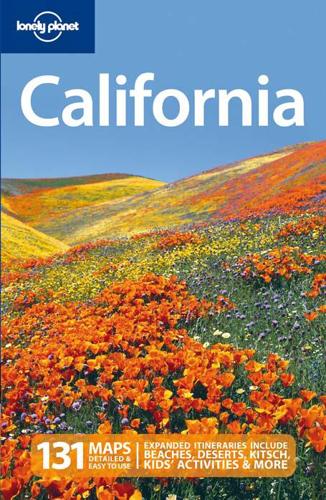
California
by
Sara Benson
Published 15 Oct 2010
EXPOSITION PARK A couple of miles to the south of Downtown, the family-friendly Exposition Park started as an agricultural fairground in 1872 and now contains three fine museums, a lovely Rose Garden (admission free; 9am-sunset mid-Mar–Dec) and the 1923 Los Angeles Memorial Coliseum. The latter hosted the 1932 and 1984 Summer Olympic Games, the 1959 baseball World Series and two Super Bowls. The University of Southern California (USC; Map; 213-740-5371, tours 213-740-6605; www.usc.edu; 3535 S Figueroa St), which counts George Lucas, John Wayne and Neil Armstrong among its alumni, is just north of Exposition Park. The DASH bus ‘F’ Click here from Downtown serves Exposition Park. There’s parking ($6) on Figueroa at 39th St. Natural History Museum of Los Angeles County Take a spin around the world and back in time at this popular museum (NHM; off Map; 213-763-3466; www.nhm.org; 900 Exposition Blvd; adult/child/student/senior $9/2/6.50/6.50; 9:30am-5pm Mon-Fri, 10am-5pm Sat & Sun; ), inside a baronial building in Exposition Park’s northwest corner (if it looks familiar, it stood in for Columbia University in the first Spider-Man movie).

Under the Loving Care of the Fatherly Leader: North Korea and the Kim Dynasty
by
Bradley K. Martin
Published 14 Oct 2004
Along with correspondents for the Journal and a few other news organizations, I received my invitation to appear at the North Korean embassy in Beijing for a visa and thence to travel to Pyongyang. Not the first American journalist to reach North Korea, but close enough that I felt a little bit like Neil Armstrong arriving on the moon, I stepped off a Soviet-built plane at Pyongyang’s airport. Peering intently at everything I saw, I was determined to miss nothing. Pyongyang re-warded me by providing much that was unfamiliar, starting with the crowds of schoolchildren who stood in ranks along the road from the airport to cheer the latest arrivals for the table tennis tournament.
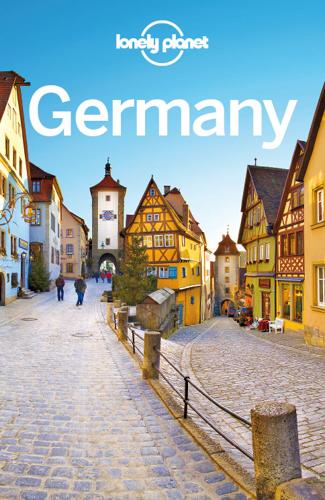
Germany Travel Guide
by
Lonely Planet
If it’s not being used for a wedding or a meeting, also sneak into the adjacent Small Assembly Room for a peek at the ceiling fresco, which again features allegories of the three rivers. Passauer Glasmuseum MUSEUM (350 71; www.glasmuseum.de; Hotel Wilder Mann, Am Rathausplatz; adult/concession €5/4; 10am-5pm) Opened by Neil Armstrong, of all people, Passau’s warren-like glass museum is filled with some 30,000 priceless pieces of glass and crystal from the baroque, classical, art-nouveau and art-deco periods. Much of what you see hails from the glassworks of Bohemia, but there are also works by Tiffany and famous Viennese producers.
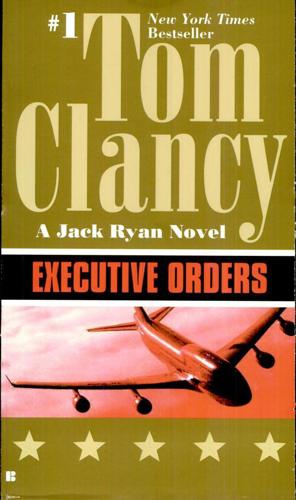
Executive Orders
by
Tom Clancy
Published 2 Jan 1996
This wasn't what was rolling in front of the camera lens, and he realized that, though Plumber had printed pages in front of him, he was giving a memorized speech. Imagine that. Just like the old days, apparently. I would like to say that I am proud to be in this profession. And I was, once. I was on the microphone when Neil Armstrong stepped down on the moon, and on sadder occasions, like the funeral of Jack Kennedy. But to be a professional does not mean merely being there. It means that you have to profess something, to believe in something, to stand for something. Some weeks ago, we interviewed President Ryan twice in one day.

The Rough Guide to Mexico
by
Rough Guides
Published 15 Jan 2022
More like a small village, its individual villas offer private swimming pools, jacuzzis and delivered breakfasts, and they also rent out pink jeeps to any occupant. You access the water via the La Concha beach club below, and every room has a sea-view terrace with mesmerizing vistas. The hotel was immortalized in a Ringo Starr song, and famous guests have left hand prints in pink plaster (Sophia Loren, Neil Armstrong, JFK, Denzel Washington and Morgan Freeman among them). M$$$$ Gran Plaza Costera 123; 744 440 5555. Certainly the most memorable building on the beach, shaped like a curved pyramid, with clean, modern rooms (if a little gaudy – gold features prominently) with cable TV and an attractive pool.
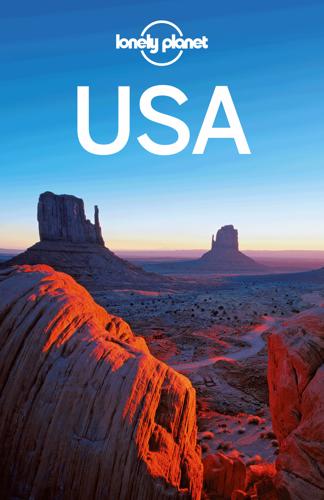
USA Travel Guide
by
Lonely, Planet
WASHINGTON, DC No stranger to the world’s gaze, Washington, DC, is a proud and complicated city (politics makes it so) of grand boulevards, iconic monuments and idyllic vistas over the Potomac. Its museums and historic sites bear tribute to both the beauty and the horror of years past, and on even a short visit you can delve into the world of Americana – from moving artworks by Native American painters to memorable moonwalks from the likes of both Neil Armstrong and Michael Jackson. Of course, DC is much more than mere museum piece or marble backdrop to nightly news reports. There are tree-lined neighborhoods and a vibrant theater scene, with ethnically diverse restaurants and a dynamism percolating just beneath the surface. The city has a growing number of markets, historic cobblestoned streets and a rich African American heritage that makes up nearly 50% of the population.